The rattling of trams woke us up this morning from, for my part, the worst night sleep I have had in a long time. Not even the Valium helped. I think the bed was broken – it had no support under it and it was sloping to the side somewhat, every time I rolled over, (which was often because I felt like I was constantly going to fall out of bed) something creaked and clunked under the bed frame. So yay, welcome to another busy day and this time with about four hours sleep. 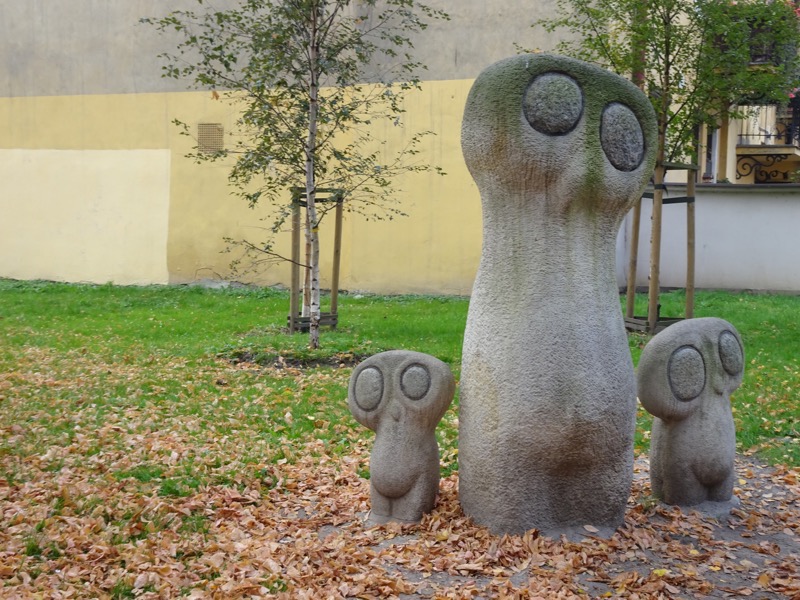 Walking up to Wawel Castle…
Walking up to Wawel Castle…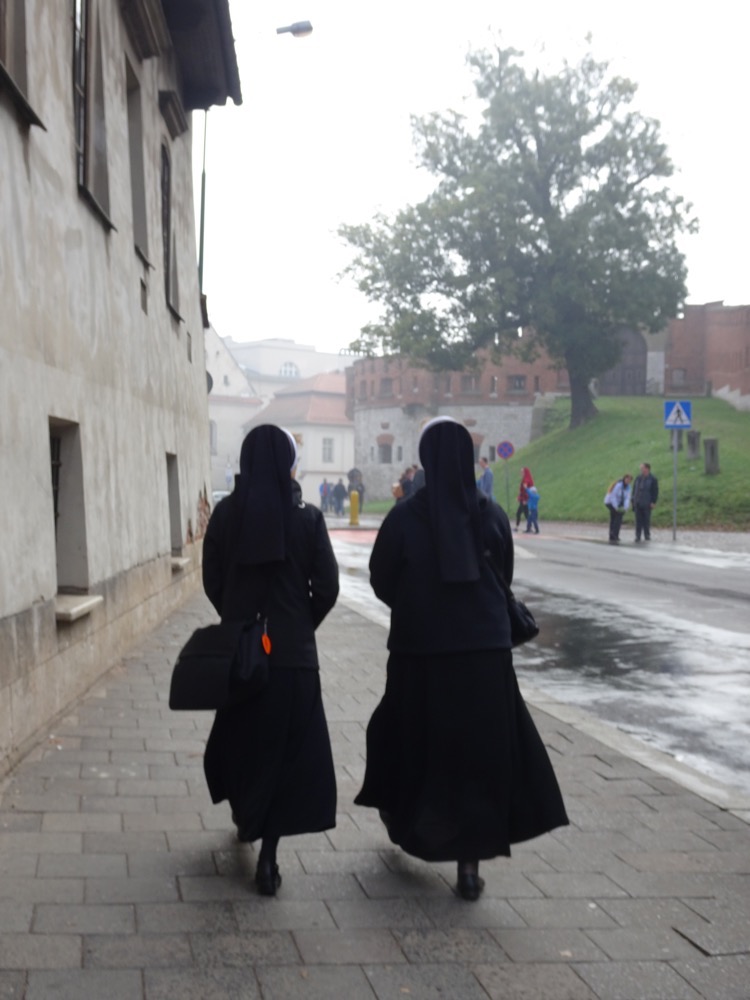 We were planning on visiting the historic district of Wawel Castle just for the morning. It is located pretty much in the centre of Kraków and was built by King Kazimierz III, also known as Casimir III the Great, in the 13th and 14th centuries. The castle is actually a large complex made up of a number of Medieval/Renaissance/ Baroque buildings around a very large Italian style courtyard making it one of the largest in Poland. Most of the Wawel Royal Castle and the Wawel Hill area are considered the most culturally/historically significant areas in the entire country. Sometimes I feel like I am travelling the world ticking off UNESCO World Heritage Sites, as this is another one of them
We were planning on visiting the historic district of Wawel Castle just for the morning. It is located pretty much in the centre of Kraków and was built by King Kazimierz III, also known as Casimir III the Great, in the 13th and 14th centuries. The castle is actually a large complex made up of a number of Medieval/Renaissance/ Baroque buildings around a very large Italian style courtyard making it one of the largest in Poland. Most of the Wawel Royal Castle and the Wawel Hill area are considered the most culturally/historically significant areas in the entire country. Sometimes I feel like I am travelling the world ticking off UNESCO World Heritage Sites, as this is another one of them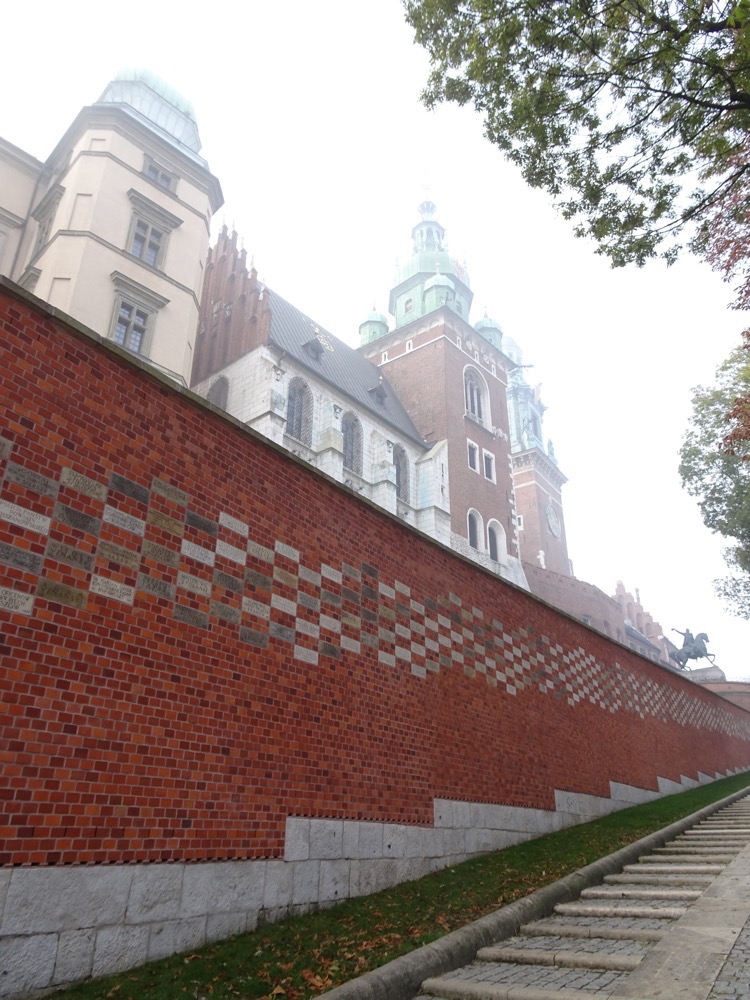
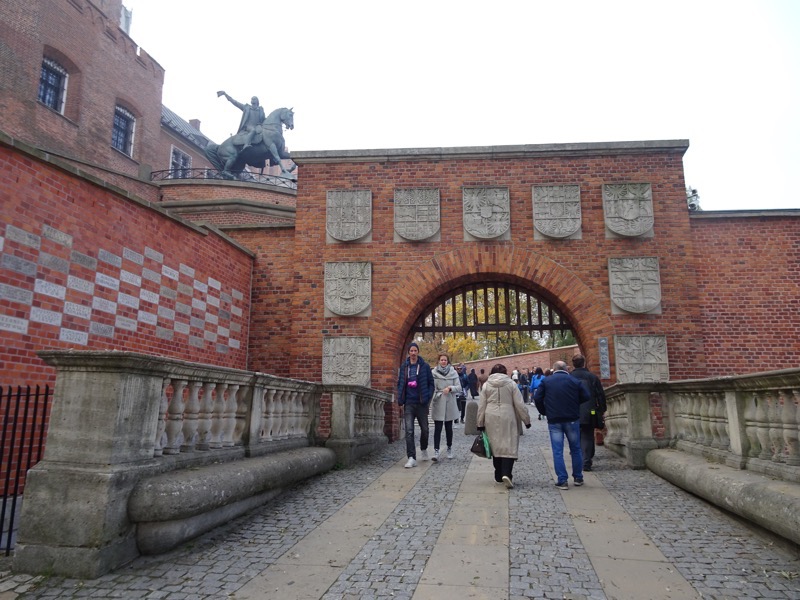 Buying tickets proved quite the experience. There was a (thankfully, short) queue of about 20 people waiting to buy tickets to enter the caste. We couldn’t figure out why the line was moving so slowly. Turns out you don’t just buy a ticket to the Castle and wander on it following a structured flow through the museum, but rather you choose which sections of the castle you wish to see and then are told when you can go see them.
Buying tickets proved quite the experience. There was a (thankfully, short) queue of about 20 people waiting to buy tickets to enter the caste. We couldn’t figure out why the line was moving so slowly. Turns out you don’t just buy a ticket to the Castle and wander on it following a structured flow through the museum, but rather you choose which sections of the castle you wish to see and then are told when you can go see them.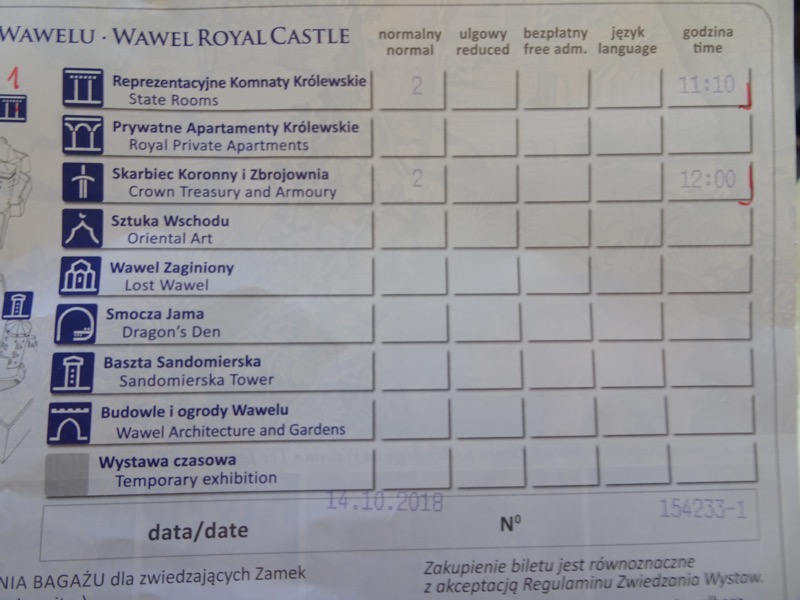 So we arrive around 10:00, go wait in line for a rather complex ticketing system and find ourselves unable to enter anywhere for another 20 minutes. :/ I understand the concept is probably about crowd control during the busiest of summer periods but none of this information is easily available online (it is once you know to look for it), and you can’t buy tickets in advance, and of course, there is only one person serving all the somewhat confused visitors. We were told if we wanted to visit the Royal Apartments we wouldn’t get an entry time until 14:00, and once inside we saw plenty of people loitering around the courtyard waiting for their appointed times to go in.
So we arrive around 10:00, go wait in line for a rather complex ticketing system and find ourselves unable to enter anywhere for another 20 minutes. :/ I understand the concept is probably about crowd control during the busiest of summer periods but none of this information is easily available online (it is once you know to look for it), and you can’t buy tickets in advance, and of course, there is only one person serving all the somewhat confused visitors. We were told if we wanted to visit the Royal Apartments we wouldn’t get an entry time until 14:00, and once inside we saw plenty of people loitering around the courtyard waiting for their appointed times to go in.
The city was very foggy when we left the hotel this morning, but it was going to be a lovely day. Side entrance to the cathedral part of the complex.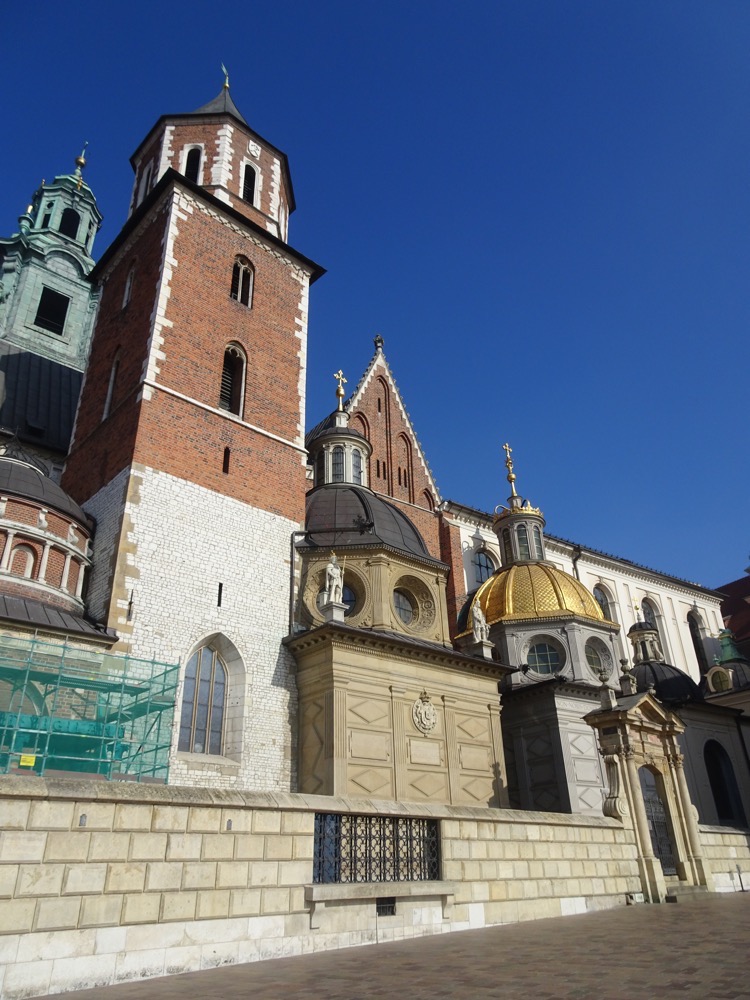 Forecourt:
Forecourt: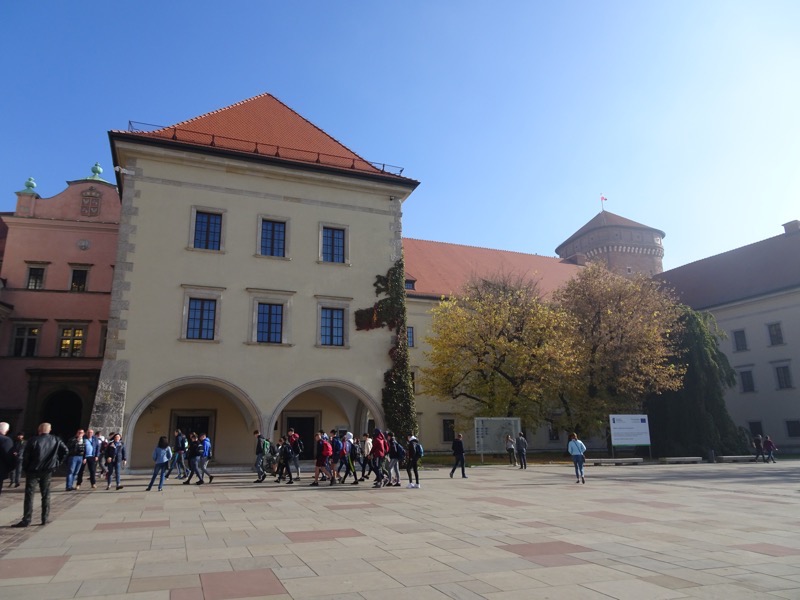
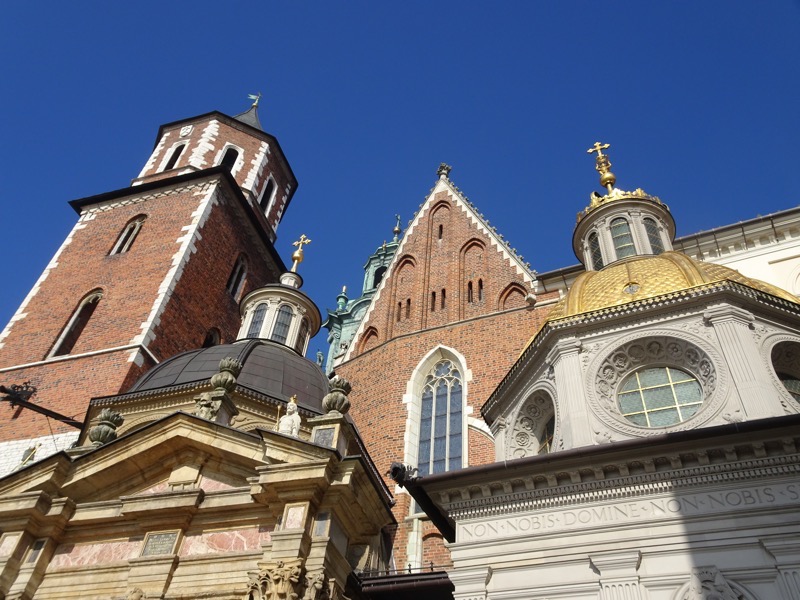
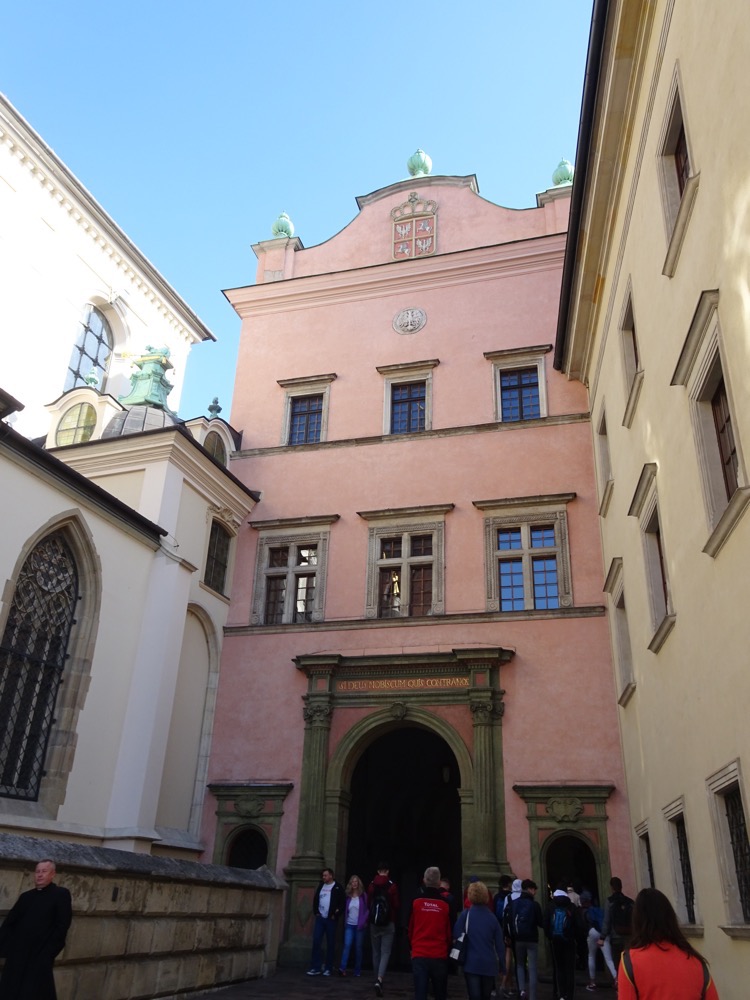 Main courtyard.
Main courtyard.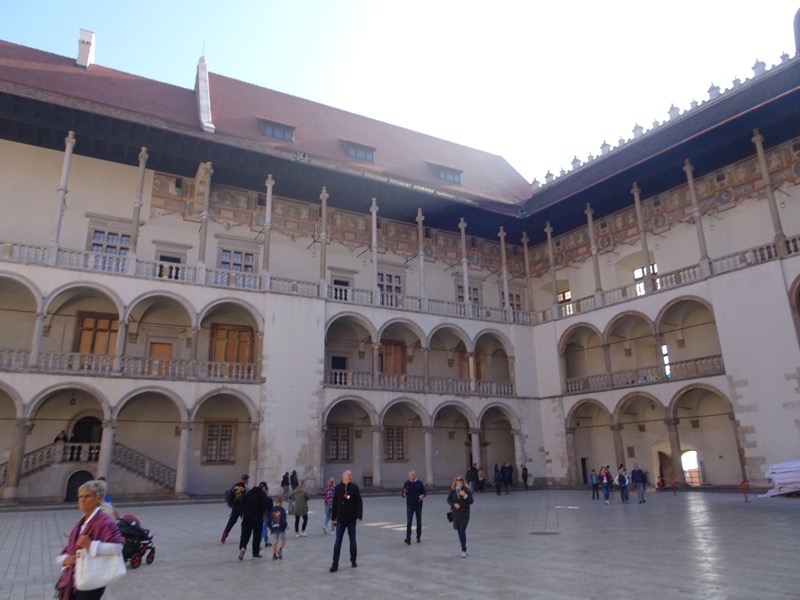 And that, my friends, is pretty much the limit of the photos I was able to take at Wawel Castle. The castle contains an important collection of Renaissance art, some Ghirlandaio, Cranach, at least two Rubens, a Tintoretto, Tiepolo, and a few Dossi among others; lots of famous pieces, but NO PHOTOGRAPHY was allowed:
And that, my friends, is pretty much the limit of the photos I was able to take at Wawel Castle. The castle contains an important collection of Renaissance art, some Ghirlandaio, Cranach, at least two Rubens, a Tintoretto, Tiepolo, and a few Dossi among others; lots of famous pieces, but NO PHOTOGRAPHY was allowed:
https://en.wikipedia.org/wiki/File:Domenico_Ghirlandaio_008.jpg
https://en.wikipedia.org/wiki/File:Cranach_the_Elder_Christ_blessing_the_children.jpg
https://en.wikipedia.org/wiki/File:Rubens_W%C5%82adys%C5%82aw_Vasa_(detail).jpg
https://en.wikipedia.org/wiki/File:Giovanni_Battista_Tiepolo_097.jpg
The castle also contains a famous collection of Gobelin tapestries known as the Sigismund II Augustus tapestry collection, a collection of Crown jewels and coronation pieces, a very impressive armoury and many period household furnishings – chairs, trunks, tables, light fittings, fireplaces, and smaller domestic items like jugs, plates, bowls etc. It is a huge loss not to be able to photograph these things, as they never appear in catalogues or books.
The armoury, in particular, was extremely frustrating, there was an enormous collection of polearms, swords, crossbows, early firearms and daggers – and NONE of it was well marked. Honestly, they had a wall of about 30 daggers with a tag that read something like “Daggers from Austria, Germany, Italy, France, and Spain; 14th to 16th century”. I could take a stab at the provenance of some of them, but it was really annoying to know each of these artefacts have a unique origin and history, but the primary goal of the curators of the museum seems not to be one of education, but of traffic flow. Most of the rooms we accessed were of a similarly poorly labelled – you enter an enormous chamber, surrounded by tapestries, paintings, obviously period furniture items, there is one small A3 plaque with six people huddled around it trying to figure out which item is which using the shoddily numbered diagram, with very little information. Honestly, whoever set this place up cares not a whit for educating those that visit.
We walked out after having seen some of the most wonderful objects, with no photos to share with other medieval enthusiasts back home, and zero information on what we had been looking at. We hightailed it to the two bookshops and found only the most basic of touristy guidebooks – you know the one, it is basically the Wikipedia page of the castle in print form. So disappointed. I asked one of the staff members if there was a book on the armoury, and he didn’t even know if there was one. We eventually found a very weighty academic 300-page tome solely addressing polearms, but not just ones in the Wawel Castle collection, when I was really interested in the crossbows and early firearms.
If you are going to prohibit guests from taking photographs, then for crying out loud sell decent guidebooks to the various exhibits. It’s just such a let down to travel halfway around the world to see these magnificent things and not to be able to recall them or share them. Particularly from a research and education standpoint. This must be one of the most frustrating and disappointing museum visits I have ever encountered.
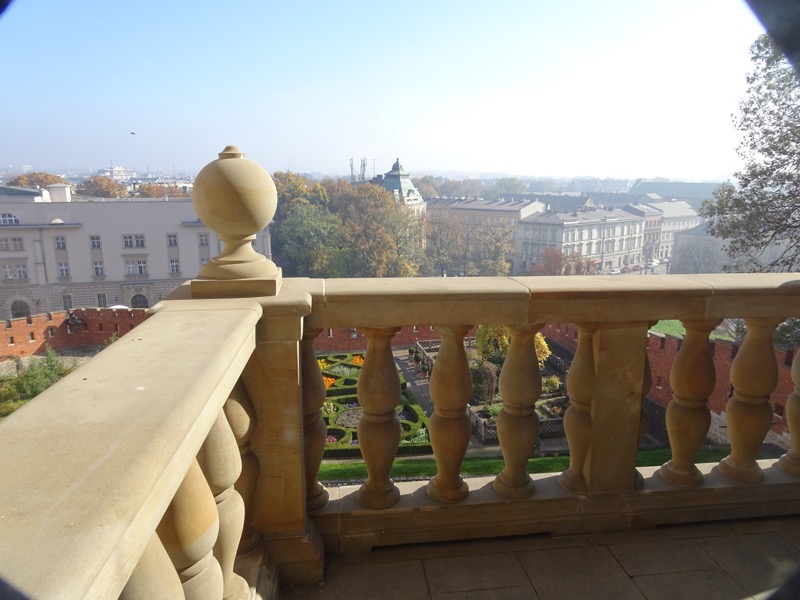
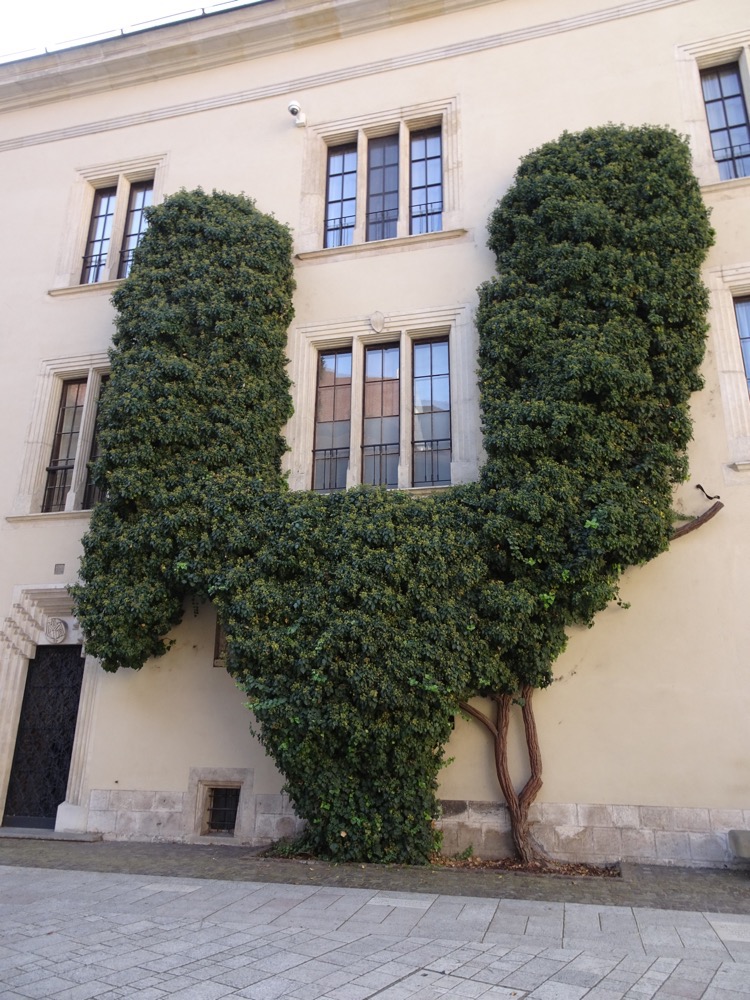 On more than one occasion we saw small groups entering rooms that we weren’t allowed to enter because they were on an organised tour. Museums should not be like this. It is a cluster. My advice for anyone planning on attending Wawel Castle is to set aside the entire day for it so you can visit on their scheduled time slots. I would probably also use a private tour operator to access the ‘non-public’ spaces… and I’d probably anticipate a disappointing visit anyway due to photography not being allowed, and the lack of decent books to make up for the whole photography is not allowed thing. :/
On more than one occasion we saw small groups entering rooms that we weren’t allowed to enter because they were on an organised tour. Museums should not be like this. It is a cluster. My advice for anyone planning on attending Wawel Castle is to set aside the entire day for it so you can visit on their scheduled time slots. I would probably also use a private tour operator to access the ‘non-public’ spaces… and I’d probably anticipate a disappointing visit anyway due to photography not being allowed, and the lack of decent books to make up for the whole photography is not allowed thing. :/ 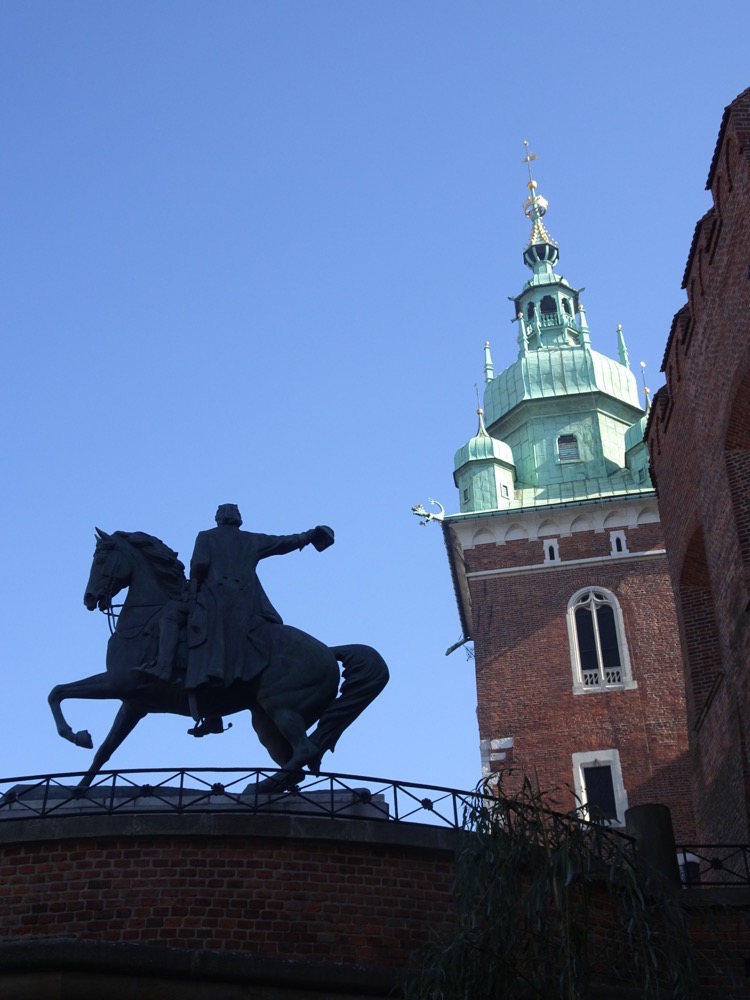
After grabbing a quick and dirty roadside bite to eat we head out to the countryside about an hour south of Krakow to Oświęcim to visit the Auschwitz-Birkenau museums and memorials. I have based a lot of the following text on information boards that were dotted around the complex. I have found it hard to find my own words to express what happened here, and how it makes you feel as you progress through this very important historical site. So I have paraphrased a lot of the more thoughtful words that have been placed before us for our introspection as we visited.
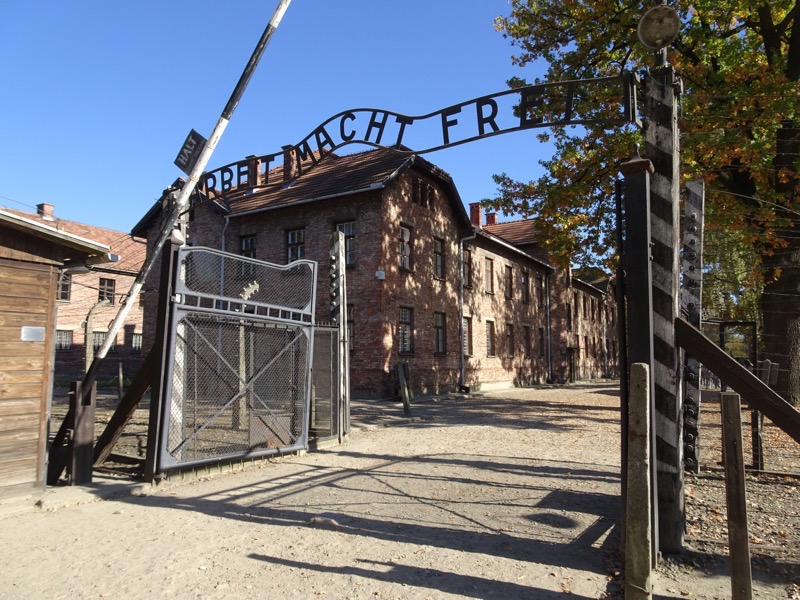 Throughout the world, Auschwitz has become a symbol of terror, genocide and the Holocaust. The German forces occupying Poland during the Second World War established a concentration camp on the outskirts of the town of Oświęcim in 1940. The Germans called the town, ‘Auschwitz’ and that is the name by which the camp was known. Over the next years it was expanded into three main camps: Auschwitz I, Auschwitz II- Birkenau and Auschwitz III- Planowitz with more than 40 subcamps in the area. The first people to be brought to Auschwitz as prisoners and murdered here were Poles. They were soon followed by Soviet prisoners of war, Gypsies, and deportees from other nationalities. Beginning in 1942, however, Auschwitz became the setting of the most massive murder campaign in history, when the Nazis put into operation their plan to destroy the entire Jewish population of Europe. The great majority of Jews who were deported to Auschwitz – men, women and children – were sent immediately upon arrival to deal in the gas chambers of Birkenau.
Throughout the world, Auschwitz has become a symbol of terror, genocide and the Holocaust. The German forces occupying Poland during the Second World War established a concentration camp on the outskirts of the town of Oświęcim in 1940. The Germans called the town, ‘Auschwitz’ and that is the name by which the camp was known. Over the next years it was expanded into three main camps: Auschwitz I, Auschwitz II- Birkenau and Auschwitz III- Planowitz with more than 40 subcamps in the area. The first people to be brought to Auschwitz as prisoners and murdered here were Poles. They were soon followed by Soviet prisoners of war, Gypsies, and deportees from other nationalities. Beginning in 1942, however, Auschwitz became the setting of the most massive murder campaign in history, when the Nazis put into operation their plan to destroy the entire Jewish population of Europe. The great majority of Jews who were deported to Auschwitz – men, women and children – were sent immediately upon arrival to deal in the gas chambers of Birkenau.
When the SS realized that the end of the war was near, they attempted to remove the evidence of the atrocities committed here. They dismantled the gas chambers, crematoria, and other buildings, burned documents and evacuation all those prisoners who could walk to the interior of Germany. Those who were not evacuated were liberated by the Red Army on January 27, 1945.
On July 2, 1974, the Polish Parliament established the State Museum of Oświęcim – Brezinka on the sites of the former camps at Auschwitz I and Auschwitz II-Birkenau. In 1979, these camps were formally recognized by UNESCO by their inclusion on the World Heritage List.
In the years 1940 – 1941 German occupants expelled the Polish inhabitants of the following villages: Brzezinka, Harmęże, Pławy, Bór, Rajsko, Klucnikowice, Babice Broszkowice and from Zasole District of Oświęcim. They took this land and founded the death camp Auschwitz-Birkenau. The camp’s economic and industrial base is on the site of the demolished or taken buildings from those villages.
Auschwitz was the largest Nazi German Concentration Camp and Death Camp. In the years 1940 – 1945, the Nazis deported at least 1,300,000 people to Auschwitz:
1,100,000 Jews
140,000 – 150,000 Poles
23,000 Roma (Gypsies)
15,000 Soviet Prisoners of War
25,000 Prisoners from other ethnic groups.
1,100,000 of these people died in Auschwitz, approximately 90% of the victims were Jews. The SS murdered the majority of these people in the gas chambers.
Model of the massive L-Shaped gas chamber and crematoria complex located at Auschwitz-Birkenau. 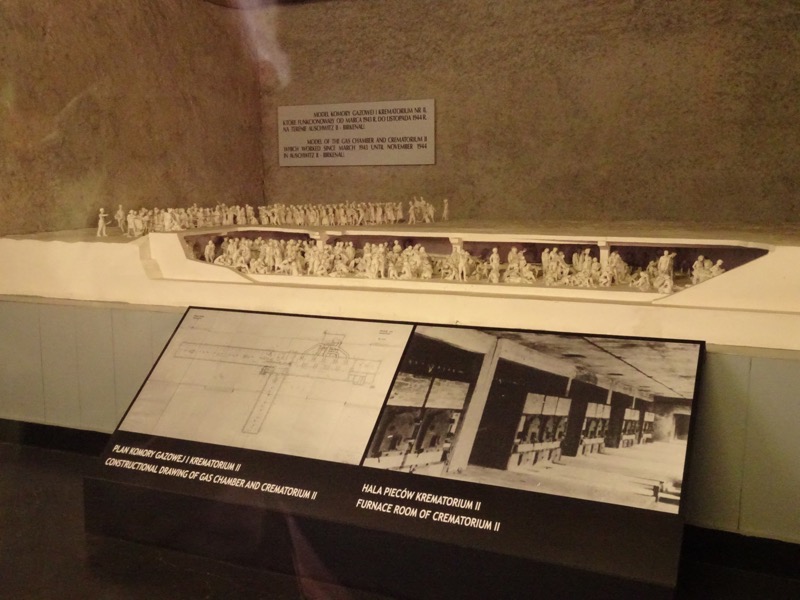
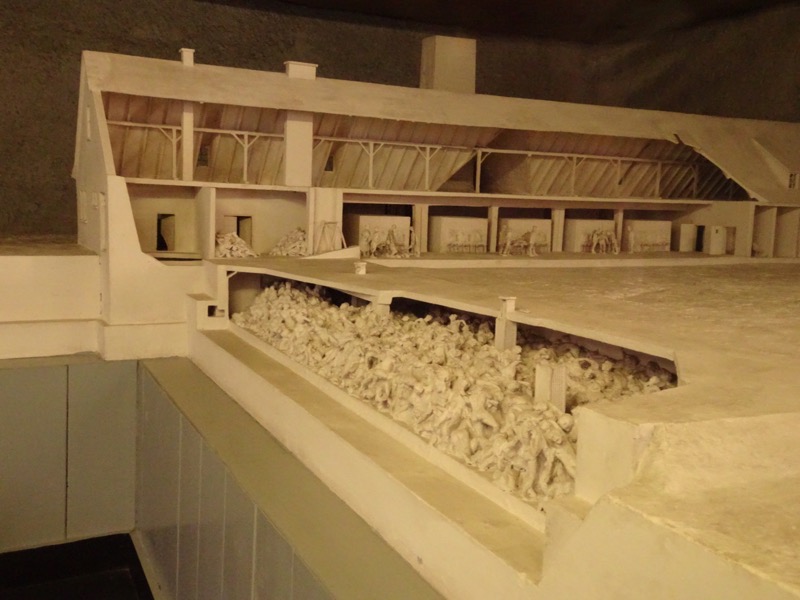
Transports of Jews deported to Auschwitz would arrive at a specially constructed railway ramp at Birkenau. The ramp was obscured from the camp so that prisoners could not see arriving deportees and deportees could not see the state of the prisoners. At this unloading ramp, women and children were immediately separated from men. Subsequently, SS doctors would carry out an extremely perfunctory ‘selection’. Those who were considered fit for work were directed to the work camp to be registered as prisoners. This amounted to approximately 25 per cent of the arrivals. The remainder were led directly to the gas chambers. In order to avoid panic spreading, people condemned to death were assured that they were going to take a shower after their train travel for disinfection purposes. Sometimes entire trainloads of deportees were directed straight to the gas chambers without any selections taking place.
A map covering part of the Auschwitz-Birkenau concentration camp and death camp. The yellow area is a series of warehouses known as ‘Kanada’ in Auschwitz II-Birkenau, the red area is the ‘Kanada’ of the Auschwitz KL camp (I will come back to them later). 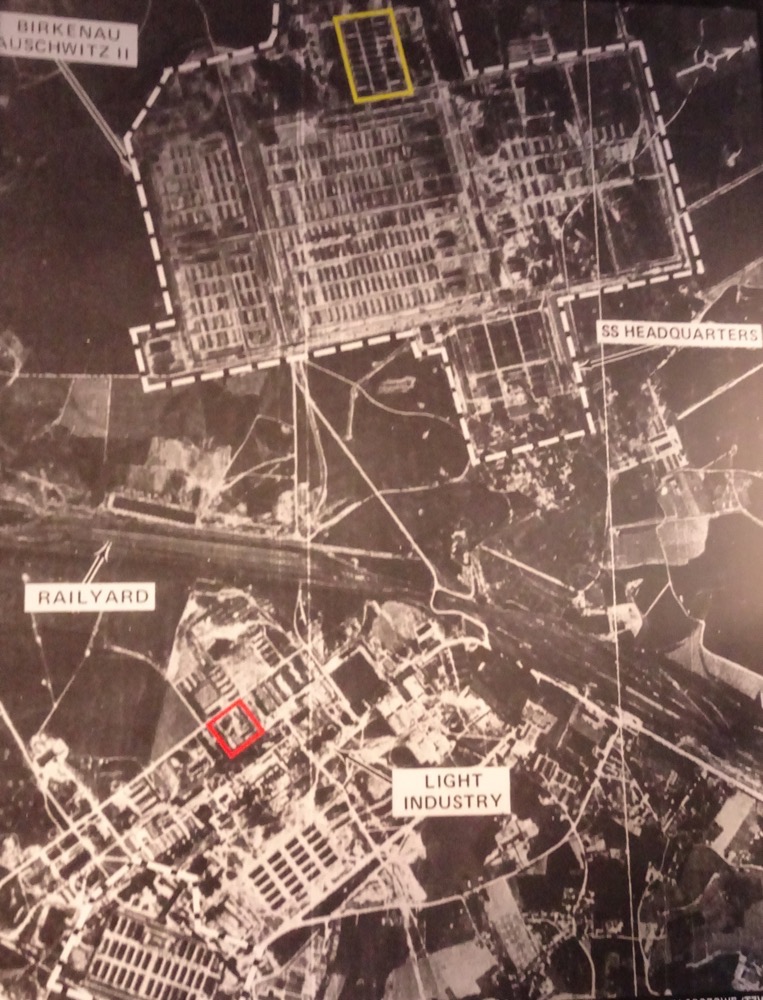 After the selection process on the railway platform, those who were going to be murdered in the gas chambers were assured that they were going to take a shower. They were divided from their belongings and made to strip naked. Fake showerheads were fixed to the ceiling of the gas chambers.
After the selection process on the railway platform, those who were going to be murdered in the gas chambers were assured that they were going to take a shower. They were divided from their belongings and made to strip naked. Fake showerheads were fixed to the ceiling of the gas chambers.
Beaten and intimidated by SS dogs, 2,000 victims were crammed into the underground chamber, an area of approximately 210M2. The chamber door would be locked and Zyklon B was poured into the chamber from holes in the ceiling. The bodies were then stripped of gold teeth and jewellery as war spoils for the Reich, their hair was cut off and sold to PKR textiles manufacturer to be made into bedding, clothing etc, then the bodies were burnt in the crematorium. All the victims’ personal documents were destroyed, effectively erasing all evidence of that person having been executed there.
In Barracks numbered 5 – 10, contains items relating to the atrocities committed on this site by the Nazis. They have been assembled to demonstrate to visitors the extent of the mass extermination of the predominantly Jewish prisoners at the camp.
Zyklon B canisters found on site after liberation: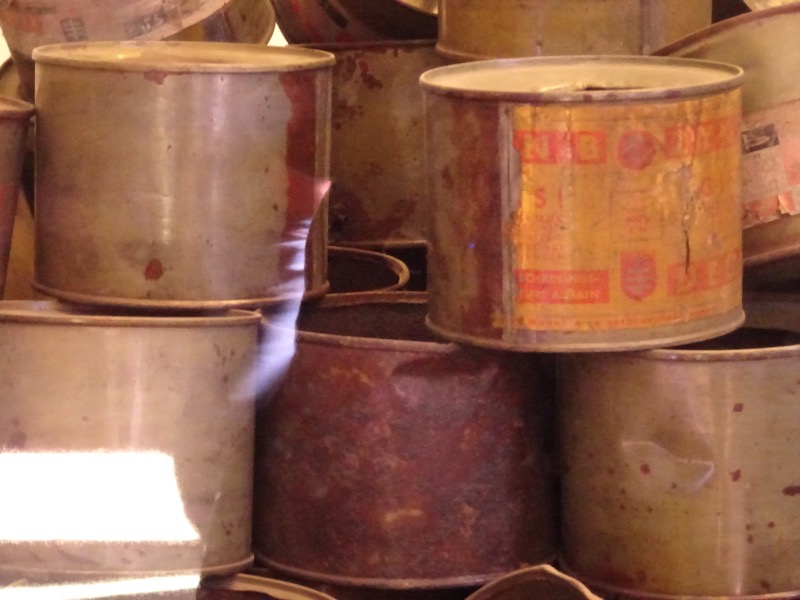
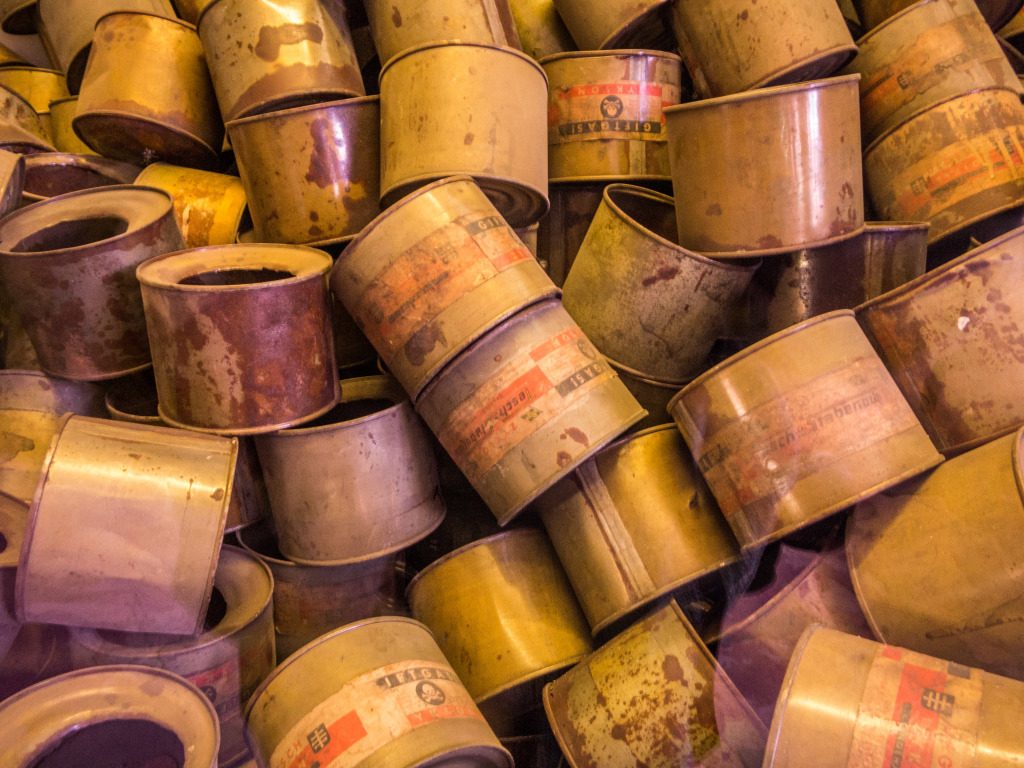 Piles of spectacles removed from deportees who were murdered in the gas chambers.
Piles of spectacles removed from deportees who were murdered in the gas chambers.
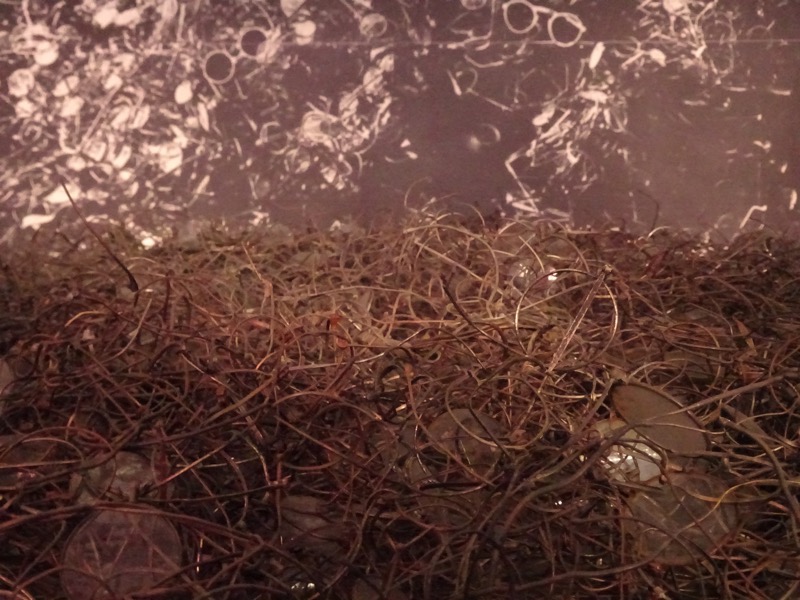
Timeline:
June 1940 – Beginning of the deportation of Poles, the Nazis sent 140,000 – 150,000 Polish prisoners to the camp, where half of them perished.
June 1941 – Beginning of deportations of 25,000 prisoners of various nationalities, about half of these prisoners perished in the camp.
Summer 1941 – Beginning of deportations of 15,000 Soviet POWs. Most died during their imprisonment. Only a few survived.
March 1942 – Beginning of deportations of 1.1million Jews. Auschwitz started fulfilling two functions; whilst remaining a concentration camp, it became yet another site of the Holocaust, the biggest mass murder in the history of mankind, perpetrated by the Nazis. About one million deported Jews, were murdered by the SS, mainly in gas chambers.
February 1943 – Beginning of deportations of 23,000 Roma (Gypsies), of this number, 21,000 perished.
One thing these disparate groups had in common was that any disabled people who arrived at the camp would be immediately set to the death chambers. They were identified during the selection process and never registered as prisoners.
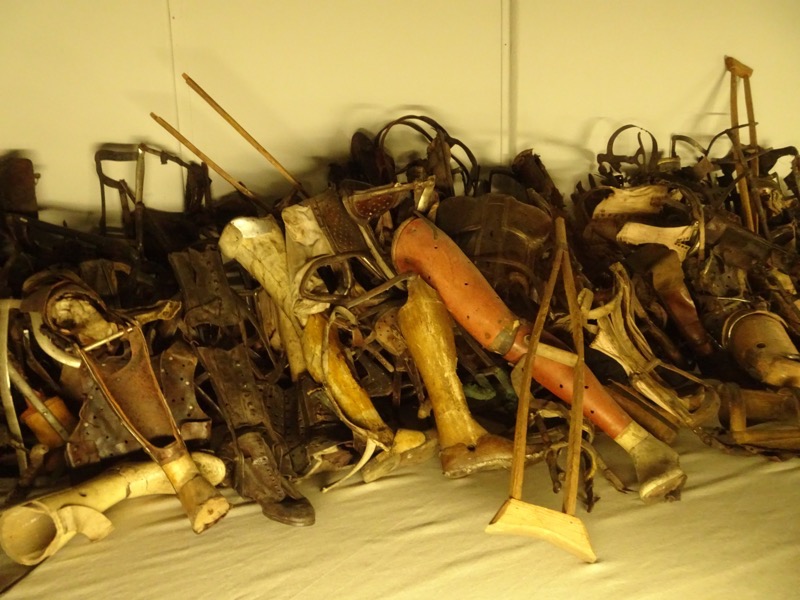
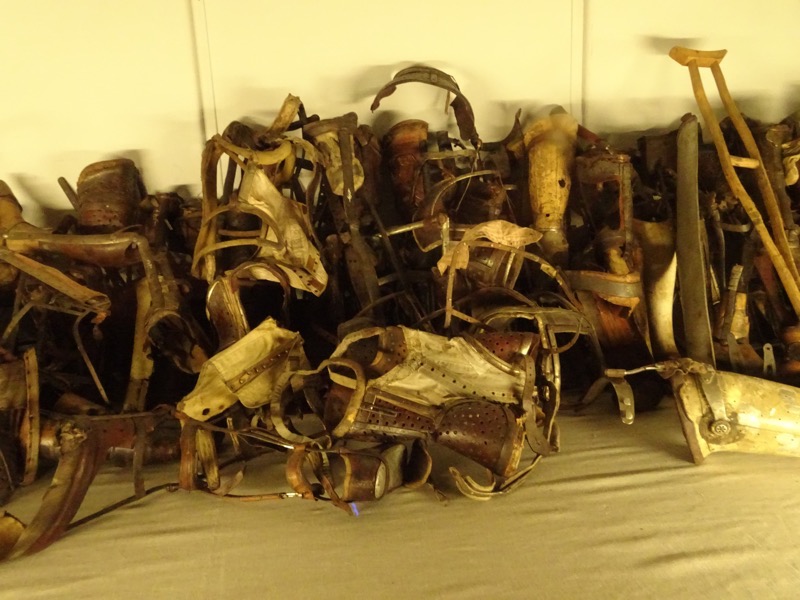 People arriving at the camps had many personal belongings with them that were taken and sorted, including household goods and kitchen items:
People arriving at the camps had many personal belongings with them that were taken and sorted, including household goods and kitchen items:
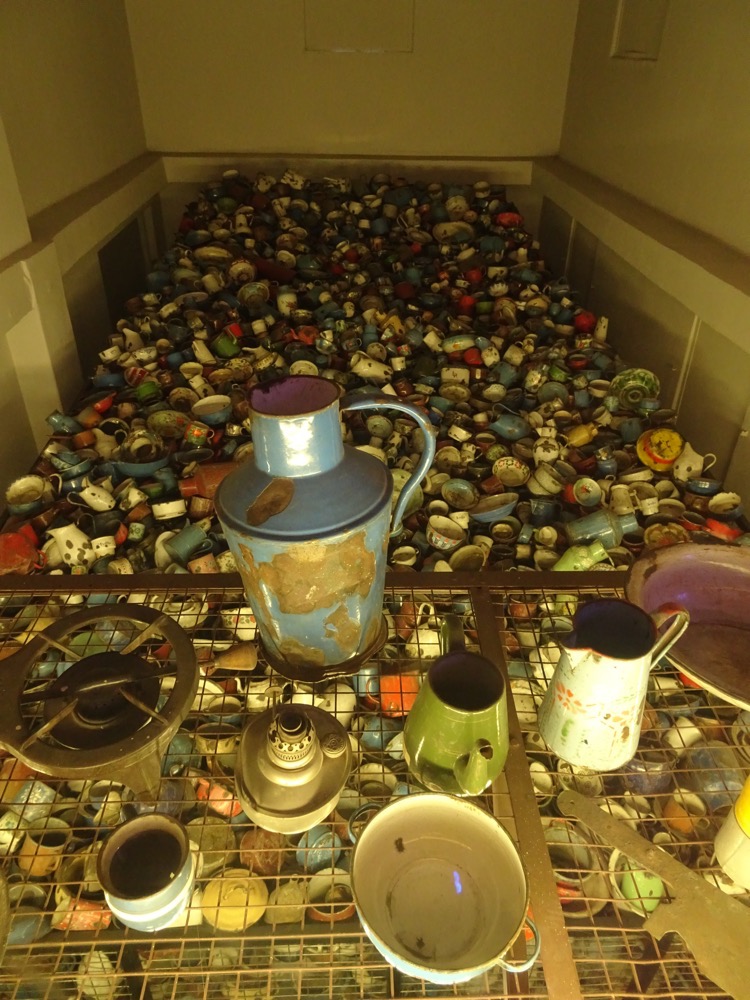 Piles of suitcases each one once carrying the entire worldly goods of a deportee:
Piles of suitcases each one once carrying the entire worldly goods of a deportee: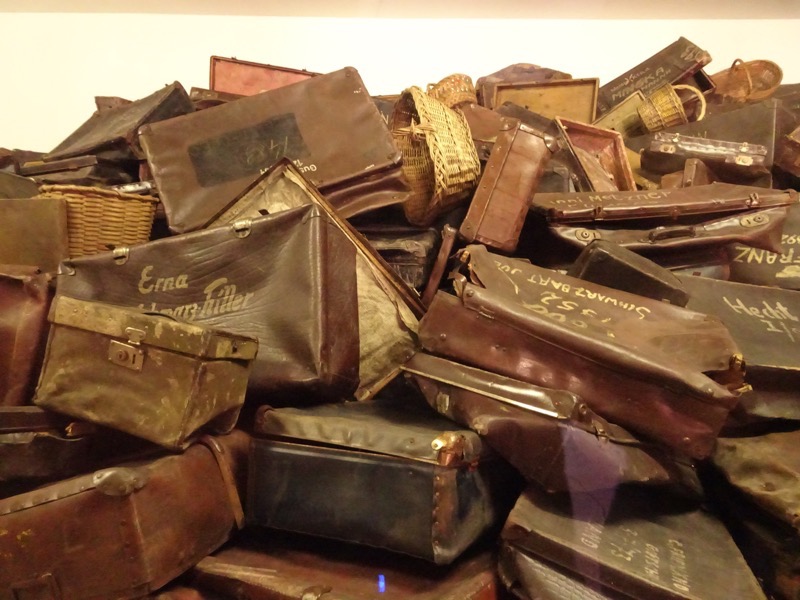
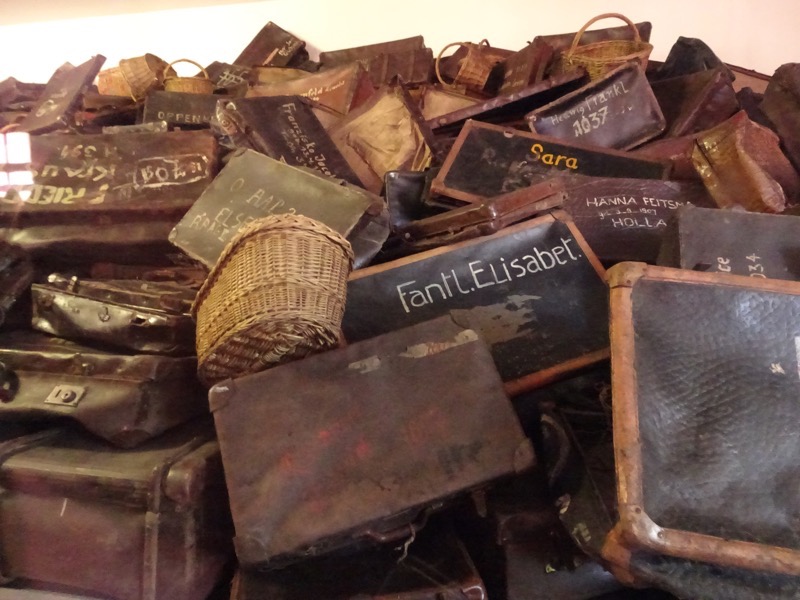 Mountains of shoes taken from the dead or about to be killed:
Mountains of shoes taken from the dead or about to be killed:
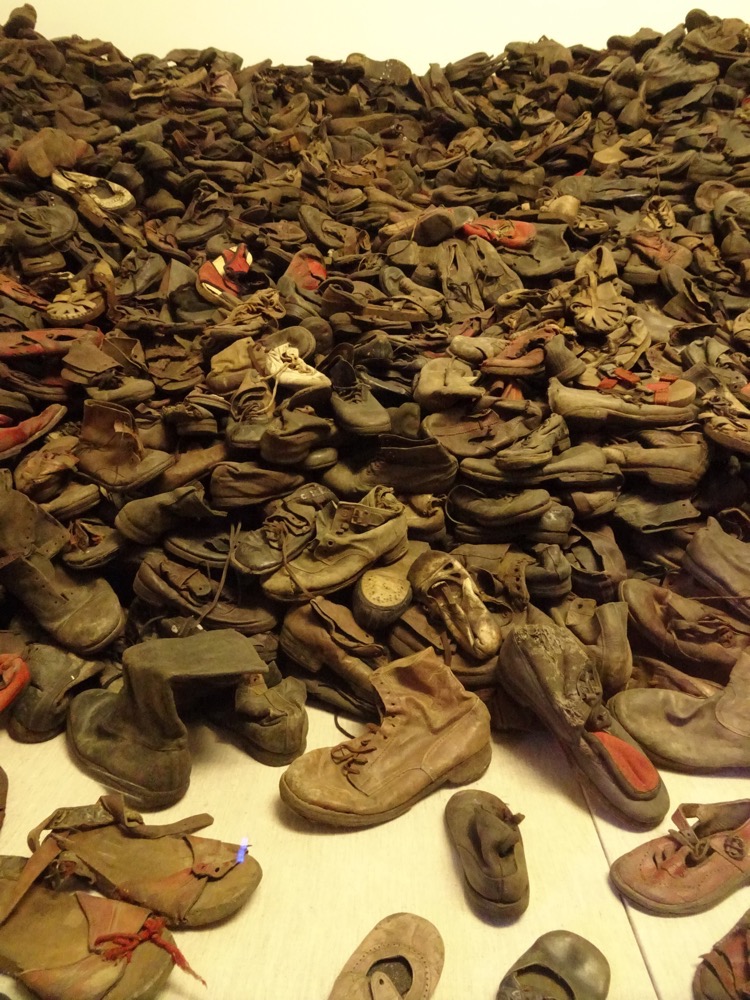 The shoes of children who were murdered at the camps:
The shoes of children who were murdered at the camps:
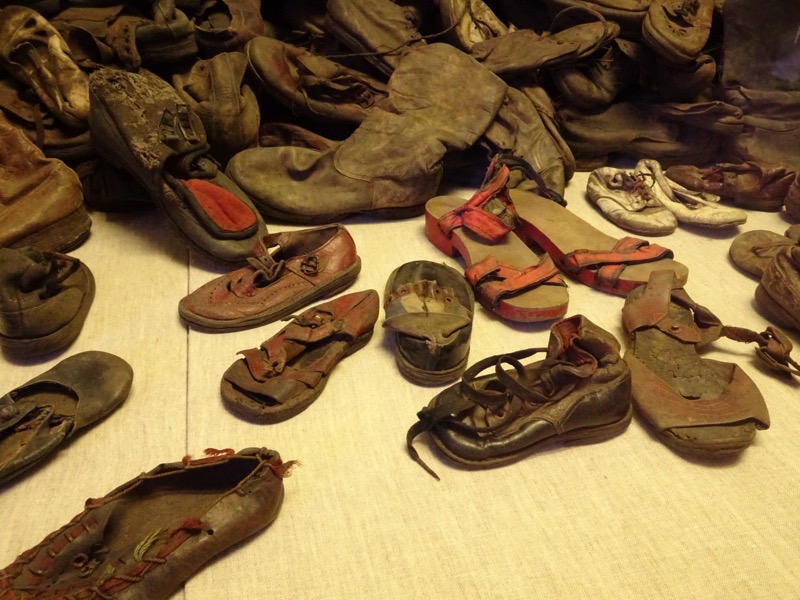 Personal brushes and shaving brushes:
Personal brushes and shaving brushes: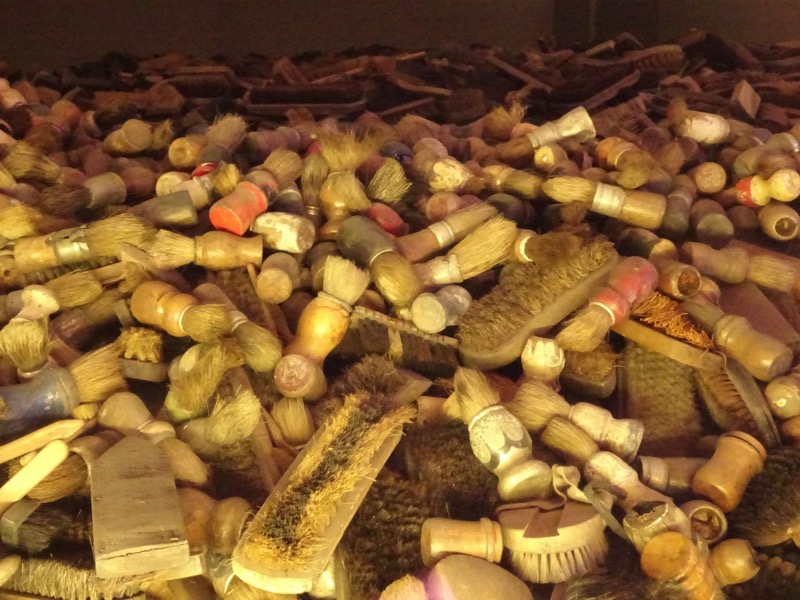
When the camp was first administered, every prisoner who arrived at Auschwitz would have an identification number given to them and a card made with three photographs of the individual for identification. This photography system proved time-consuming and expensive and as many prisoners did not survive the camp long enough to justify the process. KL Auschwitz was the only Nazi camp where prisoners had their camp numbers tattooed onto their person – on their left arm, though some smaller children had numbers tattooed onto their legs. The tattooing saved money due to the right mortality rate and assisted with difficulties in identifying corpses. From Autumn 1941 Soviet prisoners of war as well as other groups, were tattooed also. From Spring 1943, tattooing for identification was used to mark all prisoners.
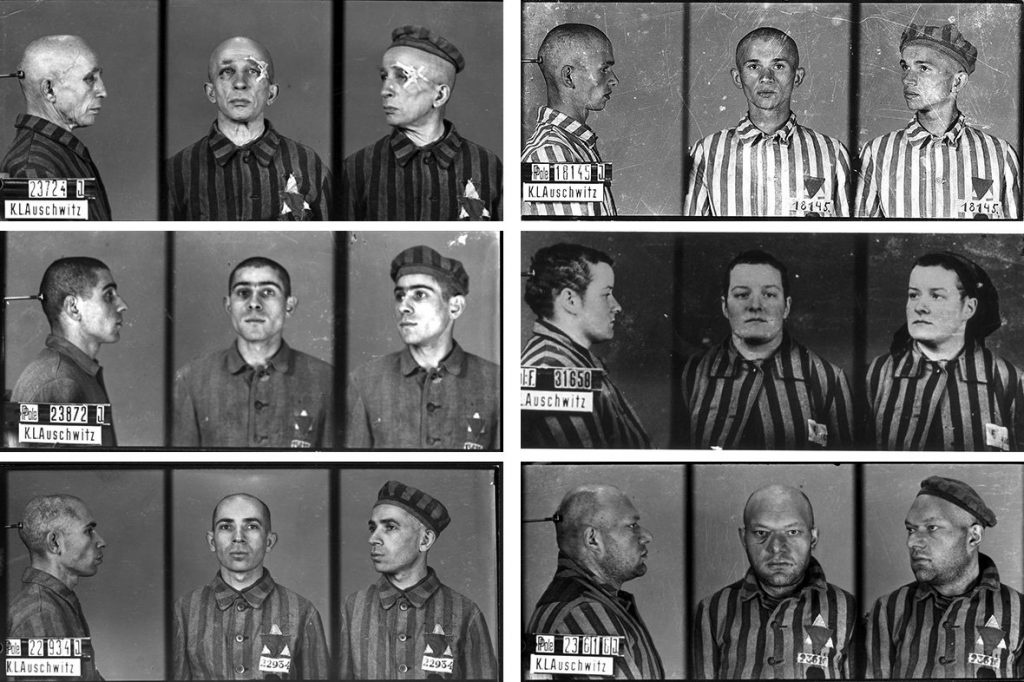 Camp uniforms were issued to prisoners who made it through the selection process to become registered prisoner/workers. They were often filthy and lice-ridden.
Camp uniforms were issued to prisoners who made it through the selection process to become registered prisoner/workers. They were often filthy and lice-ridden.
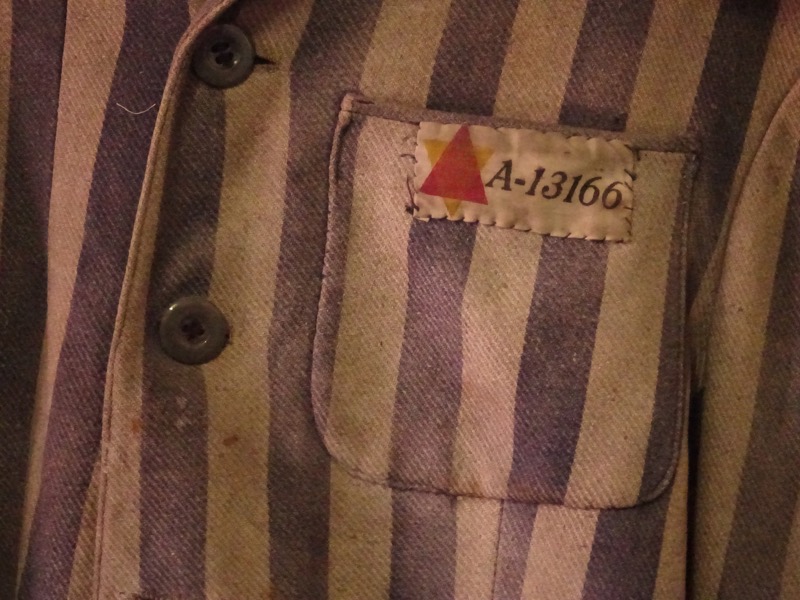 Each of these people had a family, an occupation, a home. Here, they were dehumanized and turned into a number only.
Each of these people had a family, an occupation, a home. Here, they were dehumanized and turned into a number only. 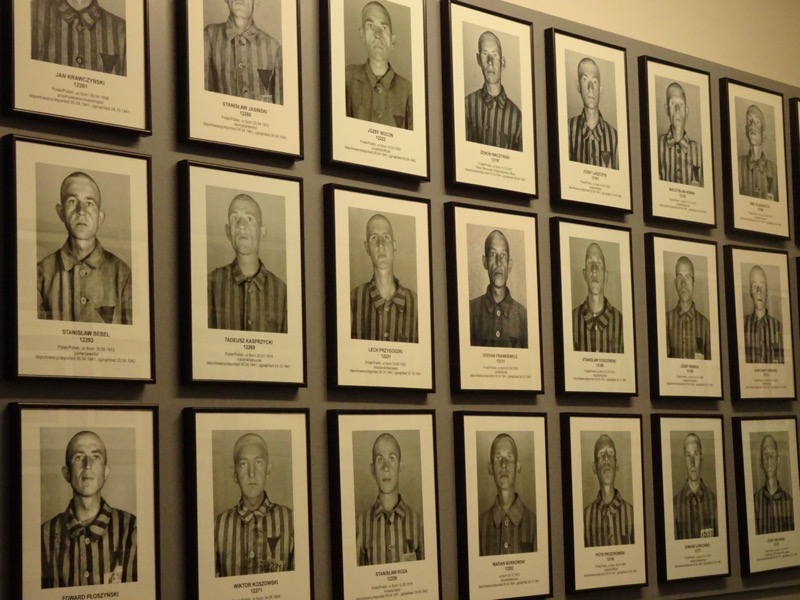
the windows of the barracks were the constant reminders of the failure to comply with orders. Barbed wire fences, guard towers and the ever-present threat of violence and death.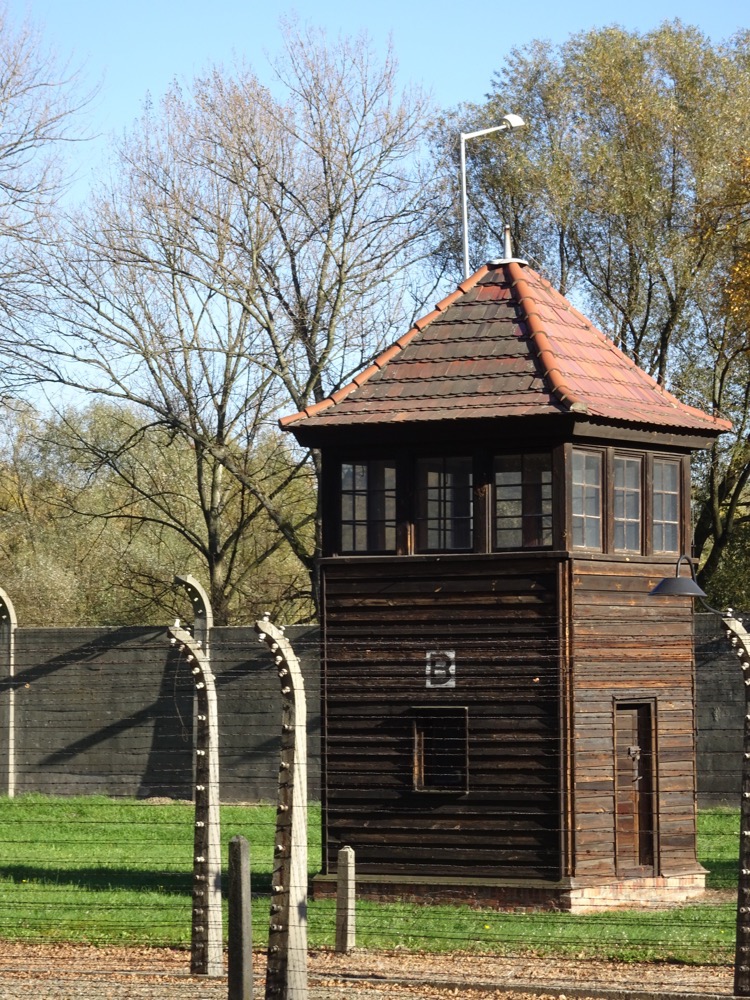
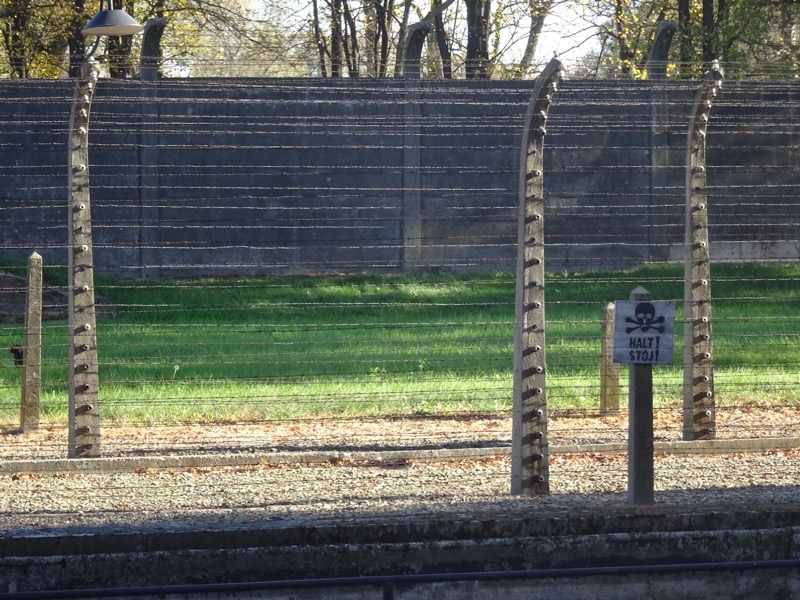
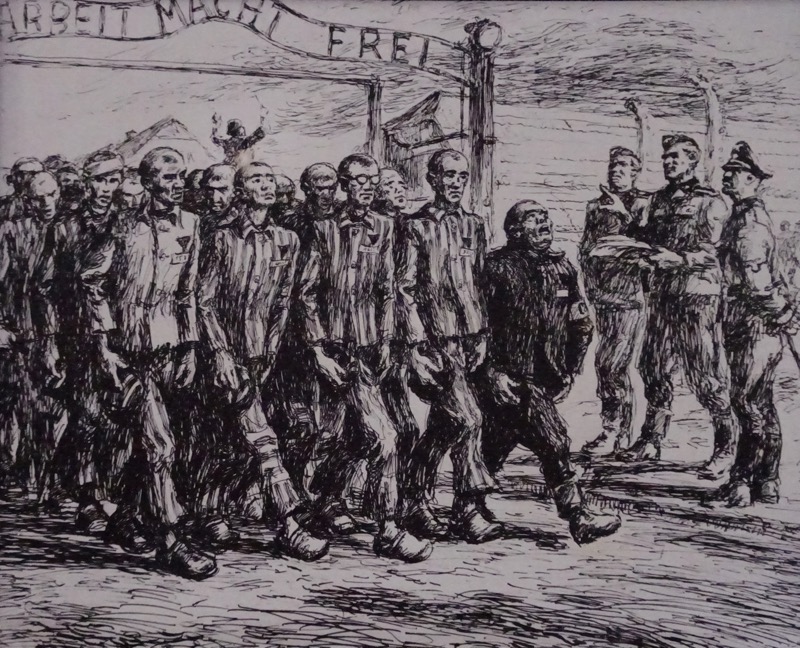
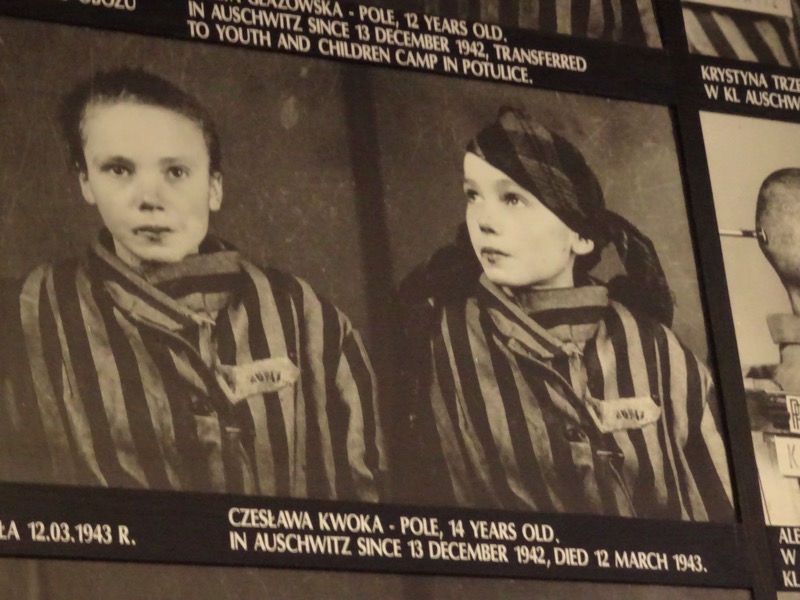
Prisoners held in the concentration camp died from being overworked, from starvation, from deliberately sadistic punishments, from sheer exhaustion at prolonged roll-calls, by being tortured, from appalling living conditions, by being used for medical experiments or through arbitrary executions. Those too weak, or too sick to work were selected by the SS during the roll-calls, or in the infirmary, and either sent to the chambers for extermination or murdered with an injection of phenol.
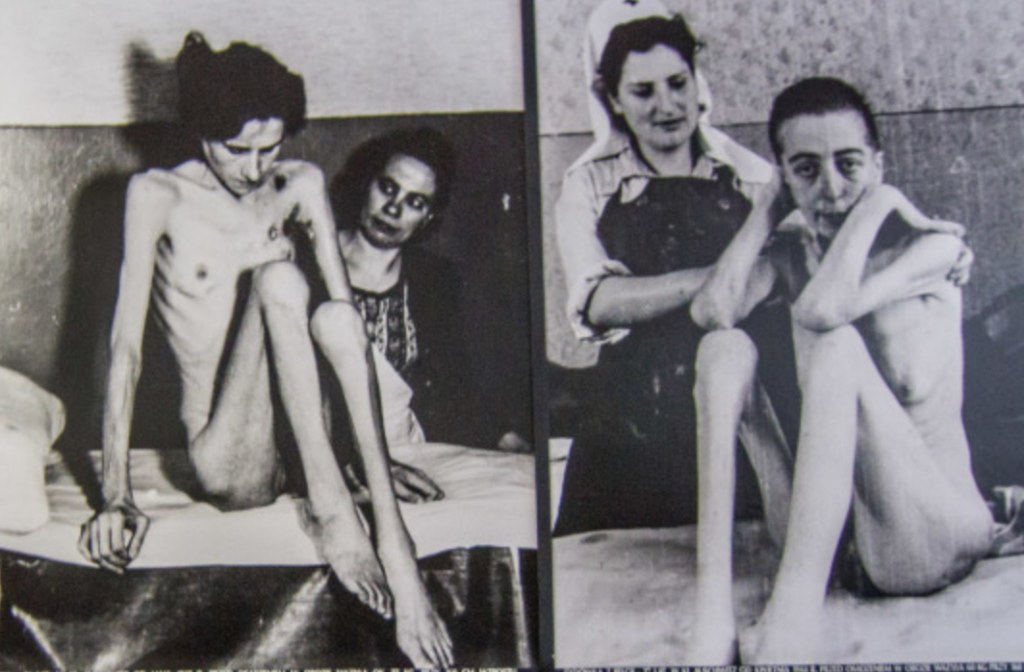
Constant starvation was one of the main factors in the degradation and extermination of prisoners. The daily food ration of each prisoner consisted of approximately 1,200-1,700 kilocalories. Most prisoners had to survive on these rations whilst working approximately 11 hours every day. Prisoners who could not find any additional sources of food usually died after just a few months imprisonments in the camp.
For all their claims to the contrary, the Nazis deported several hundred thousand children to the concentration camps. The Nazis deported about 232,000 children and young people to KL Auschwitz, including 216,000 Jewish children, 11,000 Roma (Gypsy) children, 3,000 Polish children and 1,000 children of other nationalities. The majority of the children perished in the gas chambers immediately after arrival. However, a ‘lucky’ few who had the right ‘features’ ie: were of desirable Aryan appearance with blonde hair and blue eyes, would be taken from their parents and given to good German families to raise. Altogether about 22,000 children and young people of various nationalities were registered as prisoners at KL Auschwitz, meaning the other 200,000 children who arrived at Auschwitz were killed on arrival. On 27 January 1945, the Red Army soldiers liberated only about 650 children and young people from the camp, of which 450 were under 15 years old.
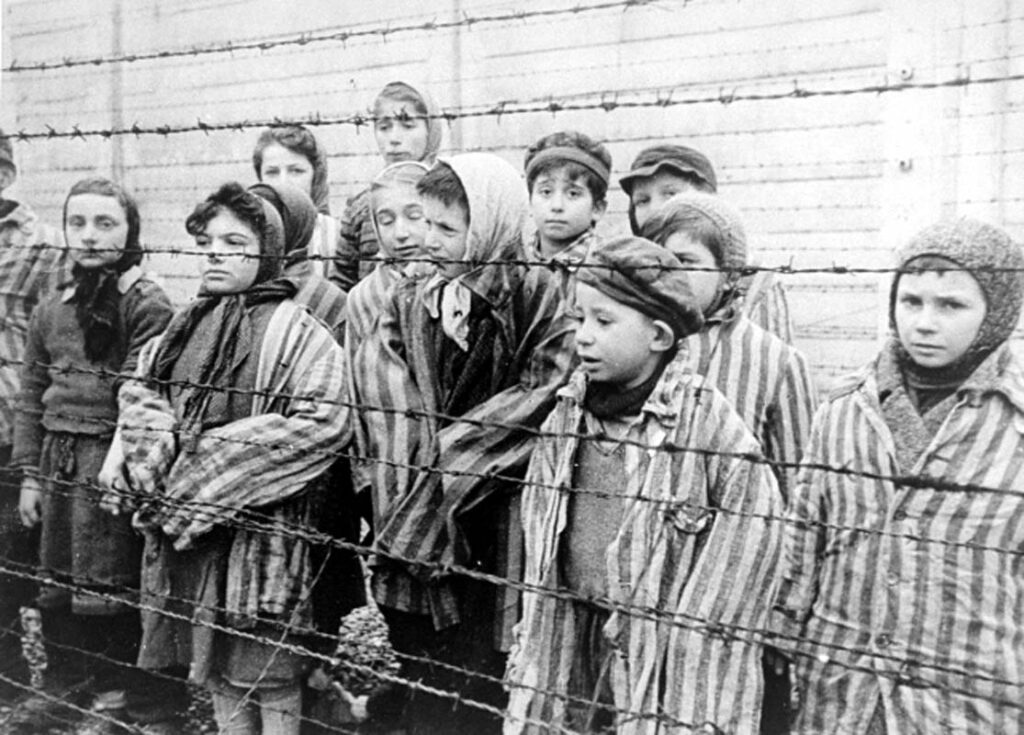
At the time of liberation, there were many children in the camp who were taken there so young as to not know their full names or what towns and regions their families had come from. Many of these children were never reunited with families and several never knew their identities.
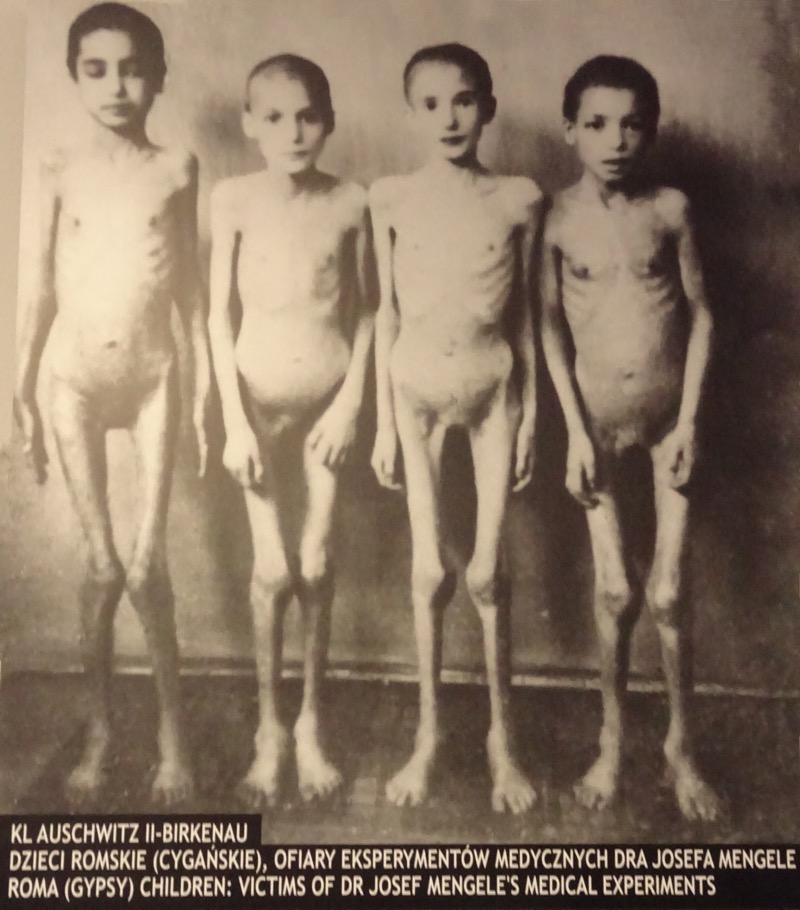
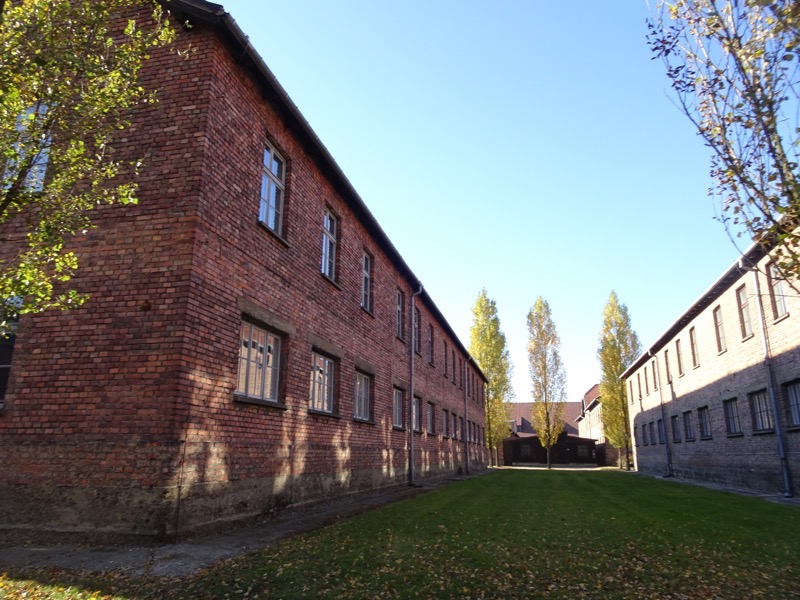 Map of the Block 11 Punishment Unit. This was effectively the prison within the prison. If prisoner committed offences while in the camp, they could expect any sort of retribution – immediate execution, solitary confinement for a period of time, confinement to starvation with the intention of murdering the prisoner, or face a firing squad at an unknown future time. Note Section 22 in the left hand building – it has what is know as ‘standing cells’ where prisoners entered through a two foot door in a wall and were put in a cell approximatedly two foot square and six foot tall. Prisoners would be locked in this standing cell in complete darkness for indeterminate periods of time.
Map of the Block 11 Punishment Unit. This was effectively the prison within the prison. If prisoner committed offences while in the camp, they could expect any sort of retribution – immediate execution, solitary confinement for a period of time, confinement to starvation with the intention of murdering the prisoner, or face a firing squad at an unknown future time. Note Section 22 in the left hand building – it has what is know as ‘standing cells’ where prisoners entered through a two foot door in a wall and were put in a cell approximatedly two foot square and six foot tall. Prisoners would be locked in this standing cell in complete darkness for indeterminate periods of time.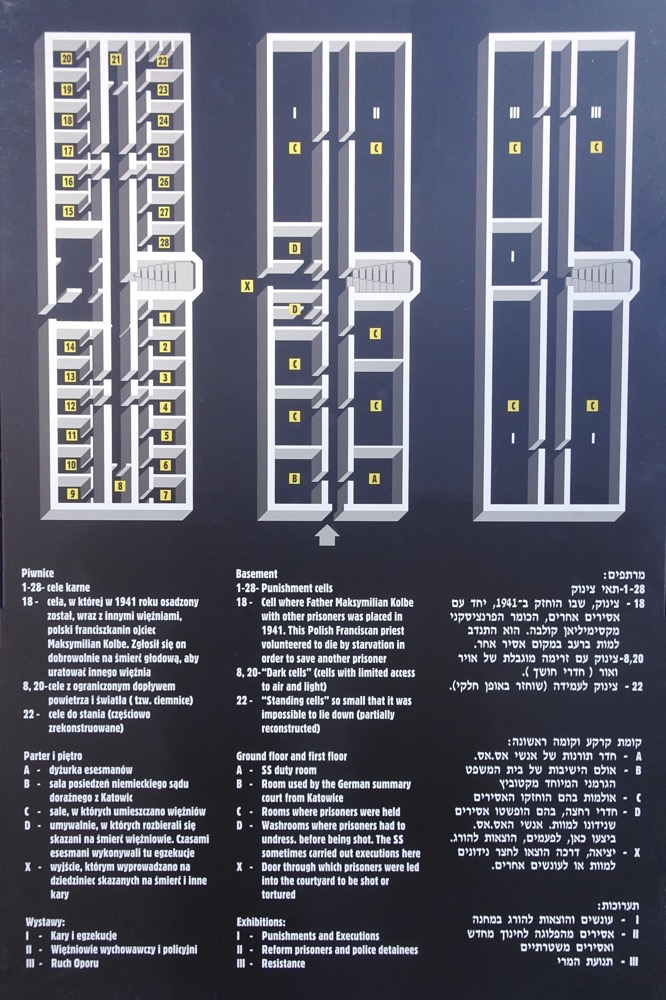 Prisoners were led to this wall for execution by firing squad.
Prisoners were led to this wall for execution by firing squad.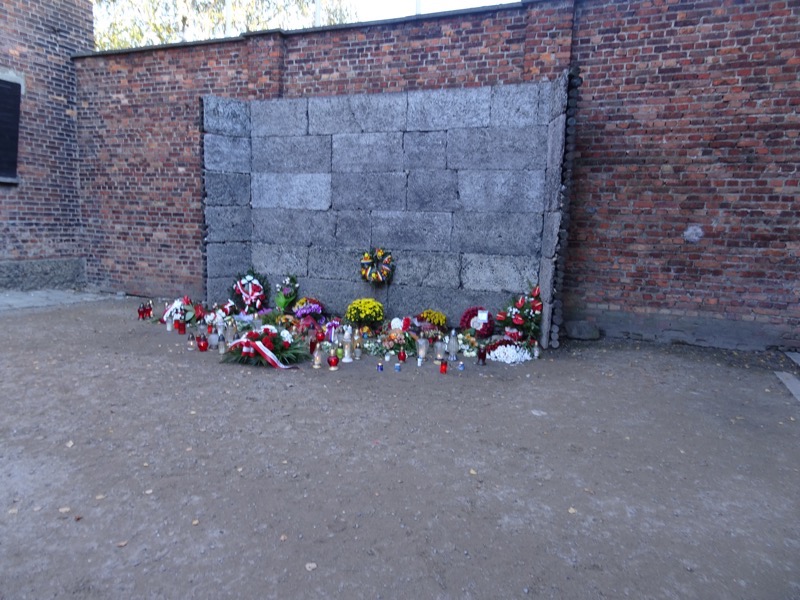
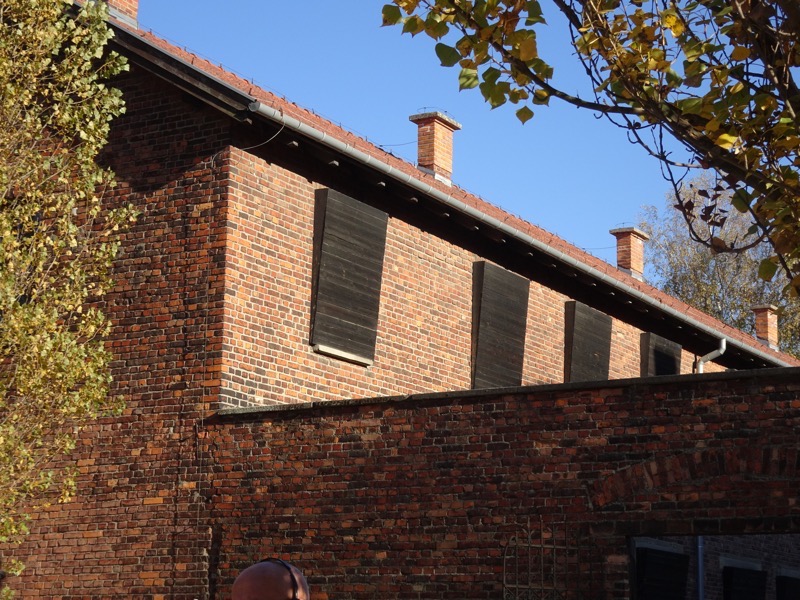 The barracks beside the execution courtyard were blocked from seeing what was happening during the executions. Prisoners avoided having anything to do with Block 11 and tried hard to stay away from it when going about their duties.
The barracks beside the execution courtyard were blocked from seeing what was happening during the executions. Prisoners avoided having anything to do with Block 11 and tried hard to stay away from it when going about their duties.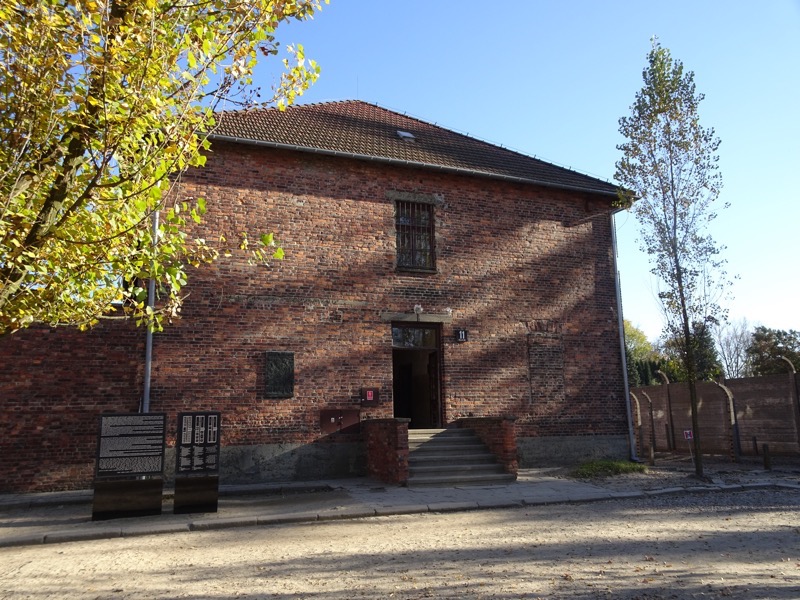 A guardhouse used by SS officials for shelter during the harsh roll-calls that prisoners were forced to endure:
A guardhouse used by SS officials for shelter during the harsh roll-calls that prisoners were forced to endure: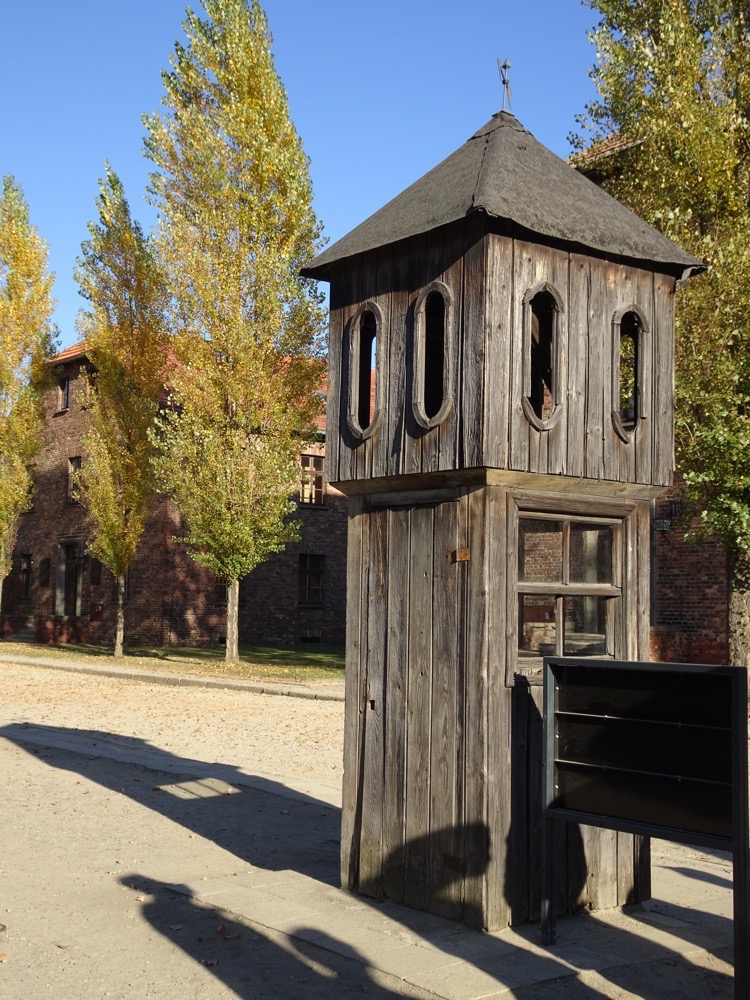
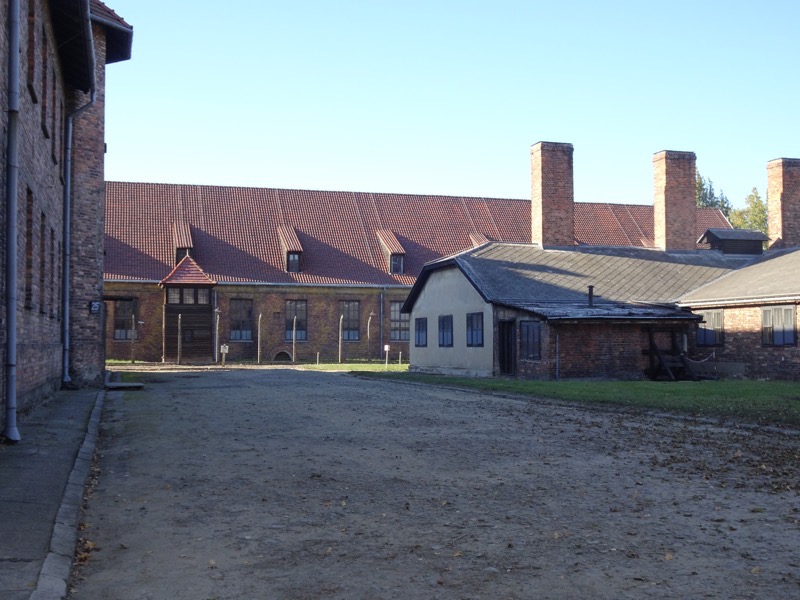 In the centre of Auschwitz KL, the SS officer in charge would hold a roll call in the courtyard above. The roll call contained reports on the number of prisoners present. If there seemed to be anyone missing, prisoners had to continue to stand at attention until the SS were satisfied – regardless of the weather, sometimes for up to twelve hours or more. To intimidate the prisoners, the SS would also conduct public hangings in full view of the roll-call area. The largest such execution was carried out on 19 July 1943 when twelve Poles suspected of helping three other prisoners escape, and of maintaining contacts with the outside world, were hanged together on a purpose-built gallows.
In the centre of Auschwitz KL, the SS officer in charge would hold a roll call in the courtyard above. The roll call contained reports on the number of prisoners present. If there seemed to be anyone missing, prisoners had to continue to stand at attention until the SS were satisfied – regardless of the weather, sometimes for up to twelve hours or more. To intimidate the prisoners, the SS would also conduct public hangings in full view of the roll-call area. The largest such execution was carried out on 19 July 1943 when twelve Poles suspected of helping three other prisoners escape, and of maintaining contacts with the outside world, were hanged together on a purpose-built gallows.
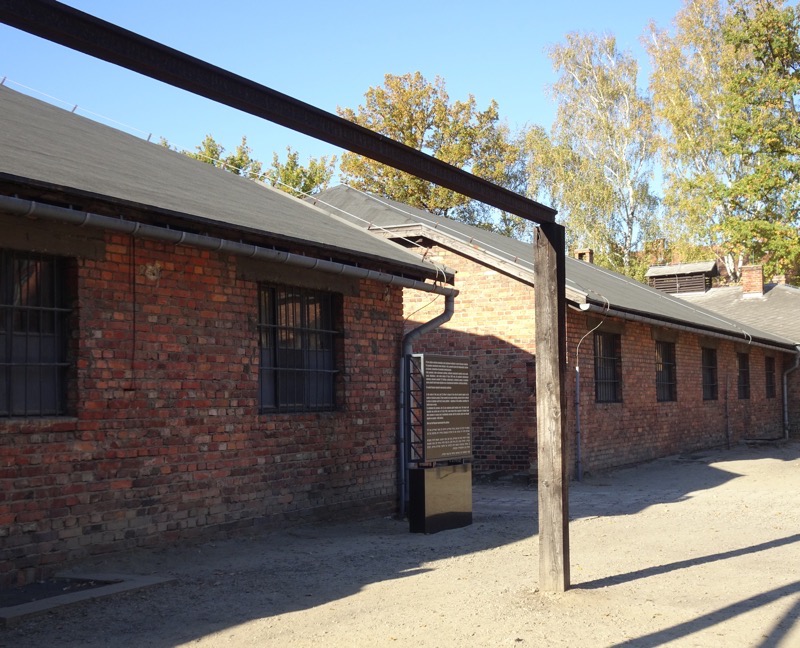
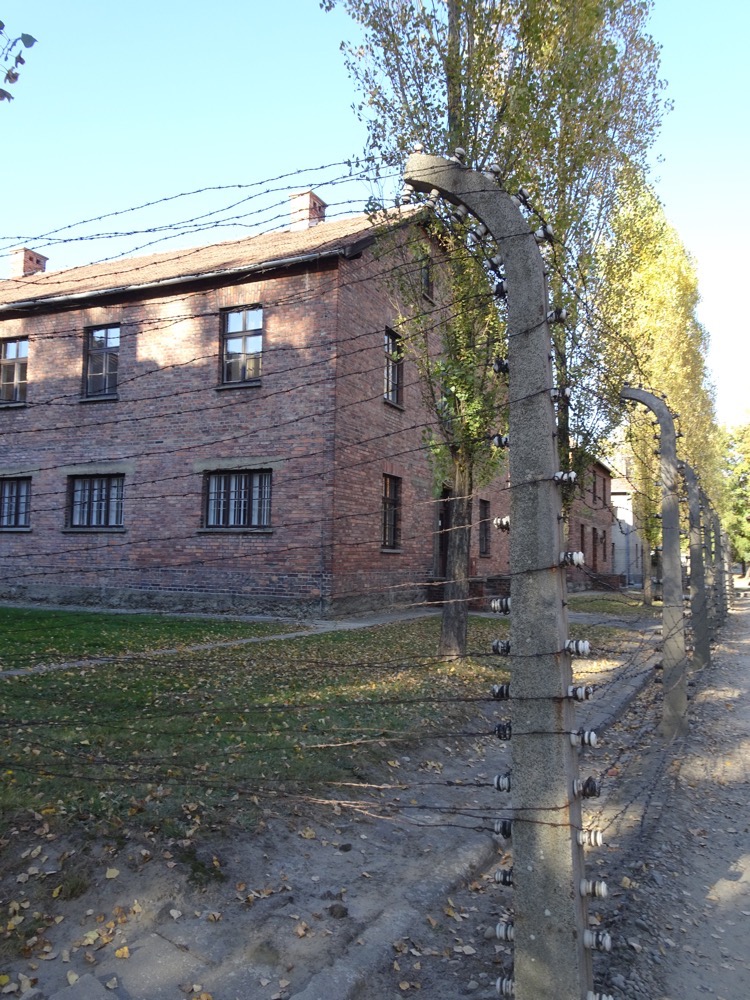
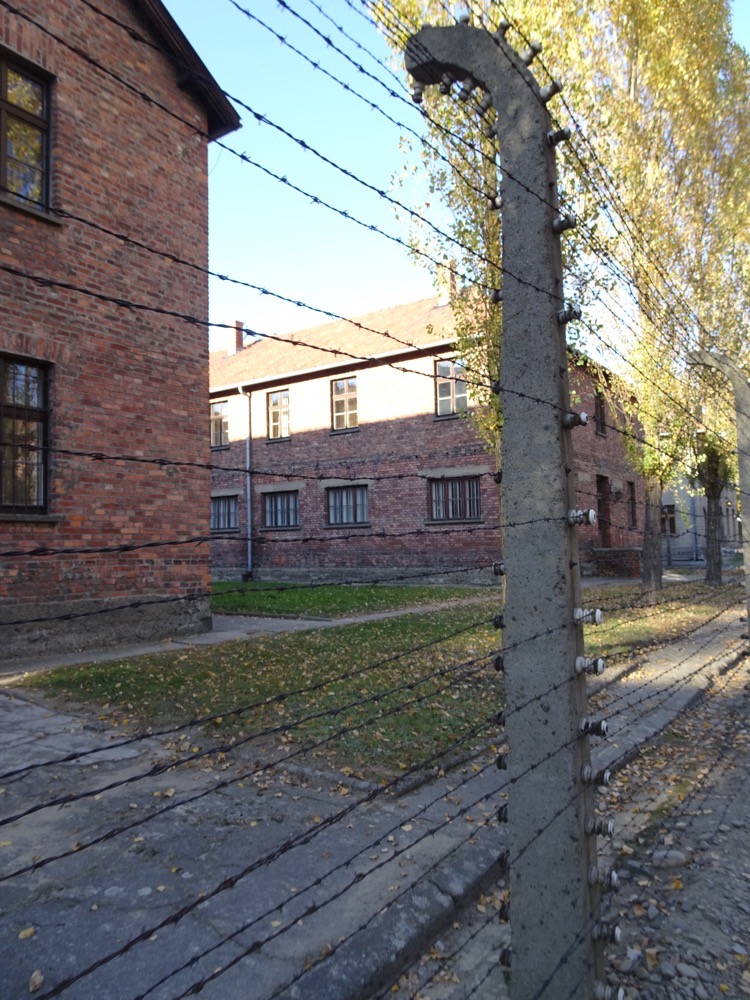
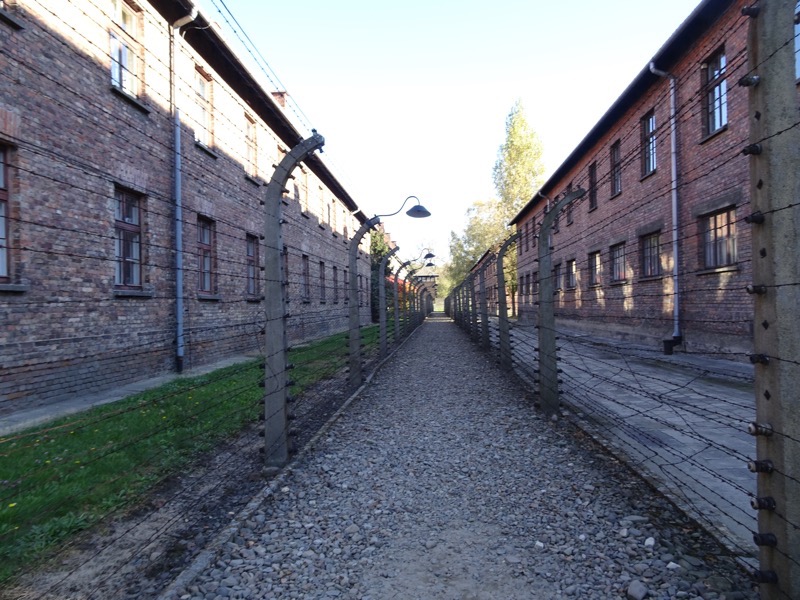
Rudolf Höss was the German SS officer who was the longest-serving Commandant of Auschwitz. He tested and carried into Hitler’s plan to systematically exterminate the Jewish population. Höss lived in a home with his wife and family that is in surprisingly close proximity (about 50m) from the gas chamber and crematorium of Auschwitz KL. It is unbelievable how he could live a regular family life and raise his children so close this horrifying place of daily mass murder.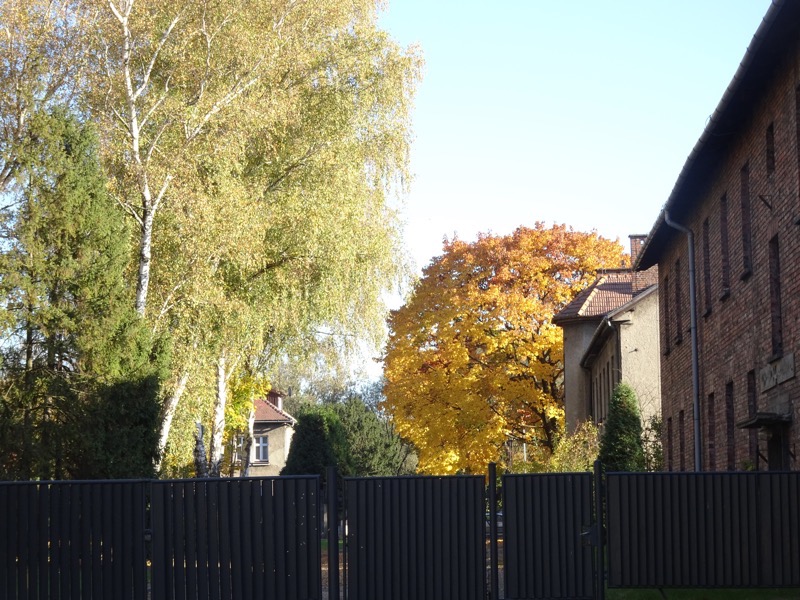 Later, after the war, and after the trials for war crimes, a special gallows was built here and Rudolph Höss was hanged on 16 April 1947, after a trial before the Polish Supreme National Tribunal. Fittingly he was executed at Auschwitz, in between of his former home and the gas chambers. It is not possible to believe that the Höss family didn’t hear, smell and see the airborne ash remains of the prisoners emerging from the chimneys, who met their fate in the gas chambers.
Later, after the war, and after the trials for war crimes, a special gallows was built here and Rudolph Höss was hanged on 16 April 1947, after a trial before the Polish Supreme National Tribunal. Fittingly he was executed at Auschwitz, in between of his former home and the gas chambers. It is not possible to believe that the Höss family didn’t hear, smell and see the airborne ash remains of the prisoners emerging from the chimneys, who met their fate in the gas chambers.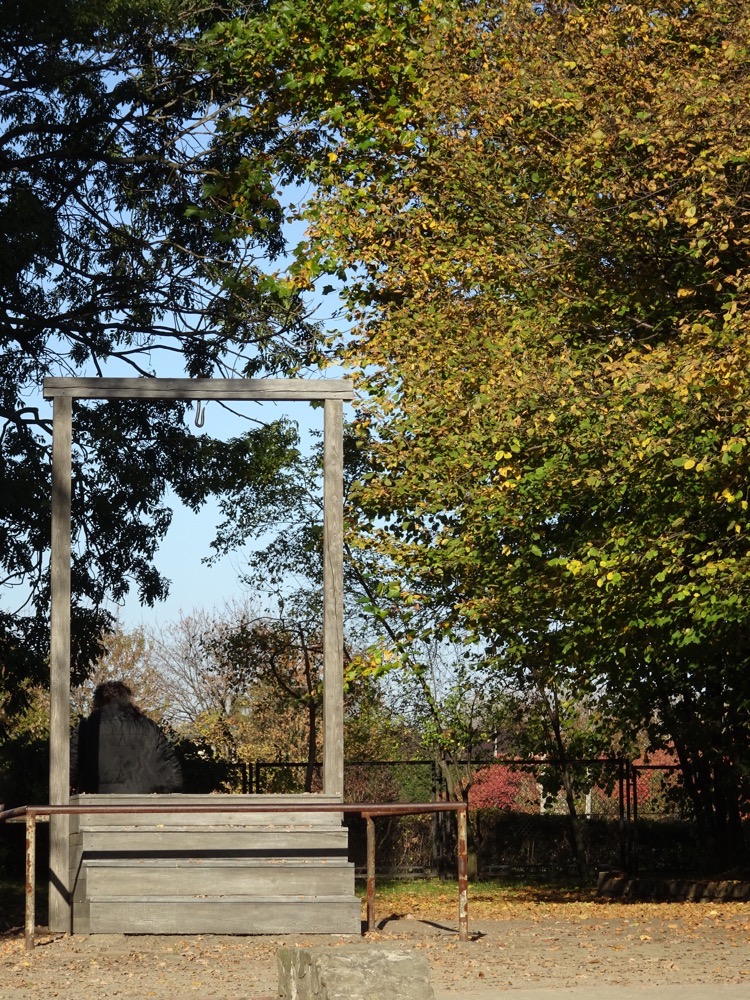
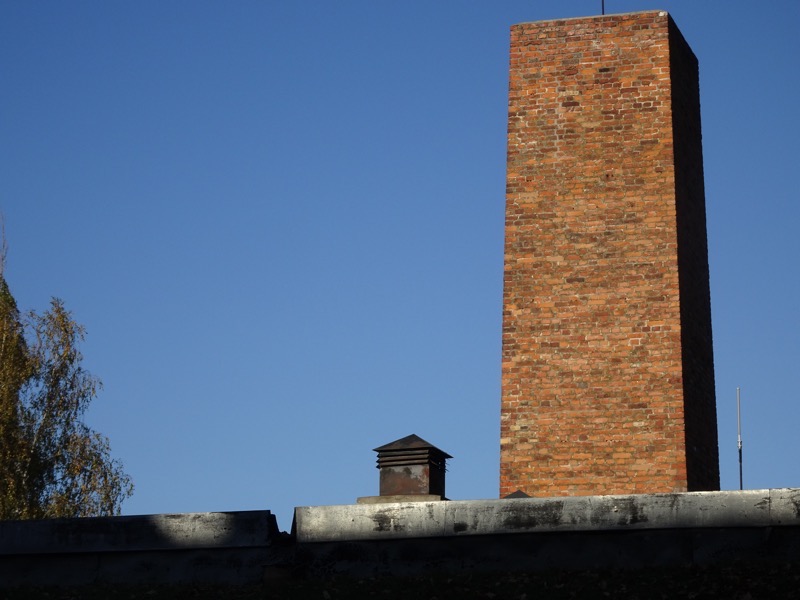
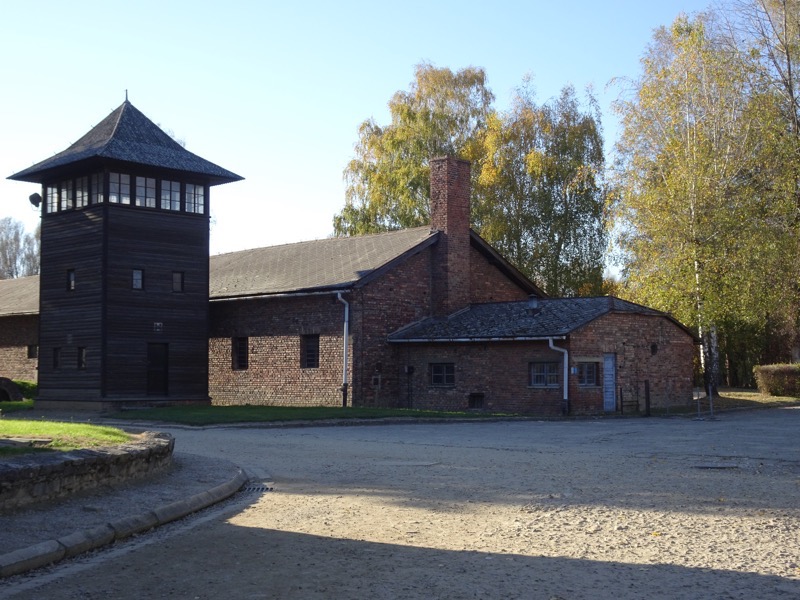 The small gas chamber at KL (Konzentrationslager) Auschwitz:
The small gas chamber at KL (Konzentrationslager) Auschwitz: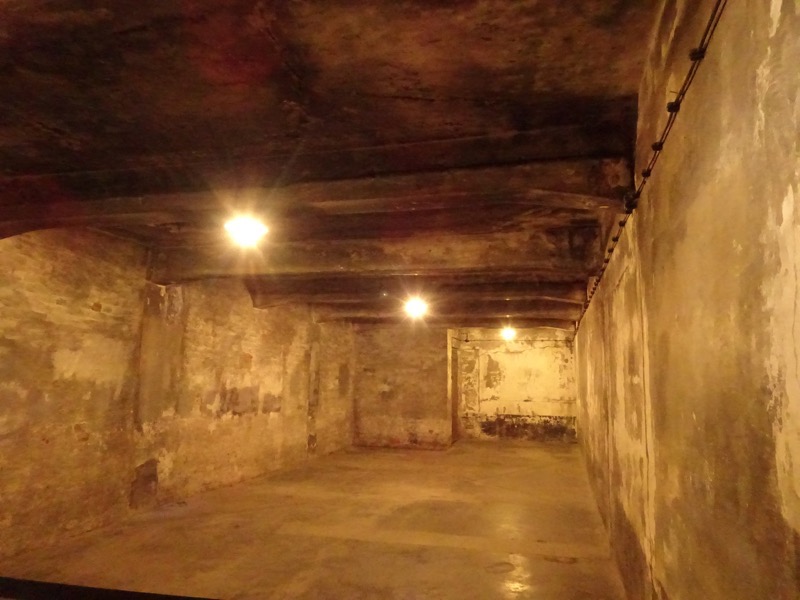
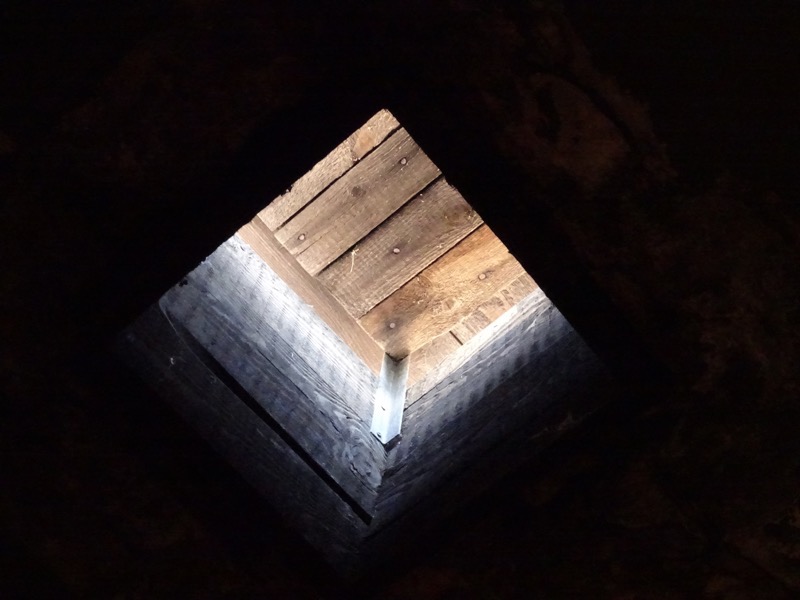 The creamation works directly beside the gas chamber.
The creamation works directly beside the gas chamber.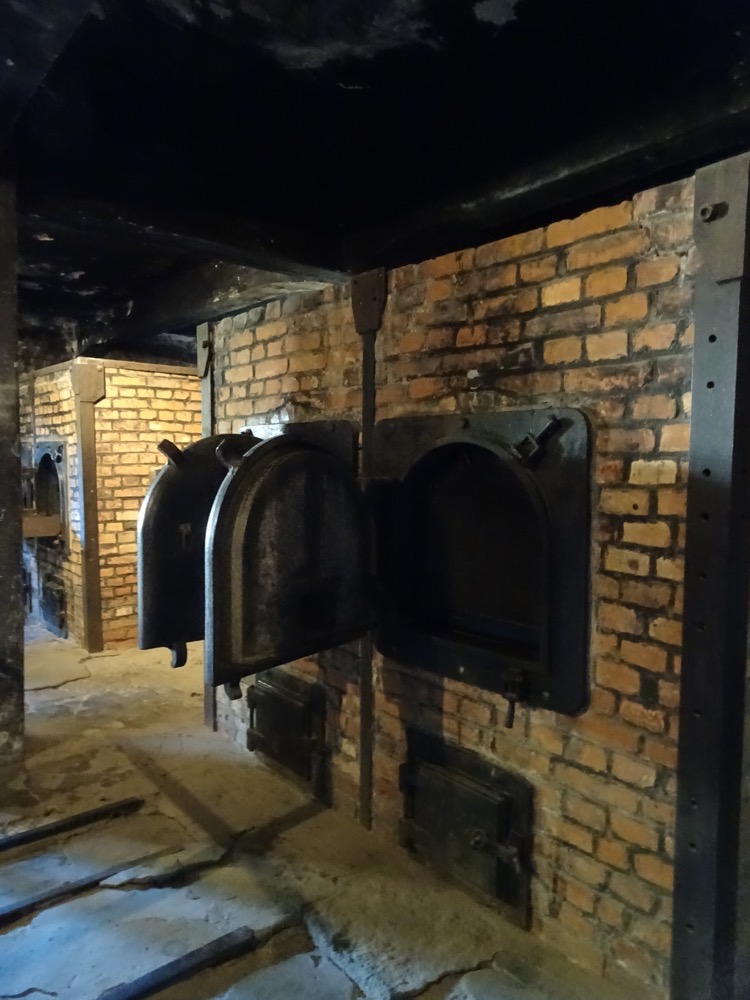
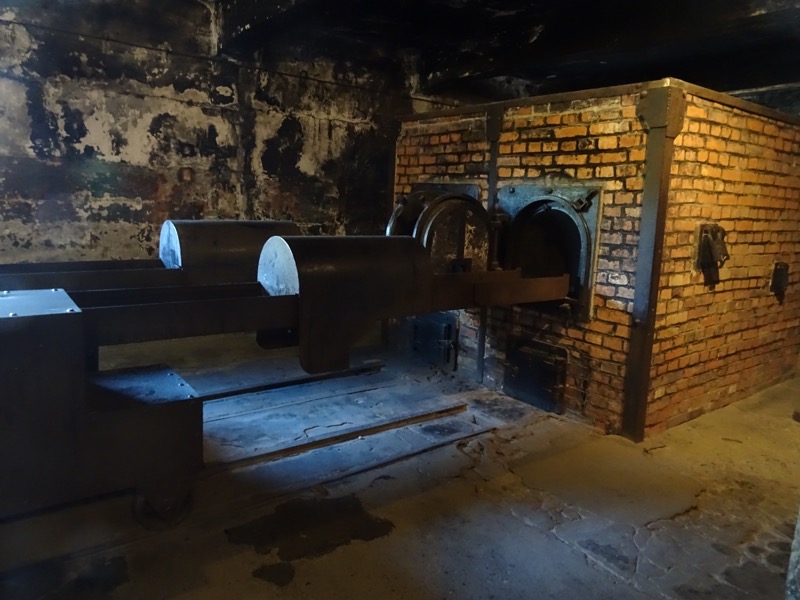 All of which is only divided from the worker/prisoner barracks by two rows of patrolled barbed wire. The prisoners must have also know the fates of those who entered the chambers.
All of which is only divided from the worker/prisoner barracks by two rows of patrolled barbed wire. The prisoners must have also know the fates of those who entered the chambers.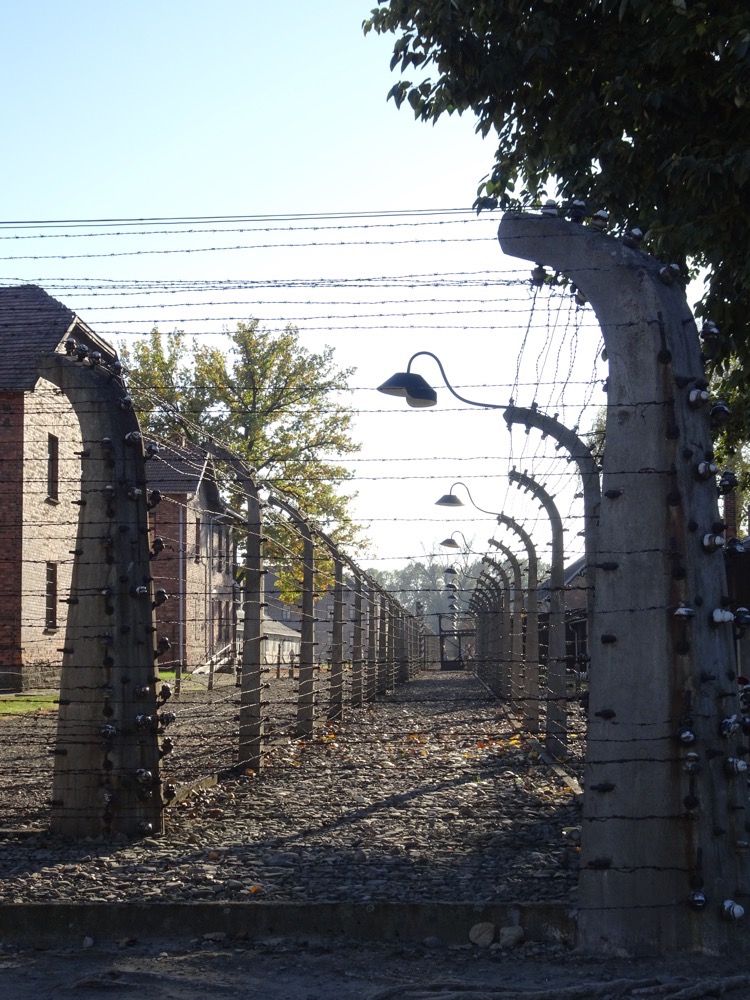
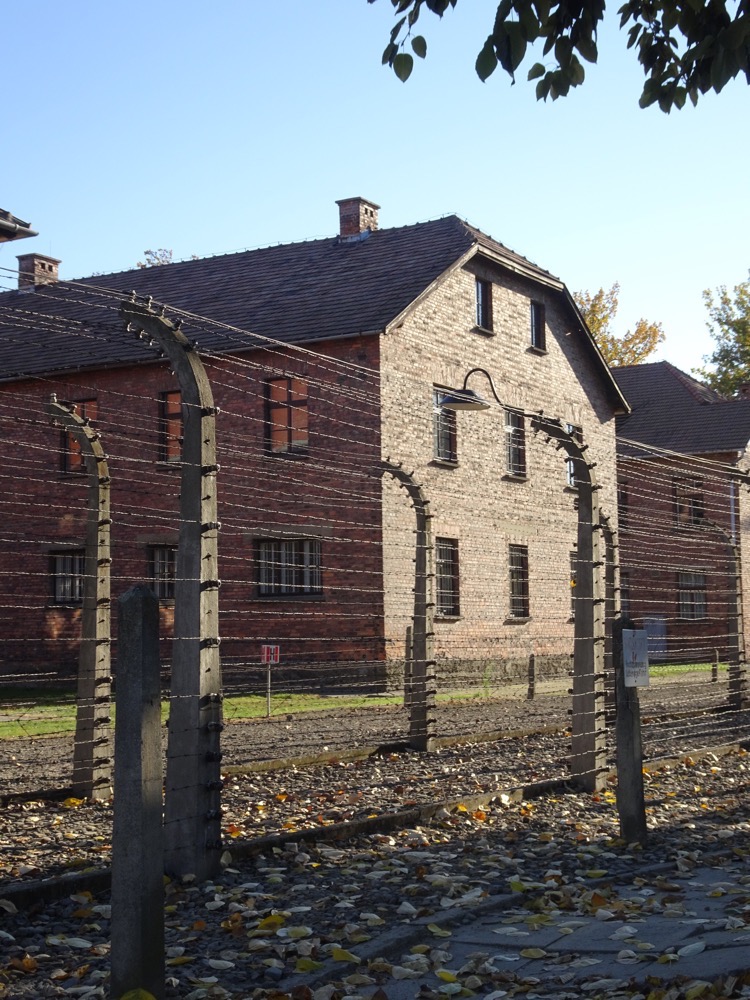 It was at this point we had a break in our tour and I took the opportunity to talk to our guide, Marta, who I had noticed handled the appalling and traumatizing material that she was imparting in a professional, yet very sensitive manner. She was managing to share some truly harrowing content with us in a matter of fact manner, and I wanted to commend her on what I thought must be a difficult and delicate balance between educating visitors and yet now allowing the recitation of bland facts to overwhelm the truly unbelievably vile events that occurred here. I was also curious to know how long she had been guiding visitors through Auschwitz, how many times each day would she go through the complex and how did she manage to not allow the horrific nature of the events that she was constantly discussing not to affect her personally on a psychological level? It turns out that Marta is not actually one of the main tour guides. She is a historian and curator at the museum and she only takes tours on rare occasions.
It was at this point we had a break in our tour and I took the opportunity to talk to our guide, Marta, who I had noticed handled the appalling and traumatizing material that she was imparting in a professional, yet very sensitive manner. She was managing to share some truly harrowing content with us in a matter of fact manner, and I wanted to commend her on what I thought must be a difficult and delicate balance between educating visitors and yet now allowing the recitation of bland facts to overwhelm the truly unbelievably vile events that occurred here. I was also curious to know how long she had been guiding visitors through Auschwitz, how many times each day would she go through the complex and how did she manage to not allow the horrific nature of the events that she was constantly discussing not to affect her personally on a psychological level? It turns out that Marta is not actually one of the main tour guides. She is a historian and curator at the museum and she only takes tours on rare occasions.
yale looked Marta up online later to find out more about her background and we discovered she is one of the preeminent specialists in educational projects connected to the Auschwitz memorials and museums.
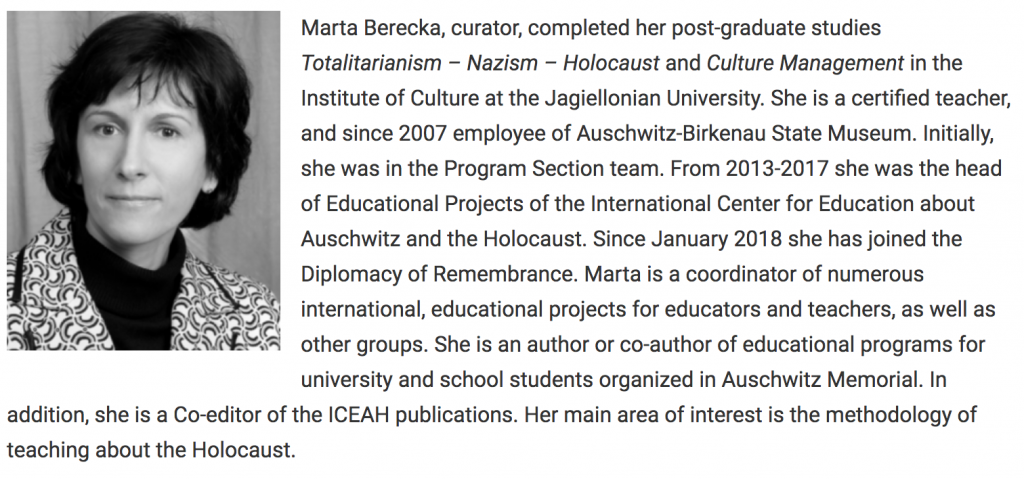
After reading her biography I can see now why she was so willing to engage in a discussion with me, regarding the important role she feels the museum plays in educating generations of people who are now less directly connected to the atrocities committed here. She said that 15 years ago, many of their visitors all knew someone or had met someone who was directly connected to the concentration camps… now the living memories of what happened here during the Holocaust were starting to fade, as the survivors themselves were passing away. It was obvious that Marta was very connected to the material having visited Auschwitz many times. Before she started working for the museum she worked with survivors and participated in helping to collect testimonies of peoples’ experiences at Auschwitz. While Marta somehow managed to maintain the professionalism of an academic, it was obvious that her empathy for these people and this place was genuine but also somehow composed, calm and tempered. I am not sure I could do this work – though I do believe her role in educating future generations on the atrocities committed at Auschwitz is vitally important… in the current political climate, perhaps now more than ever.
Our tour continued after a short bus ride to the larger camp area of Auschwitz II-Birkenau. Whereupon we were greeted by rows and rows of brick or timber barracks as far as the eye could see. I had no idea the sheer scale of this camp. I guess you read that it is 180ha and accommodated up to 130,000 prisoners, but the size of this place and the human misery that it must have seen is on a scale that I found difficult to comprehend. We approached by the famous brick rail gate and started walking into the camp. To our right were the timber barracks belonging to the male prisoners, in sections B1, B2, B3, B4, B5 all the way back to ‘Kanada’.
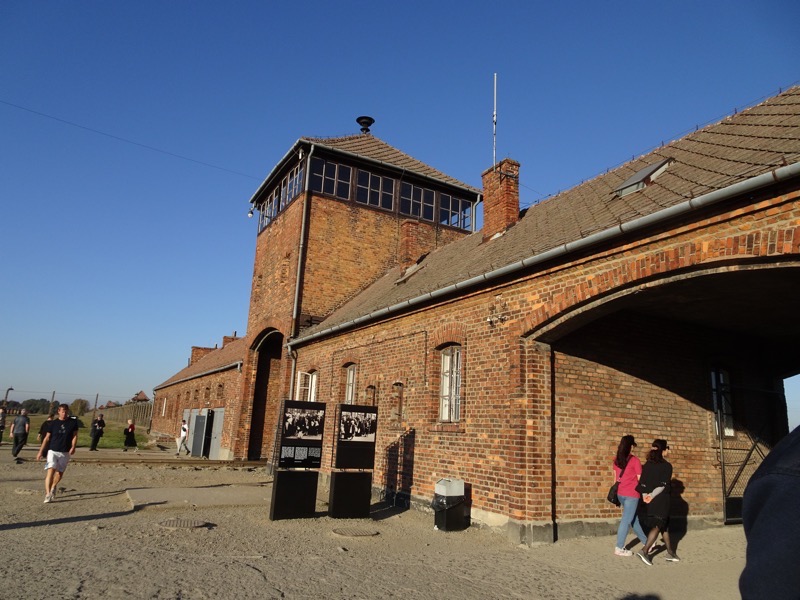
‘Kanada’ was a series of warehouses where the belongings of the murdered prisoners were taken to be sorted and redistributed to the Reich. Many of the goods acquired here were the portable items of value that the deported Jews were able to bring with them when they were hastily removed from their homes and then removed again from the ghettos. Jobs in Kanada were highly prized and often given to the ‘favourite’ prisoners of powerful SS officers. Having friends in Kanada could mean access to warmer clothing, and possible food to supplement rations or goods to barter with.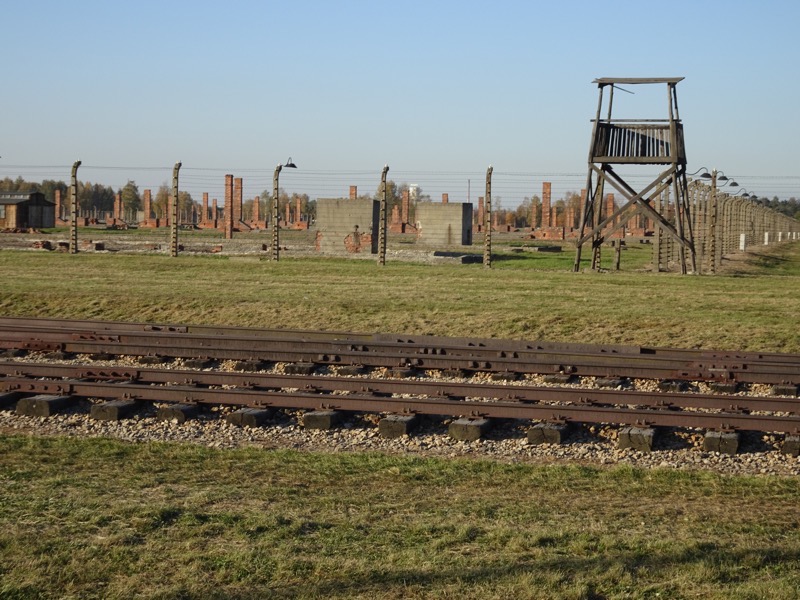
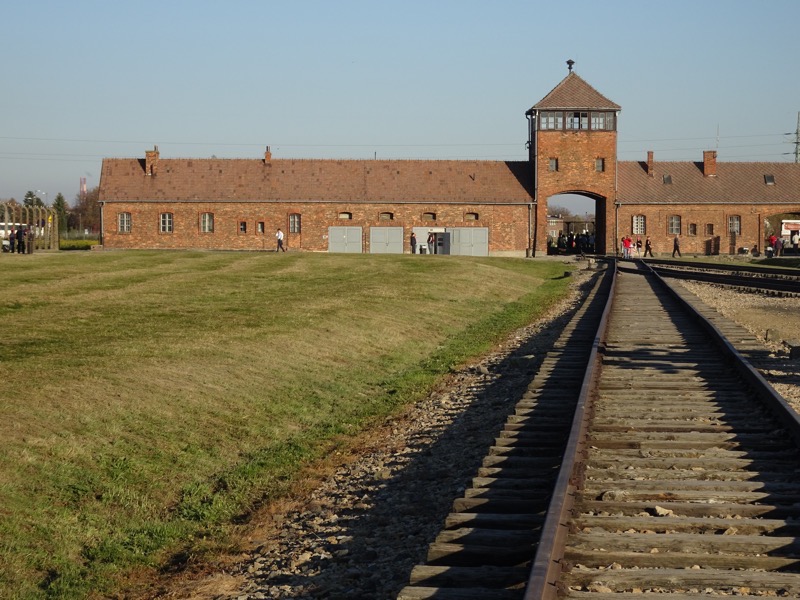
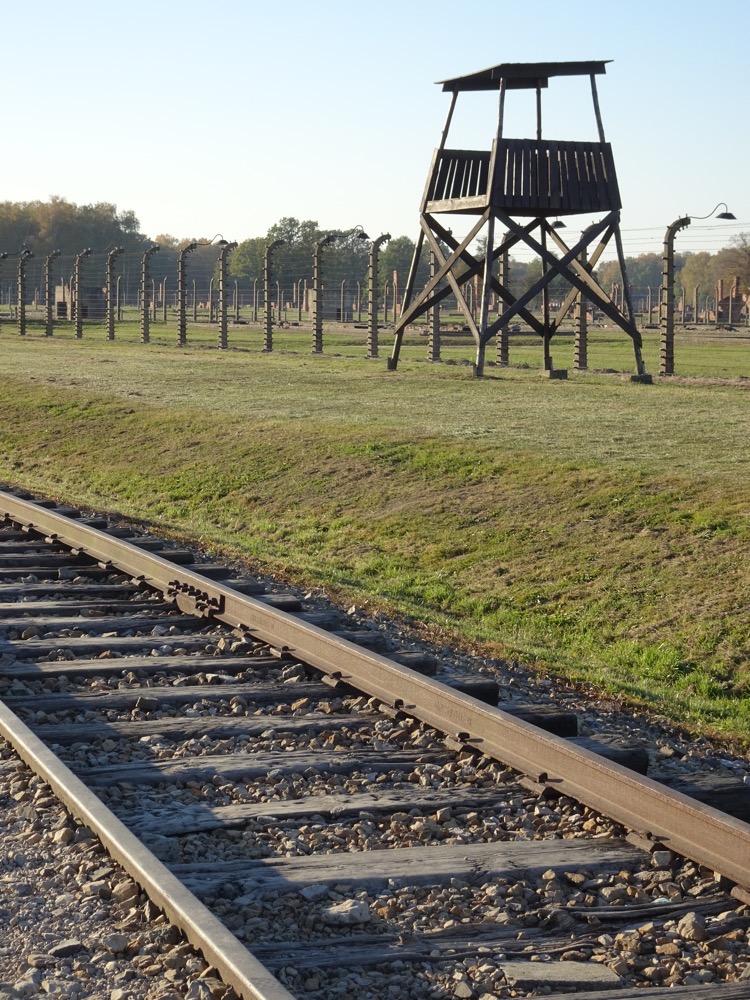 It was during this part of the tour that the sheer scale of the camp hits visitors hard. One hundred and eighty hectares of organised misery, degradation and for most, eventual death.
It was during this part of the tour that the sheer scale of the camp hits visitors hard. One hundred and eighty hectares of organised misery, degradation and for most, eventual death.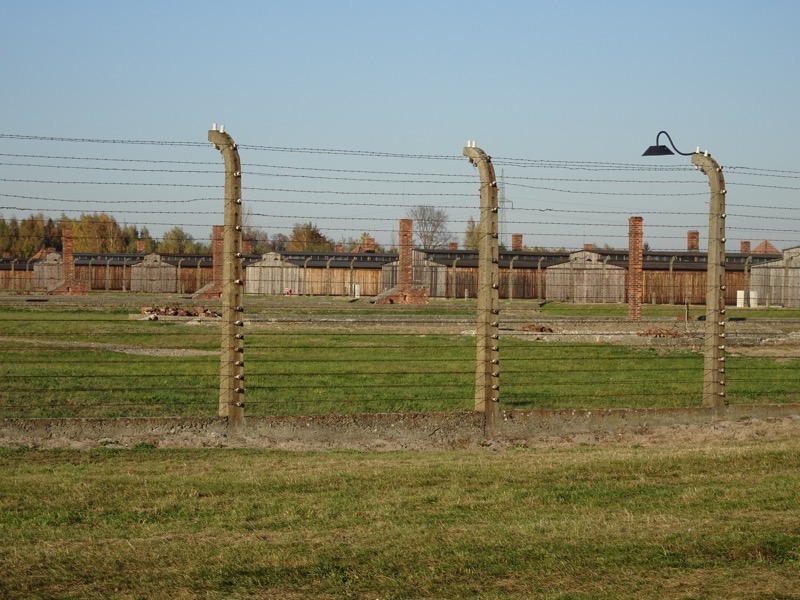 A replica of the railway cars which were used to transport most of the deportees to Auschwitz-Birkenau. Eighty to one hundred people were crammed into these cars for journeys lasting days with no food, no water and no toileting facilities. Tens of thousands of people arrived at the camp in cars just like this one.
A replica of the railway cars which were used to transport most of the deportees to Auschwitz-Birkenau. Eighty to one hundred people were crammed into these cars for journeys lasting days with no food, no water and no toileting facilities. Tens of thousands of people arrived at the camp in cars just like this one.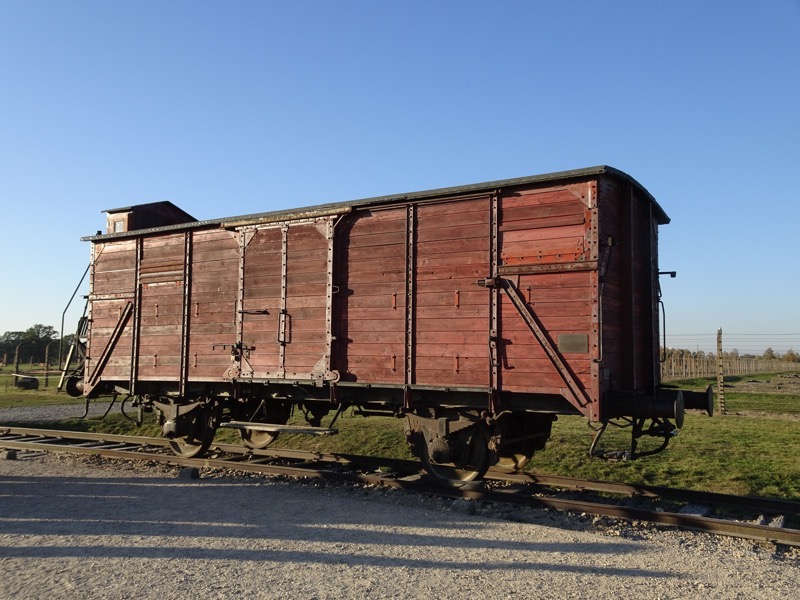 The further into the camp we walked, the size of the camp became more and more apparent.
The further into the camp we walked, the size of the camp became more and more apparent.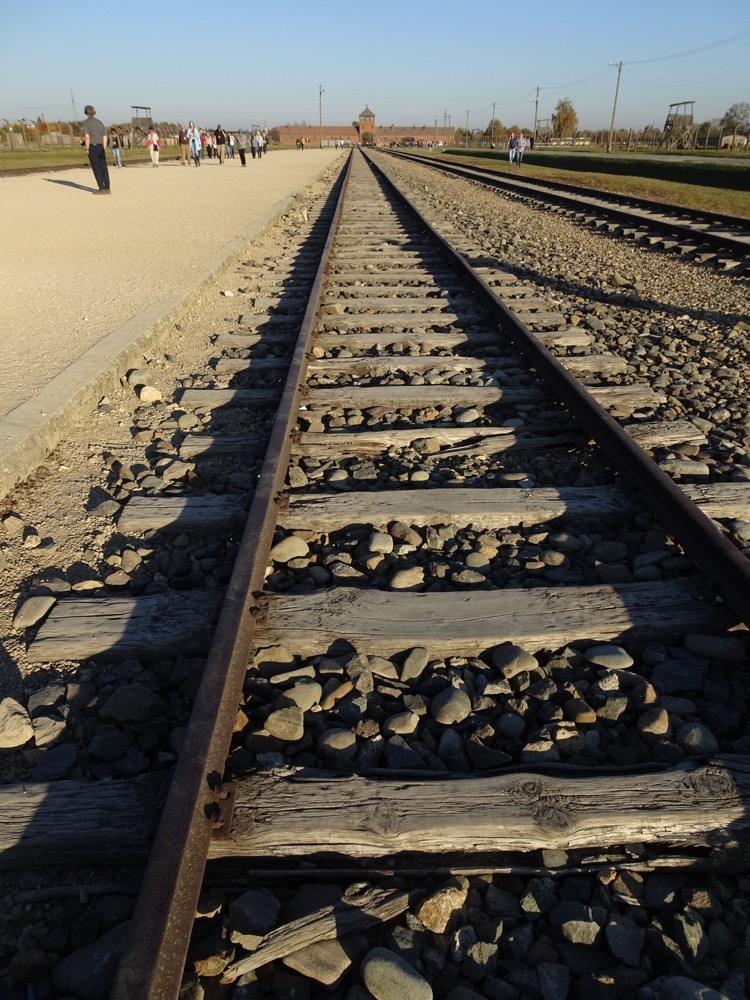
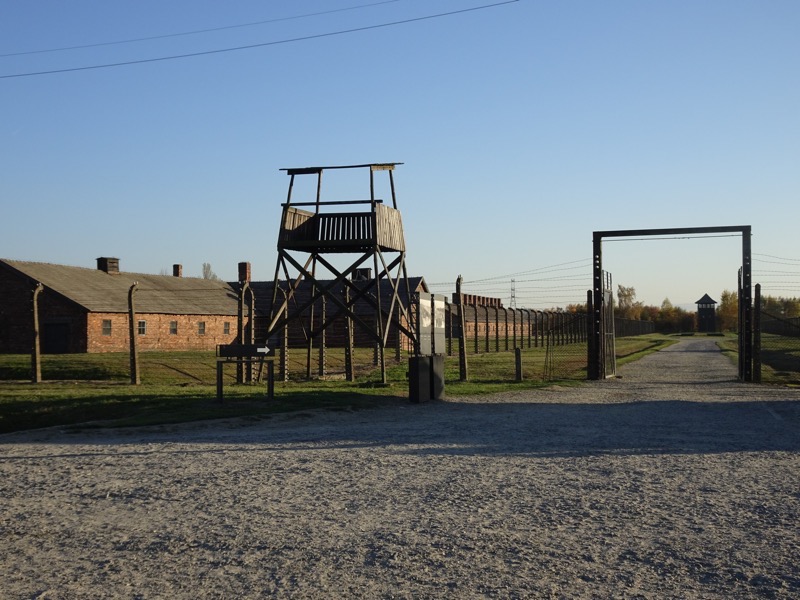
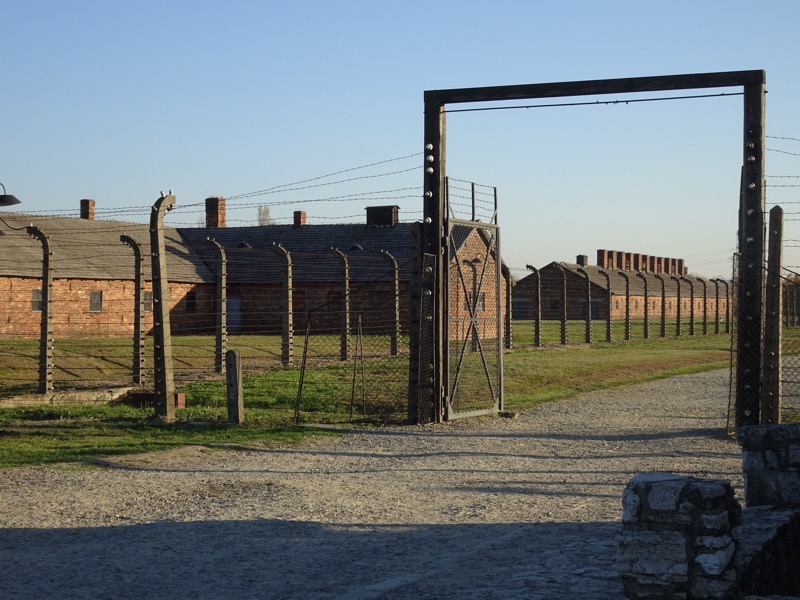 At the ramps at the end of the train tracks where the selection processes were carried out. Behind us is the massive L shaped gas chamber and industrial creamatoria complex.
At the ramps at the end of the train tracks where the selection processes were carried out. Behind us is the massive L shaped gas chamber and industrial creamatoria complex.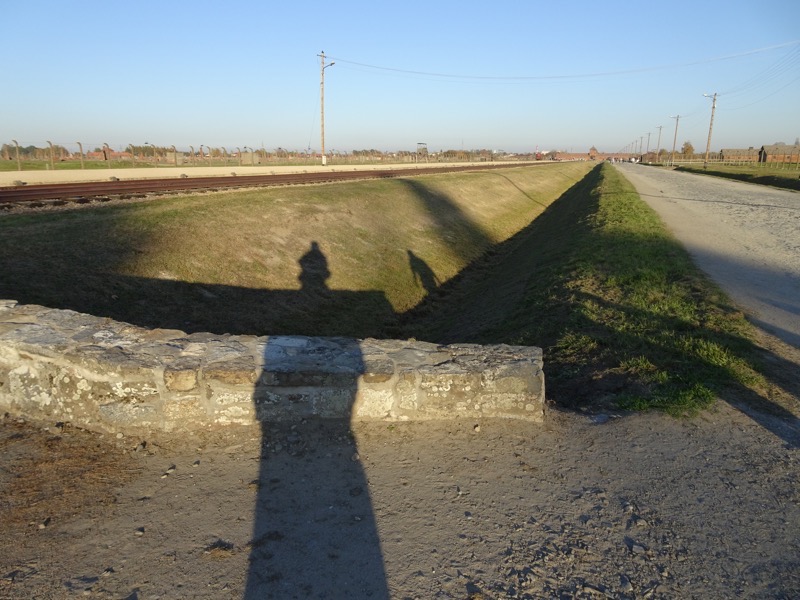 The underground undressing chamber. Destroyed by departing Nazis as the end of the war became a certainty.
The underground undressing chamber. Destroyed by departing Nazis as the end of the war became a certainty.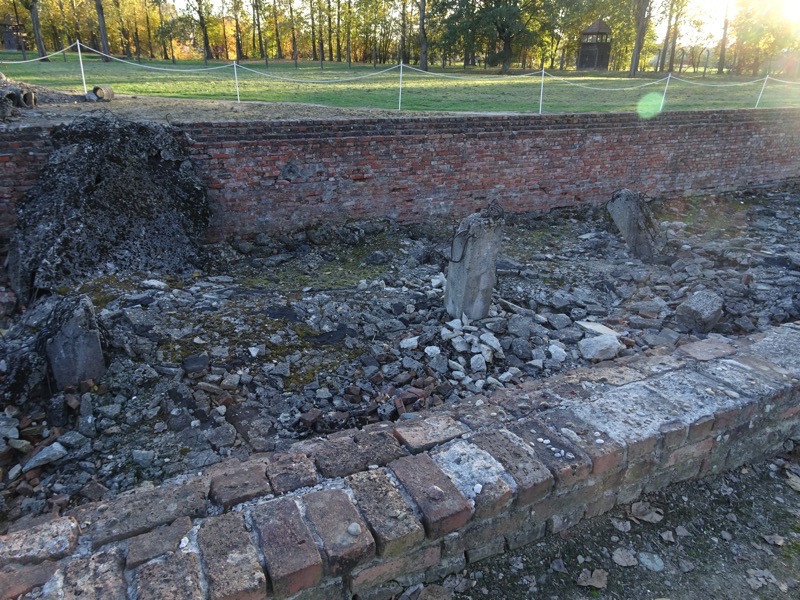 The collapsed roof of the gas chambers:
The collapsed roof of the gas chambers: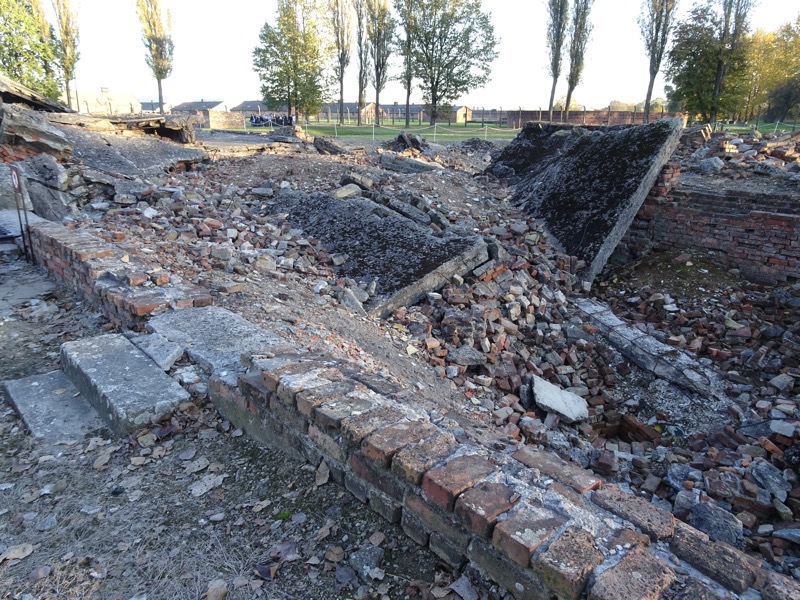
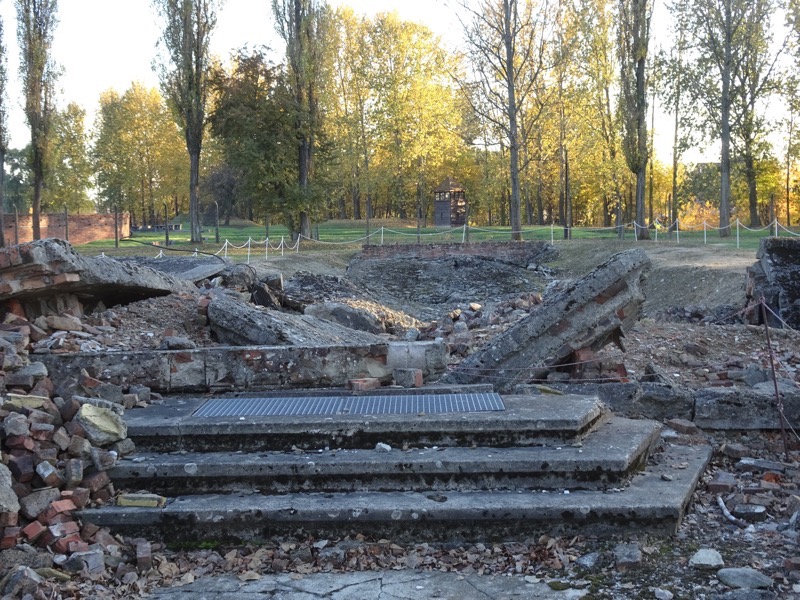 The ruins of the cremation ovens:
The ruins of the cremation ovens: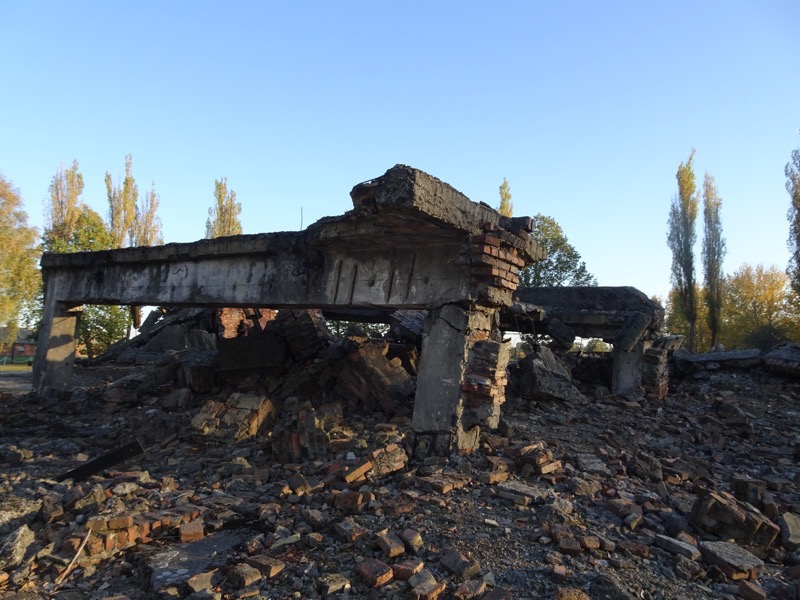 Much of the terrible work carried out in the mass extermination of the Jewish population was Sonderkommandos. The Sonderkommandos were a work detail made up of prisoners from the death camp. They were not civilian workers but were prisoners – usually Jewish – who were forced to work and aid in the management of victims, the looting of the bodies, and the disposal of the corpses in the gas chambers during the Holocaust. They were forced to complete this gruesome work or be killed themselves.
Much of the terrible work carried out in the mass extermination of the Jewish population was Sonderkommandos. The Sonderkommandos were a work detail made up of prisoners from the death camp. They were not civilian workers but were prisoners – usually Jewish – who were forced to work and aid in the management of victims, the looting of the bodies, and the disposal of the corpses in the gas chambers during the Holocaust. They were forced to complete this gruesome work or be killed themselves. 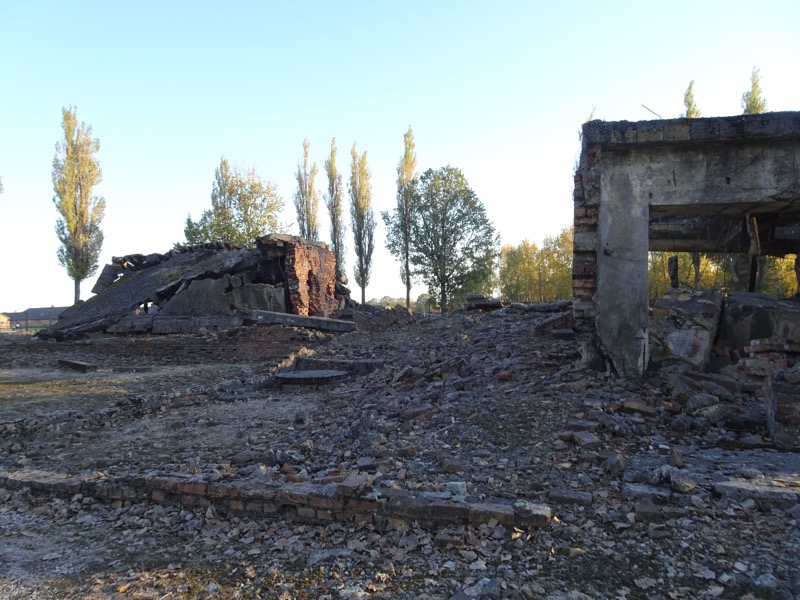
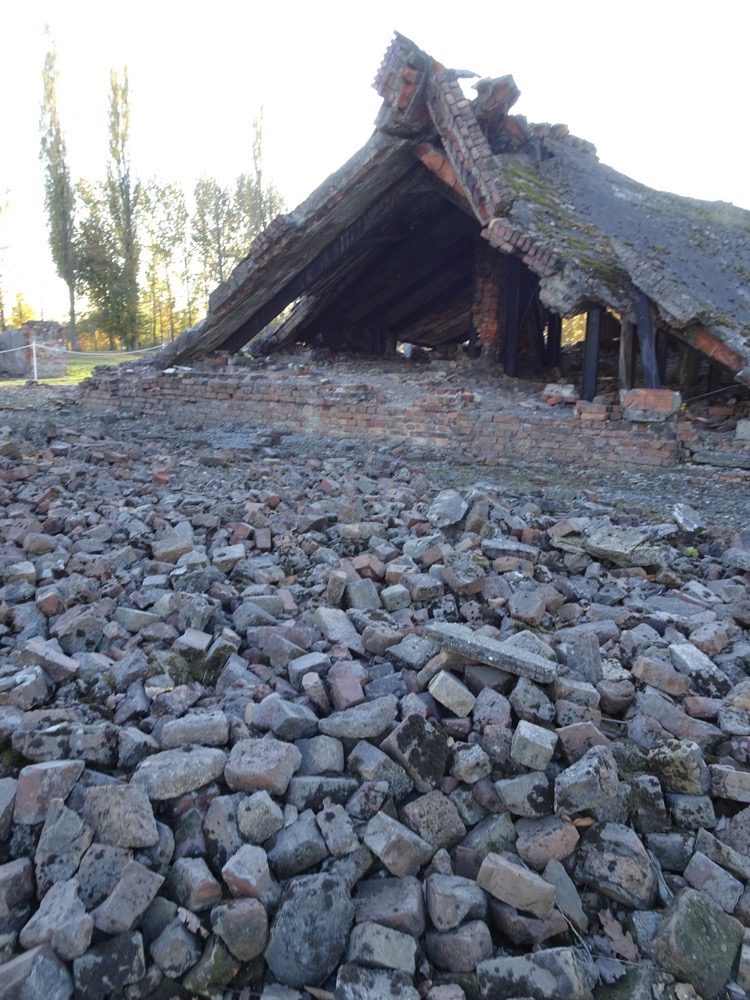
Red brick barracks made from building materials repurposed from the villages that were destroyed to make way for the camp: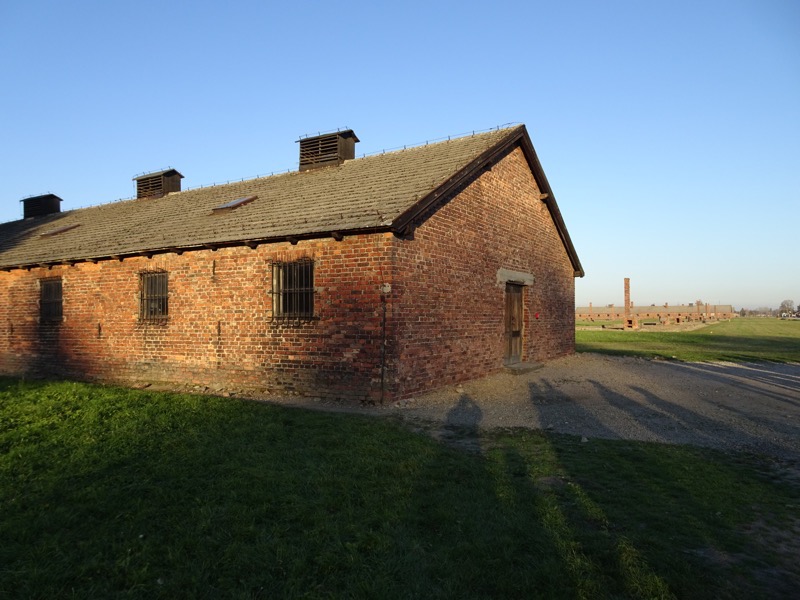
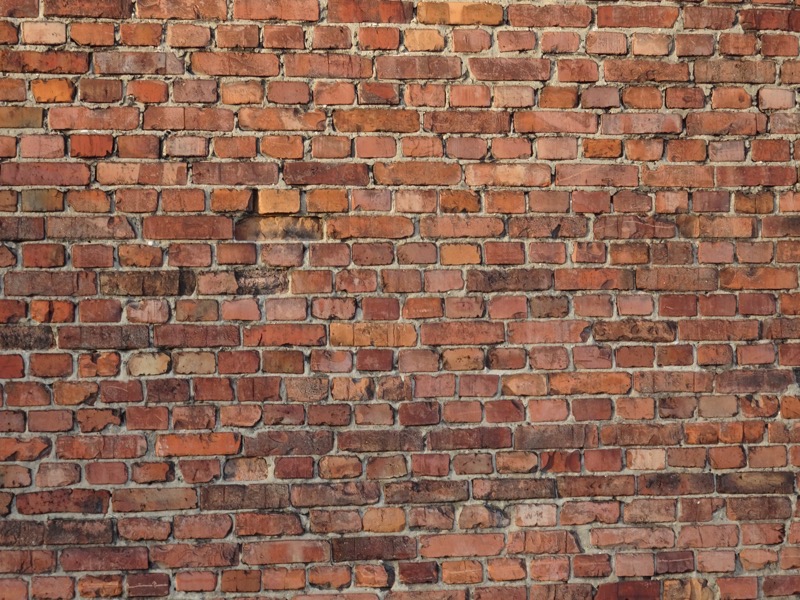
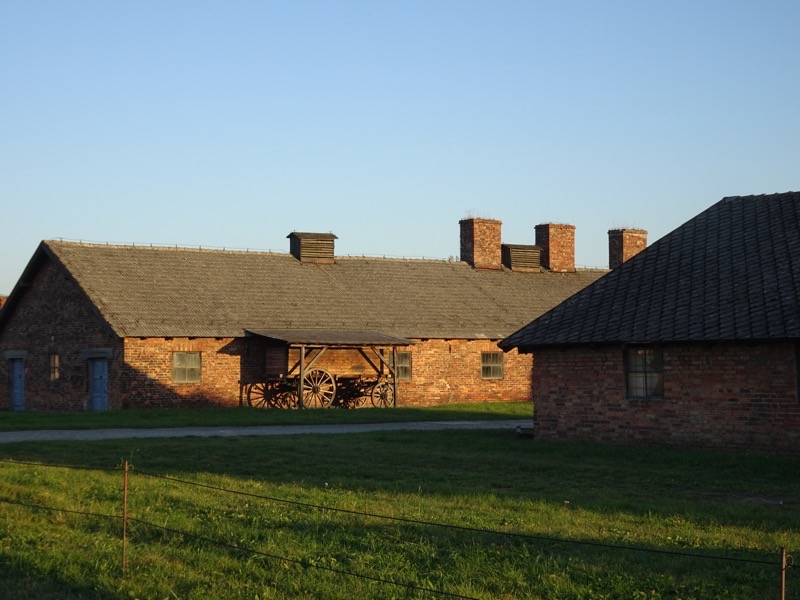
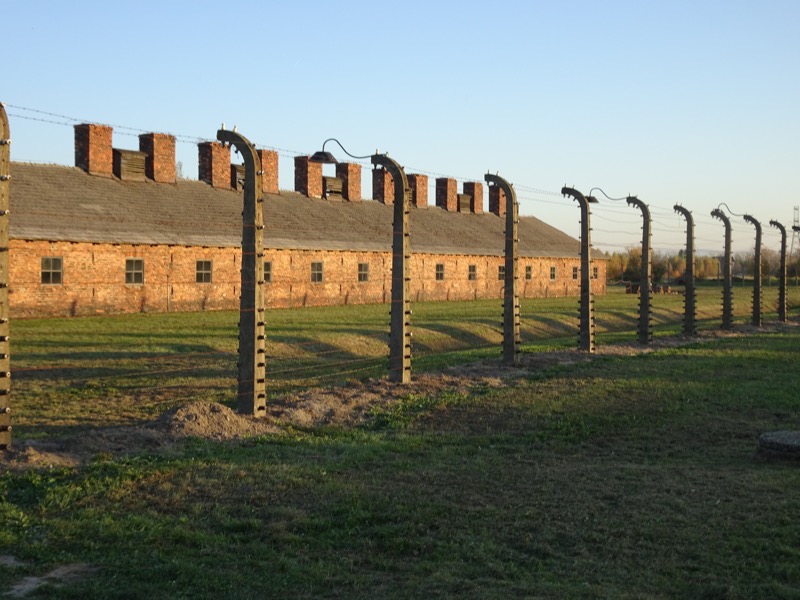 Inside Barracks 16A. ‘Beds’, such as they were, were three stories high and housed four to five people in each space. Necessary for warmth in winter but swelteringly uncomfortable and unsanitary in summer.
Inside Barracks 16A. ‘Beds’, such as they were, were three stories high and housed four to five people in each space. Necessary for warmth in winter but swelteringly uncomfortable and unsanitary in summer. There were no washing facilities in the buildings. Any bathing had to occur outside.
There were no washing facilities in the buildings. Any bathing had to occur outside.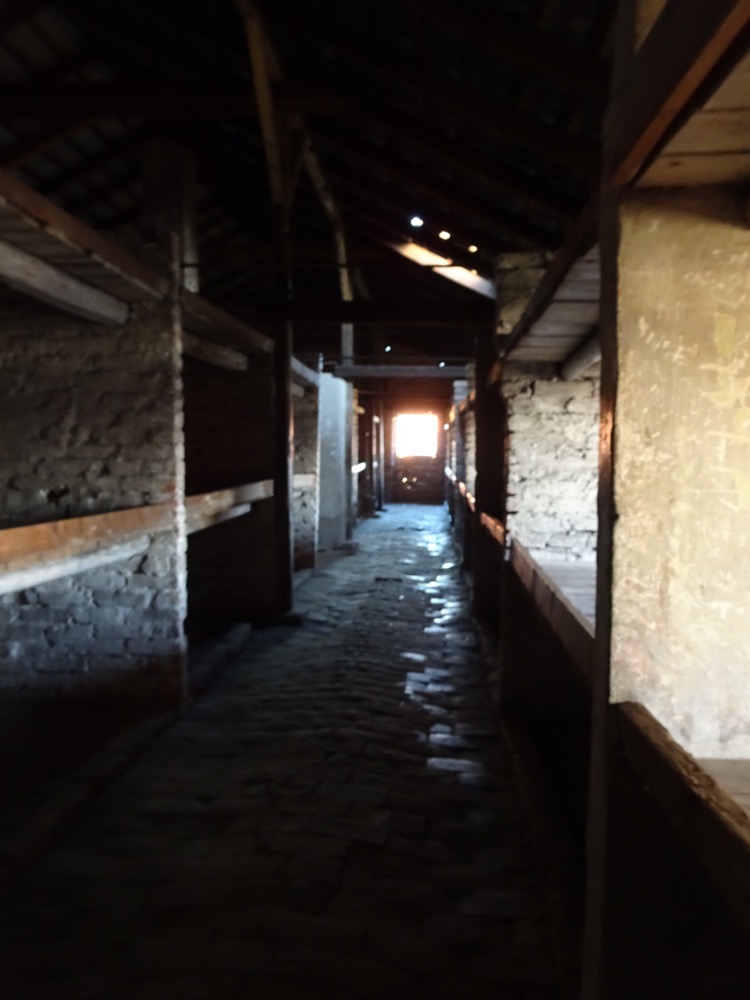
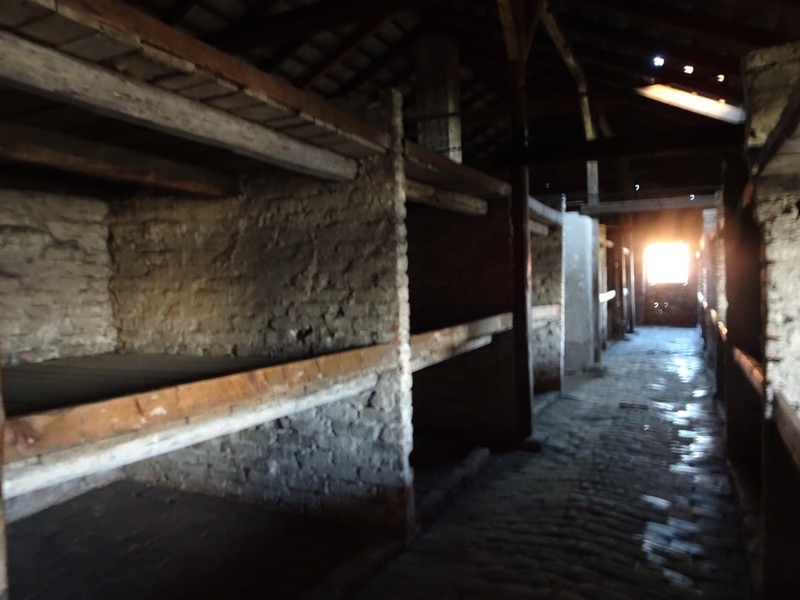
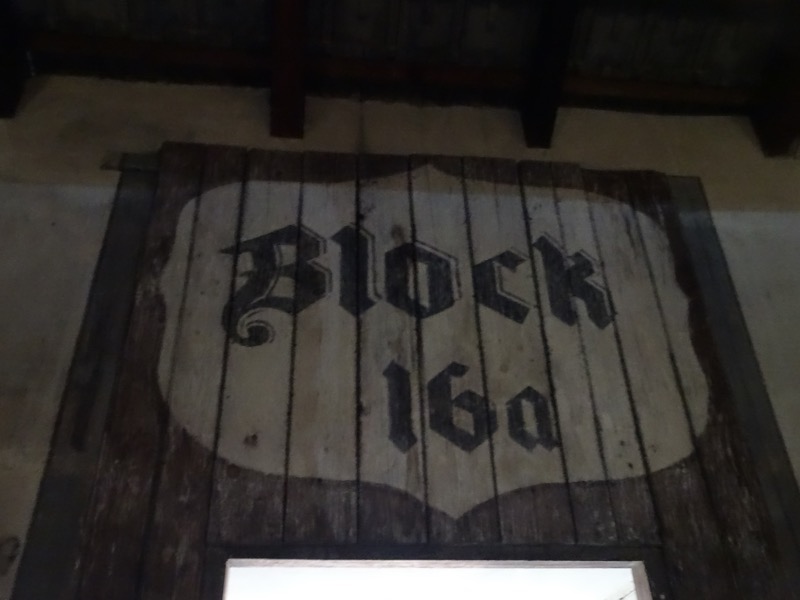 There is much more that could be said about Auschwitz-Birkenau, and there are incalculable books on the topic that adequately demonstrate that. But there is little that captures the feeling of being here and physically taking in this history in person.
There is much more that could be said about Auschwitz-Birkenau, and there are incalculable books on the topic that adequately demonstrate that. But there is little that captures the feeling of being here and physically taking in this history in person.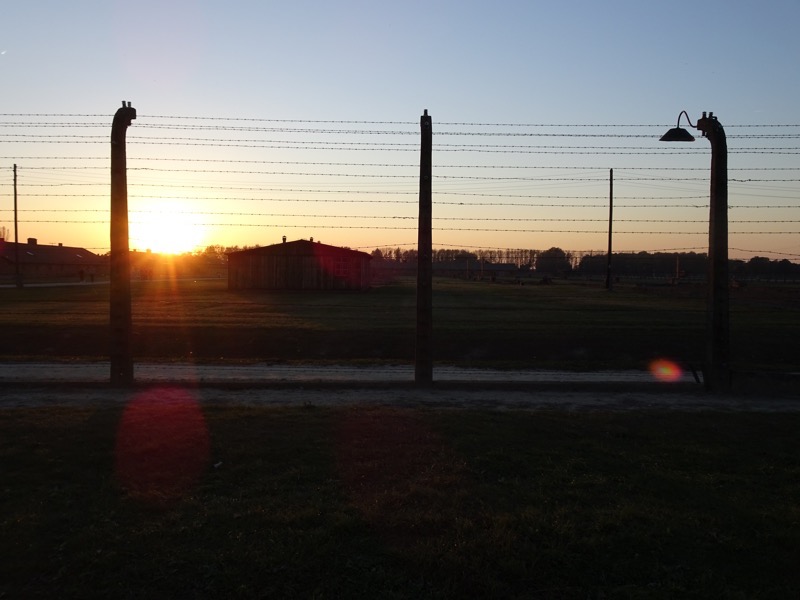
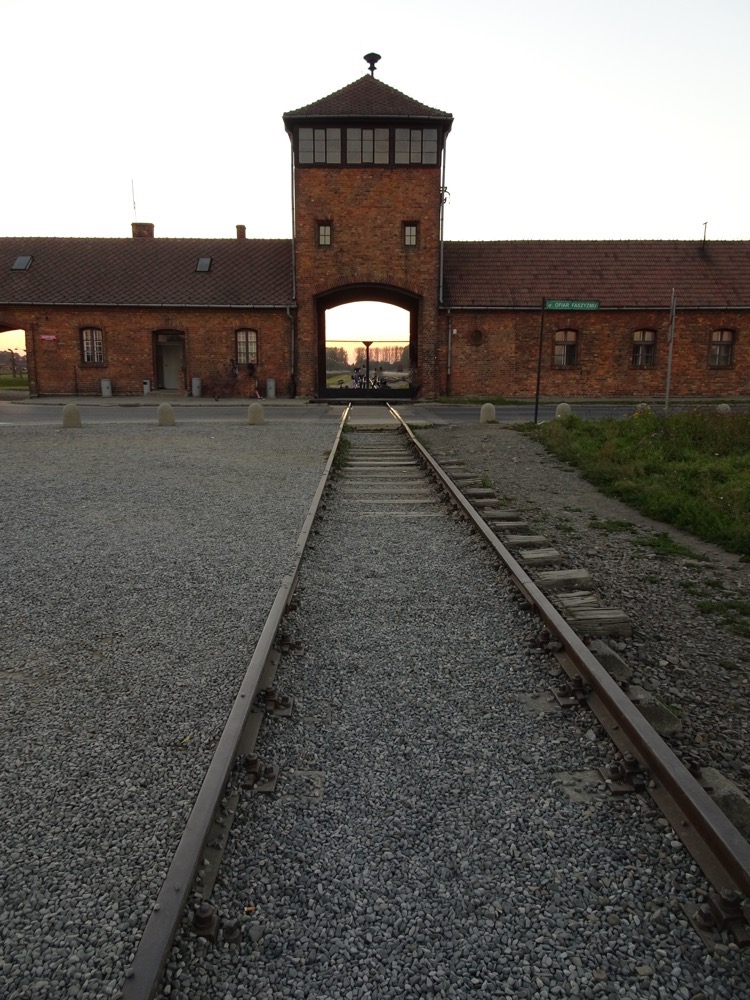 As I was saying to Marta, I don’t remember a time in my life where I learned about the atrocities committed by the Nazis during WWI. I don’t remember gleaning this knowledge for the first time and being shocked and appalled by the inhumanity of it. I grew up seemingly always aware of Hitler, of Nazism, of the concentration camps almost by osmosis. The knowledge I always had merely grown in depth and detail as I got older… but having said this, I feel much like I didn’t really understand the extent of the horrors committed here until today. The scale of the brutality is unimaginable until you are faced with it.
As I was saying to Marta, I don’t remember a time in my life where I learned about the atrocities committed by the Nazis during WWI. I don’t remember gleaning this knowledge for the first time and being shocked and appalled by the inhumanity of it. I grew up seemingly always aware of Hitler, of Nazism, of the concentration camps almost by osmosis. The knowledge I always had merely grown in depth and detail as I got older… but having said this, I feel much like I didn’t really understand the extent of the horrors committed here until today. The scale of the brutality is unimaginable until you are faced with it.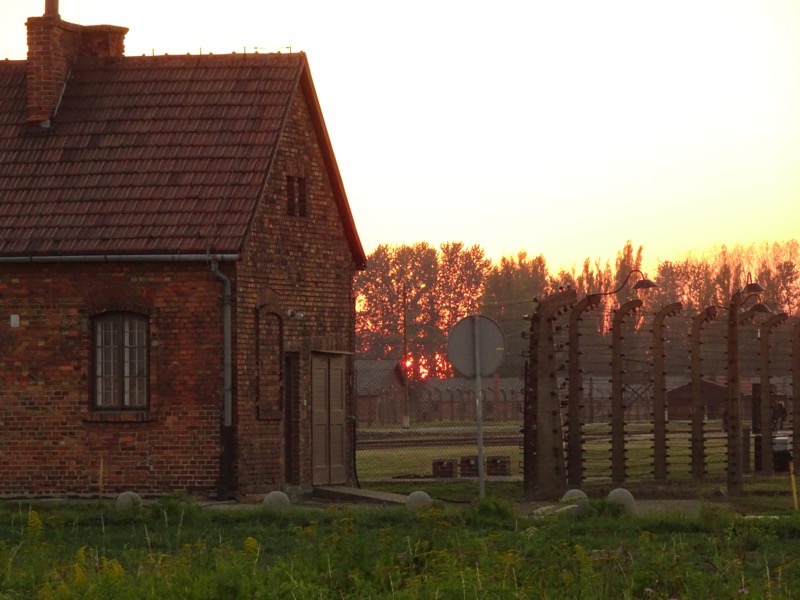 “The last thing to die is hope…”
“The last thing to die is hope…”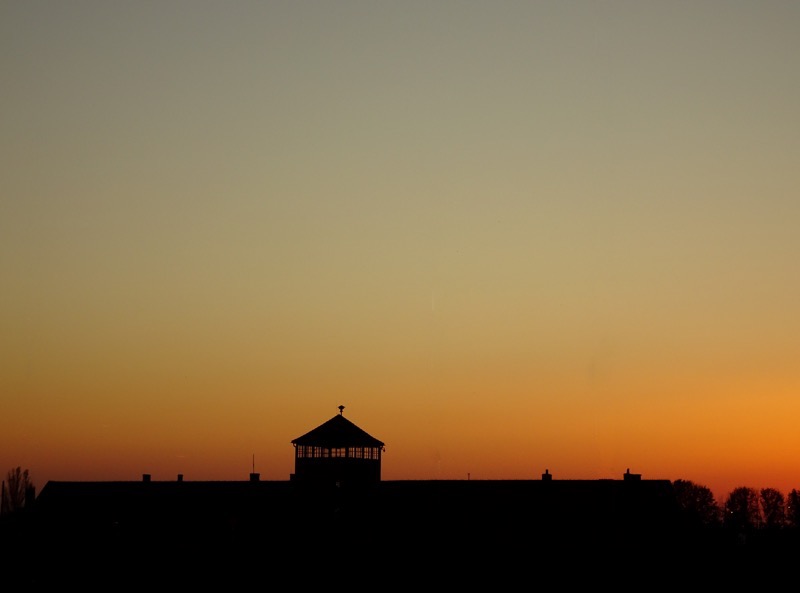
I have had to put this post aside several times as writing this all down and compiling these images have been exhausting. After we drove back to Krakow, we went hunting for something a bit more uplifting to finish the day. We found it in the form of a quaint and quirky little restaurant in the Jewish Quarter called, “Once Upon a Time in Kazimierz”. There was live music and great local food on the menu – exactly what we could have hoped for.
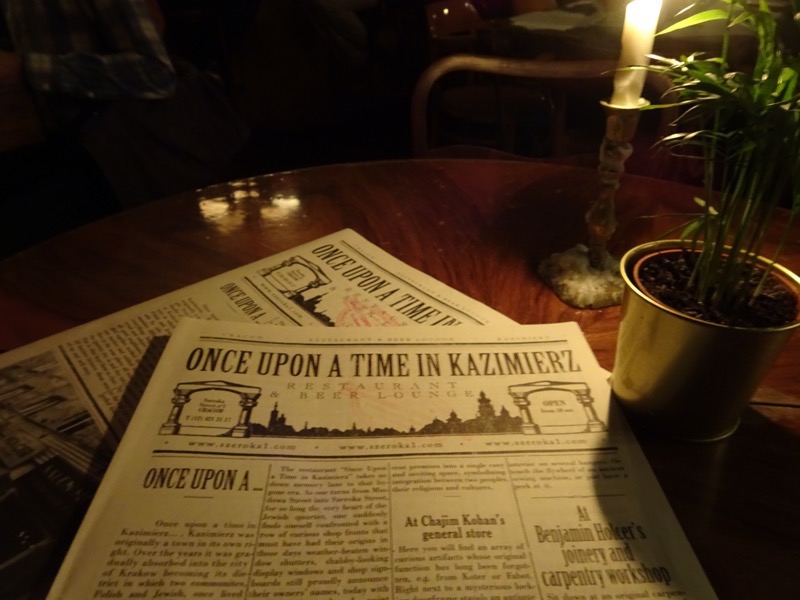 Weird and wonderful decor – one couple found themselves seated at a table that was actually an old treadle sewing machine.
Weird and wonderful decor – one couple found themselves seated at a table that was actually an old treadle sewing machine.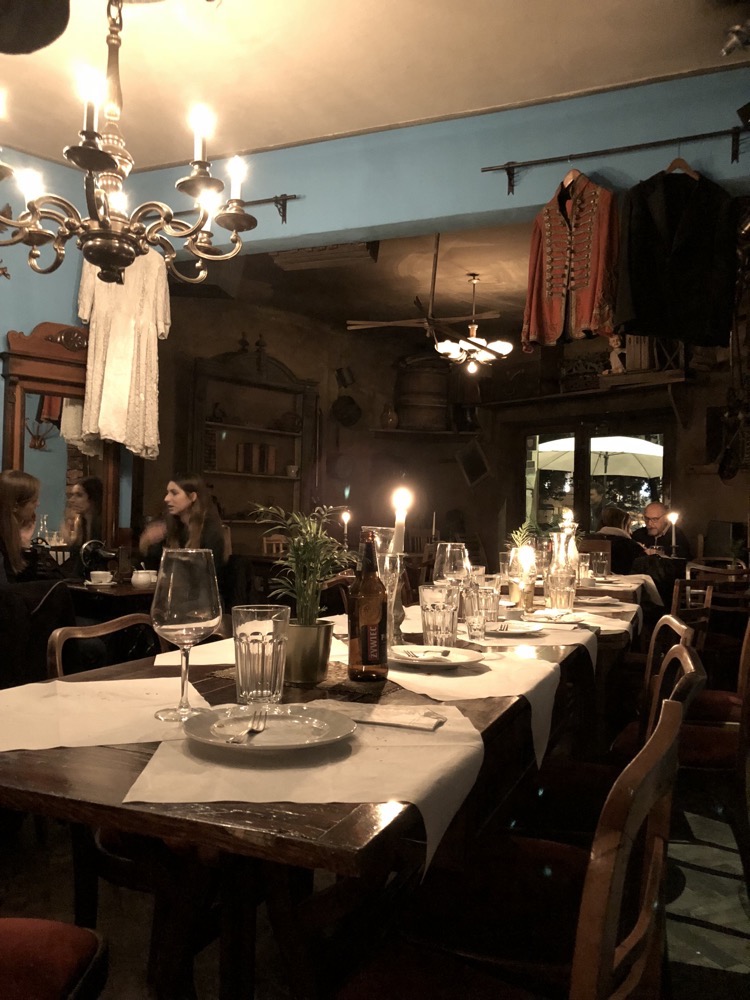 Jewish Caviar – chopped chicken livers with eggs in truffle aroma, served with rye bread and whipped butter.
Jewish Caviar – chopped chicken livers with eggs in truffle aroma, served with rye bread and whipped butter.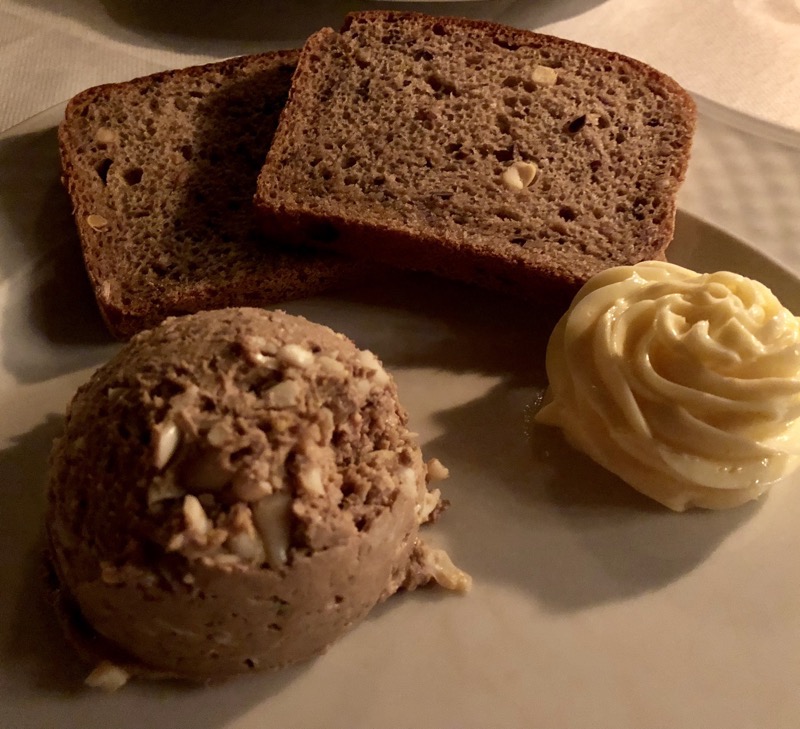 Beef and thyme pierogi, half and half (friend and boiled).
Beef and thyme pierogi, half and half (friend and boiled). Fillet of trout with vegetables in orange butter sauce (zucchini, leek and carrot).
Fillet of trout with vegetables in orange butter sauce (zucchini, leek and carrot).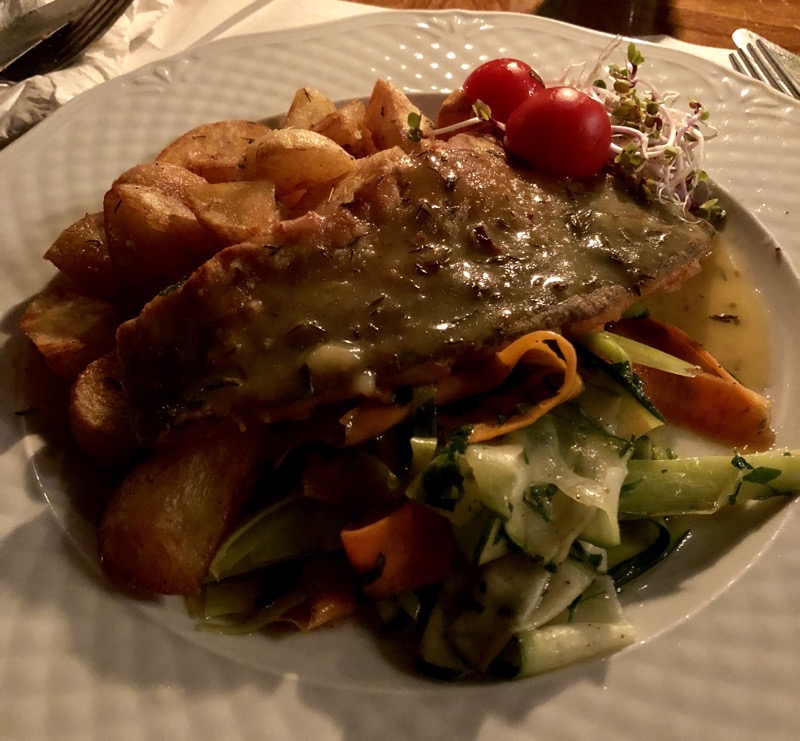 Jerusalem mix – chicken breast, liver, hearts in oriental spices and onion. Delicious!
Jerusalem mix – chicken breast, liver, hearts in oriental spices and onion. Delicious!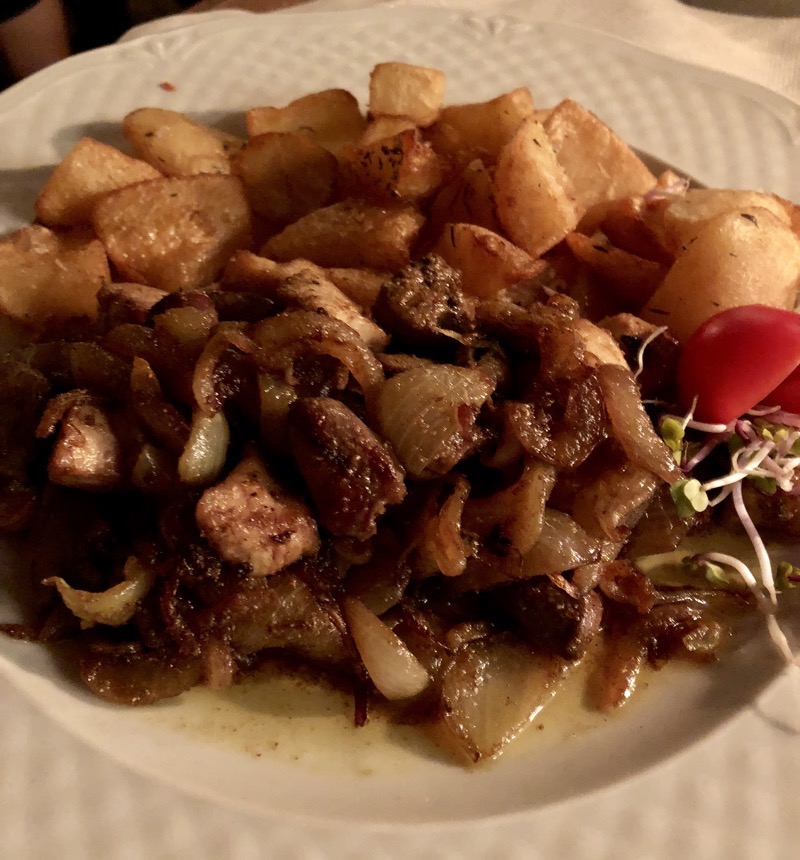 We were the last to leave the restaurant after a couple more ciders!
We were the last to leave the restaurant after a couple more ciders!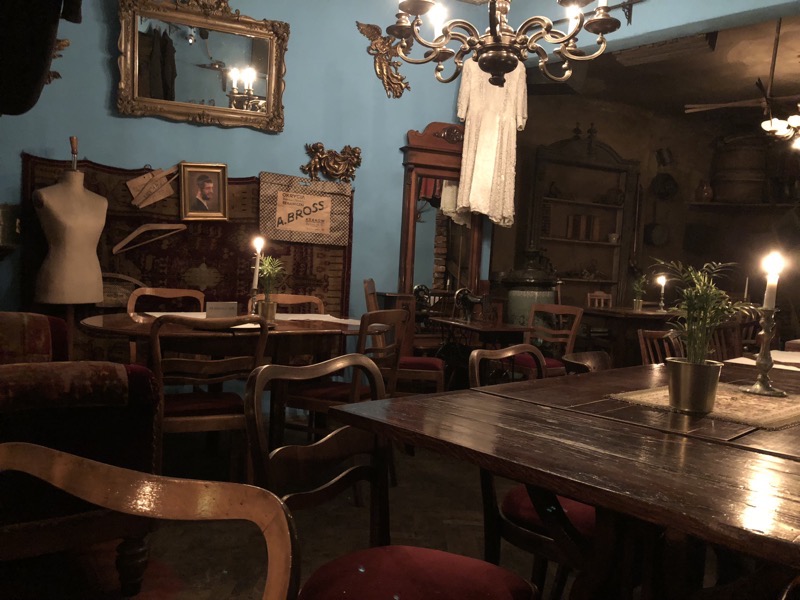 Dessert for yale: Pecan pie with vanilla ice cream:
Dessert for yale: Pecan pie with vanilla ice cream: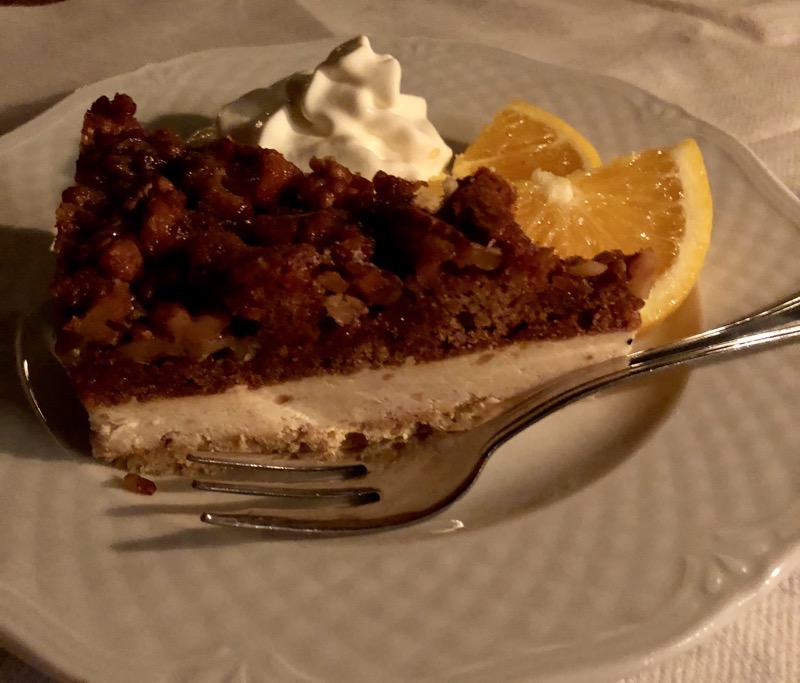 And for me – steaming mead.
And for me – steaming mead.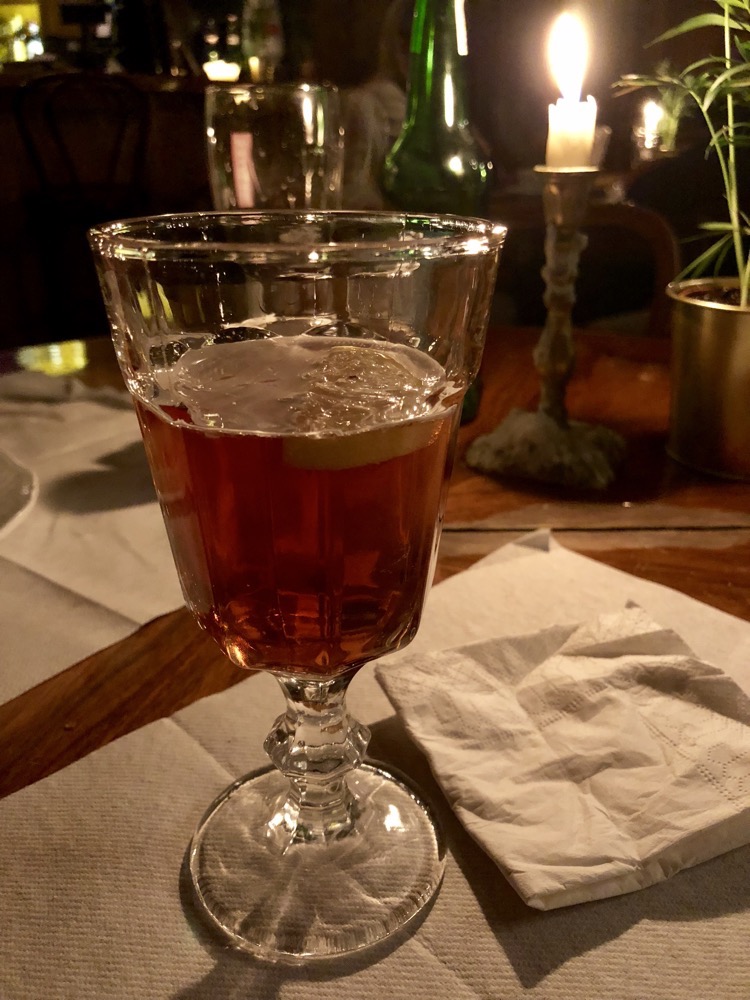 Long day. Need good sleep. Thankfully my, “can I speak to the manager” chat with the night conceirge guy has yielded a different room in the hotel with a better bed. Fingers crossed!
Long day. Need good sleep. Thankfully my, “can I speak to the manager” chat with the night conceirge guy has yielded a different room in the hotel with a better bed. Fingers crossed!
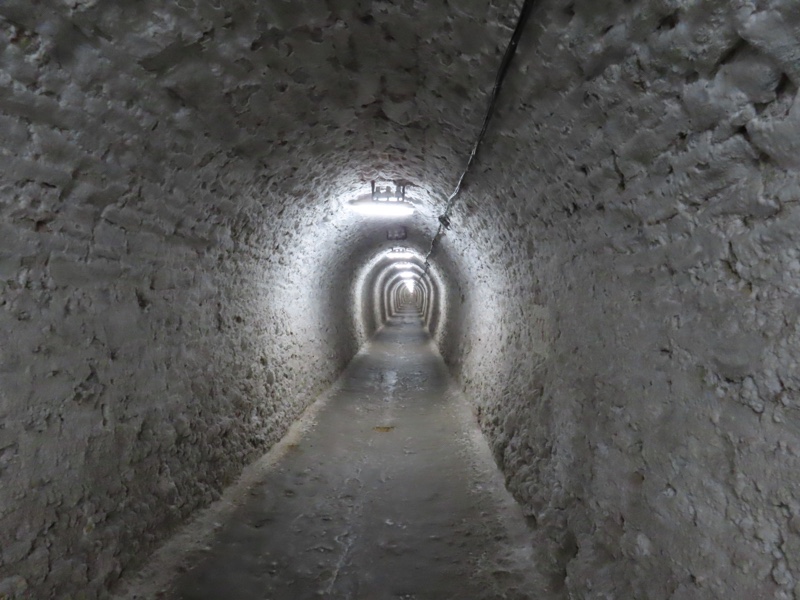
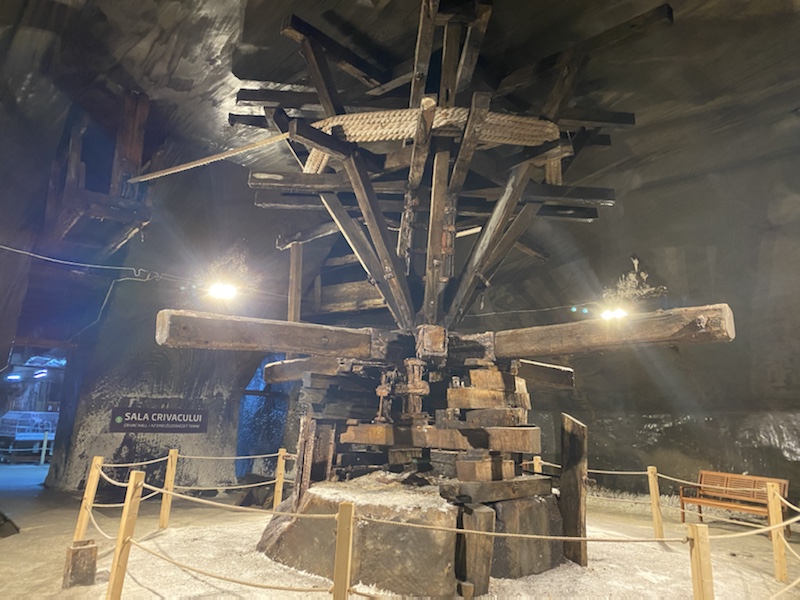
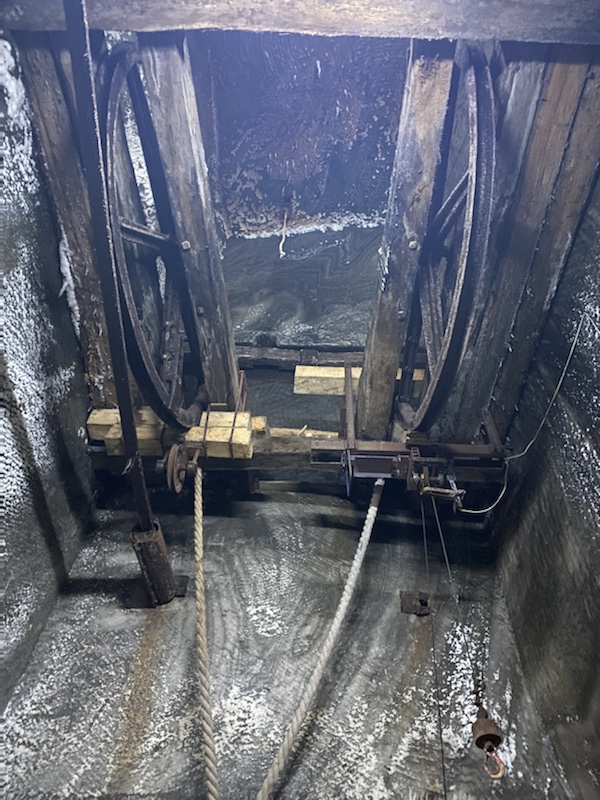 .
.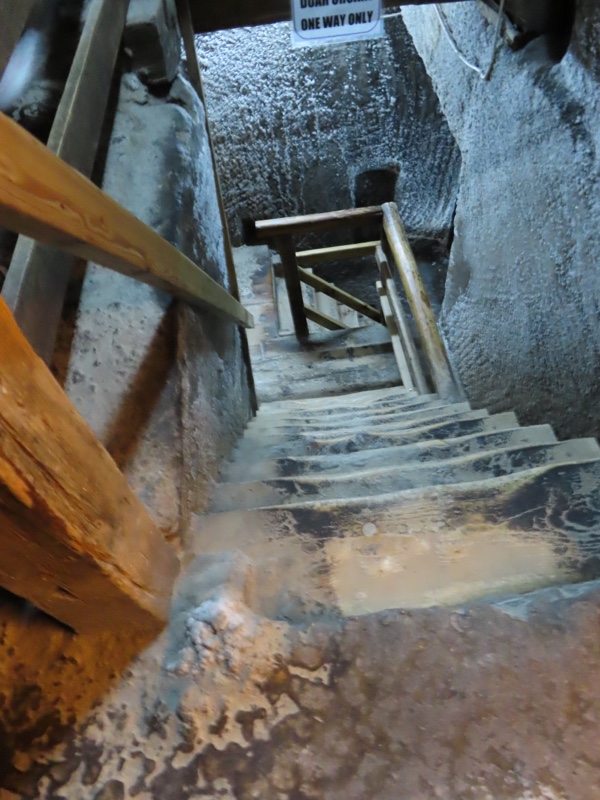
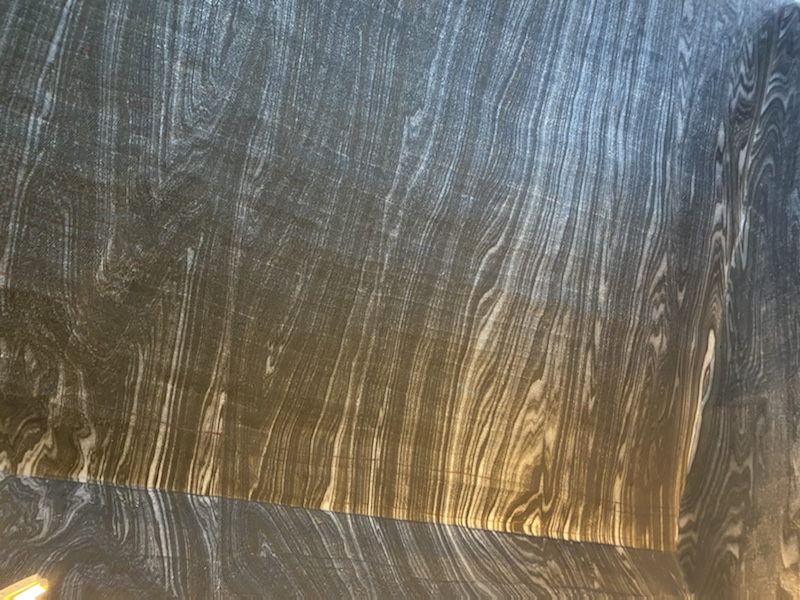 From the access tunnels, you traverse down some flights of steps to the Franz Joseph Gallery (I can’t see the words Franz Joseph ever written without hearing a thickly accented Austrian art gallery guide at the Kunsthistoiriches also mentioning the Empress Maria Terr-issa!) The steps are old and odd heights and not for the long of foot.
From the access tunnels, you traverse down some flights of steps to the Franz Joseph Gallery (I can’t see the words Franz Joseph ever written without hearing a thickly accented Austrian art gallery guide at the Kunsthistoiriches also mentioning the Empress Maria Terr-issa!) The steps are old and odd heights and not for the long of foot. 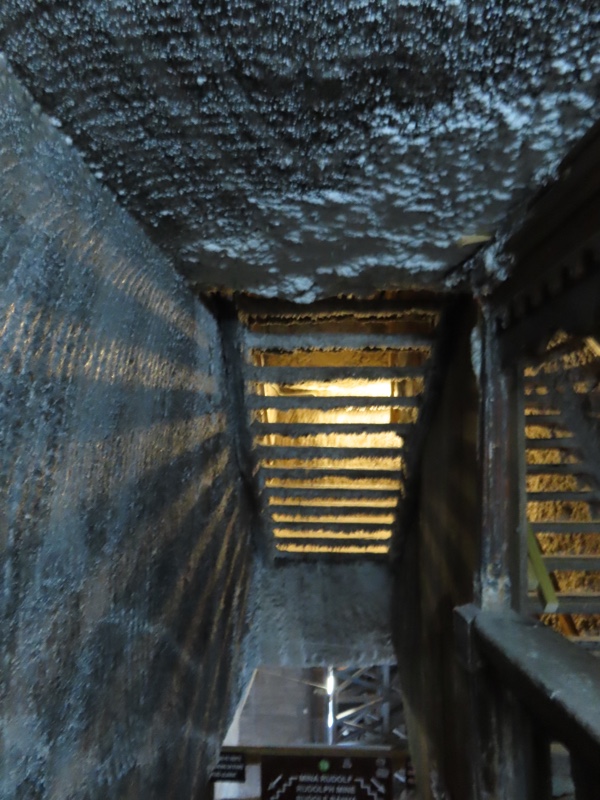 This is a conical mine (bell mine). Salt mining in this type of room left behind underground halls of impressive dimensions: 90 metres (300 ft) height and 87 metres (285 ft) diameter. The depth from the mouth of the shafts to the base of the mine is 112 metres (367 ft). A “cascade of salt”, an underground lake, stalactites, and salt efflorescences complete the inert equilibrium of the giant bell. The underground lake is between 0.5 and 8 metres (1.6 and 26.2 ft) deep and occupies about 80 percent of the operating room hearth area. In the center of the lake there is an island formed from residual low-grade salt deposited until the late 19th C.
This is a conical mine (bell mine). Salt mining in this type of room left behind underground halls of impressive dimensions: 90 metres (300 ft) height and 87 metres (285 ft) diameter. The depth from the mouth of the shafts to the base of the mine is 112 metres (367 ft). A “cascade of salt”, an underground lake, stalactites, and salt efflorescences complete the inert equilibrium of the giant bell. The underground lake is between 0.5 and 8 metres (1.6 and 26.2 ft) deep and occupies about 80 percent of the operating room hearth area. In the center of the lake there is an island formed from residual low-grade salt deposited until the late 19th C. 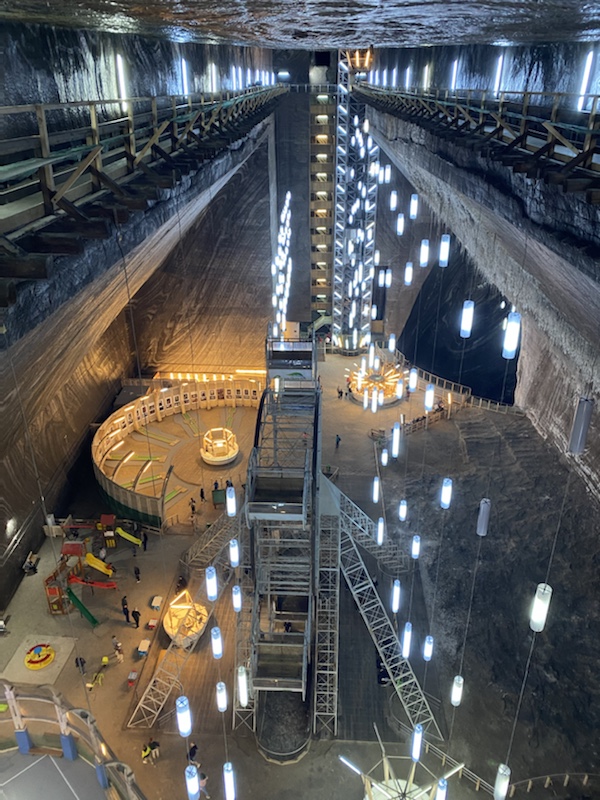
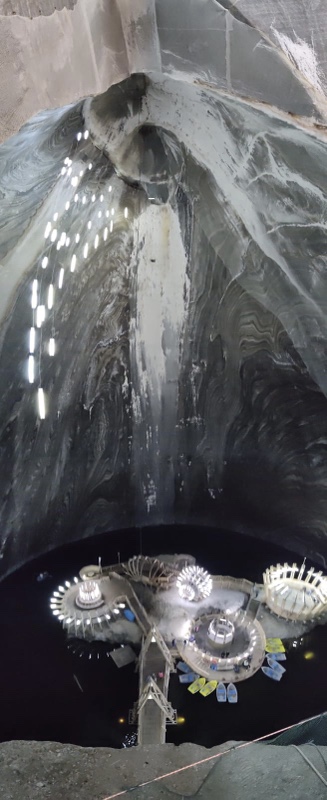
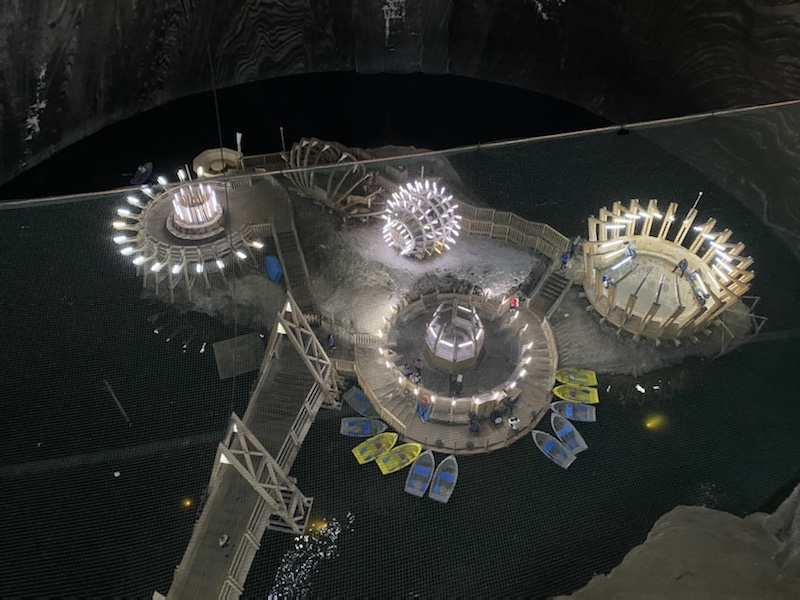
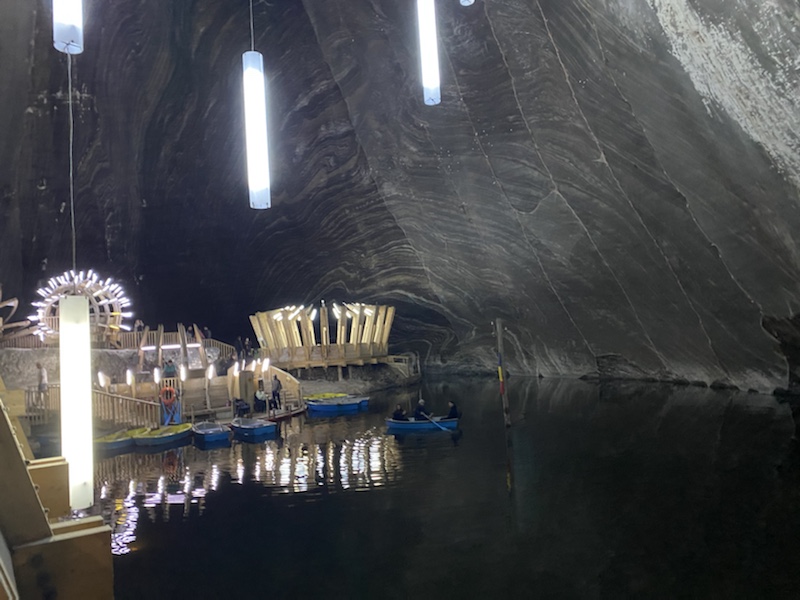 There is even a Ferris wheel down here, an art gallery, a cafe and a gift shop (of course!)
There is even a Ferris wheel down here, an art gallery, a cafe and a gift shop (of course!)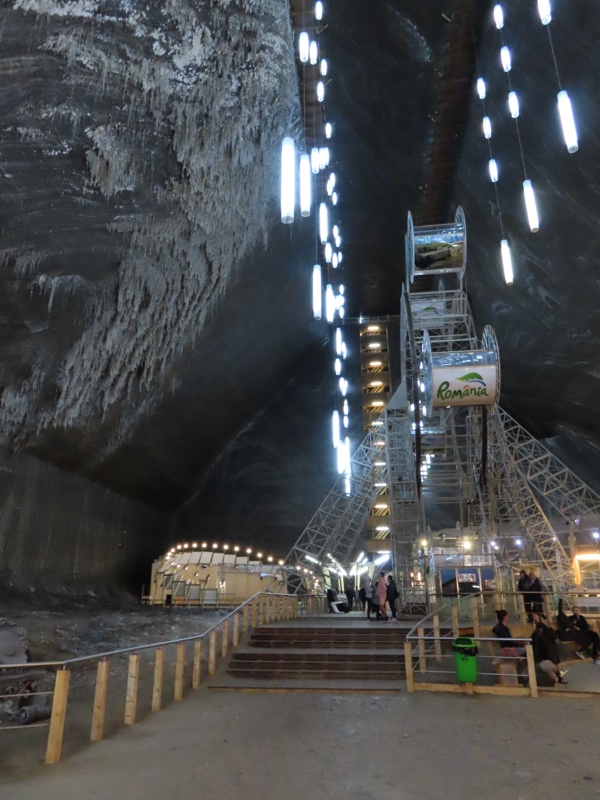
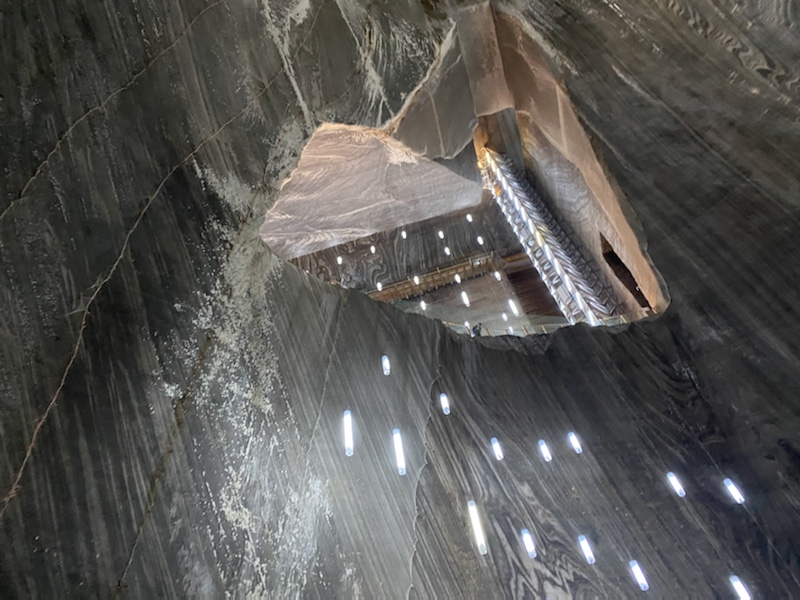
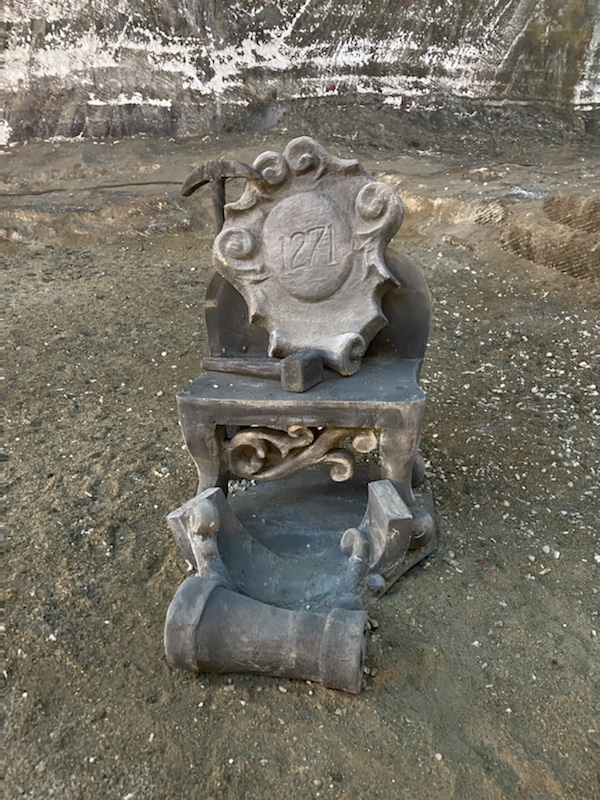 Thankfully there is also a lift / elevator – if you do find the stairs difficult (and ffs when there is 187 of them, who doesn’t?) you can wait in line for the lift. The lift takes about 35 seconds to get from bottom to top and vice versa and fits only 7 people at a time, so during busy times you could have quite a wait. Thankfully for us, it wasn’t particularly busy this morning and the wait was barely two minutes. There is no mention on Trip Advisor or the website or any bloody google-able page as the existence of this lift… it’s kinda alluded to, but in a ‘you might be able to use it?’ kinda way. So it wasn’t until we got here that I discovered I’d actually be able to go in.
Thankfully there is also a lift / elevator – if you do find the stairs difficult (and ffs when there is 187 of them, who doesn’t?) you can wait in line for the lift. The lift takes about 35 seconds to get from bottom to top and vice versa and fits only 7 people at a time, so during busy times you could have quite a wait. Thankfully for us, it wasn’t particularly busy this morning and the wait was barely two minutes. There is no mention on Trip Advisor or the website or any bloody google-able page as the existence of this lift… it’s kinda alluded to, but in a ‘you might be able to use it?’ kinda way. So it wasn’t until we got here that I discovered I’d actually be able to go in.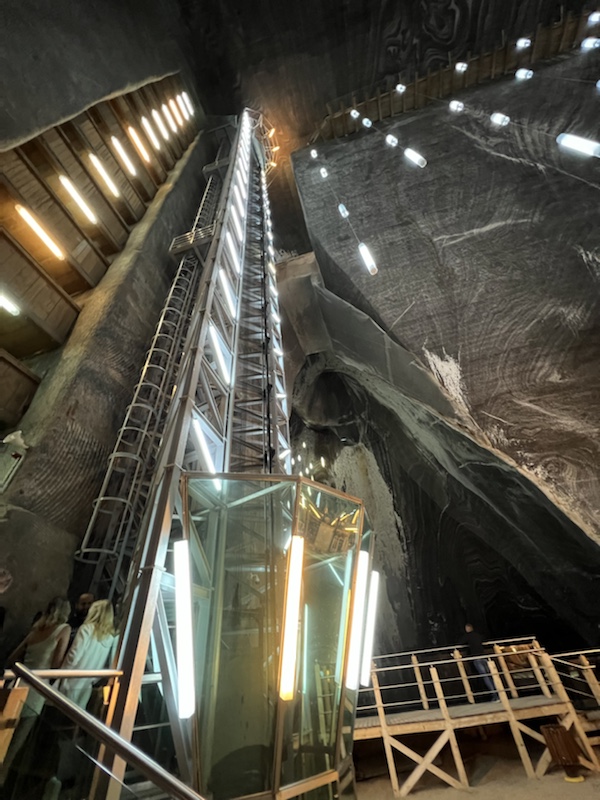
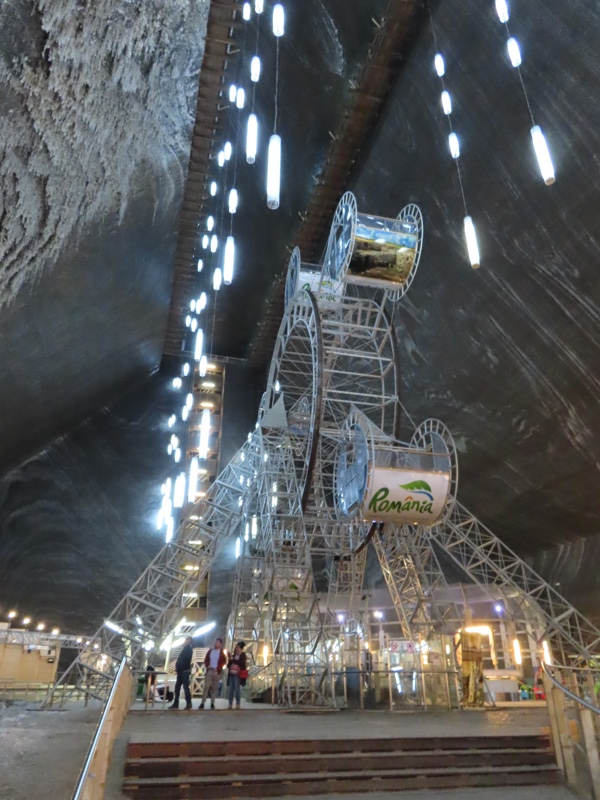 It’s hard to get a feel for the vast size of this space. The enormous Rudolf Mine is 42 metres deep, 50 metres wide, and 80 metres long. It is the last place in the mine where salt was extracted in Turda. Rudolf mine is the last place where salt was mined in Turda.
It’s hard to get a feel for the vast size of this space. The enormous Rudolf Mine is 42 metres deep, 50 metres wide, and 80 metres long. It is the last place in the mine where salt was extracted in Turda. Rudolf mine is the last place where salt was mined in Turda. 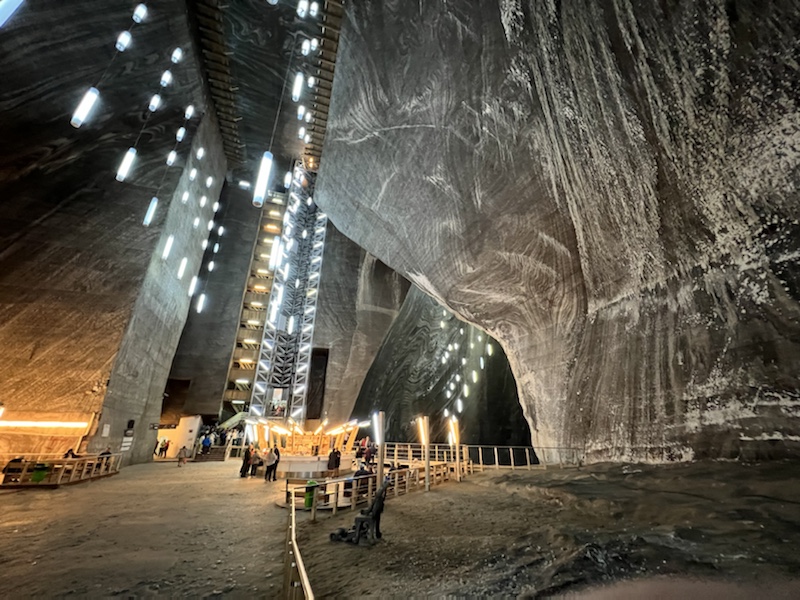
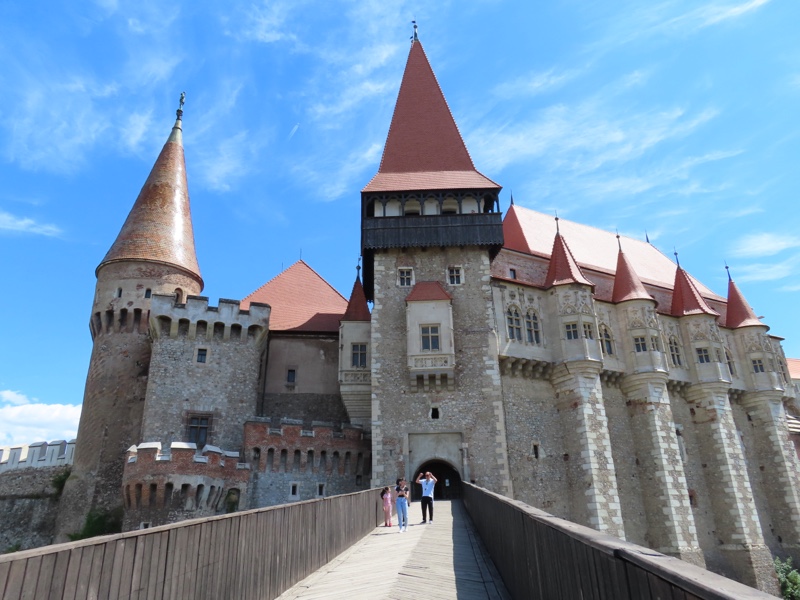 It sure looks pretty – pretty fantastical that is. The castle was originally designed for this site in the mid-15thC and was partially built between 1440-1446. Building continued on it in 1458-1480 and then there was a huge building spurt on the place in the 17th century and even more done in the 19th century – the result of which is a hodge-podge of ‘architectural improvements’ rather than any determined or cohesive intent to keep building a 15thC castle.
It sure looks pretty – pretty fantastical that is. The castle was originally designed for this site in the mid-15thC and was partially built between 1440-1446. Building continued on it in 1458-1480 and then there was a huge building spurt on the place in the 17th century and even more done in the 19th century – the result of which is a hodge-podge of ‘architectural improvements’ rather than any determined or cohesive intent to keep building a 15thC castle. 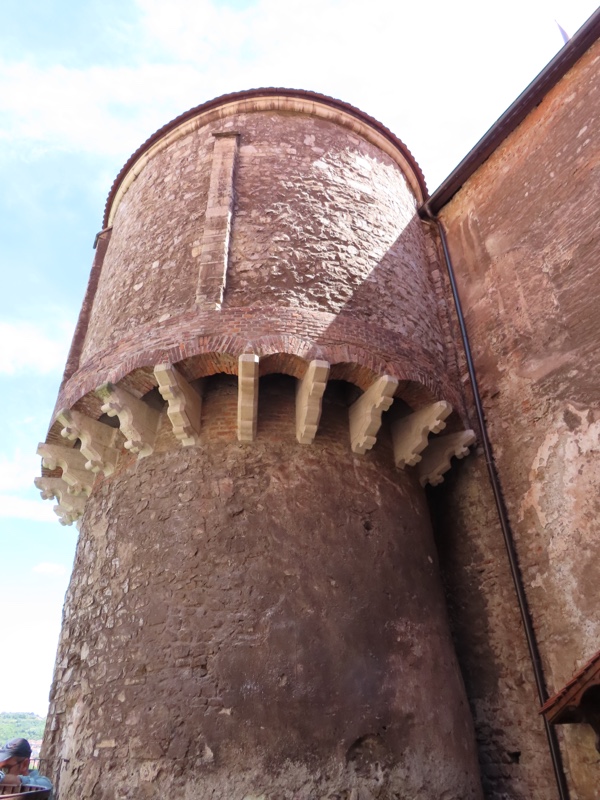 There were the obligatory dungeons complete with torture implements which were very easily accessible right at the front of the castle, being directly off the portcullis entrance tower.
There were the obligatory dungeons complete with torture implements which were very easily accessible right at the front of the castle, being directly off the portcullis entrance tower. 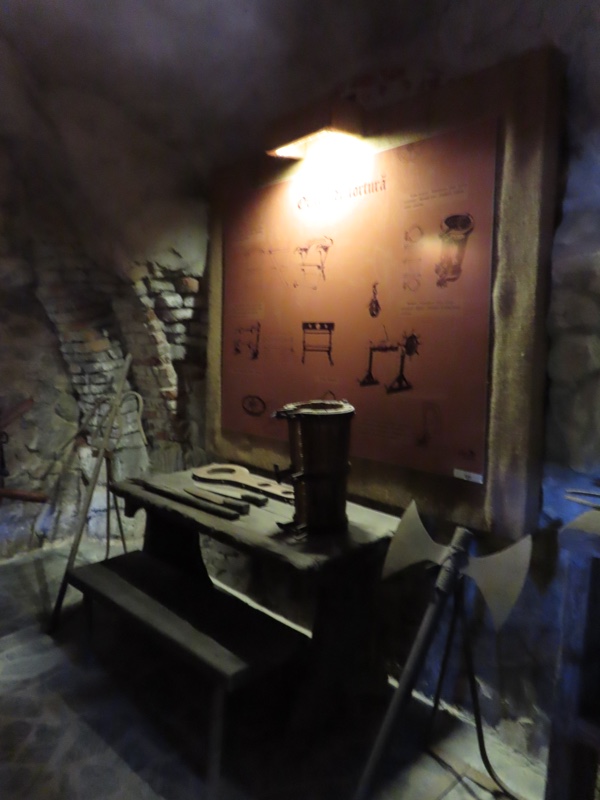
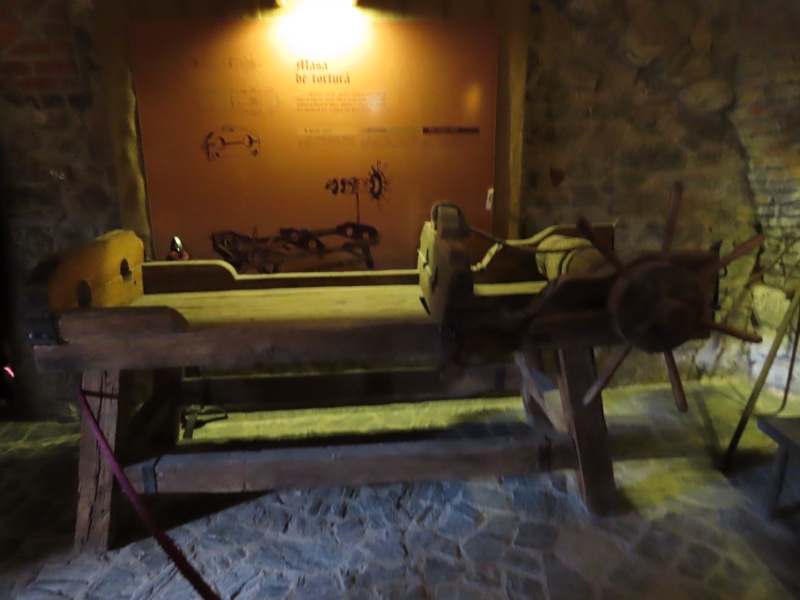 I don’t know what it is about seeing dummies in medieval castles that immediately sets your expectations for a less than informative visit. That and people dressed in medjieval clothing – which this place had (one guy in Rus pants, a 14thC men’s shirt, a 15th Burgundian pouch and a seax on his belt… should have nabbed his photo). Anyway, it was still fun even if I knew the entire place had burned down in 1876 and the current castle is effectively a fanciful recreation of some modern architect’s idea of what it should look like.
I don’t know what it is about seeing dummies in medieval castles that immediately sets your expectations for a less than informative visit. That and people dressed in medjieval clothing – which this place had (one guy in Rus pants, a 14thC men’s shirt, a 15th Burgundian pouch and a seax on his belt… should have nabbed his photo). Anyway, it was still fun even if I knew the entire place had burned down in 1876 and the current castle is effectively a fanciful recreation of some modern architect’s idea of what it should look like. 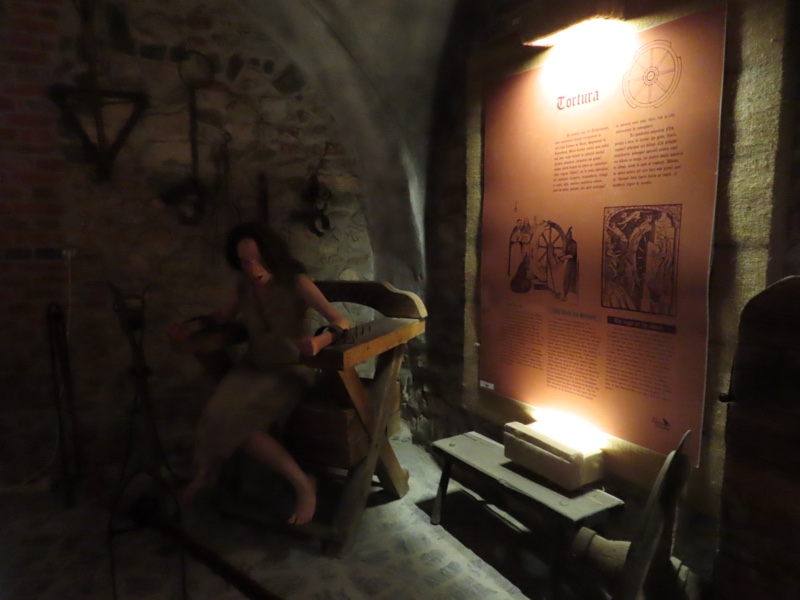
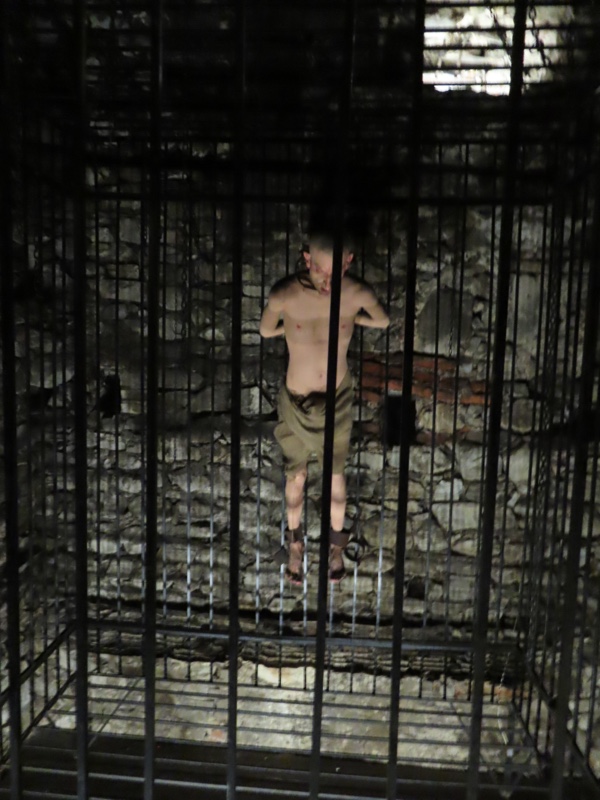 Gothic-Renaissance castle bits ahoy…
Gothic-Renaissance castle bits ahoy…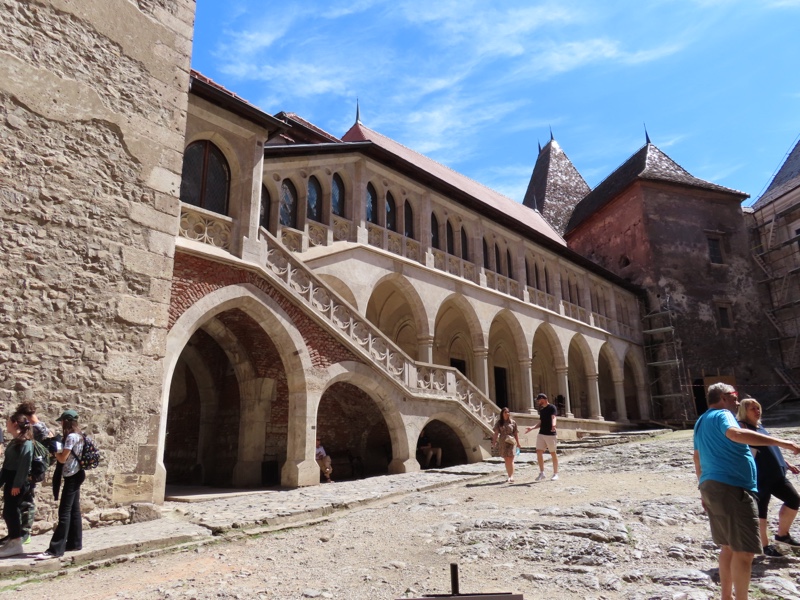
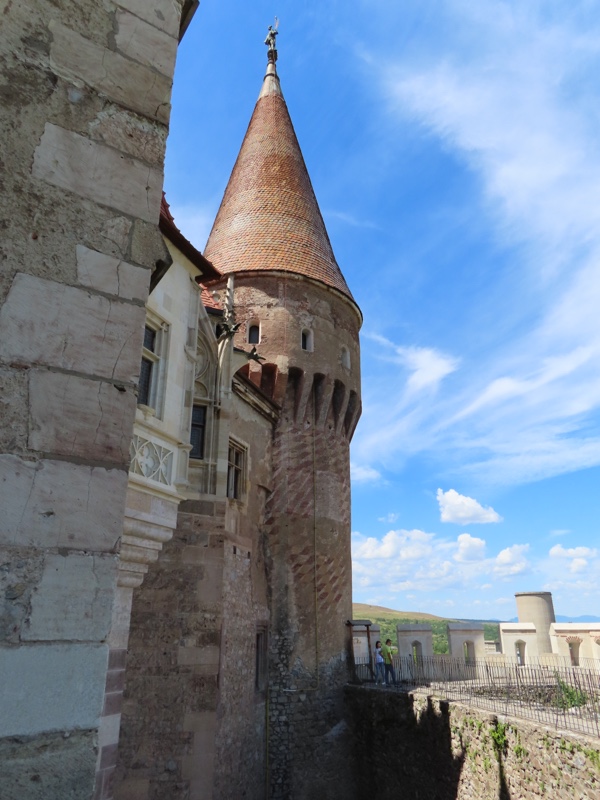 Turrets and gargoyles…
Turrets and gargoyles…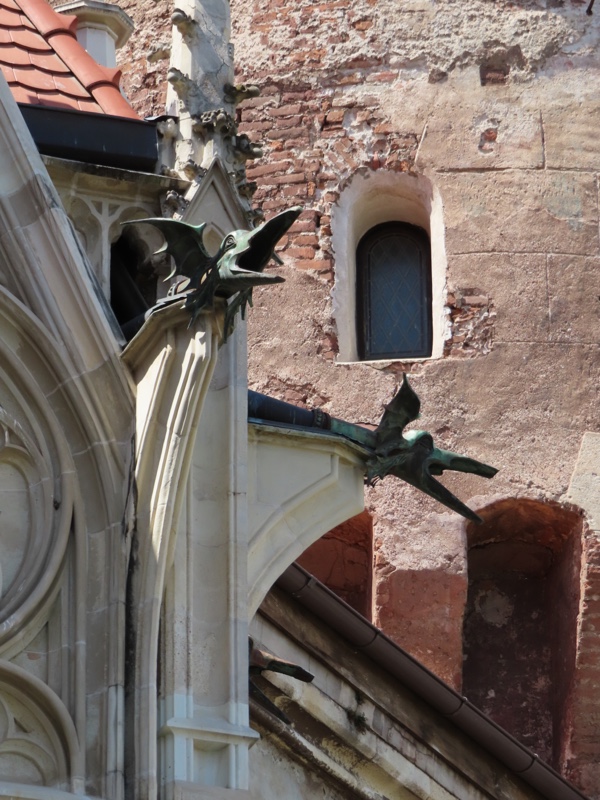
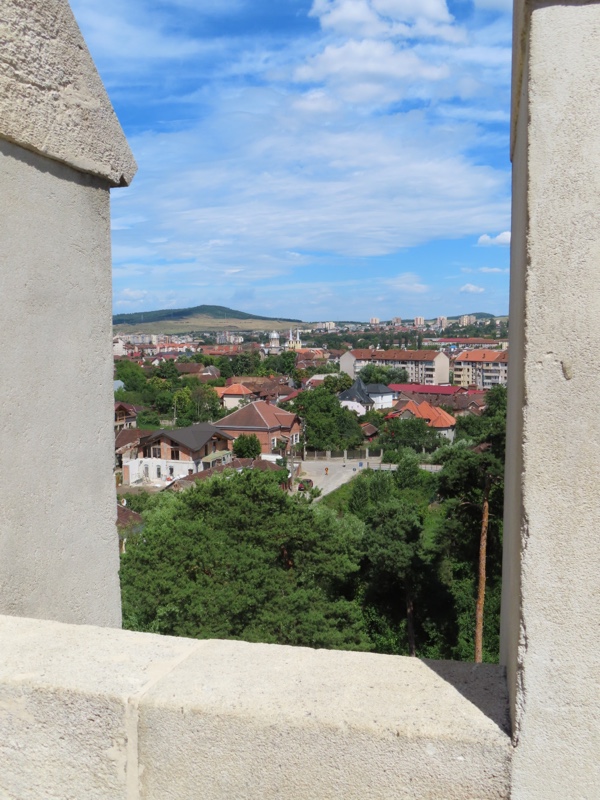
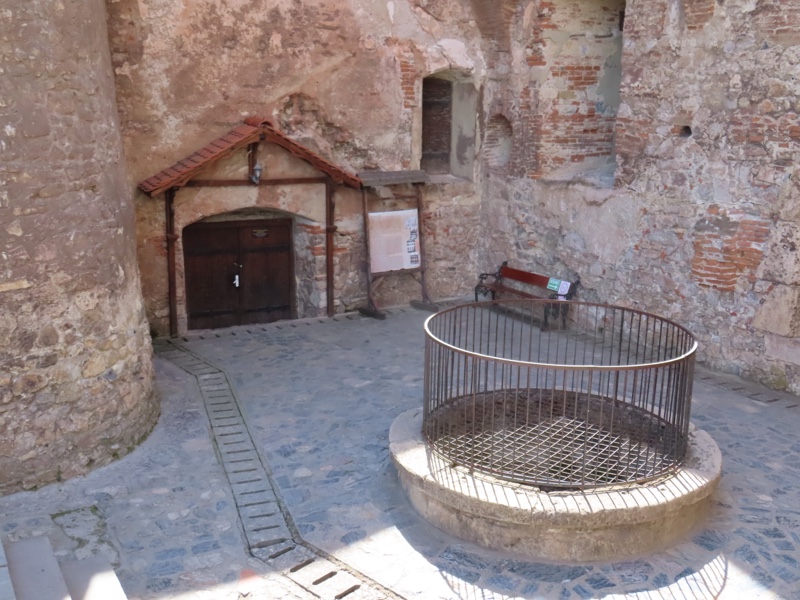
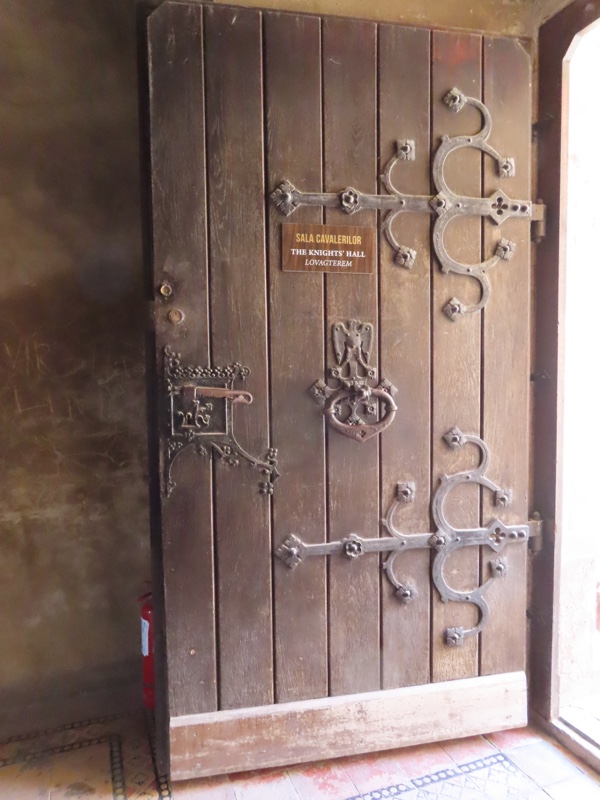
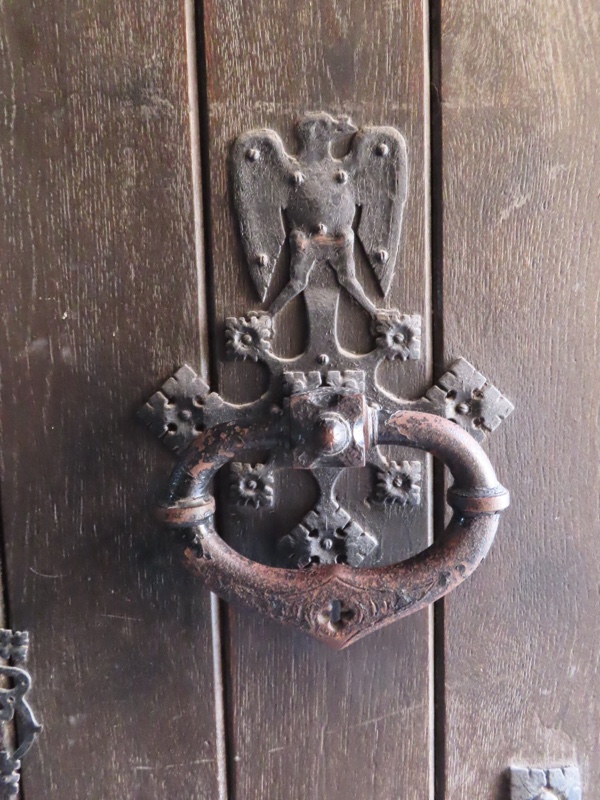
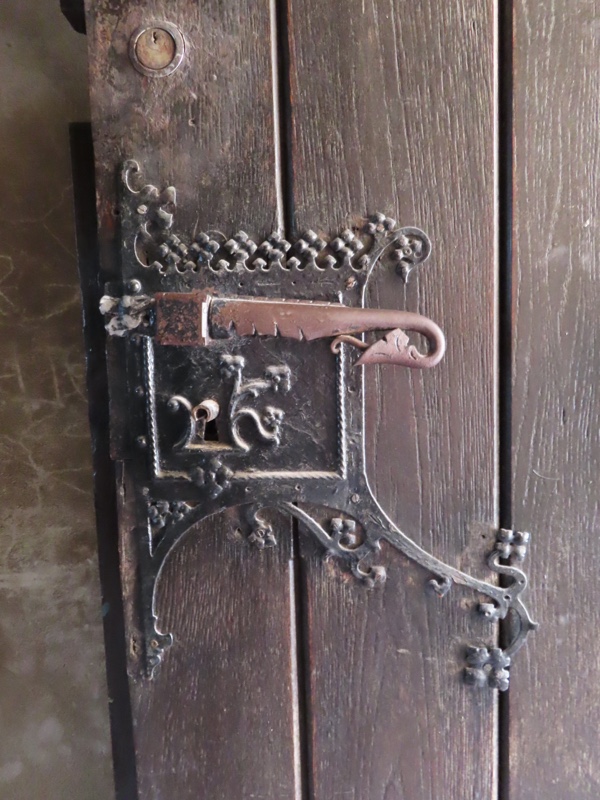 It’s lovely in here and I imagine it’d be great to hold events etc., but it is so bothersome looking around and knowing very little of it is original or even in keeping with the original plan for the castle.
It’s lovely in here and I imagine it’d be great to hold events etc., but it is so bothersome looking around and knowing very little of it is original or even in keeping with the original plan for the castle. 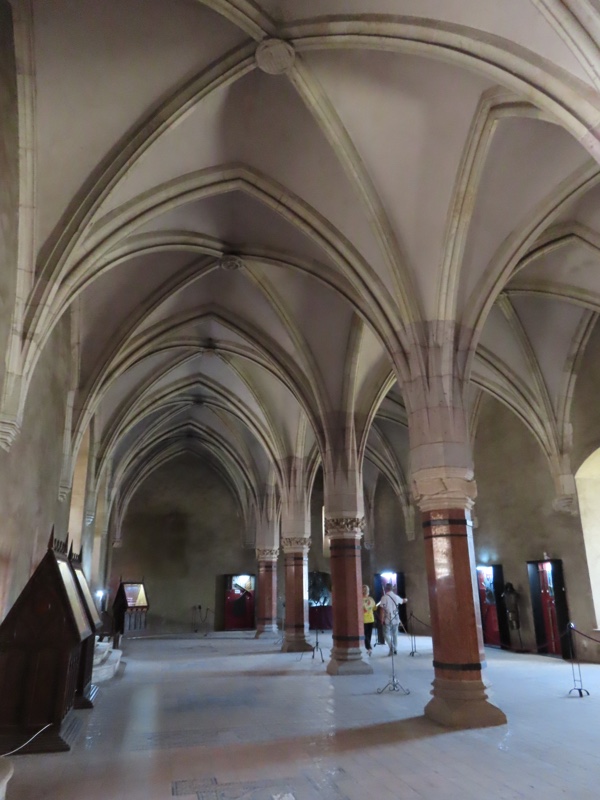
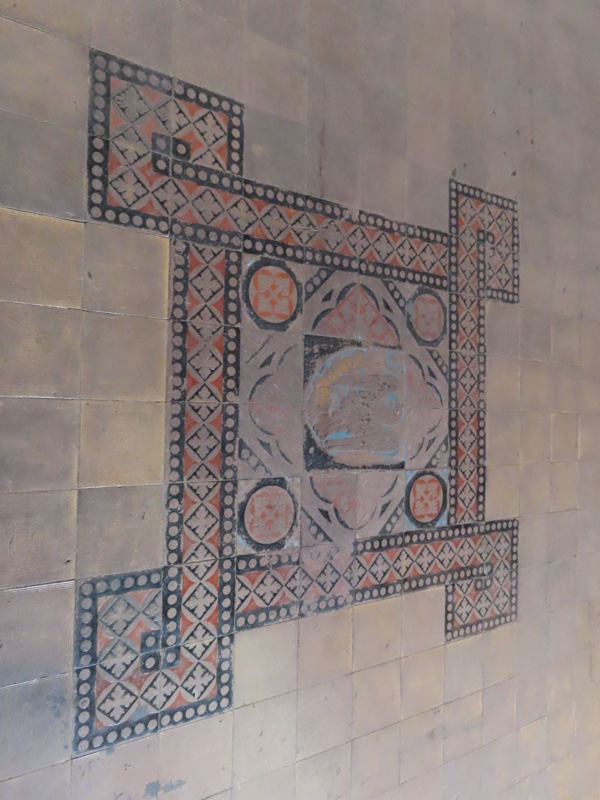
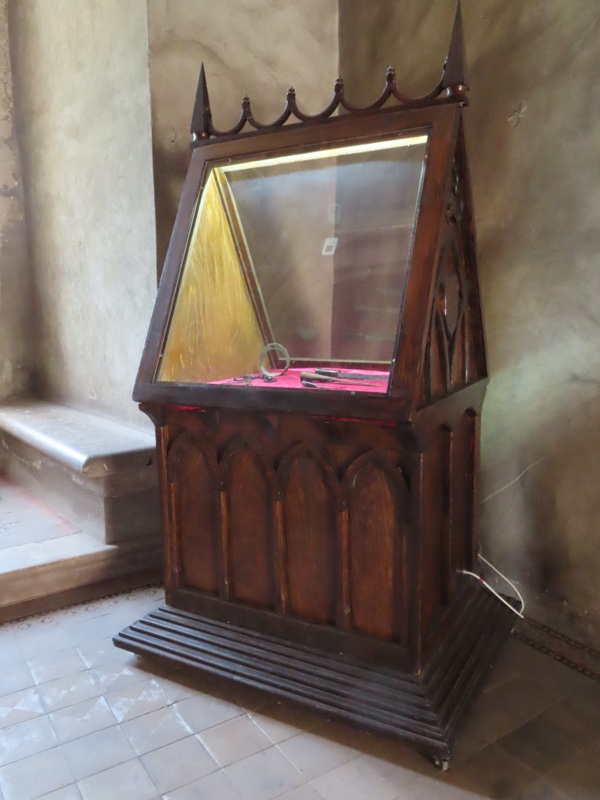
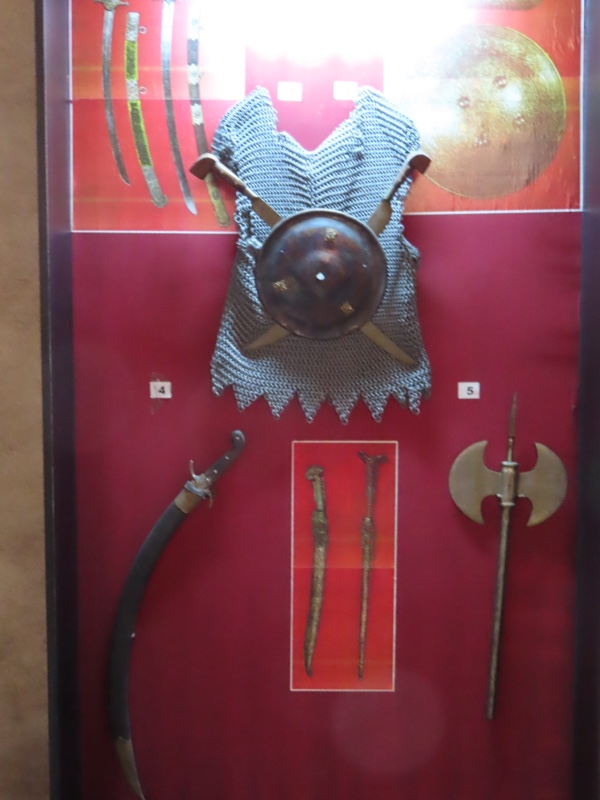
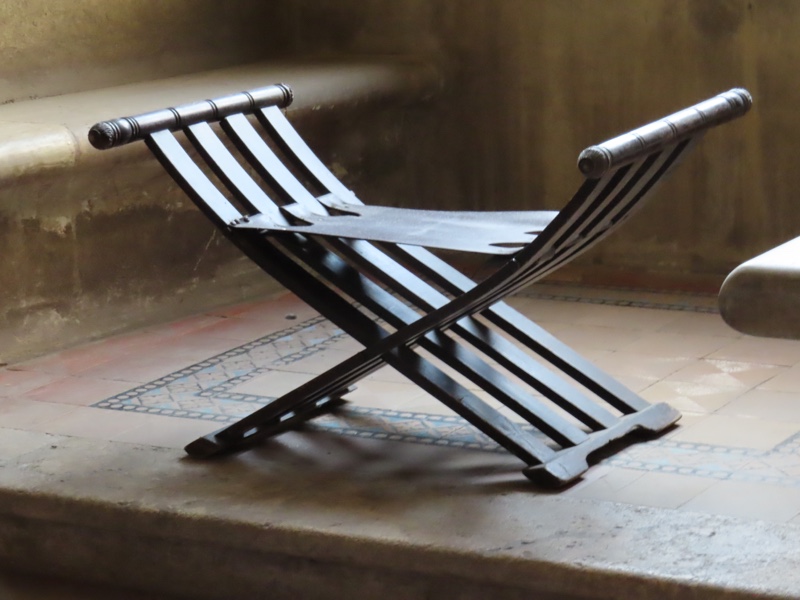
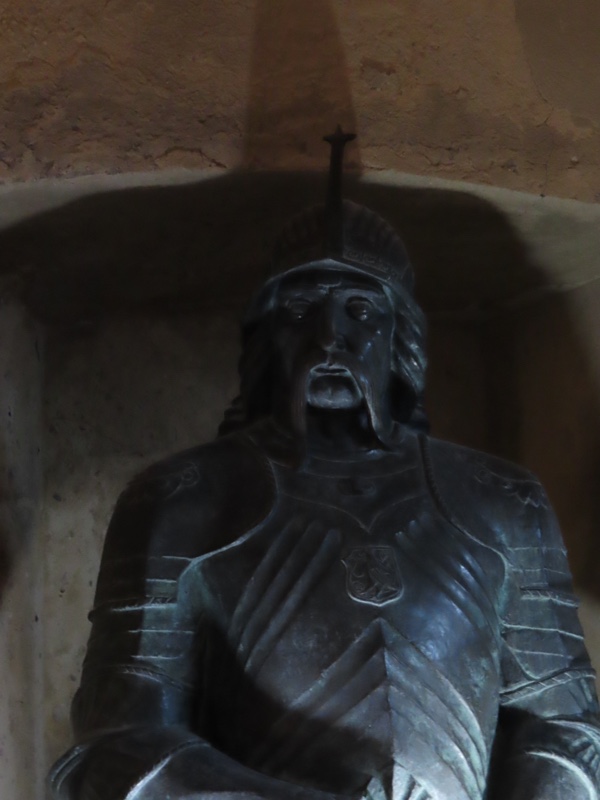 Now this looks like a perfectly SCA throne.
Now this looks like a perfectly SCA throne. 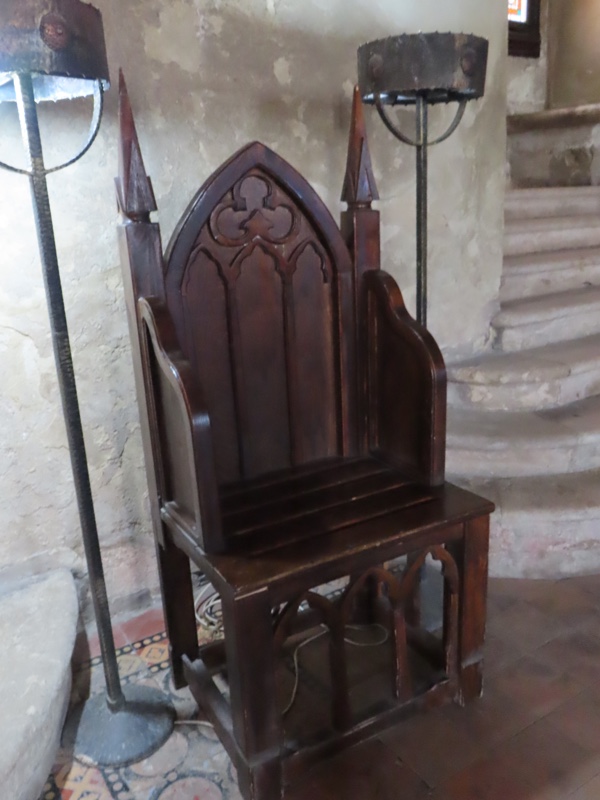
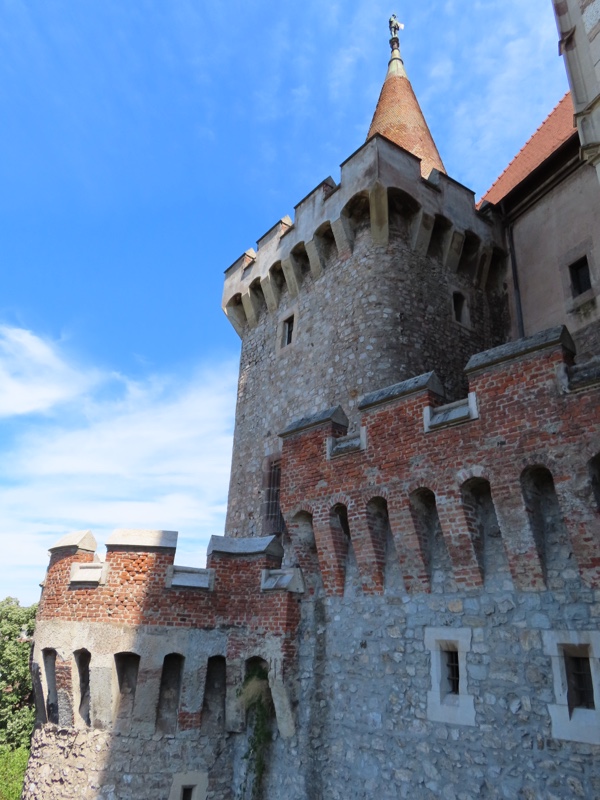















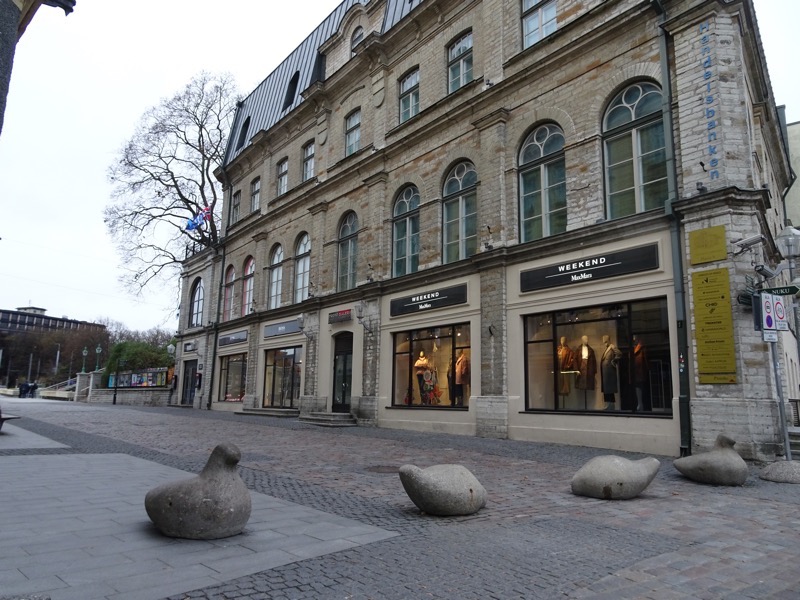 We found a great little cafe for breakfast which wasn’t so easy given that many places were just not open this early – you know, about 0930. It was called Revel and was warm and cosy and served up the best €4.95 brekkie ever – a potato, bacon, onion and mushroom bubble and squeak type deal with an egg on top. I didn’t finish it, but it was a delicious start to the day.
We found a great little cafe for breakfast which wasn’t so easy given that many places were just not open this early – you know, about 0930. It was called Revel and was warm and cosy and served up the best €4.95 brekkie ever – a potato, bacon, onion and mushroom bubble and squeak type deal with an egg on top. I didn’t finish it, but it was a delicious start to the day.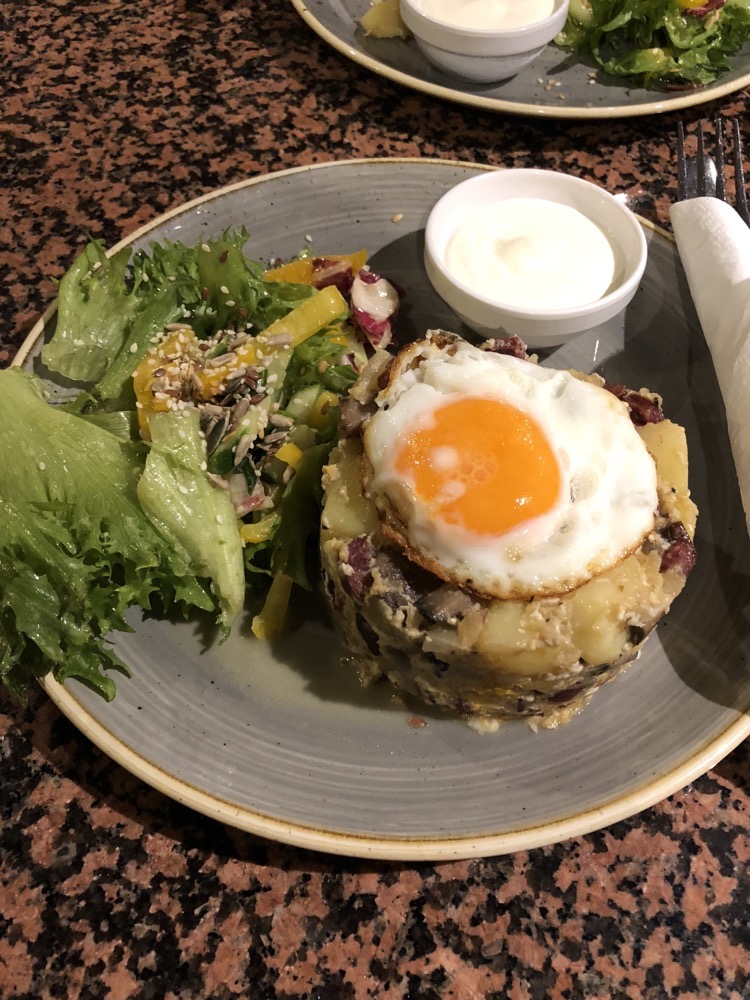
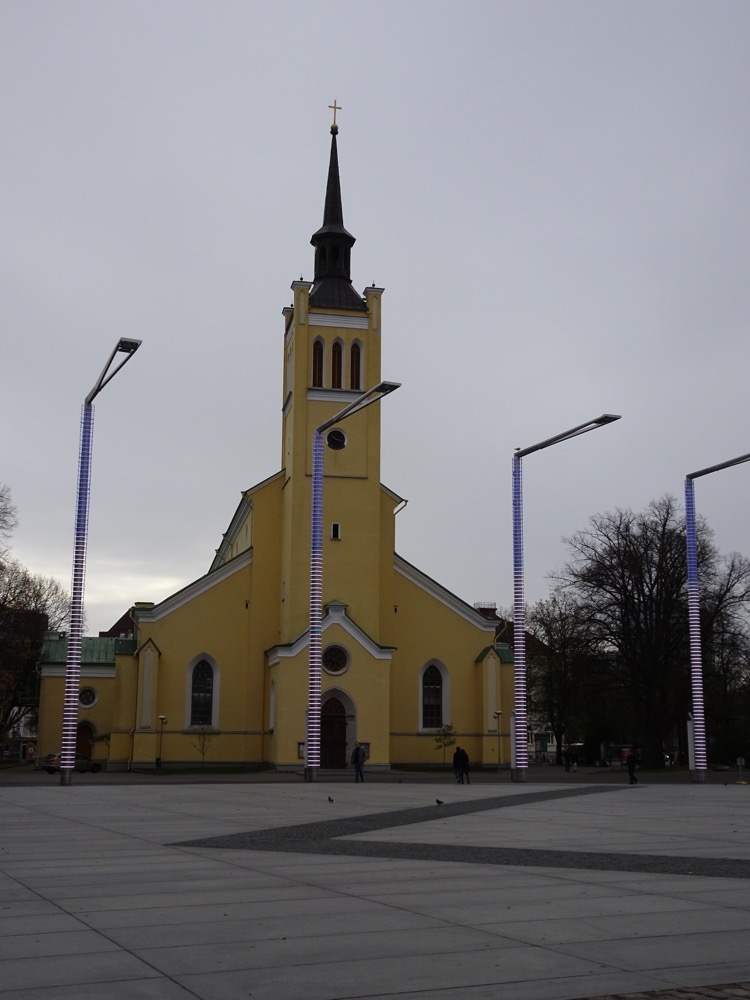 Across the Square, the imposing War of Independence Victory Column is currently under wraps. It is a tall, usually well-lit plinth with an enormous cross on it. Usually, I try to crop the scaffolded buildings and monuments out of my photos, but this one struck me as a bit of a monument in its own right. It was only unveiled about a decade ago and already under scaffold… I think this piece is currently a monument to the: ‘They Don’t Make ‘Em Like They Used To’ field of civic building.
Across the Square, the imposing War of Independence Victory Column is currently under wraps. It is a tall, usually well-lit plinth with an enormous cross on it. Usually, I try to crop the scaffolded buildings and monuments out of my photos, but this one struck me as a bit of a monument in its own right. It was only unveiled about a decade ago and already under scaffold… I think this piece is currently a monument to the: ‘They Don’t Make ‘Em Like They Used To’ field of civic building.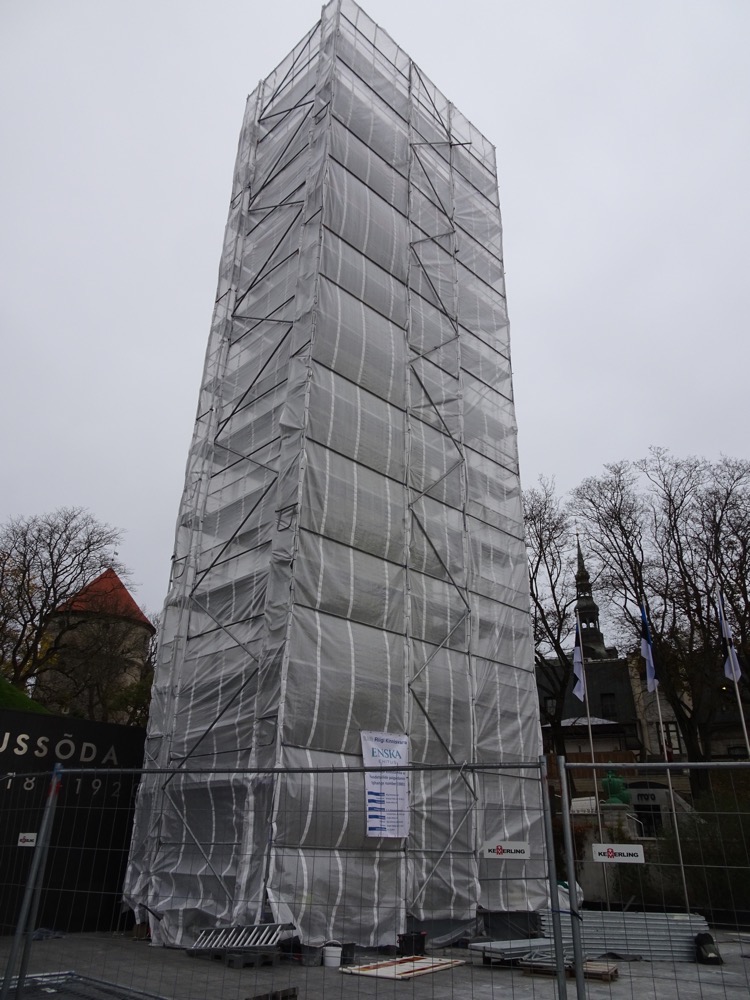 On the hill above the Independence Square was the marker for the Baltic Way – commemorating the 2,000,000 people that formed a human chain across the 675kms from Tallinn to Riga to Vilnius on 23rd of August 1989. The plaques were bestowed by the city of Vilnius, we will have to find the Riga one when we get there too, I think. The Baltic Way event occurred to commemorate the stunning peaceable act that was to protest against the Molotov-Ribbentrop protocols.
On the hill above the Independence Square was the marker for the Baltic Way – commemorating the 2,000,000 people that formed a human chain across the 675kms from Tallinn to Riga to Vilnius on 23rd of August 1989. The plaques were bestowed by the city of Vilnius, we will have to find the Riga one when we get there too, I think. The Baltic Way event occurred to commemorate the stunning peaceable act that was to protest against the Molotov-Ribbentrop protocols.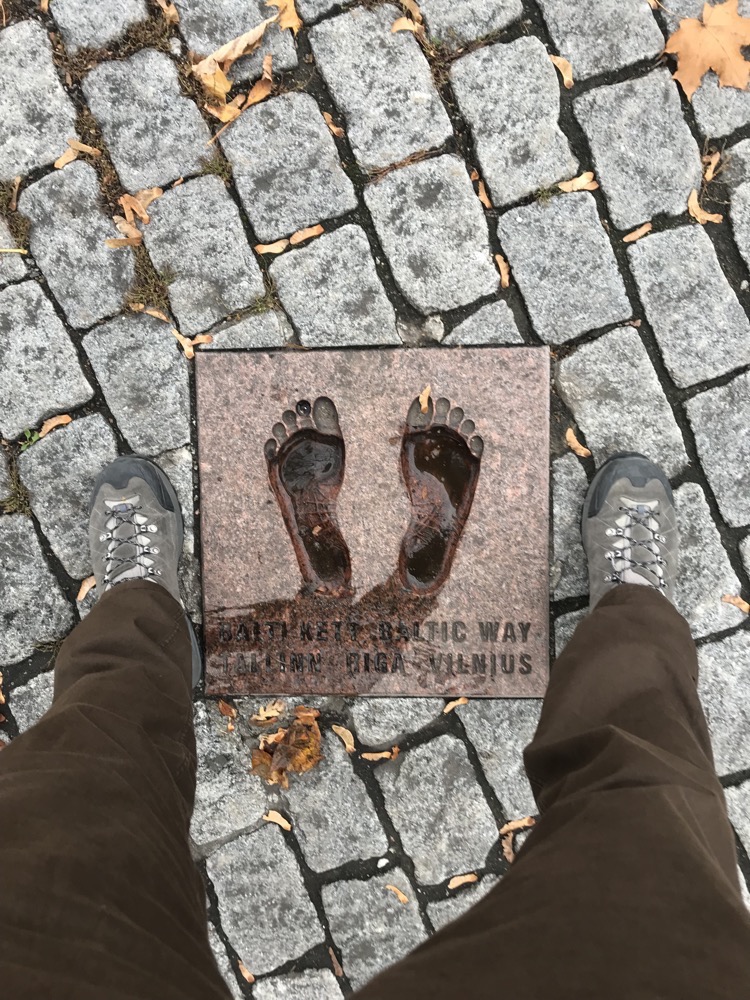 I am so totally in love with the autumn colours – we experience nothing like this in subtropical Brisbane.
I am so totally in love with the autumn colours – we experience nothing like this in subtropical Brisbane.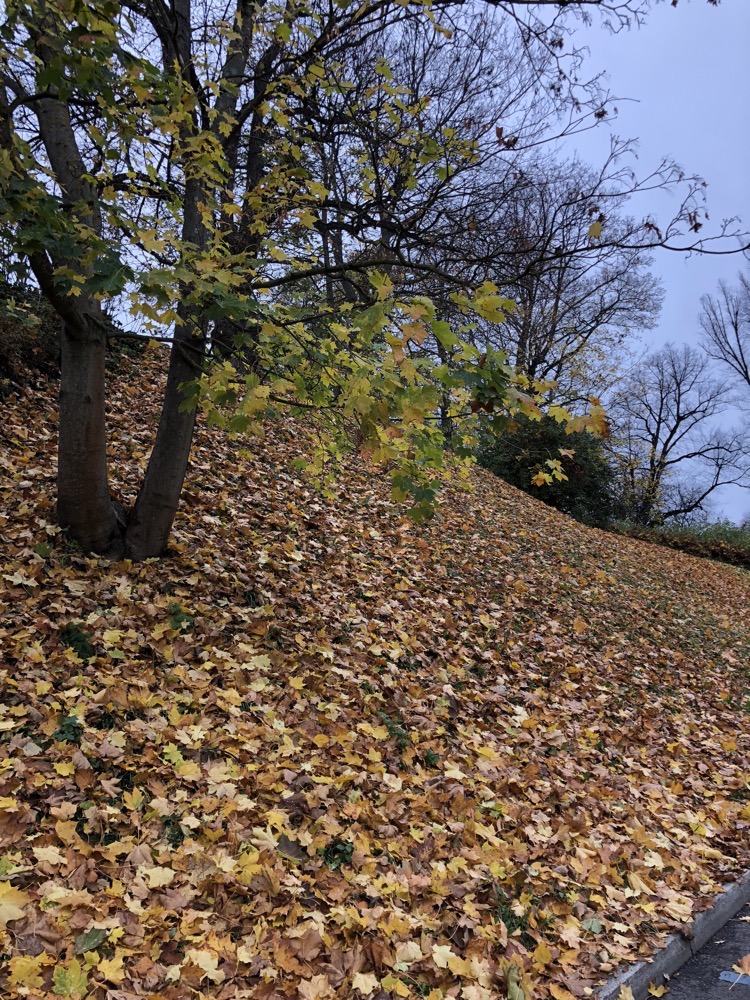 Not far from Independence Square is the Kiek in de Kök – a restored cannon tower from the 15th century that is now a museum. The name, Kiek in de Kök, literally means ‘peek in the kitchen’ in German; the tower got its name from stories about how soldiers in the fortification could peek from the top of the tower into the kitchens of the town below.
Not far from Independence Square is the Kiek in de Kök – a restored cannon tower from the 15th century that is now a museum. The name, Kiek in de Kök, literally means ‘peek in the kitchen’ in German; the tower got its name from stories about how soldiers in the fortification could peek from the top of the tower into the kitchens of the town below. 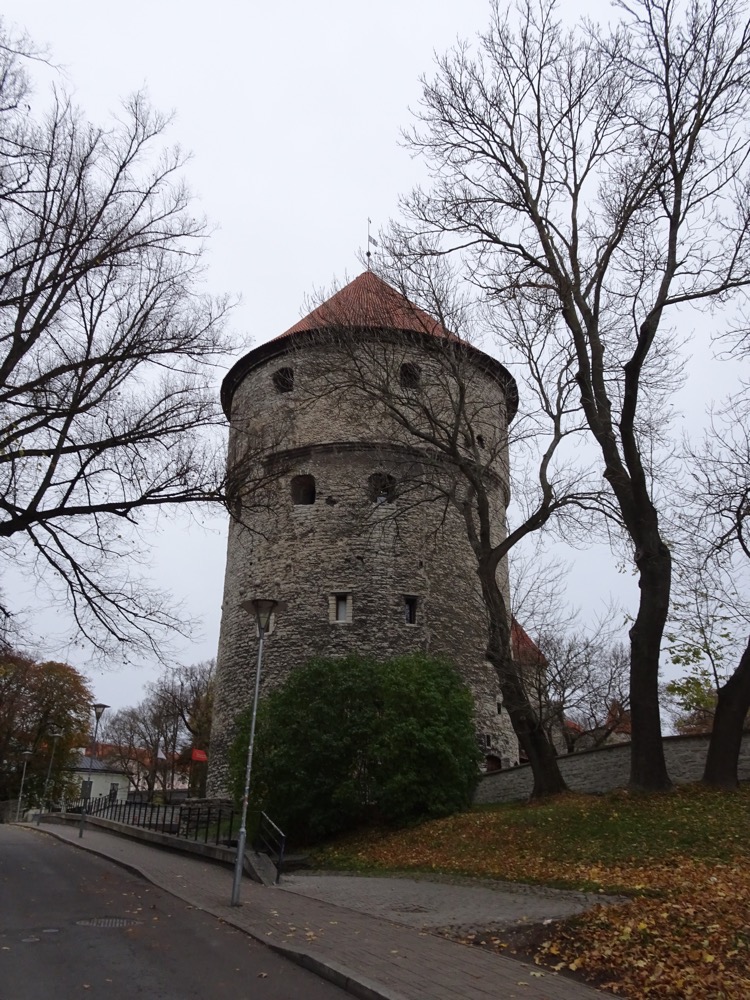 Nearby is the sturdy 14th century, Maiden’s Tower which is currently a cafe and small museum which oddly focuses on the culinary arts and the art of war – interesting combo. We thought we may double back around on these museums later if it started raining and we needed to take refuge indoors (it didn’t and we didn’t).
Nearby is the sturdy 14th century, Maiden’s Tower which is currently a cafe and small museum which oddly focuses on the culinary arts and the art of war – interesting combo. We thought we may double back around on these museums later if it started raining and we needed to take refuge indoors (it didn’t and we didn’t). Up a small hill from the Maiden’s Tower is the decidedly pink Toompea Palace. The Palace/Castle was erected on the foundations of the crumbling eastern wing of the 13th – 14th century fortress that was on this site. The Baroque castle was built in the late 18th century, and is now the Estonia parliament, complete with carpark and (out of frame to the left) be-logo’d scaffolding, which I am now convinced is permanent, as it was here last year and isn’t covering or protecting anything, just being used as a visual divider between the road and the palace.
Up a small hill from the Maiden’s Tower is the decidedly pink Toompea Palace. The Palace/Castle was erected on the foundations of the crumbling eastern wing of the 13th – 14th century fortress that was on this site. The Baroque castle was built in the late 18th century, and is now the Estonia parliament, complete with carpark and (out of frame to the left) be-logo’d scaffolding, which I am now convinced is permanent, as it was here last year and isn’t covering or protecting anything, just being used as a visual divider between the road and the palace.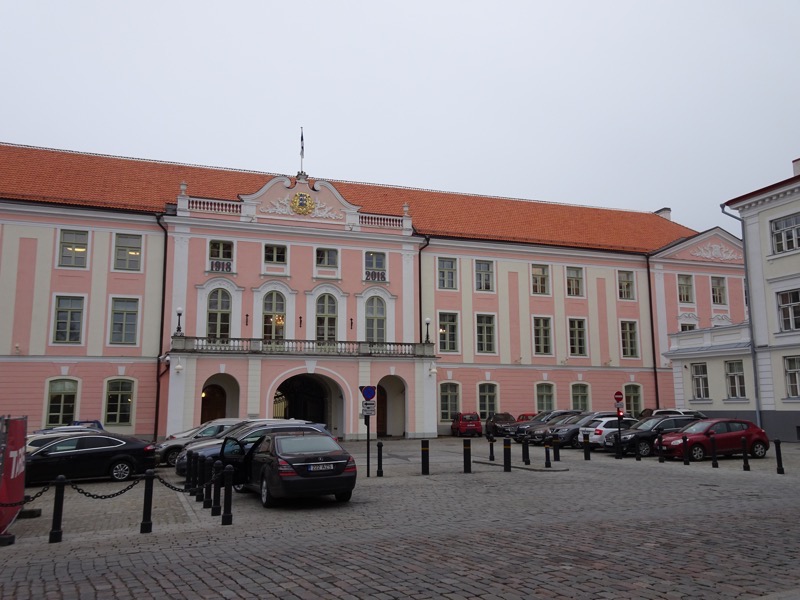 Across the street is the Alexander Nevsky Cathedral which is Tallinn’s largest and grandest orthodox cupola cathedral and is dedicated to Saint Alexander Nevsky, and the locals hate it. Apparently, the cathedral was built during the late 19th century as part of the efforts to Russify Estonia. It is so heartily disliked by many Estonians as a symbol of abject oppression, such that Estonia officials had scheduled the cathedral for demolition in 1924,. The only reason the cathedral is still standing is due to lack of money – it was going to be an expensive effort to destroy and remove the massive construction. After Estonia gained their independence, the Estonian parliament again started to discuss plans to demolish Cathedral in the 1990s! Seriously as recently as 30 years ago they wanted to demolish this beautiful building to extend the parking lot for the members of Parliament!
Across the street is the Alexander Nevsky Cathedral which is Tallinn’s largest and grandest orthodox cupola cathedral and is dedicated to Saint Alexander Nevsky, and the locals hate it. Apparently, the cathedral was built during the late 19th century as part of the efforts to Russify Estonia. It is so heartily disliked by many Estonians as a symbol of abject oppression, such that Estonia officials had scheduled the cathedral for demolition in 1924,. The only reason the cathedral is still standing is due to lack of money – it was going to be an expensive effort to destroy and remove the massive construction. After Estonia gained their independence, the Estonian parliament again started to discuss plans to demolish Cathedral in the 1990s! Seriously as recently as 30 years ago they wanted to demolish this beautiful building to extend the parking lot for the members of Parliament! 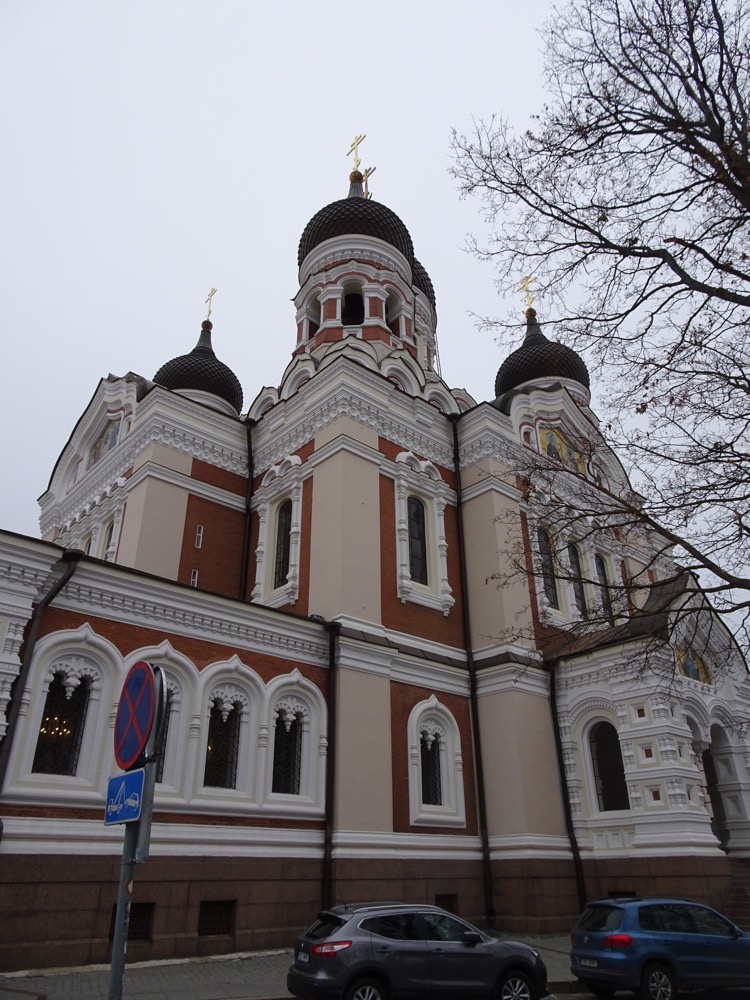
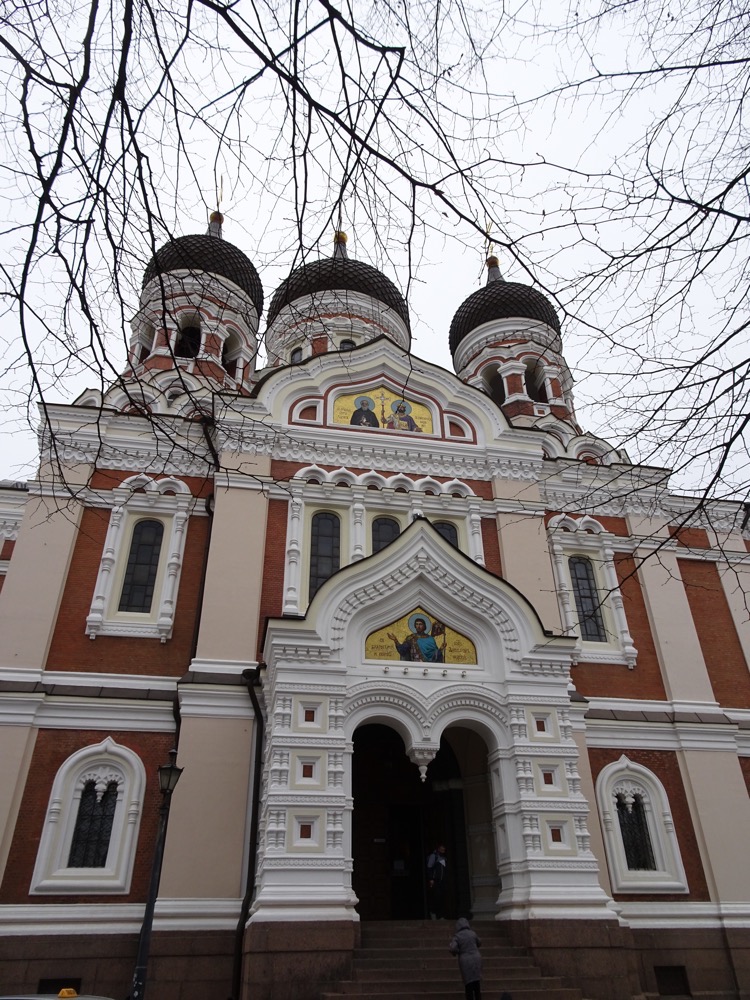
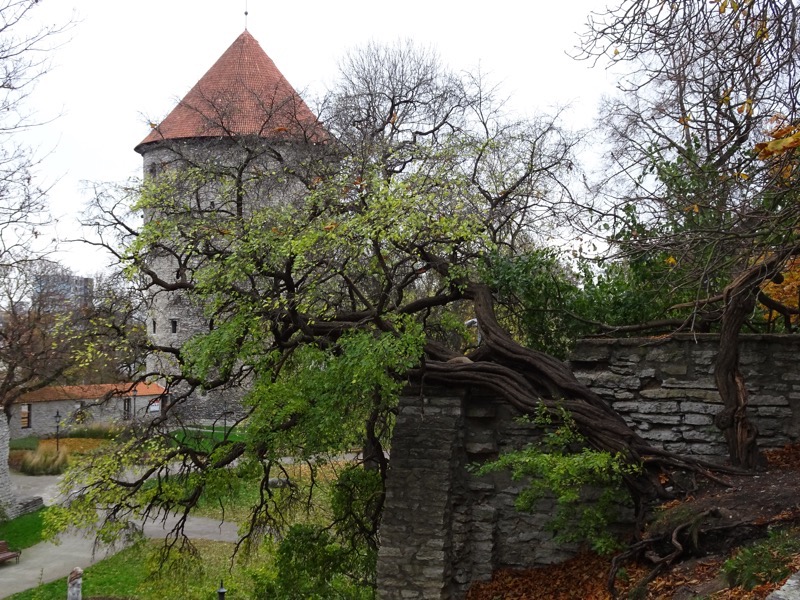 I love these street lamps – I wish I could take one home for the front garden… it would only look a little out of place.
I love these street lamps – I wish I could take one home for the front garden… it would only look a little out of place.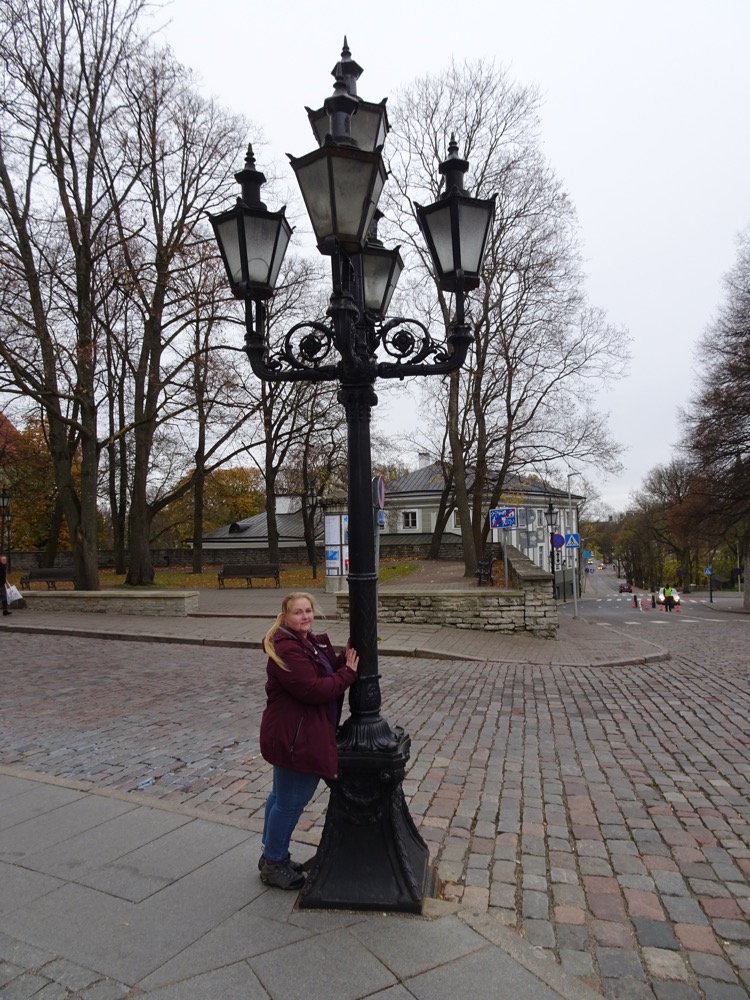 It was supposed to only get to 7°C today, but with the wind chill, feel more like 2-3°C and a high possibility of rain, so I wore my Fantastic Purple Jacket Of Warmth that I bought last year in Oslo on the end of season bargain shelves for €50 – only problem is as soon as you are indoors, you’re overheating like mad, so it’s on and off, on and off, with the jacket all day.
It was supposed to only get to 7°C today, but with the wind chill, feel more like 2-3°C and a high possibility of rain, so I wore my Fantastic Purple Jacket Of Warmth that I bought last year in Oslo on the end of season bargain shelves for €50 – only problem is as soon as you are indoors, you’re overheating like mad, so it’s on and off, on and off, with the jacket all day.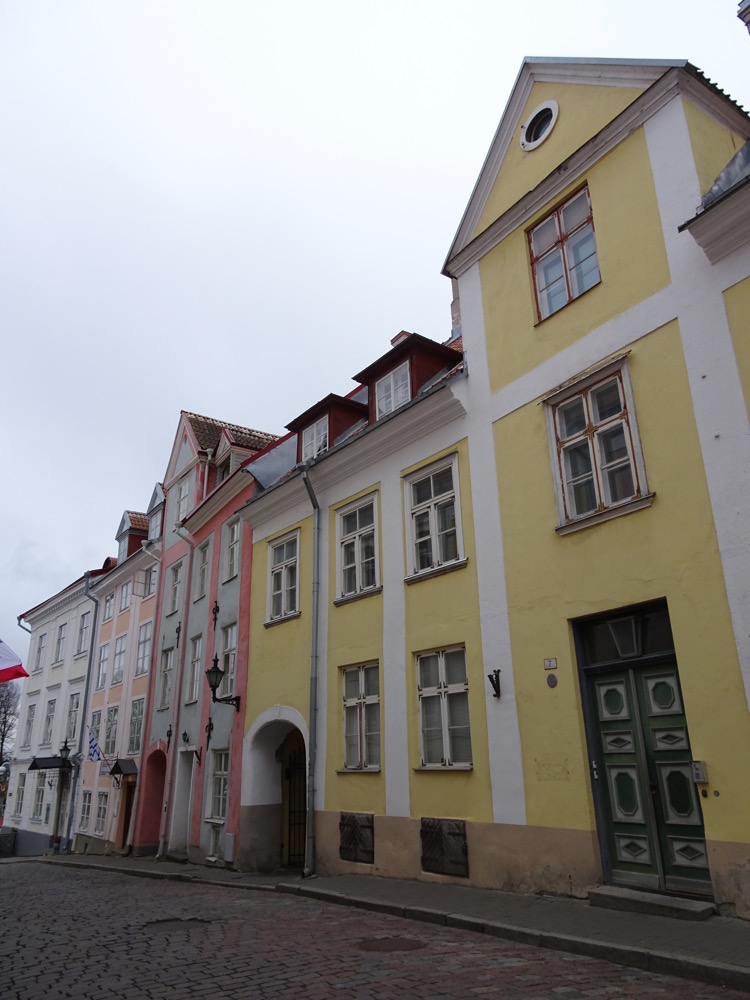 Souvenirs – the more I travel, the more I realise that I like to look at souvenirs and see what sort of things people make/sell to represent their towns and special places, but I don’t actually like to buy souvenirs. 🙂 They just clutter up the house and you do nothing with them. So far this trip, I have bought sweet stuff all other than my lapel pins.
Souvenirs – the more I travel, the more I realise that I like to look at souvenirs and see what sort of things people make/sell to represent their towns and special places, but I don’t actually like to buy souvenirs. 🙂 They just clutter up the house and you do nothing with them. So far this trip, I have bought sweet stuff all other than my lapel pins.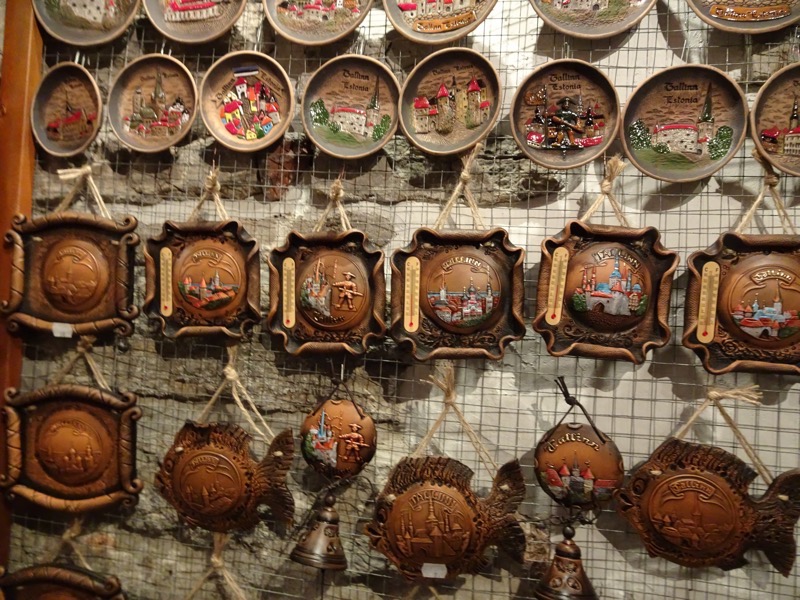
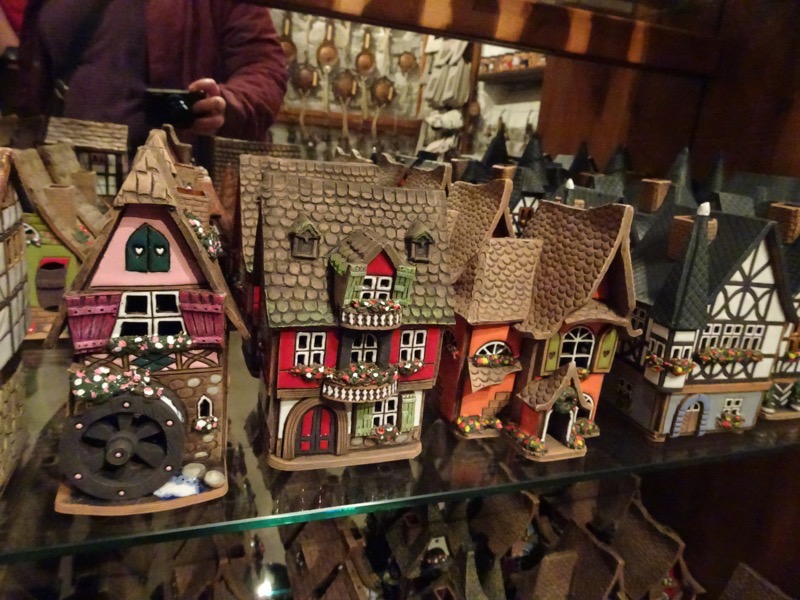 Vikings – with horns or course.
Vikings – with horns or course.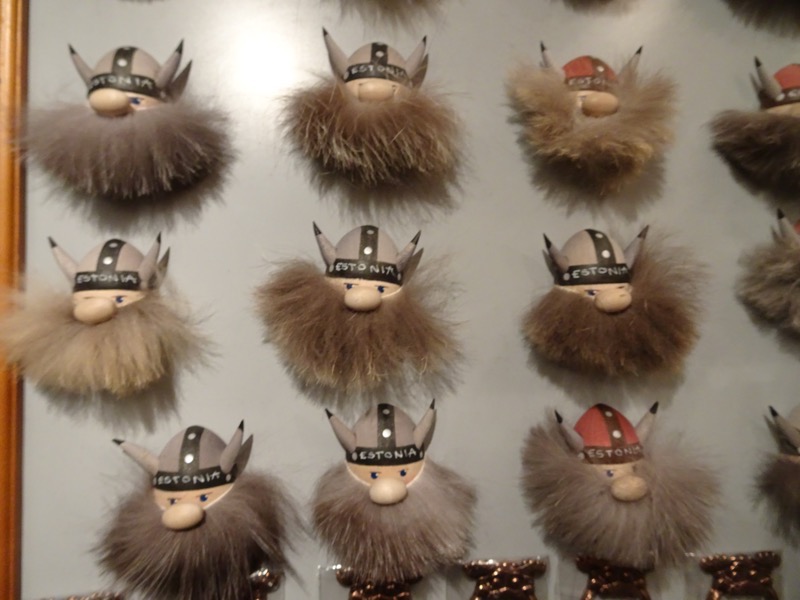
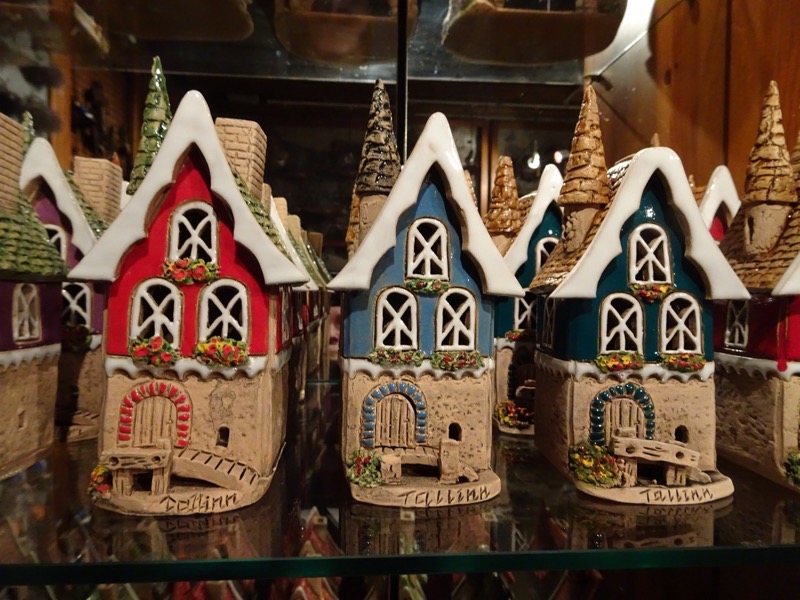 I love these heavy felted fun wool hats – I’d love to be able to take half a dozen of them home for friends, but at €45-55 and knowing how little wear they would get in Queensland, it just doesn’t seem a sensible proposition. 🙂
I love these heavy felted fun wool hats – I’d love to be able to take half a dozen of them home for friends, but at €45-55 and knowing how little wear they would get in Queensland, it just doesn’t seem a sensible proposition. 🙂 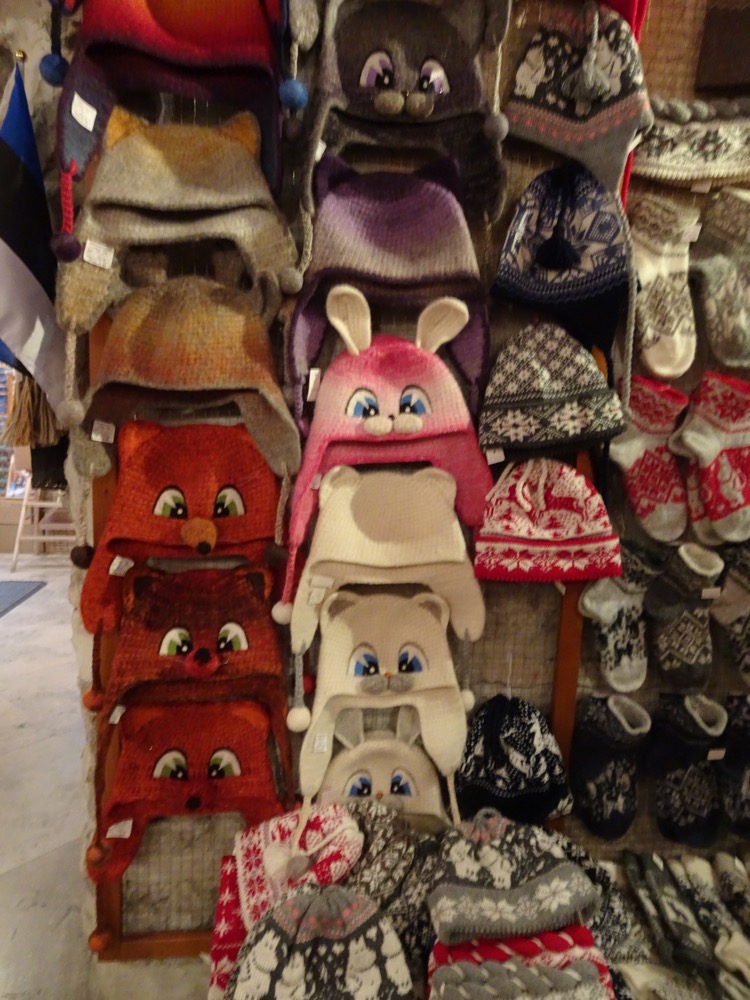 Around the corner is the Toomkirik or St Mary’s Cathedral. Originally dating from the 13th century, the medieval church has a Baroque bell tower and an amazing organ inside that someone was playing this morning.
Around the corner is the Toomkirik or St Mary’s Cathedral. Originally dating from the 13th century, the medieval church has a Baroque bell tower and an amazing organ inside that someone was playing this morning.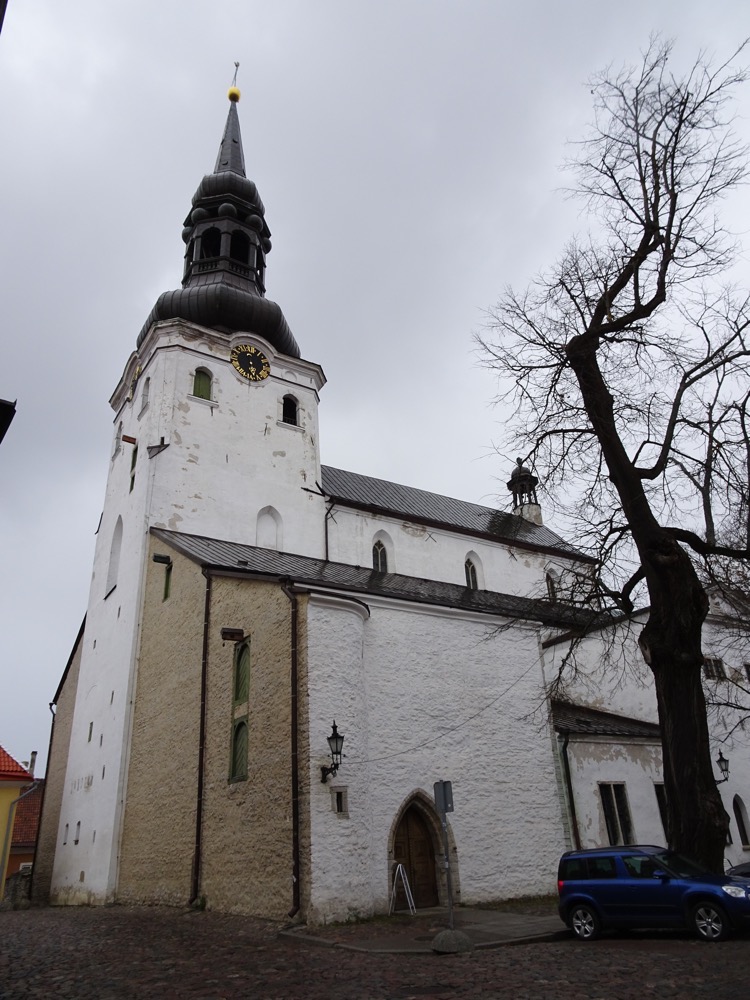
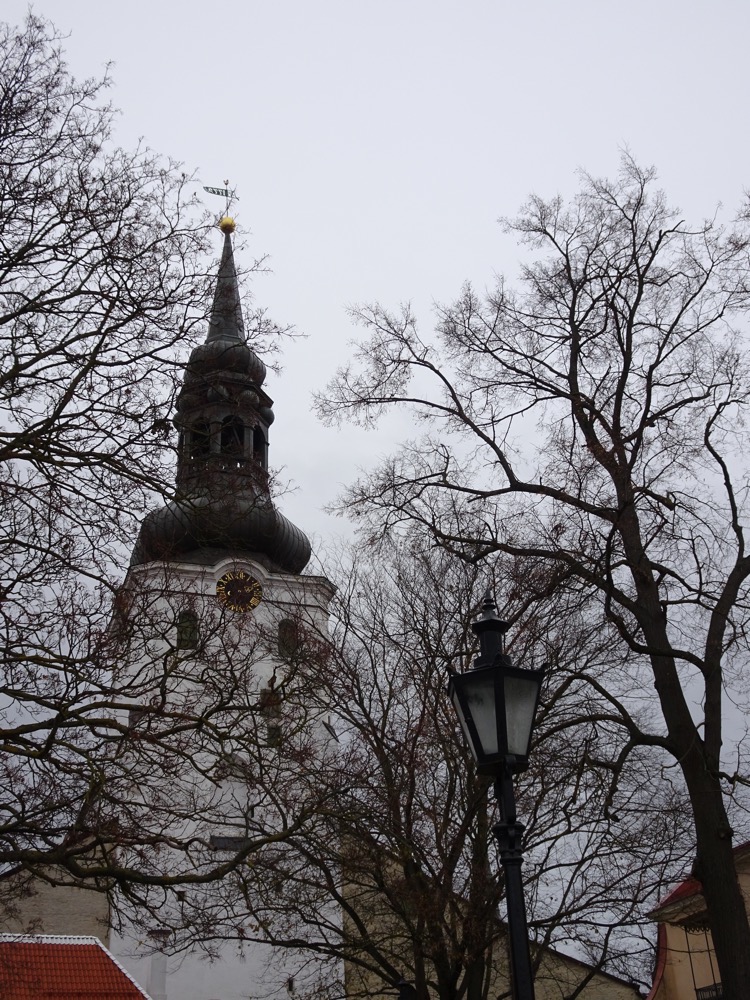 The Toomkirik is the oldest church in Tallinn and mainland Estonia. It is also the only building in the Toompea area that survived a severe fire in the 17th century fire.
The Toomkirik is the oldest church in Tallinn and mainland Estonia. It is also the only building in the Toompea area that survived a severe fire in the 17th century fire.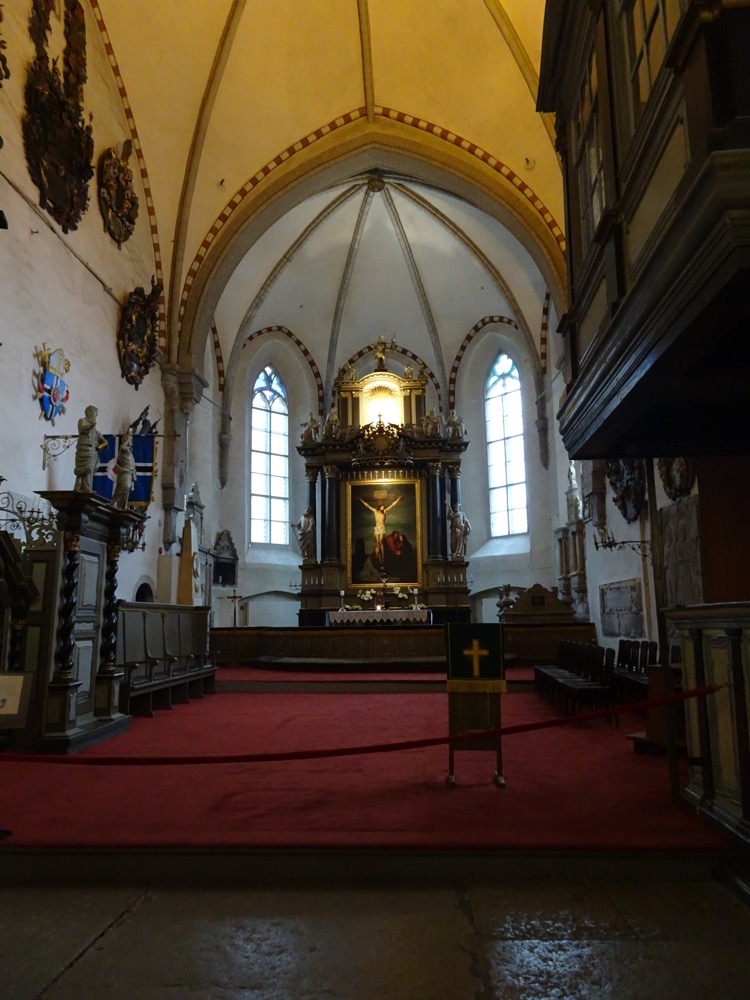
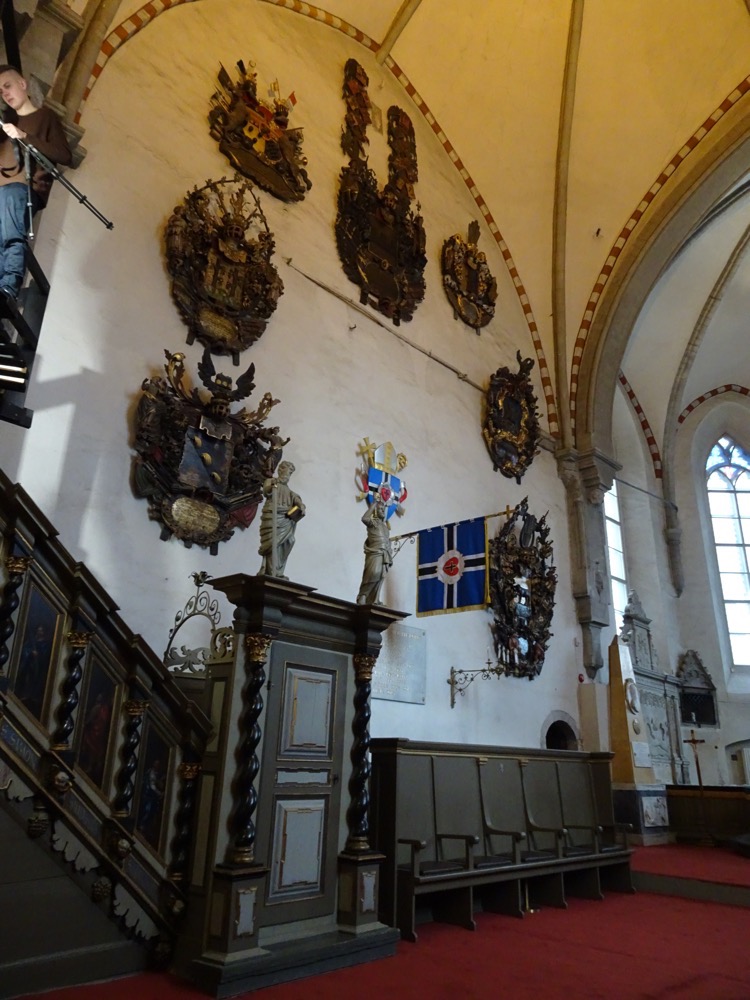
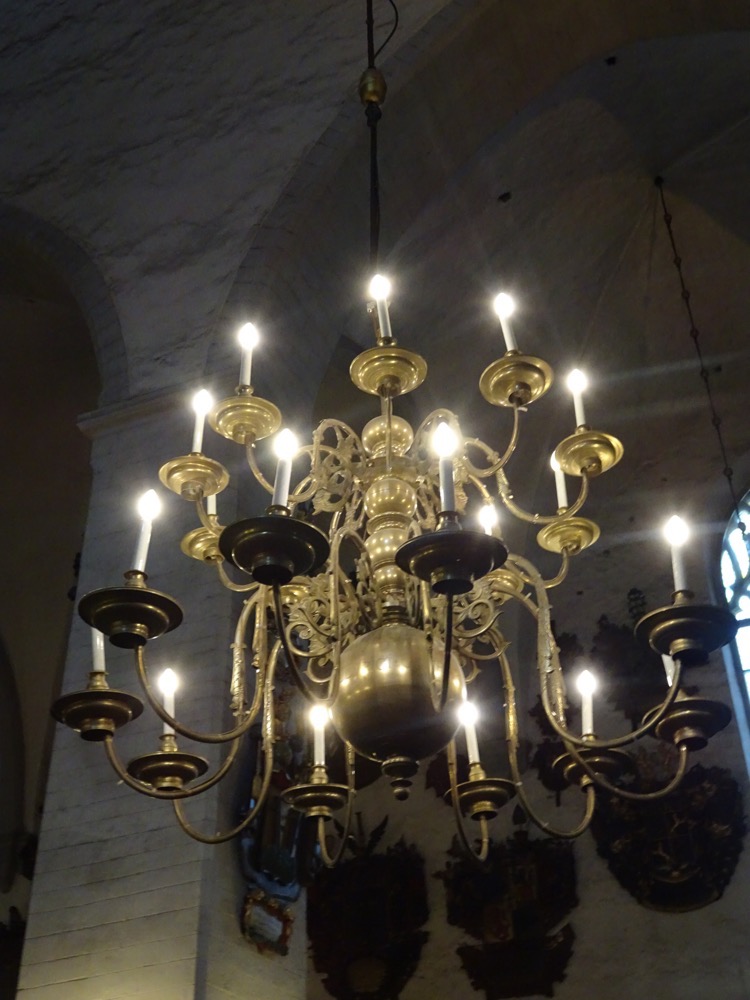
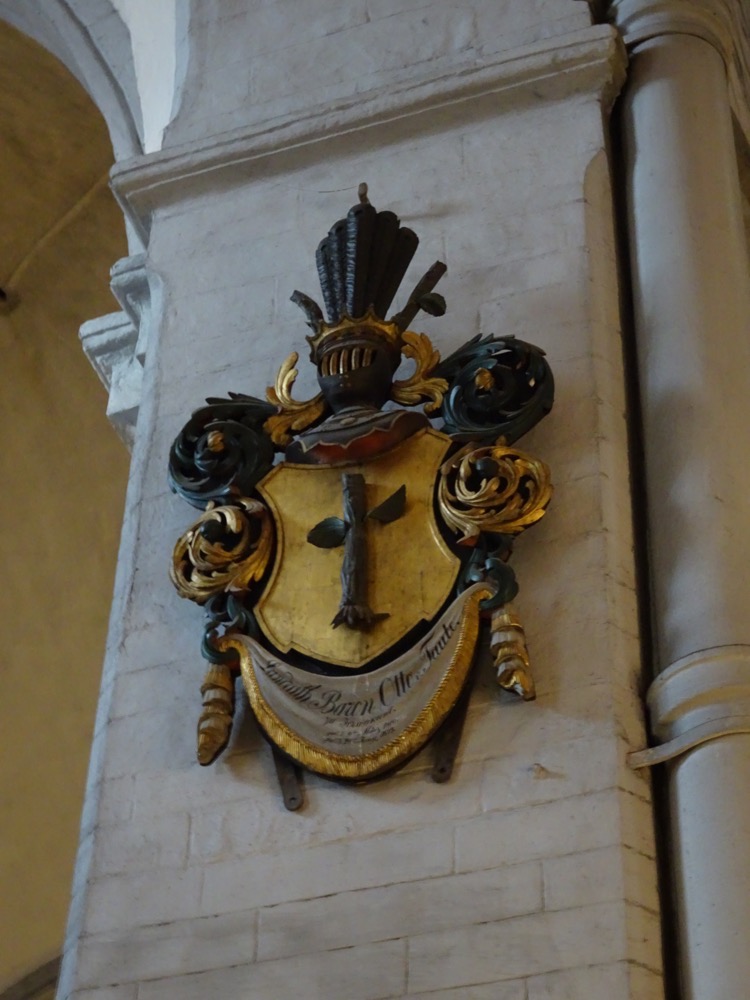 The interior is rather austere with these enormous high pews that congregants would sit in, probably as a family, quite pointedly separated from the people in front and behind them. yale for scale:
The interior is rather austere with these enormous high pews that congregants would sit in, probably as a family, quite pointedly separated from the people in front and behind them. yale for scale: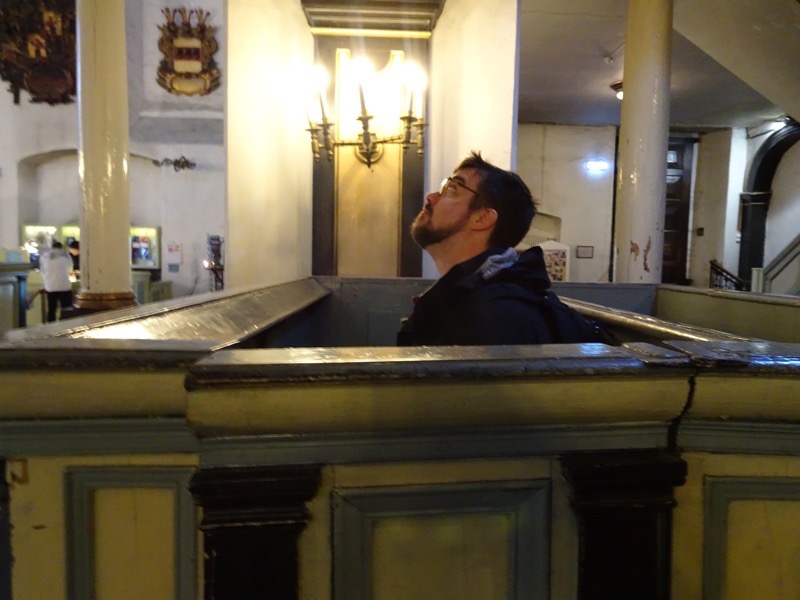 I can’t hardly see the altar over the pew… borys for scale:
I can’t hardly see the altar over the pew… borys for scale: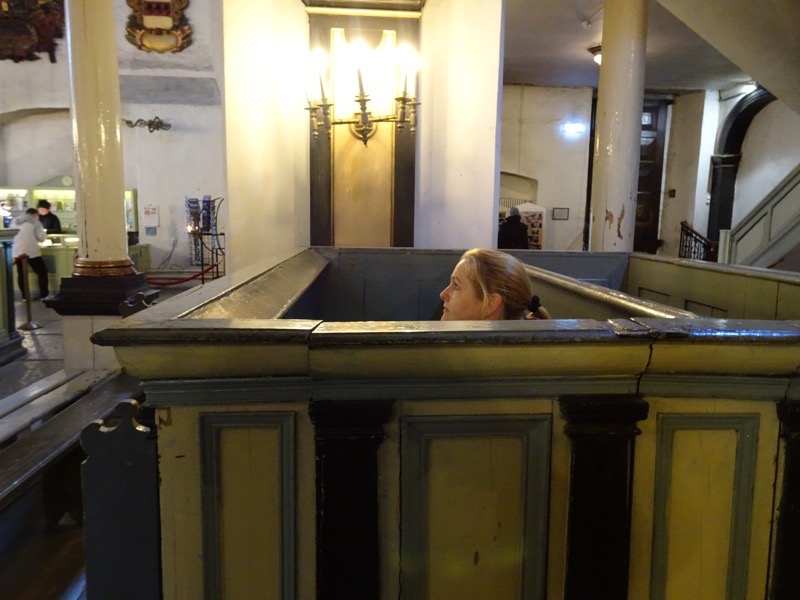
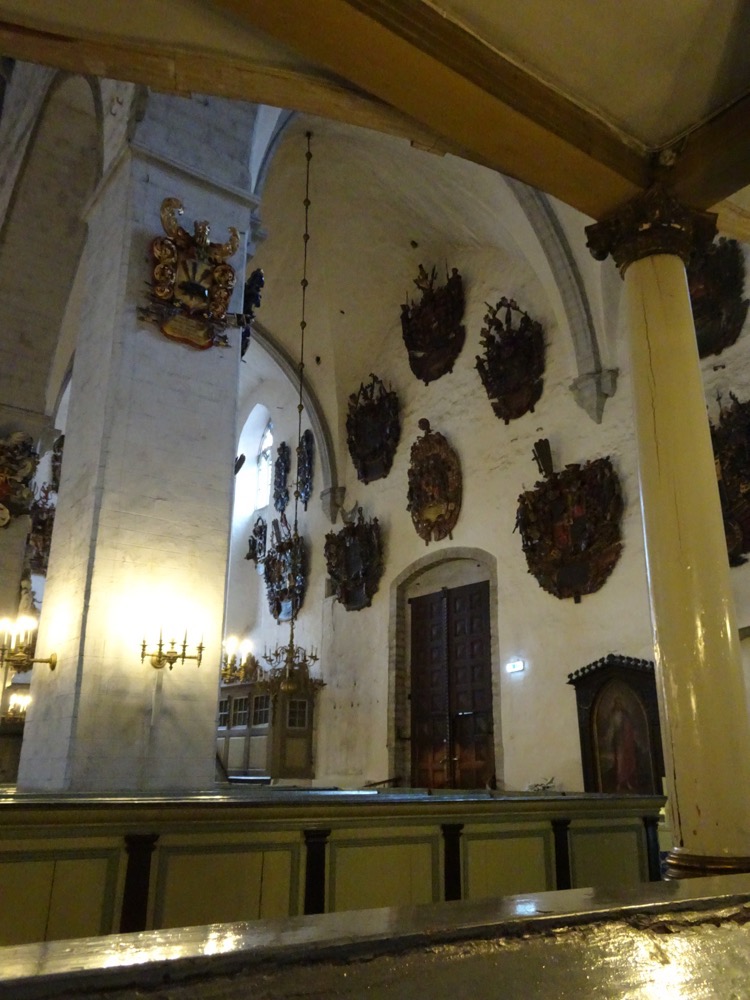 After leaving St Mary’s we walked around to the first of several viewing platforms to see over the city – the Piiskopi viewing platform faces over more modern areas of Tallinn.
After leaving St Mary’s we walked around to the first of several viewing platforms to see over the city – the Piiskopi viewing platform faces over more modern areas of Tallinn.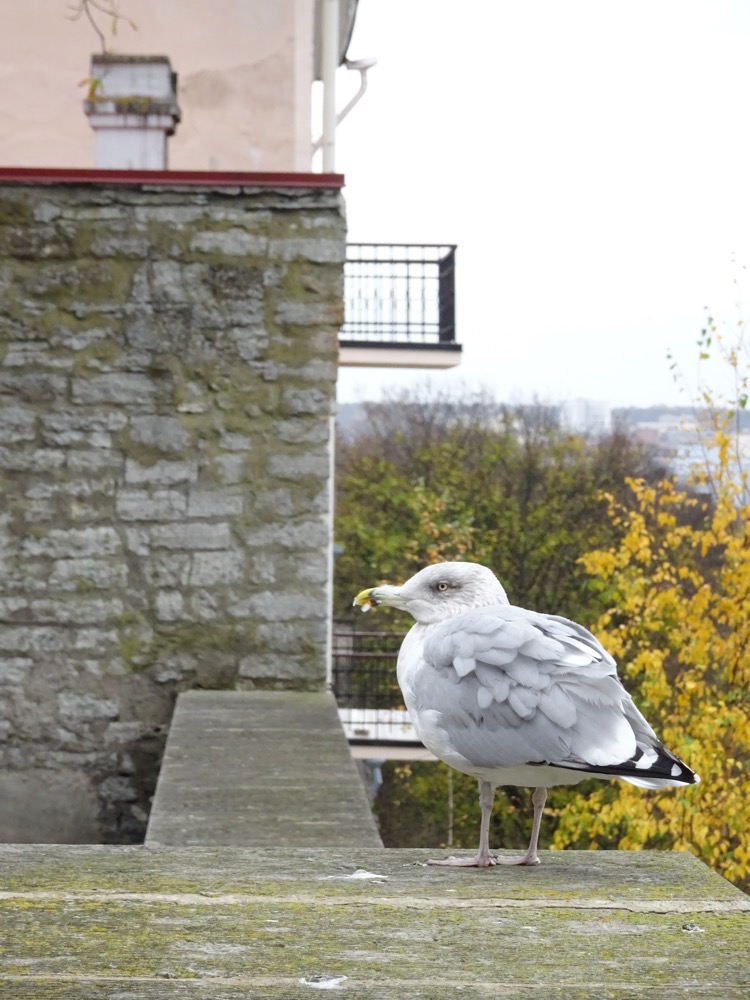
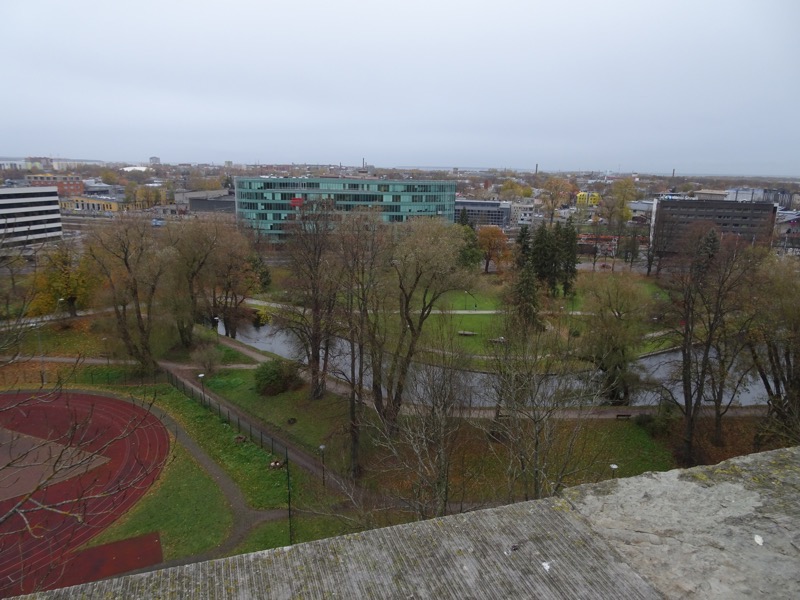 And there was no one here! Amazing… especially after still feeling swamped by tourists in Prague and Kiev.
And there was no one here! Amazing… especially after still feeling swamped by tourists in Prague and Kiev.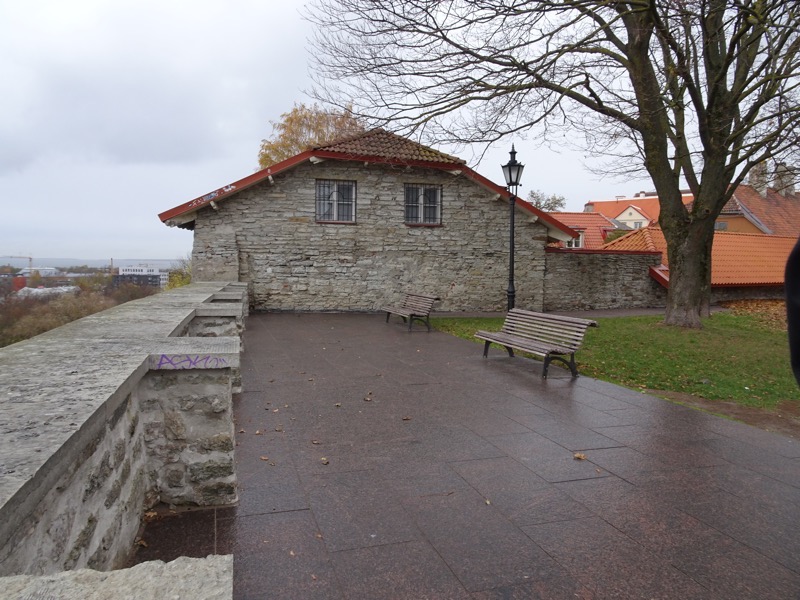 As you move around the Toompea area, views of the Alexander Nevsky’s onion domes can be seen peeking through the buildings in the narrow streets – I can’t believe they would still want to knock it down!
As you move around the Toompea area, views of the Alexander Nevsky’s onion domes can be seen peeking through the buildings in the narrow streets – I can’t believe they would still want to knock it down!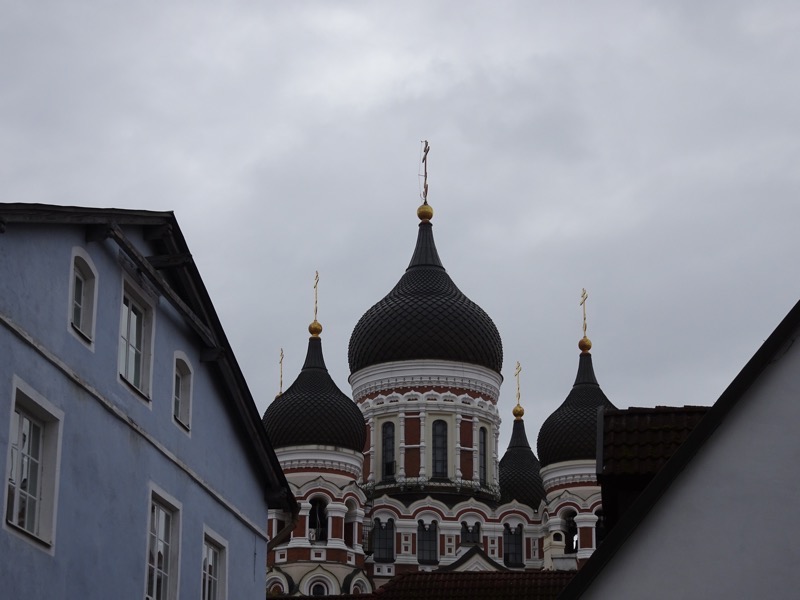
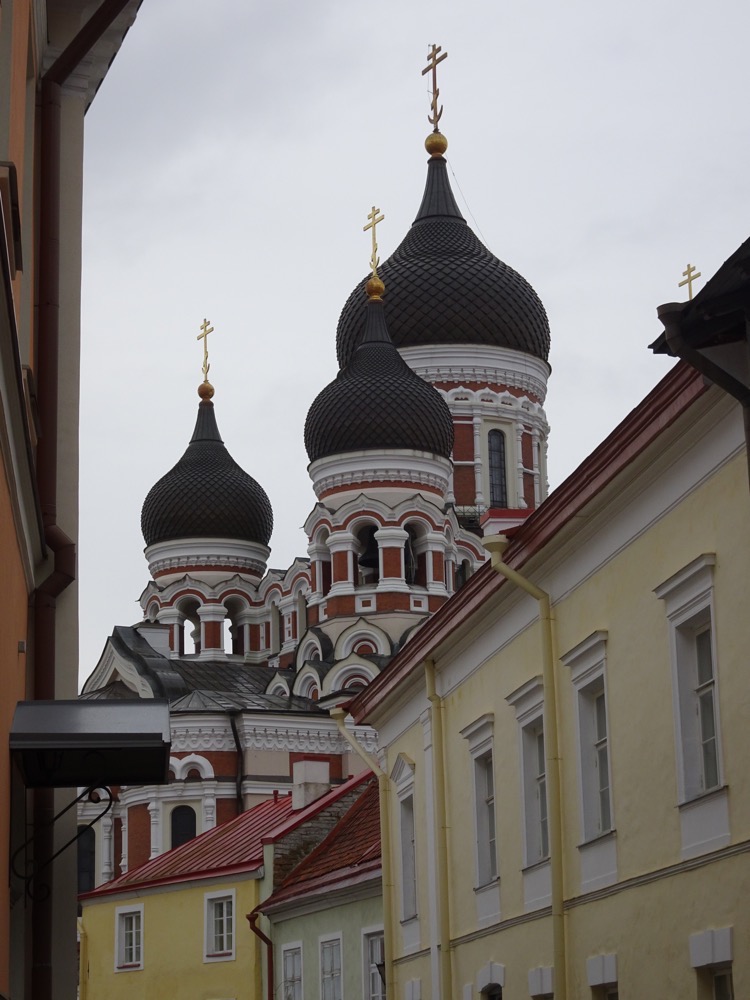 The only evidence that Tallinn was once a major port for the Hanseatic Guilds are these signs outside of the souvenir shops – the Hanseatic Guild of Souvenir Shop Owners perhaps? They certainly seem organised or even unionised to keep their pricing on par. 🙂
The only evidence that Tallinn was once a major port for the Hanseatic Guilds are these signs outside of the souvenir shops – the Hanseatic Guild of Souvenir Shop Owners perhaps? They certainly seem organised or even unionised to keep their pricing on par. 🙂 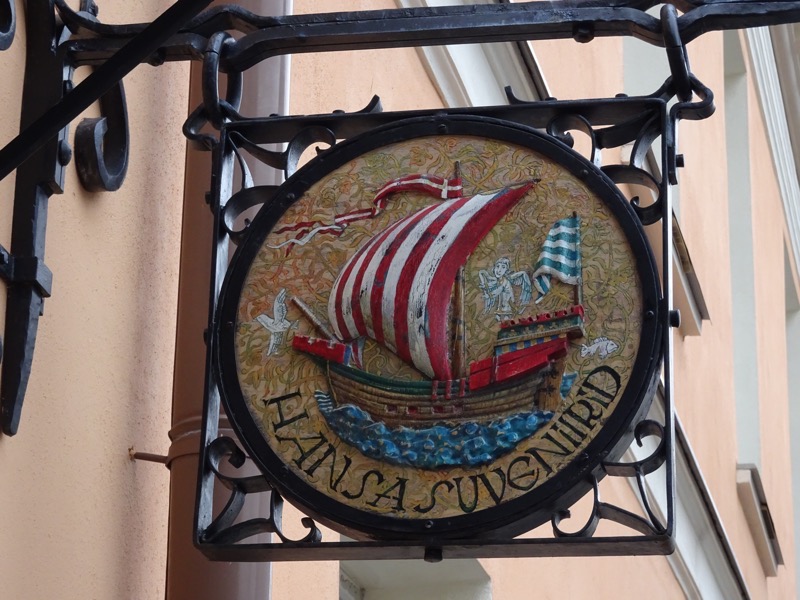
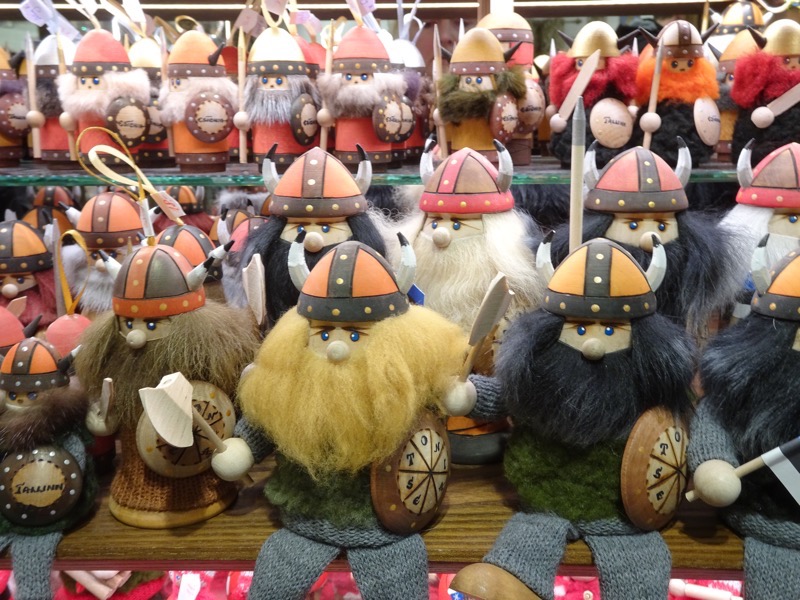
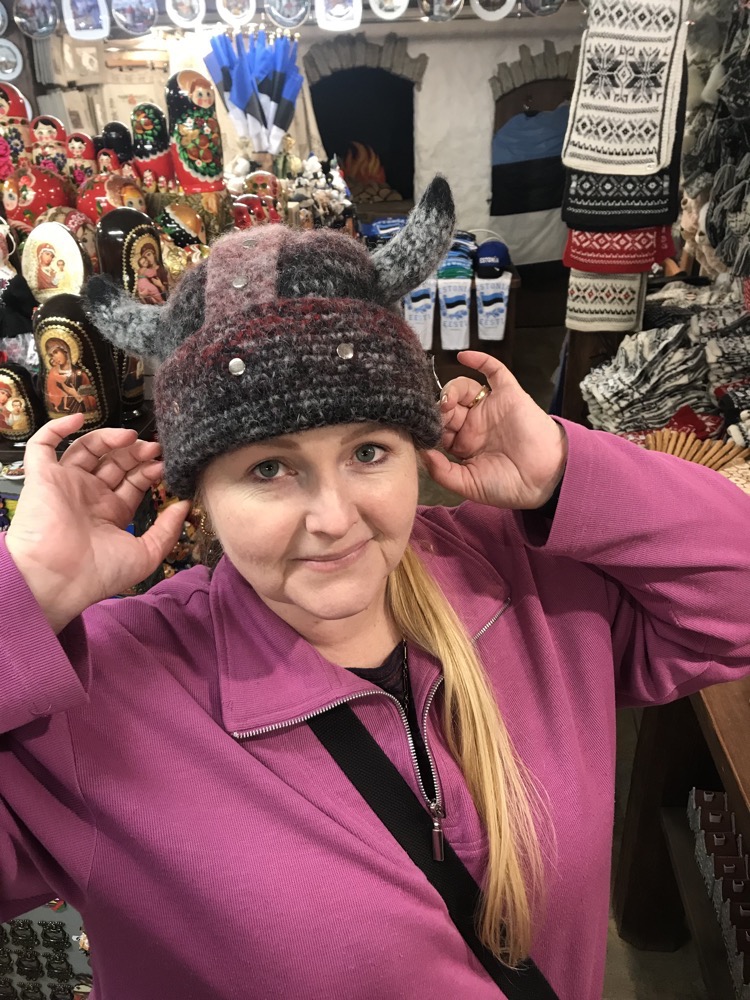 A little further around the town winding through the international embassies that are placed around Toompea near the Parliament buildings is another viewing platform, the Patkuli Viewing Platform.
A little further around the town winding through the international embassies that are placed around Toompea near the Parliament buildings is another viewing platform, the Patkuli Viewing Platform.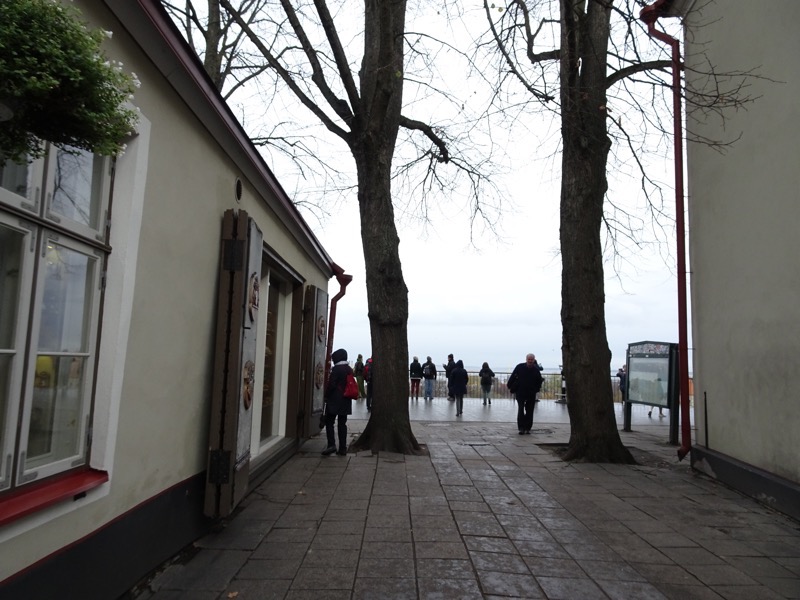 This time facing out over an older section of the city and with a few visitors.
This time facing out over an older section of the city and with a few visitors. 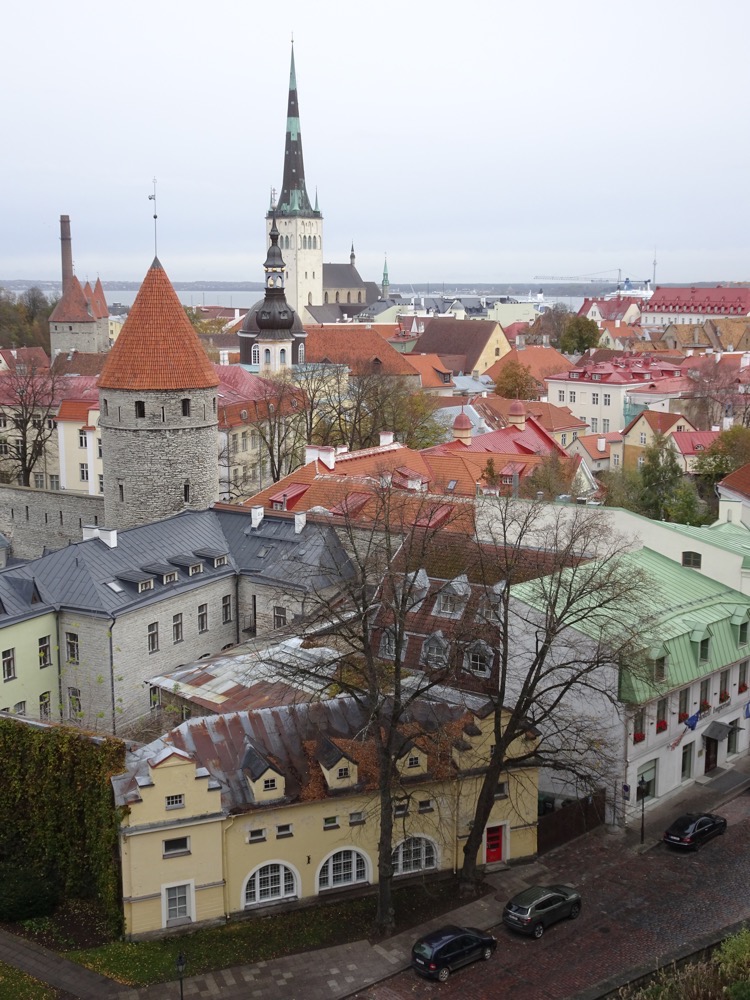
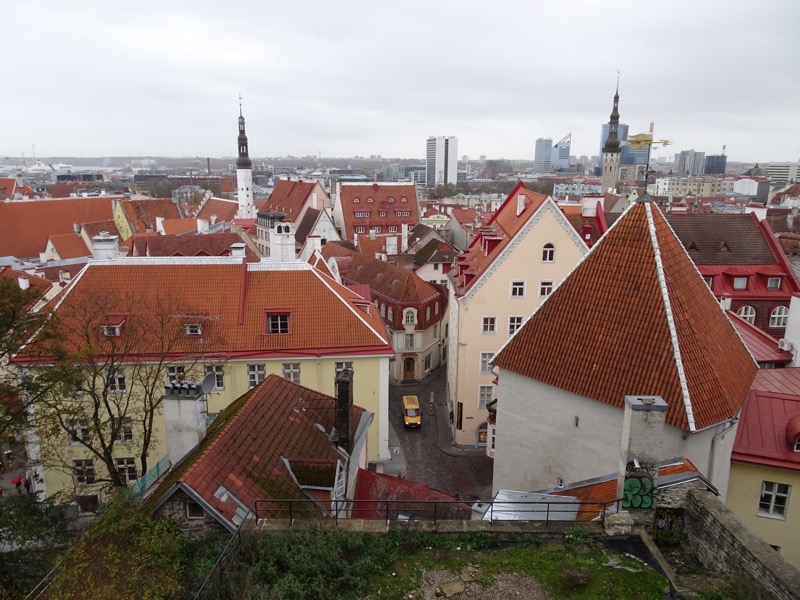
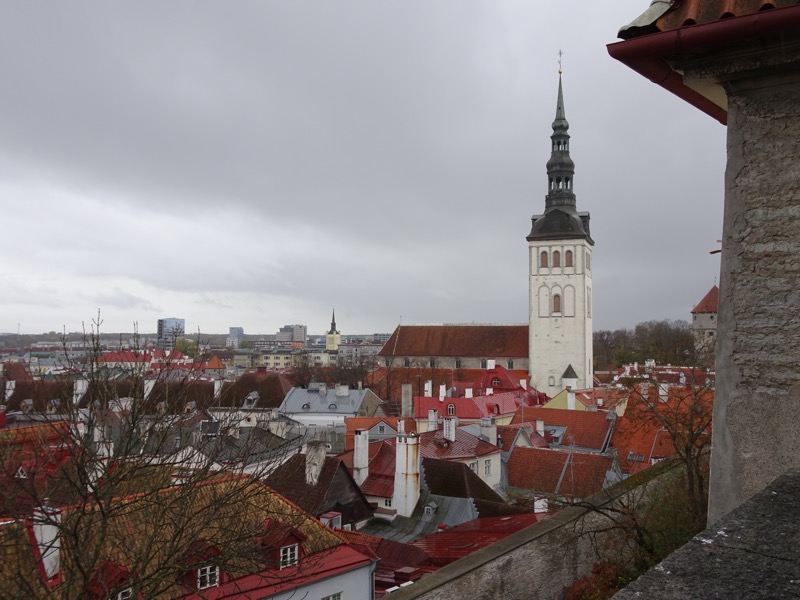 I took some panorama photos here so will have to share those on FB using the 3D thing. Amber, amber everywhere – some of it lovely, some of it hideous. It’s hard to find just nice chunks of amber that you could do your own thing with them, and when you do, they are enormous with price tags to match. I bought some rough amber beads (strings of large chips?) when I was here last year and have done absolutely nothing wtih them, so was determined not to buy more!
I took some panorama photos here so will have to share those on FB using the 3D thing. Amber, amber everywhere – some of it lovely, some of it hideous. It’s hard to find just nice chunks of amber that you could do your own thing with them, and when you do, they are enormous with price tags to match. I bought some rough amber beads (strings of large chips?) when I was here last year and have done absolutely nothing wtih them, so was determined not to buy more!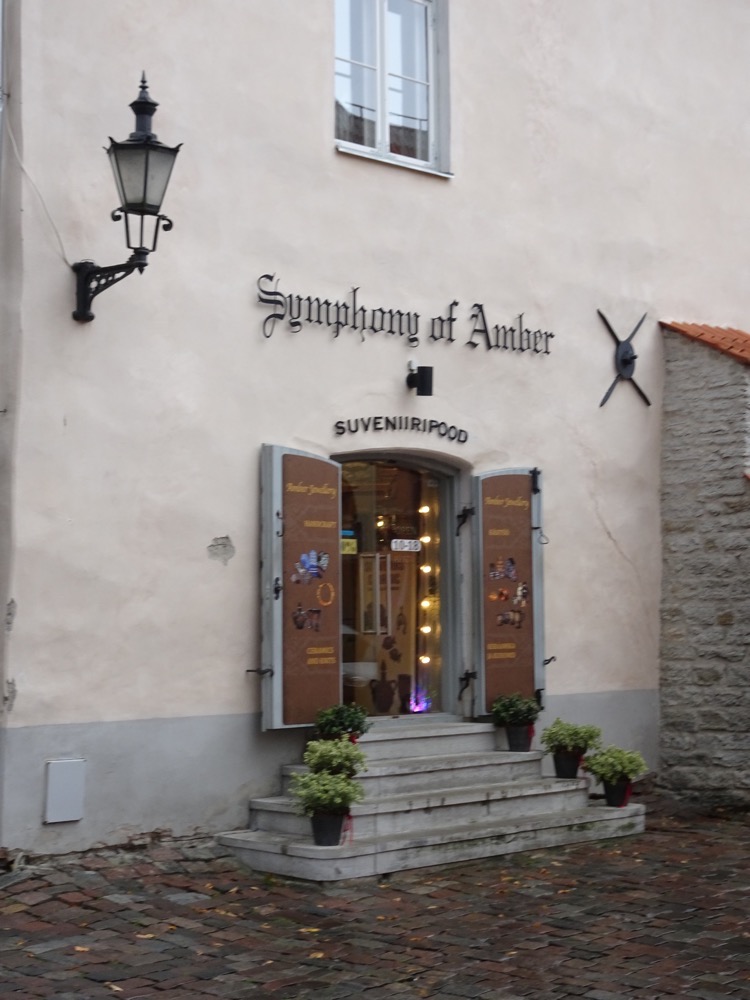
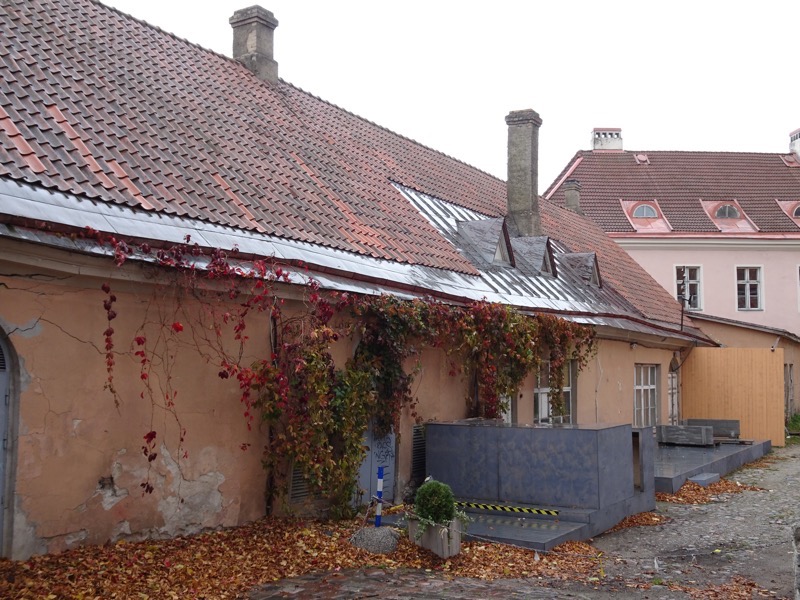
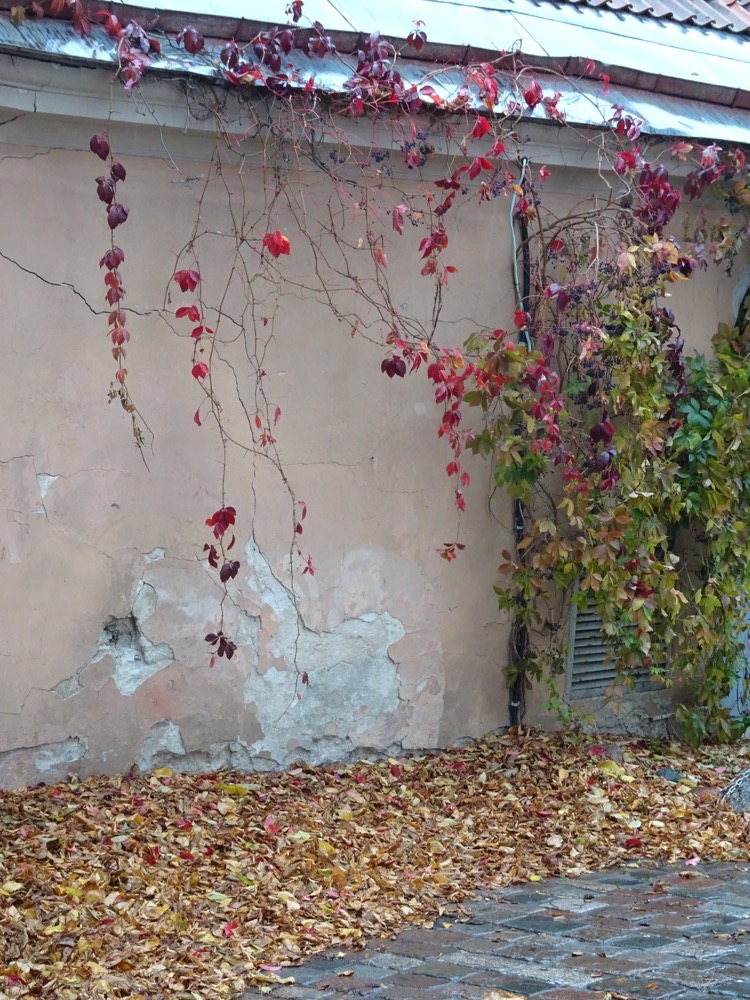
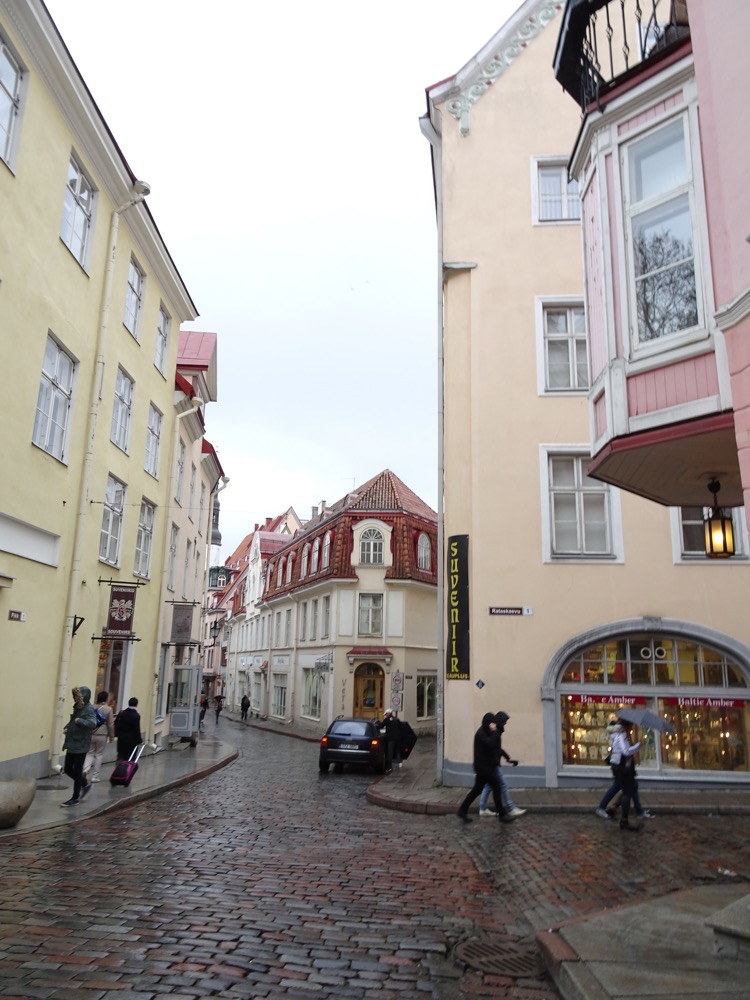
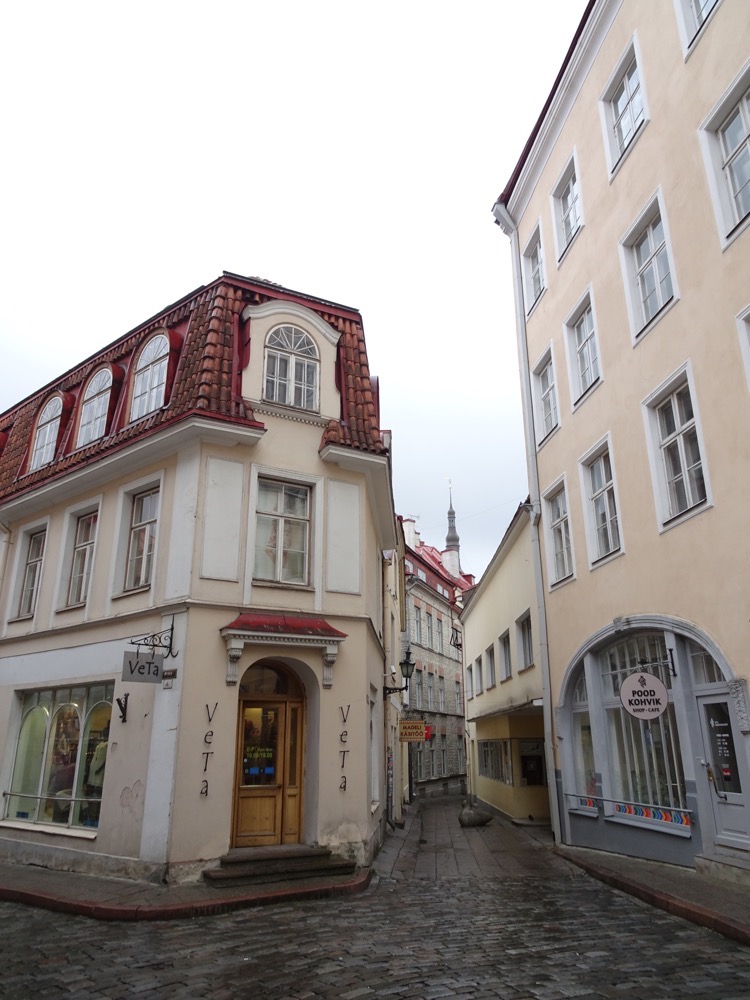 Which amazingly had nearly zero visitors. The Raekoja plats or Town Hall has been here since 1322 and the town square next to it has been here ever since then as well. The hall was rebuilt from 1402 to 1404 into its current form. Every year since 1441, the town puts up a large Christmas tree display in the square beside the Town Hall in a tradition that is now over 570 years old. You can visit inside the Town Hall – between the months of June and August.
Which amazingly had nearly zero visitors. The Raekoja plats or Town Hall has been here since 1322 and the town square next to it has been here ever since then as well. The hall was rebuilt from 1402 to 1404 into its current form. Every year since 1441, the town puts up a large Christmas tree display in the square beside the Town Hall in a tradition that is now over 570 years old. You can visit inside the Town Hall – between the months of June and August.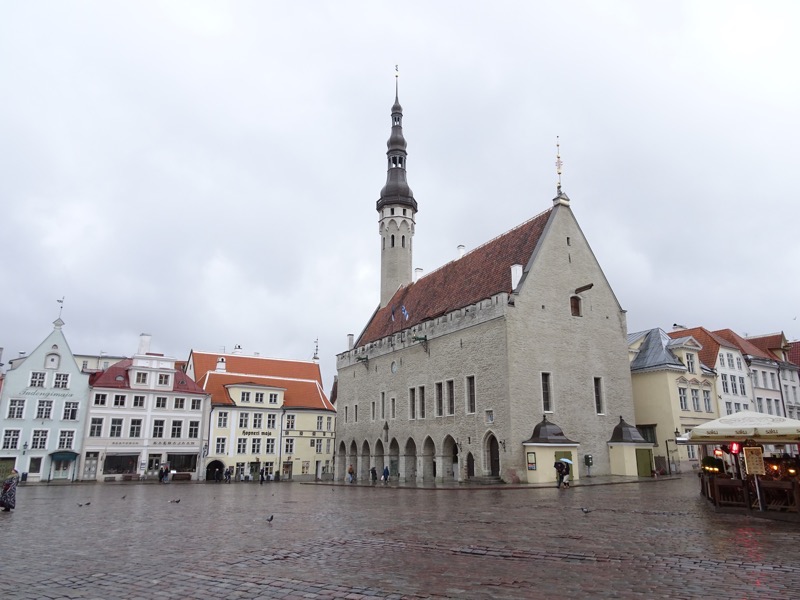 The Square is lined with restaurants, cafes and shops – most of which are fairly empty today. Some of which have signs out saying ‘Thanks for a great summer – see you next year!’.
The Square is lined with restaurants, cafes and shops – most of which are fairly empty today. Some of which have signs out saying ‘Thanks for a great summer – see you next year!’.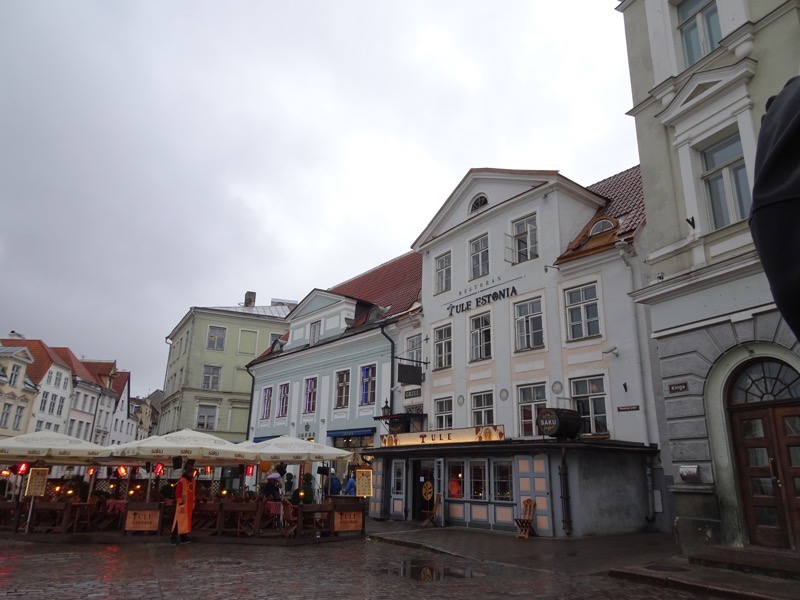
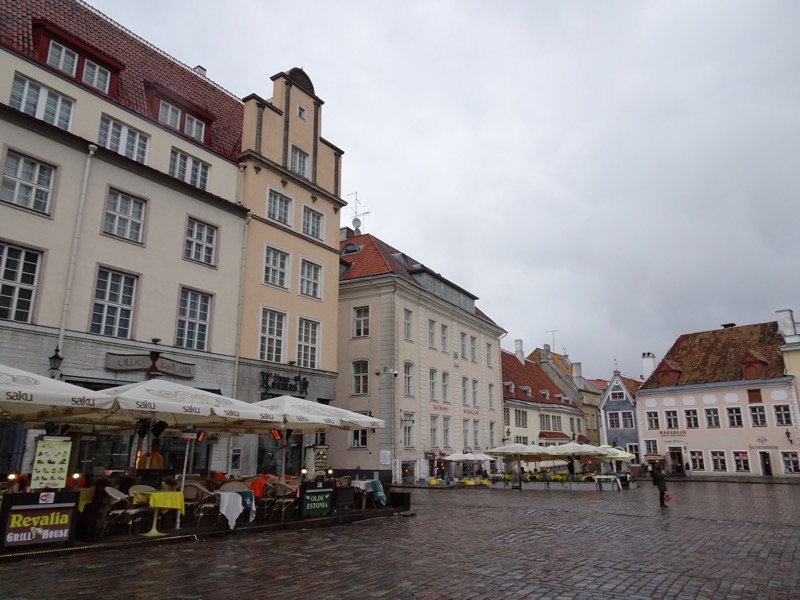

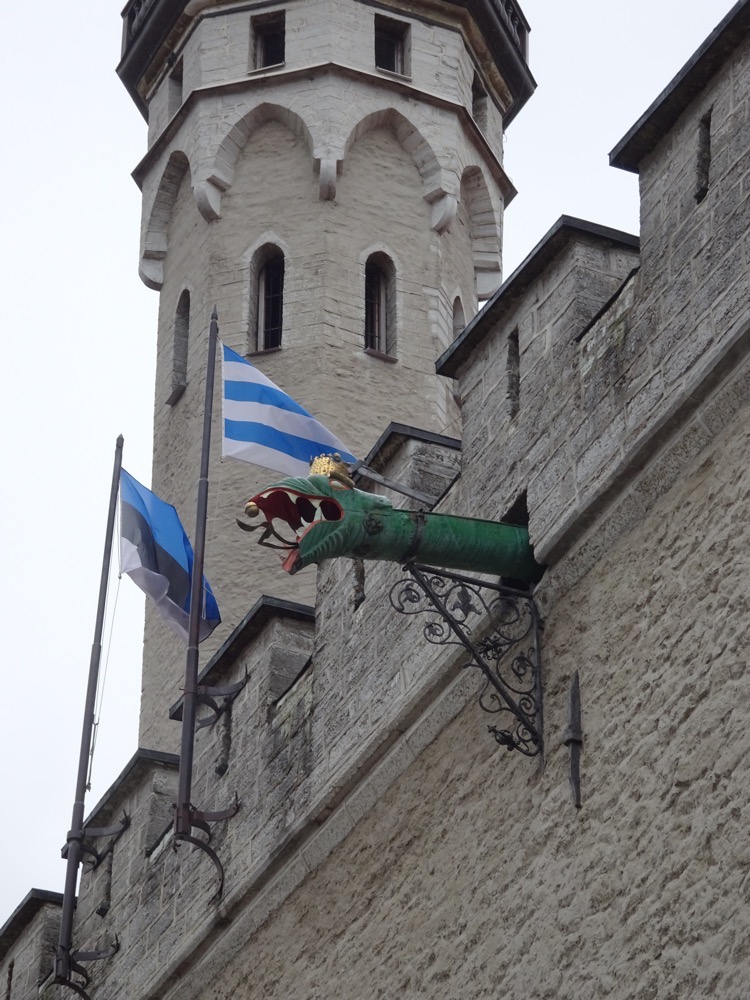
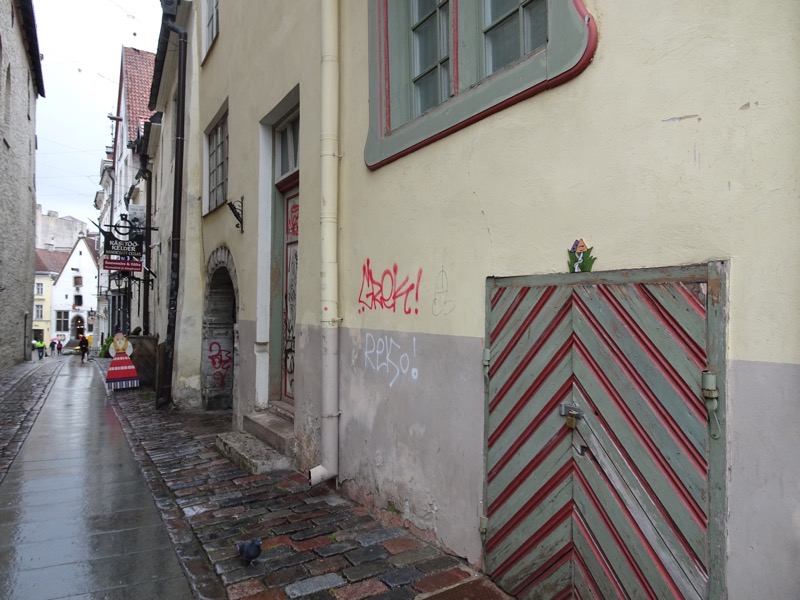
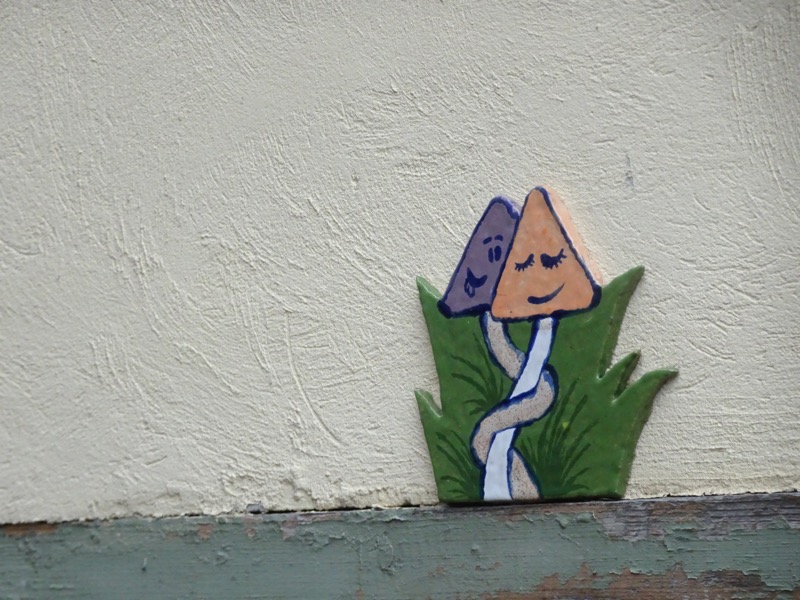 The old jail which is right beside the Town Hall and is now a photography exhibit.
The old jail which is right beside the Town Hall and is now a photography exhibit.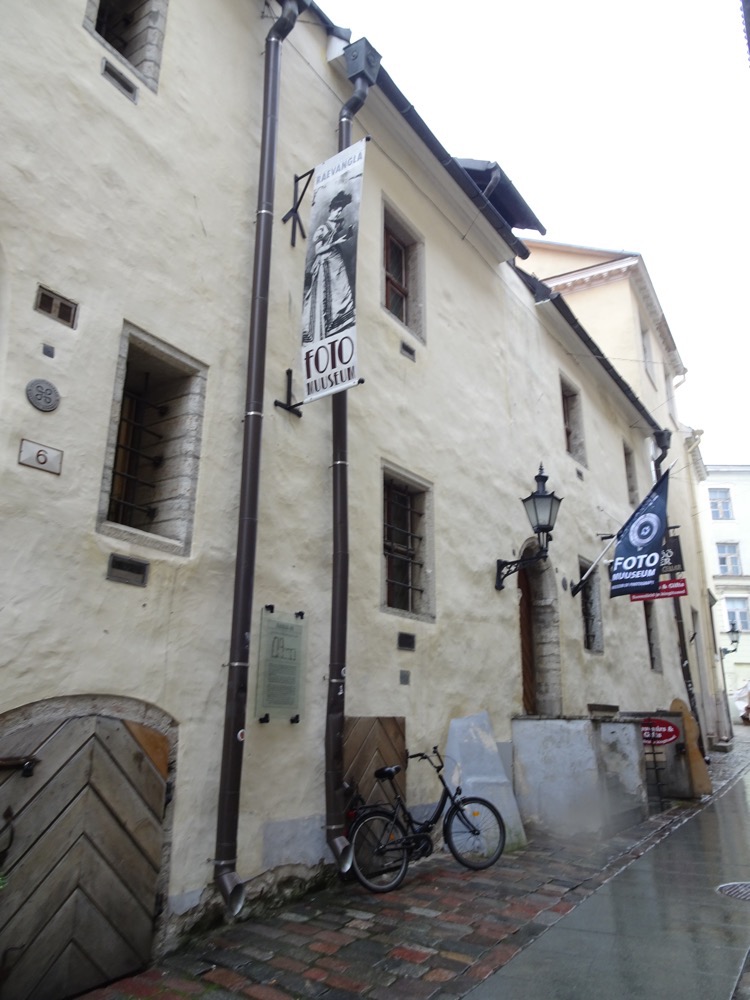
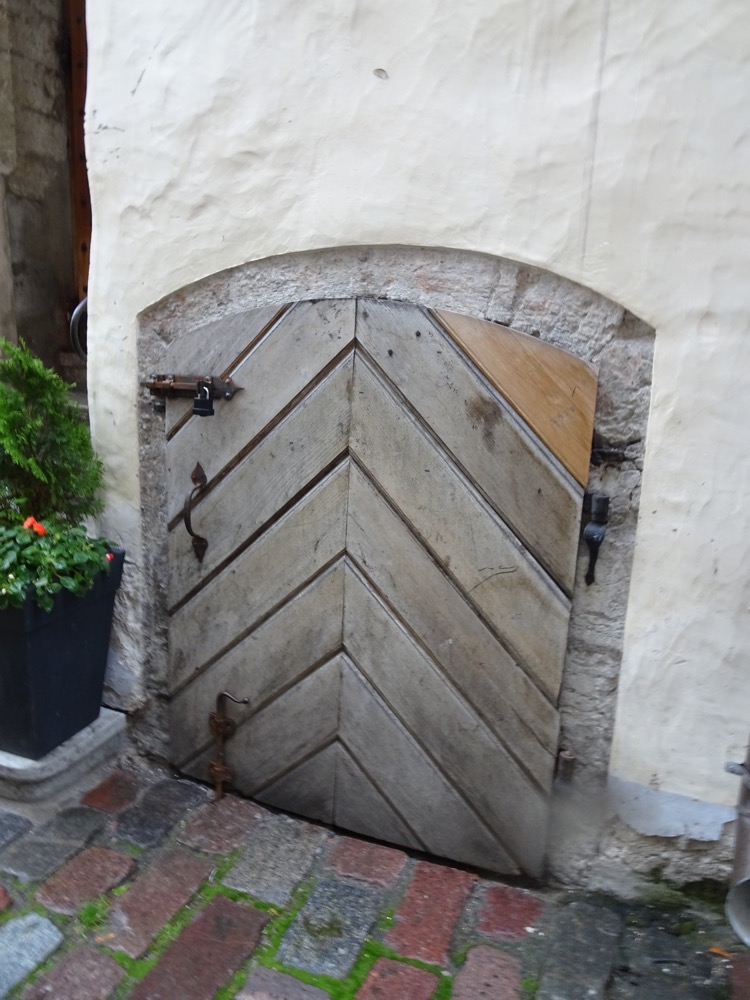
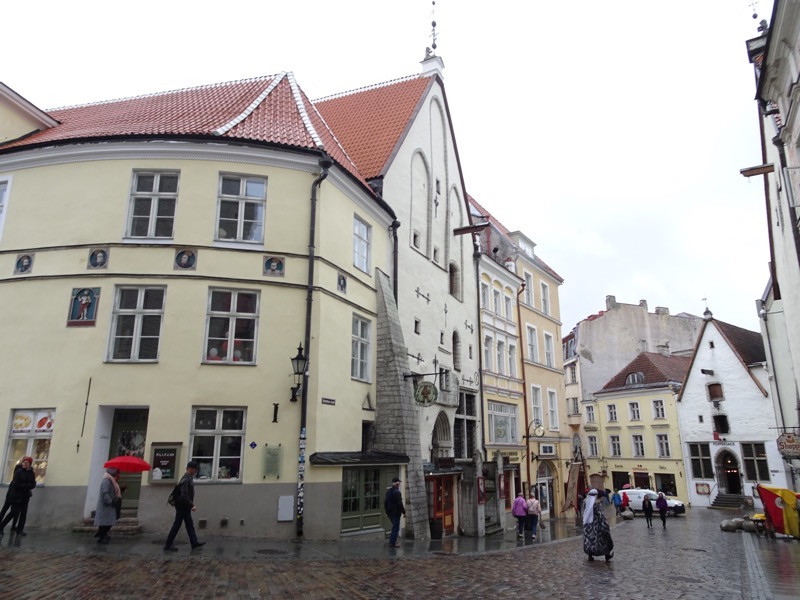
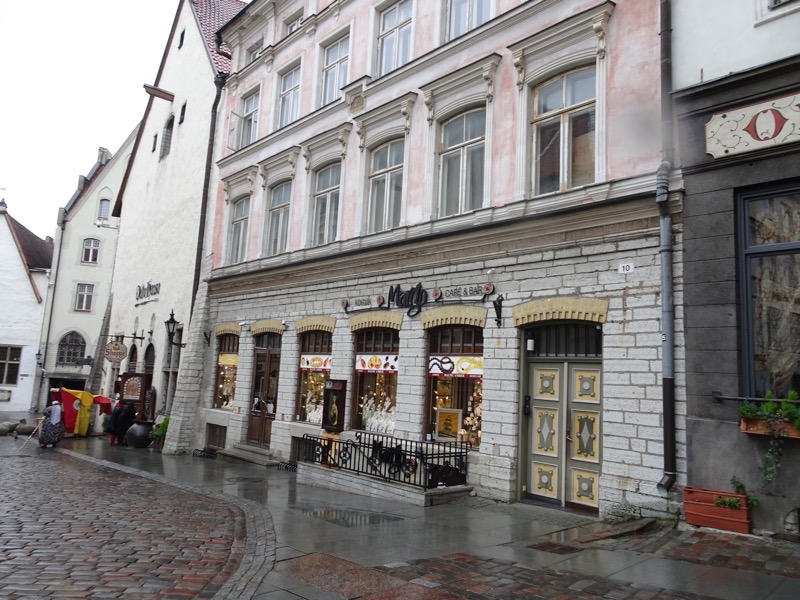 By this point we were looking for somewhere to warm up a bit – maybe some mulled wine and a light lunch. We saw this restaurant with the promise of mushroom soup on their chalkboard and were enticed inside. We had no idea what we were walking into – but rolled with it nonetheless.
By this point we were looking for somewhere to warm up a bit – maybe some mulled wine and a light lunch. We saw this restaurant with the promise of mushroom soup on their chalkboard and were enticed inside. We had no idea what we were walking into – but rolled with it nonetheless.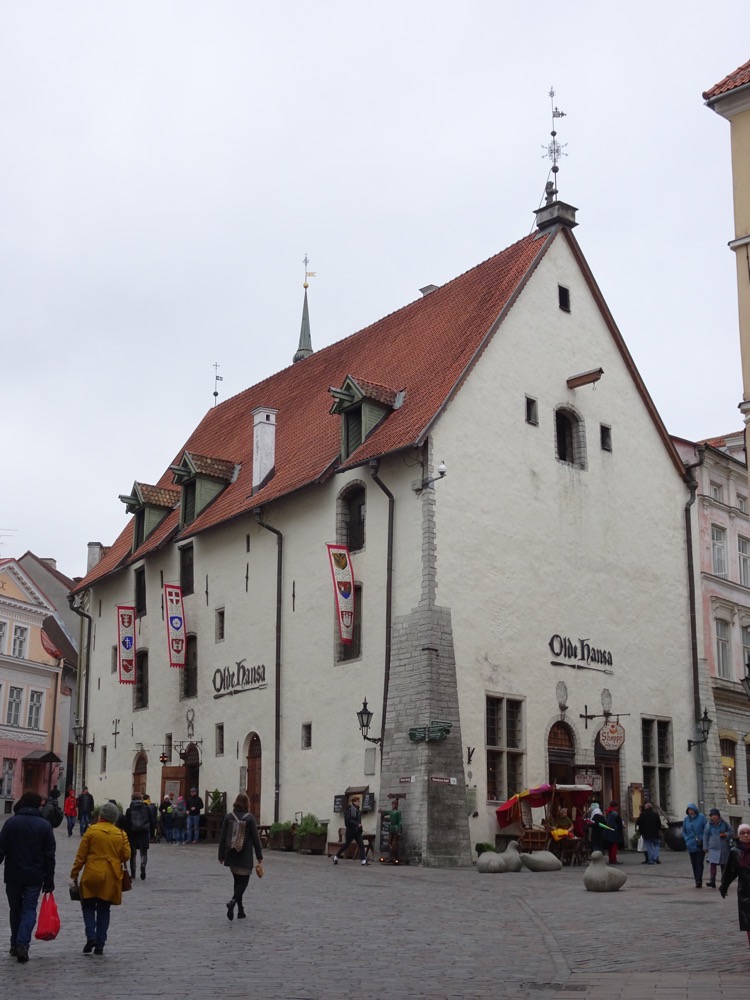
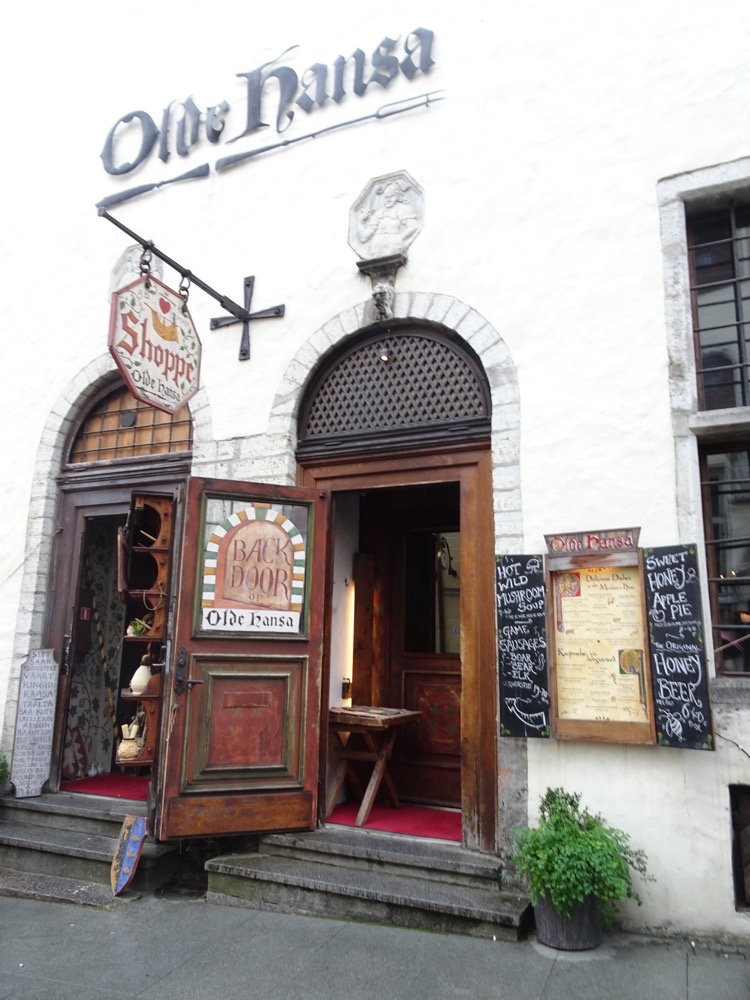 Turns out it is the most touristy of touristy medieval tavern/cafe/restaurants in town! Complete with garbed waitstaff and a hearty, “Greetings traveller, can we offer you some fare to warm your gullet” type welcome. Oh dear.
Turns out it is the most touristy of touristy medieval tavern/cafe/restaurants in town! Complete with garbed waitstaff and a hearty, “Greetings traveller, can we offer you some fare to warm your gullet” type welcome. Oh dear. 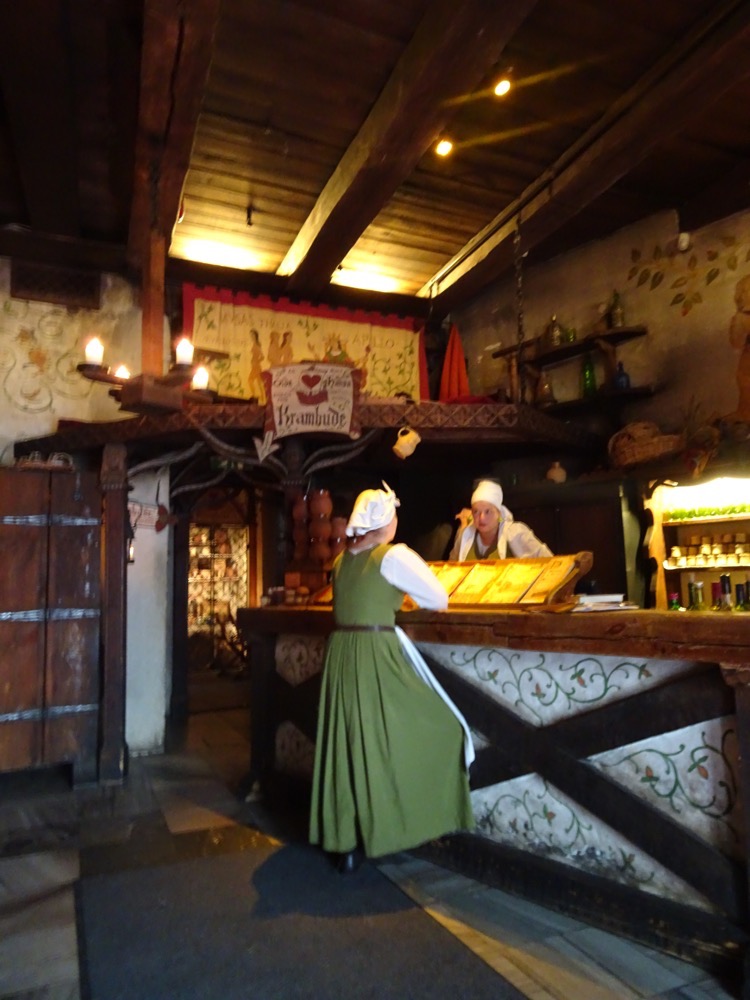 The entire hall is lit only by candlelight and the menu was really quite interesting.
The entire hall is lit only by candlelight and the menu was really quite interesting.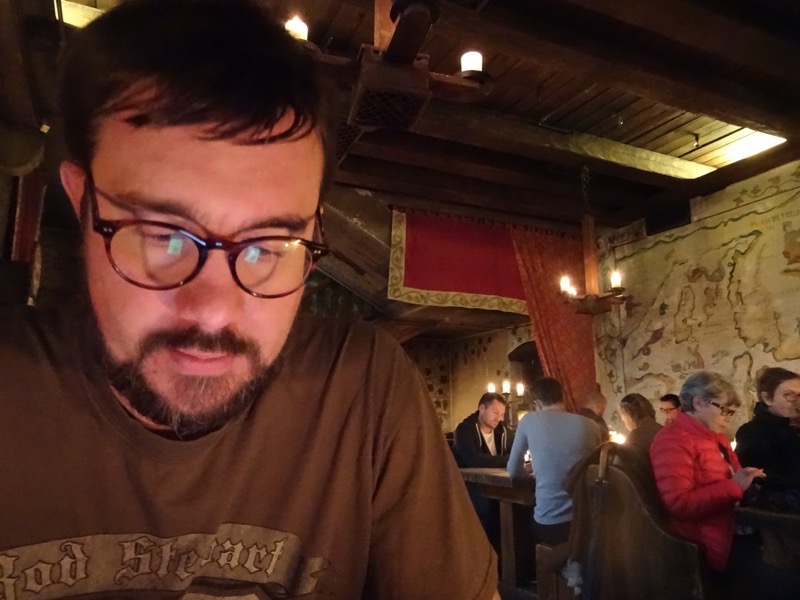
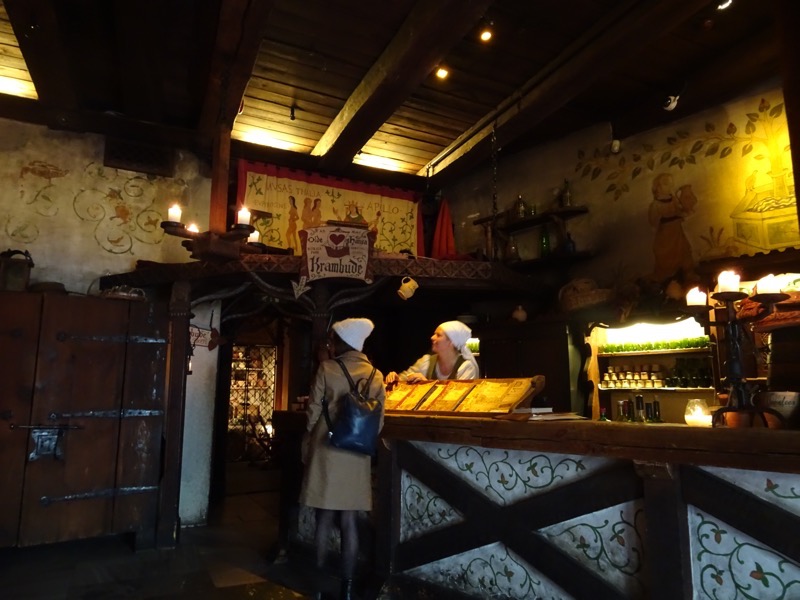 We were unaware, but visitors were even able to dress in medieval clothing to enjoy their medieval lunch. Apparently, this place is a major draw for many visitors to Tallinn. and rates very highly on Trip Advisor –
We were unaware, but visitors were even able to dress in medieval clothing to enjoy their medieval lunch. Apparently, this place is a major draw for many visitors to Tallinn. and rates very highly on Trip Advisor –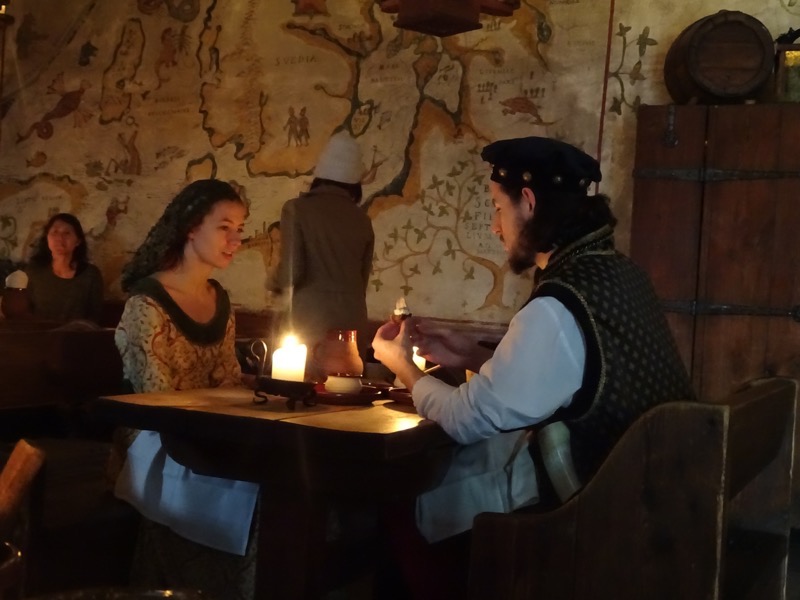 Having only come in for a cider/mulled wine and some soup – we ended up trying lots of interesting food. Designed as an entree for one, we shared this ‘Neptune’s Platter’ which contained – Salmon eggs, Andalusian fish, smoke-grilled salmon, herring, anchovies, quail eggs, Castle’s fresh cheese, herb-bread with nuts, rye bread with smoked ham.
Having only come in for a cider/mulled wine and some soup – we ended up trying lots of interesting food. Designed as an entree for one, we shared this ‘Neptune’s Platter’ which contained – Salmon eggs, Andalusian fish, smoke-grilled salmon, herring, anchovies, quail eggs, Castle’s fresh cheese, herb-bread with nuts, rye bread with smoked ham. 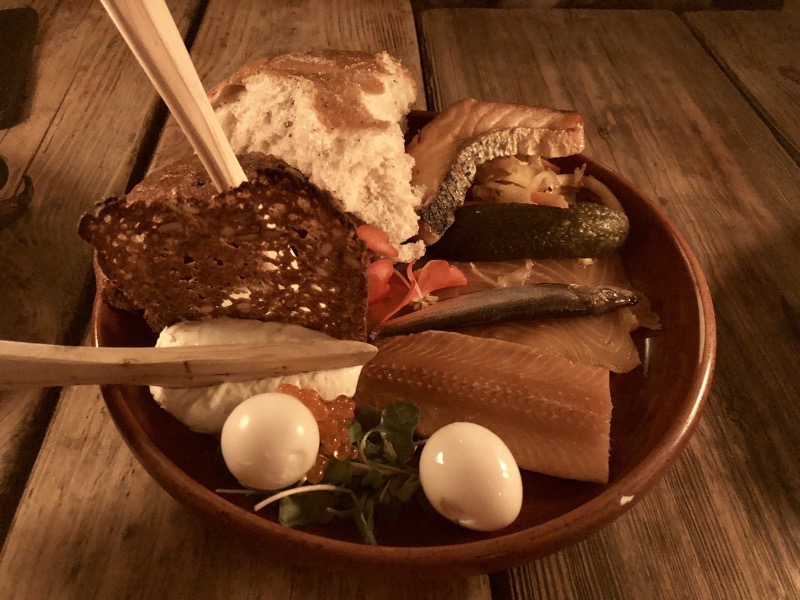 yale ordered the
yale ordered the 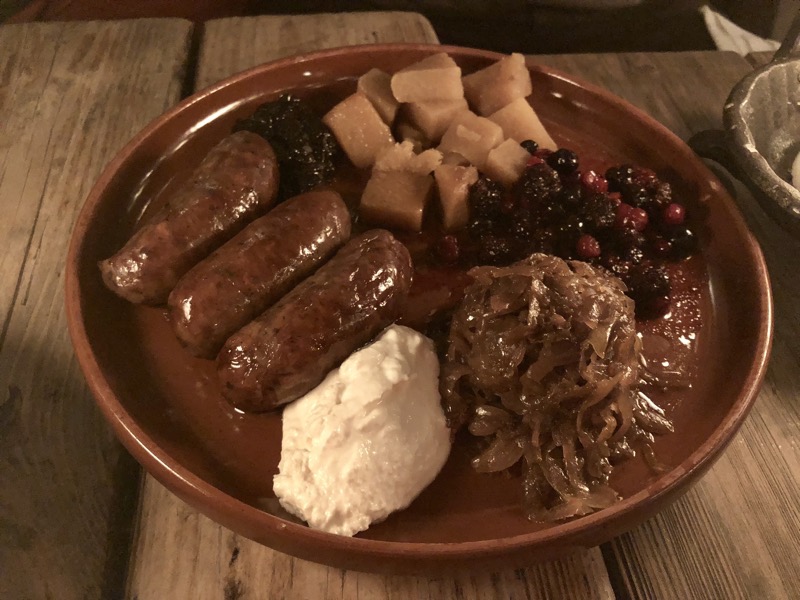
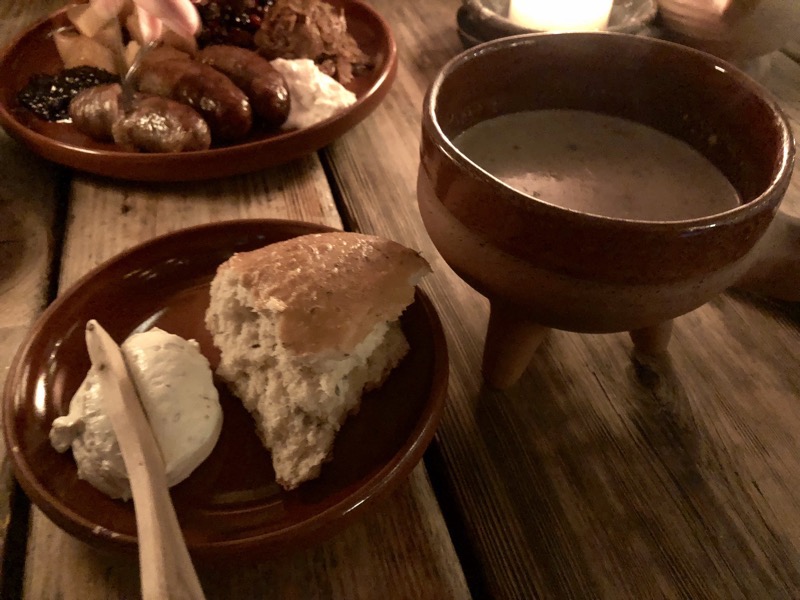 Afterwards we had enjoyed the Neptune Platter so well, that we decided to not have a dessert but instead flip back to try the non-seafood version taster plate called the Reval’s Beef and Liver Pate Tasting Plate, which contained: Juniper-flavoured beef, orange tongue jelly, French royal poultry liver paté, olives, breads and caramelized onion jam. Also all very tasty. One thing about eating out with yale – I get to try all the things knowing he will finish them. 🙂
Afterwards we had enjoyed the Neptune Platter so well, that we decided to not have a dessert but instead flip back to try the non-seafood version taster plate called the Reval’s Beef and Liver Pate Tasting Plate, which contained: Juniper-flavoured beef, orange tongue jelly, French royal poultry liver paté, olives, breads and caramelized onion jam. Also all very tasty. One thing about eating out with yale – I get to try all the things knowing he will finish them. 🙂 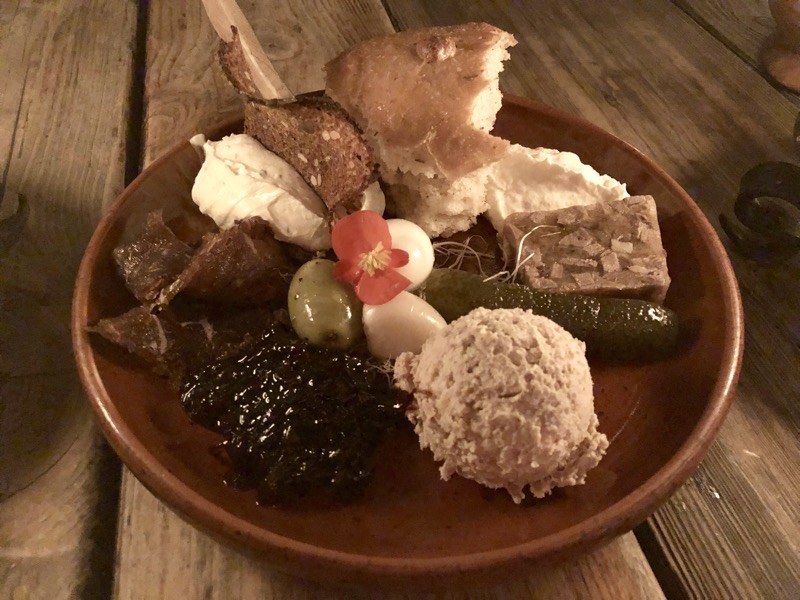
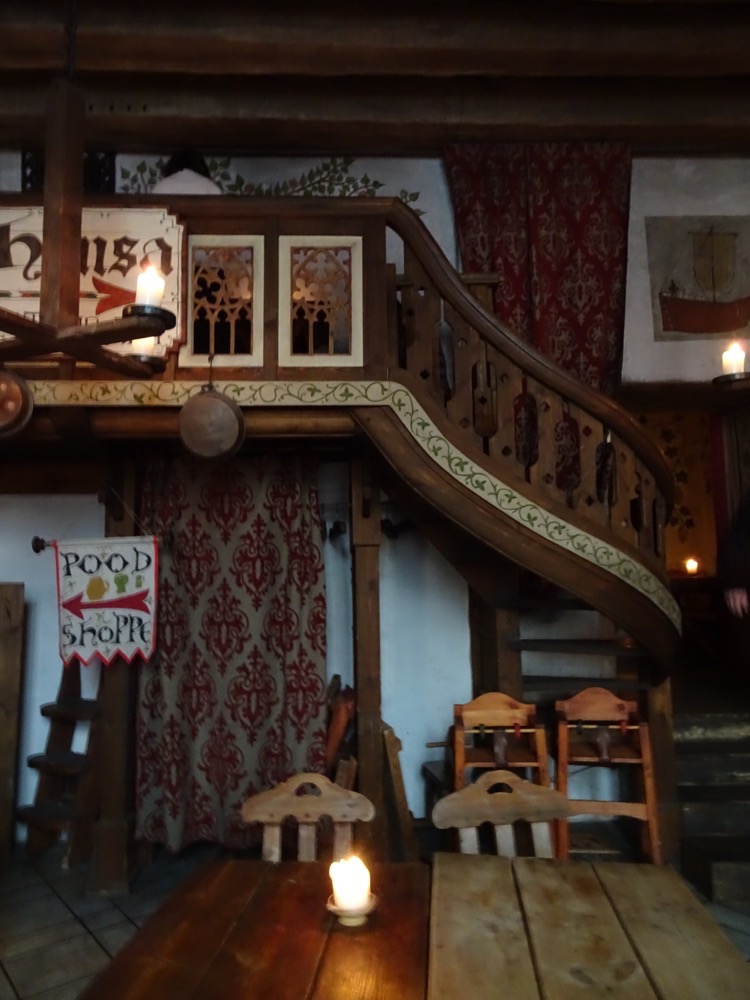
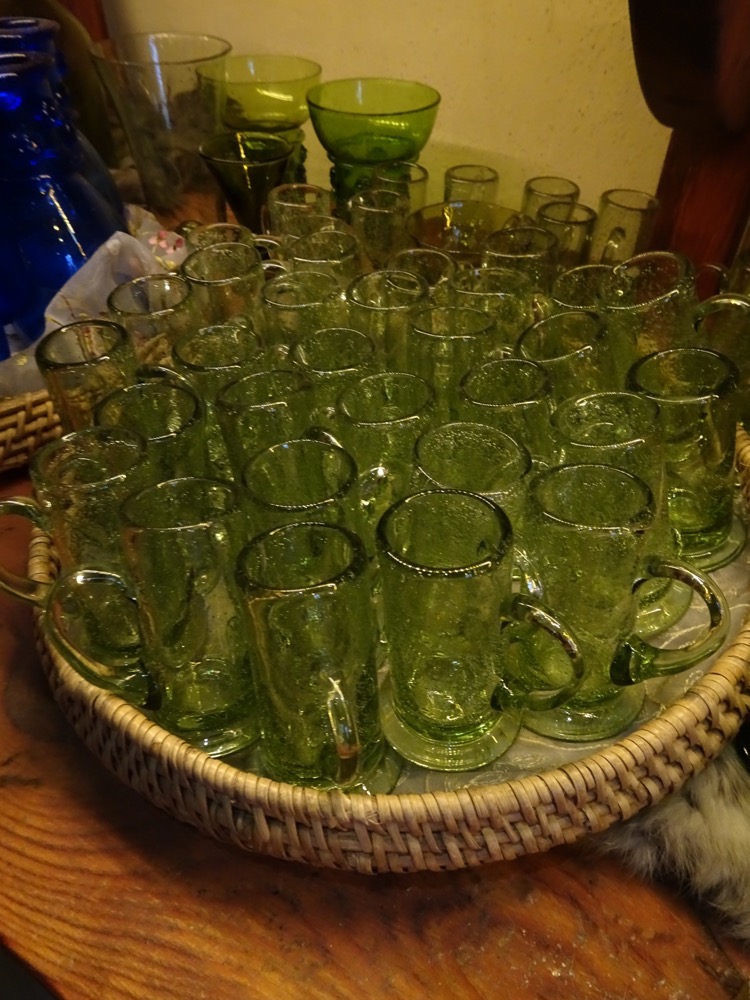
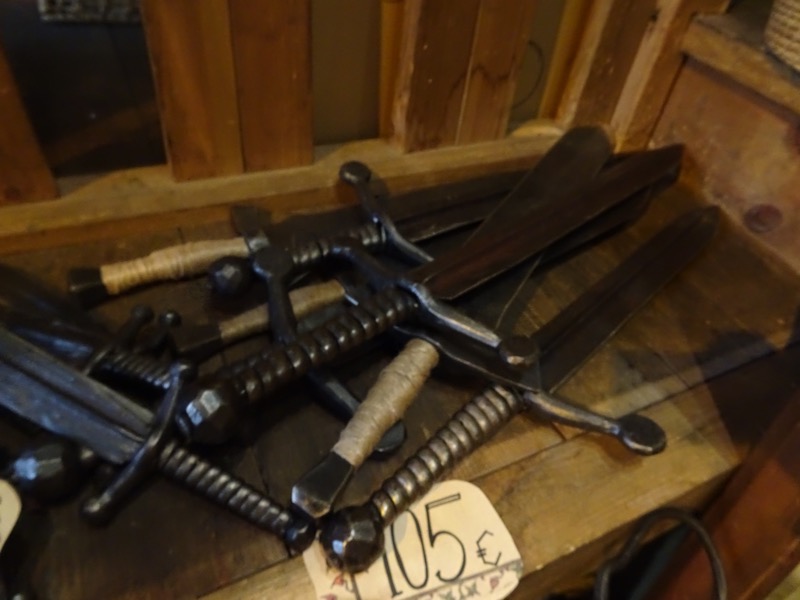
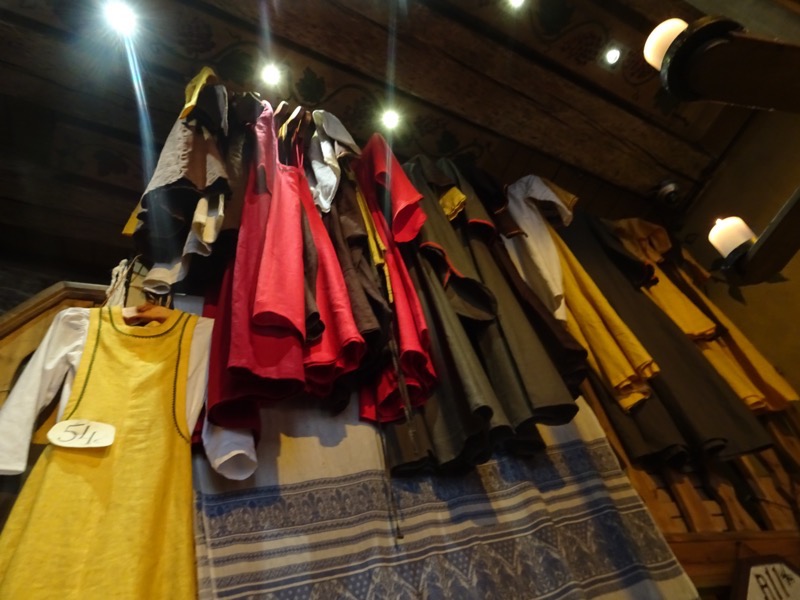
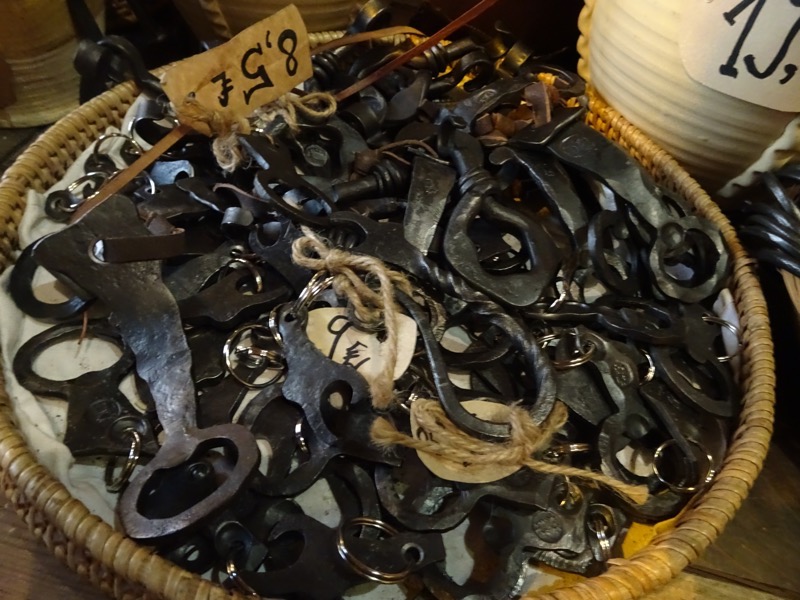
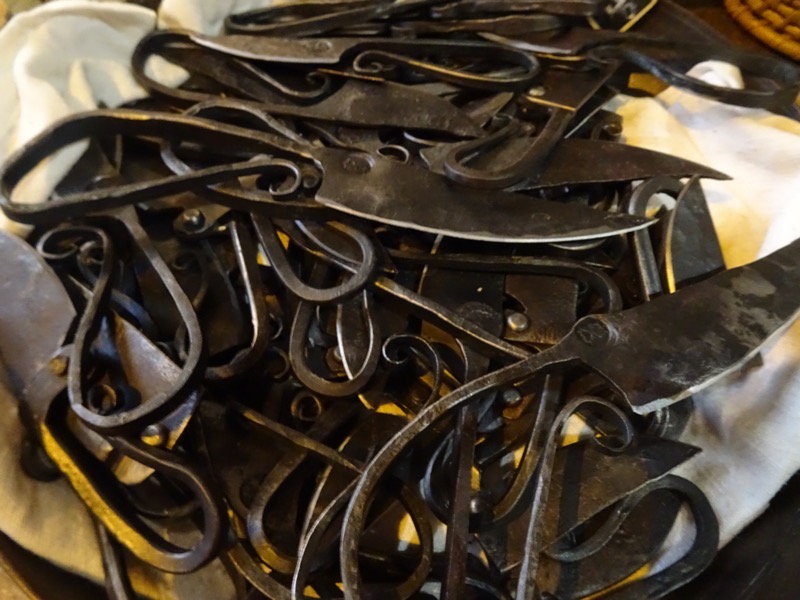
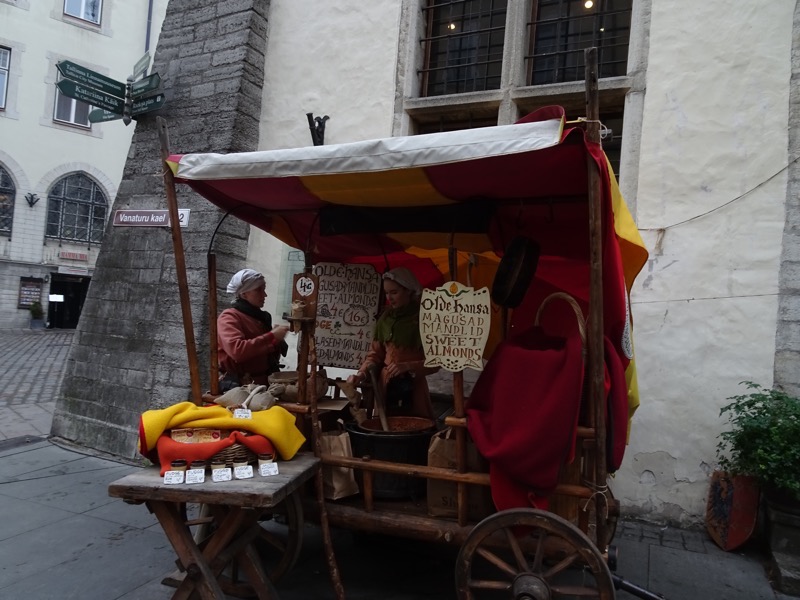 I am not sure what this was about on the website of a different nearby ‘medieval’ tavern… is it lodgings for if you’re drunk and can’t drive home? Or are they offering ‘special services’ upstairs? 😮
I am not sure what this was about on the website of a different nearby ‘medieval’ tavern… is it lodgings for if you’re drunk and can’t drive home? Or are they offering ‘special services’ upstairs? 😮 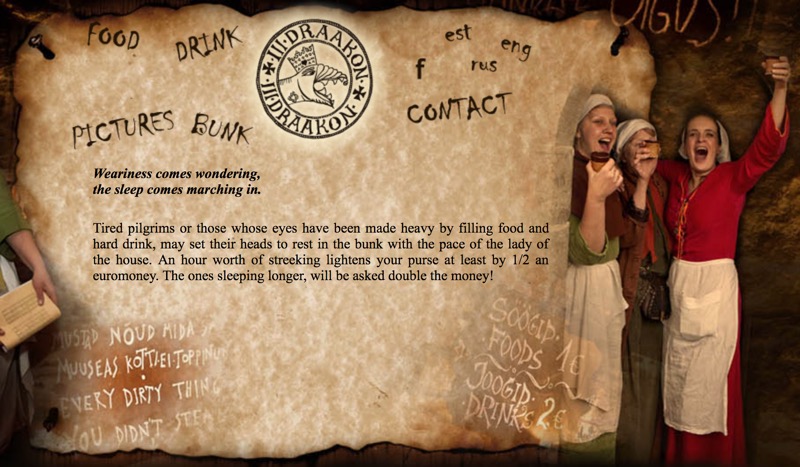 Back out on the street we went looking for the Town Hall Pharmacy also known as the Raeapteek which is the oldest pharmacy in Europe that has been in continuous operation in the same premises.
Back out on the street we went looking for the Town Hall Pharmacy also known as the Raeapteek which is the oldest pharmacy in Europe that has been in continuous operation in the same premises.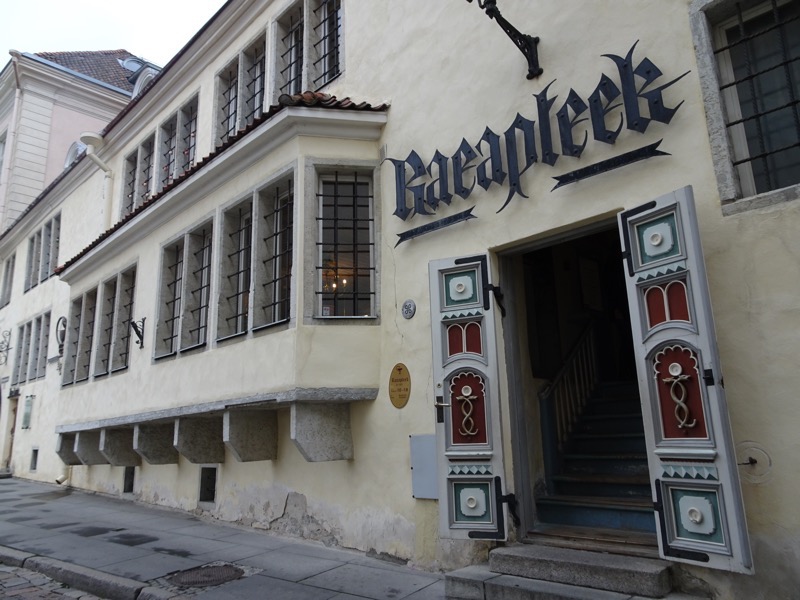
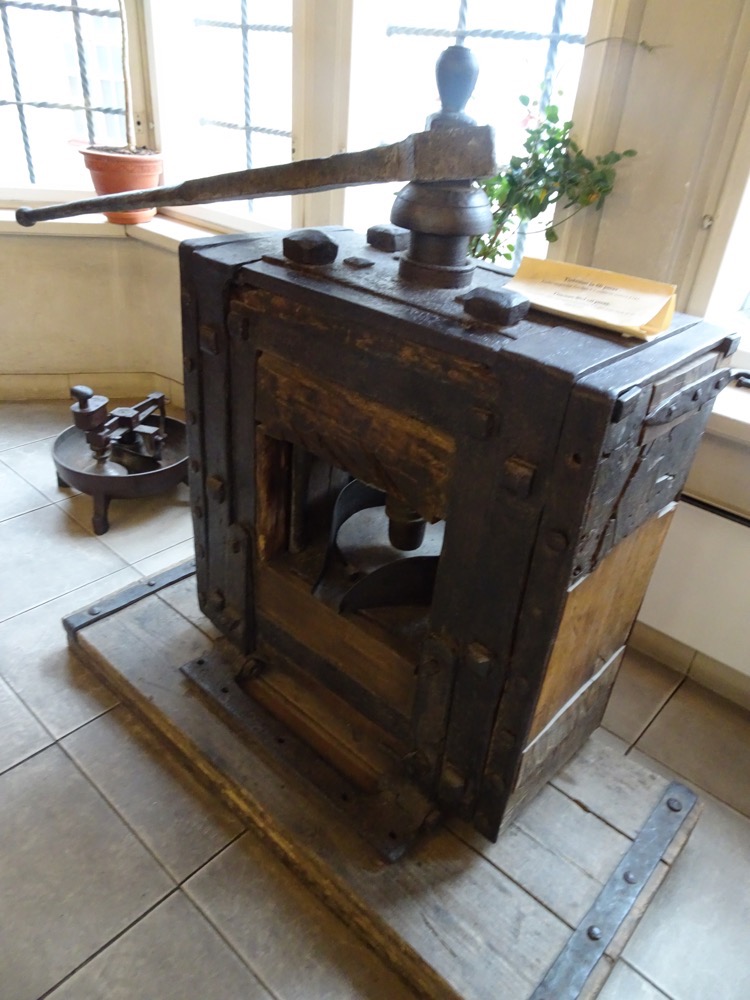
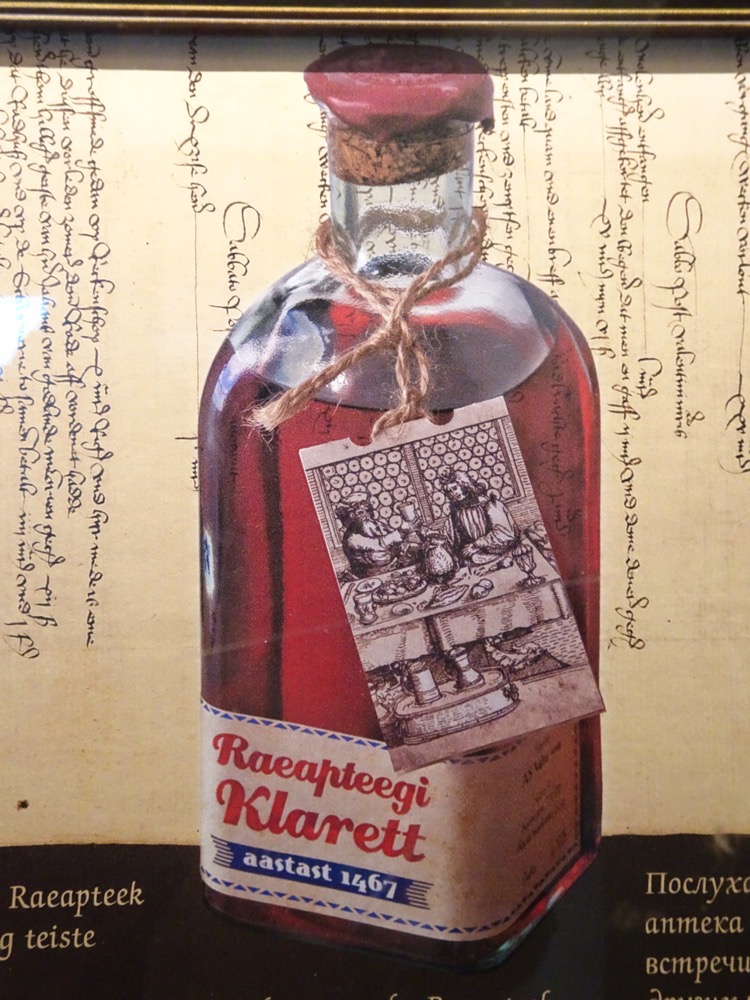
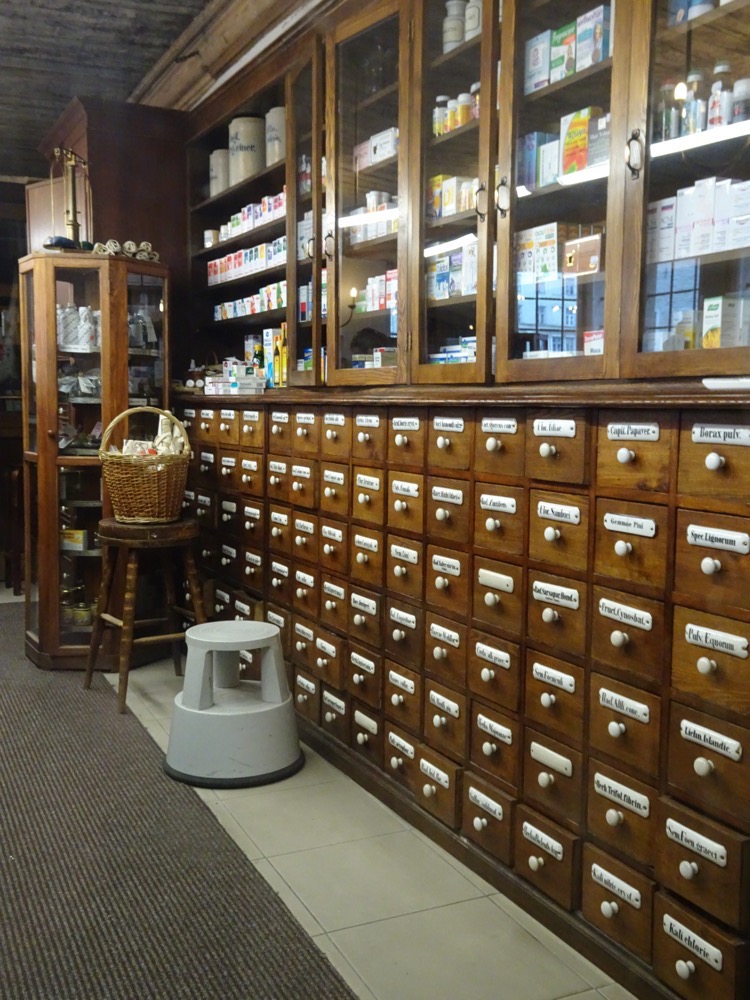 It looked a bit weird to see all the modern medicines in the old cabinets – but it is still a working pharmacy so you can go buy your panadol here.
It looked a bit weird to see all the modern medicines in the old cabinets – but it is still a working pharmacy so you can go buy your panadol here.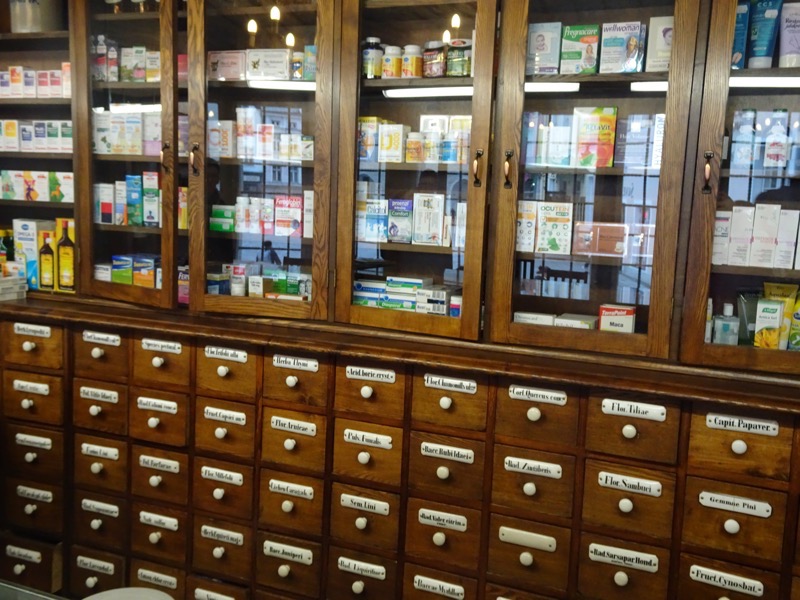 There is a small museum of old ‘treatments’… dried toads, bats, hedgehogs?
There is a small museum of old ‘treatments’… dried toads, bats, hedgehogs?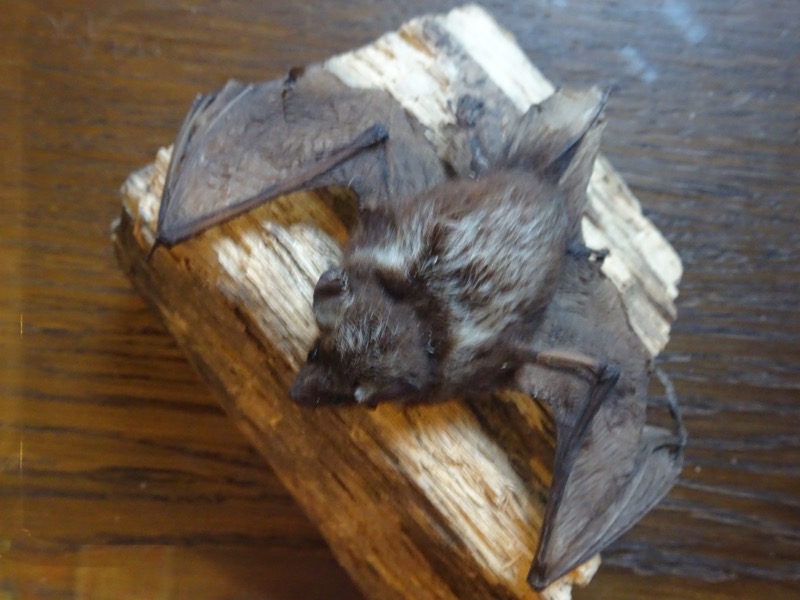
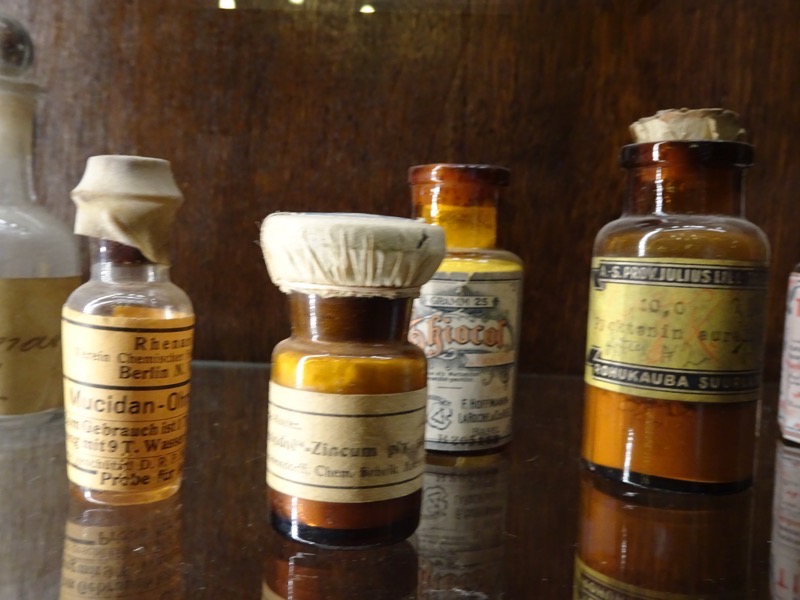
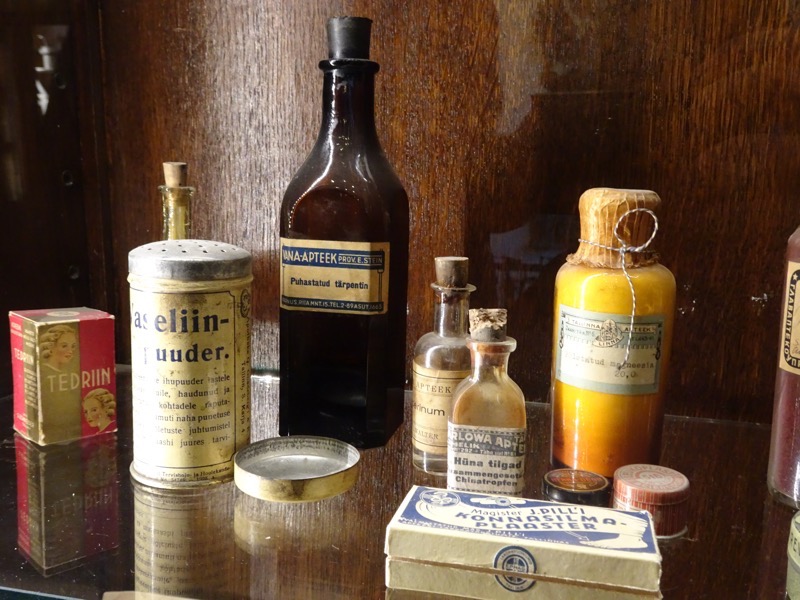
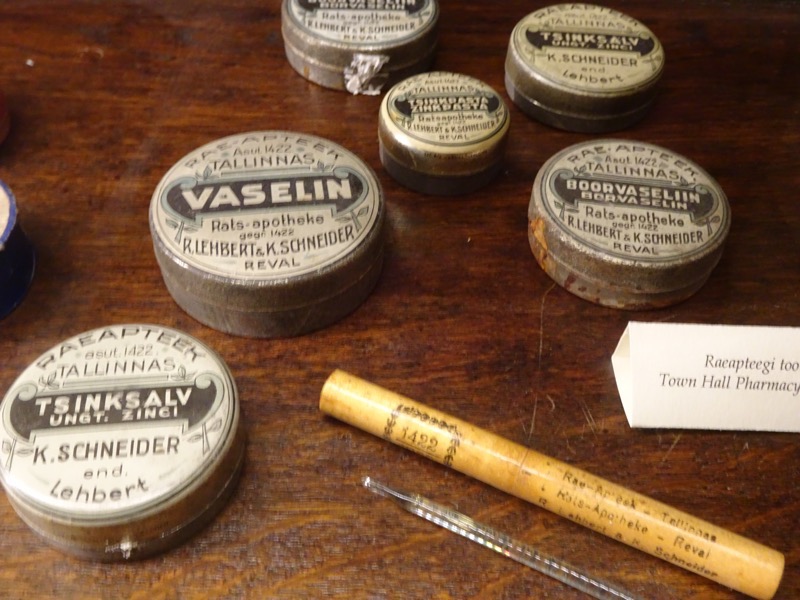
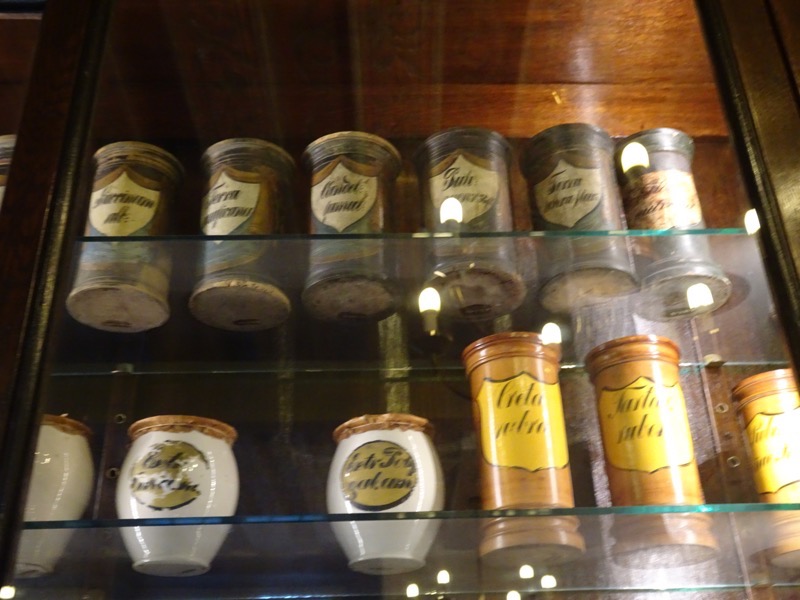
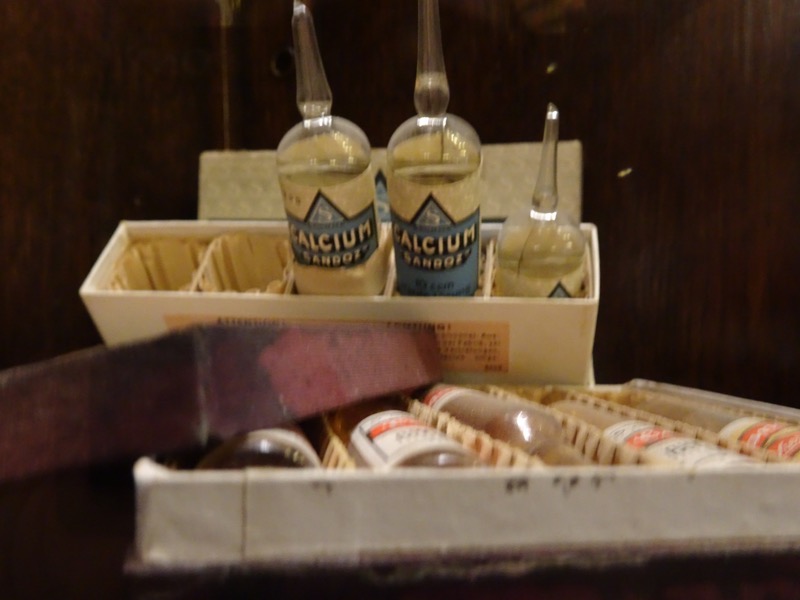
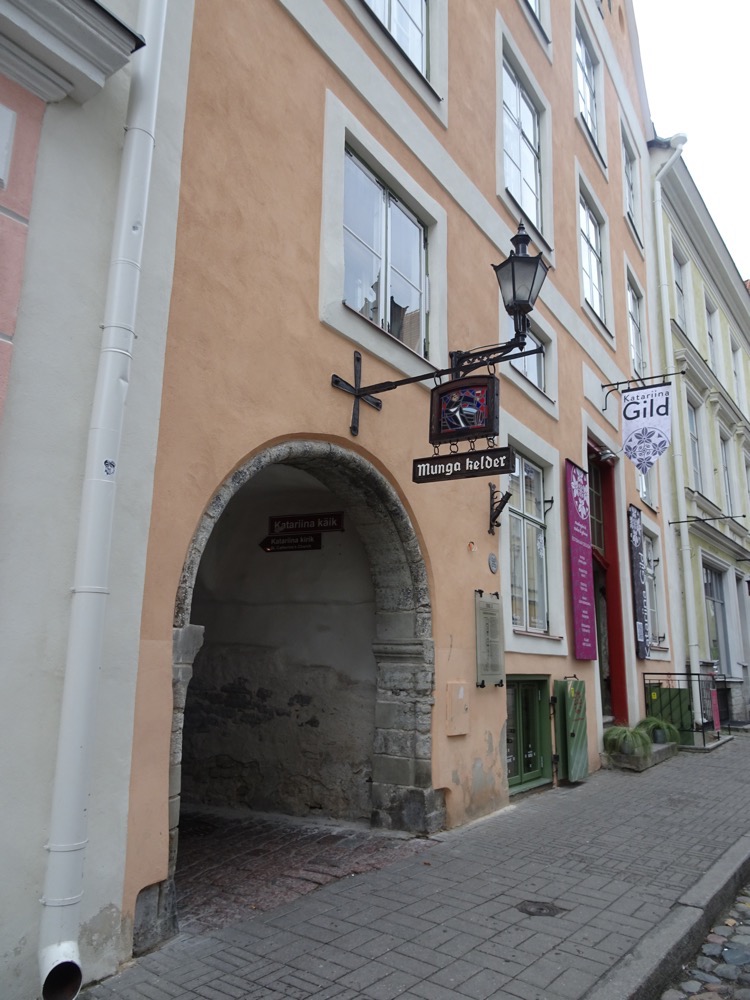
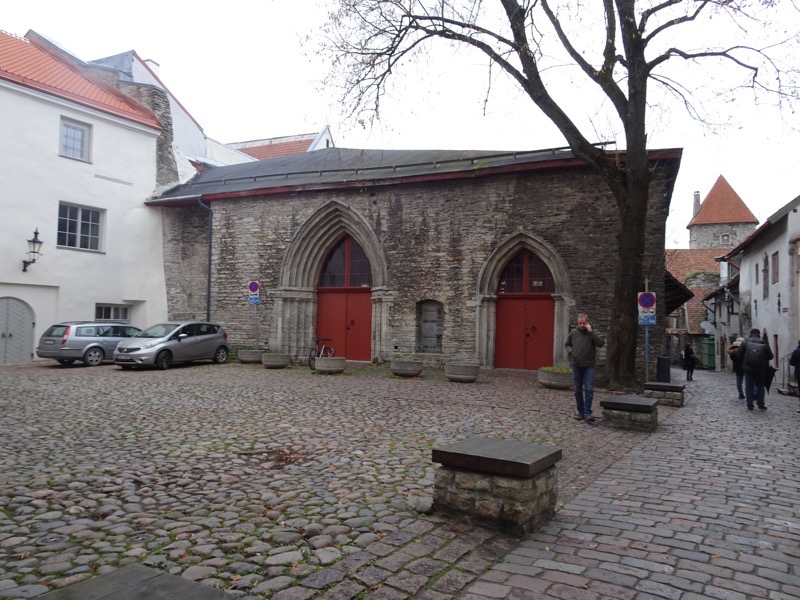
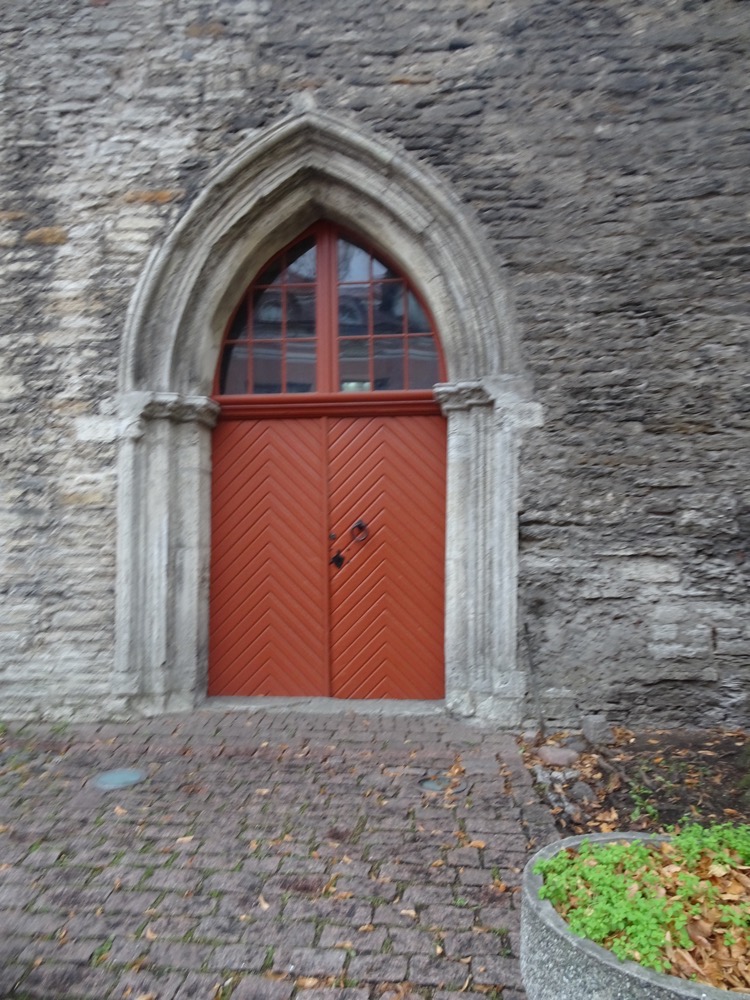
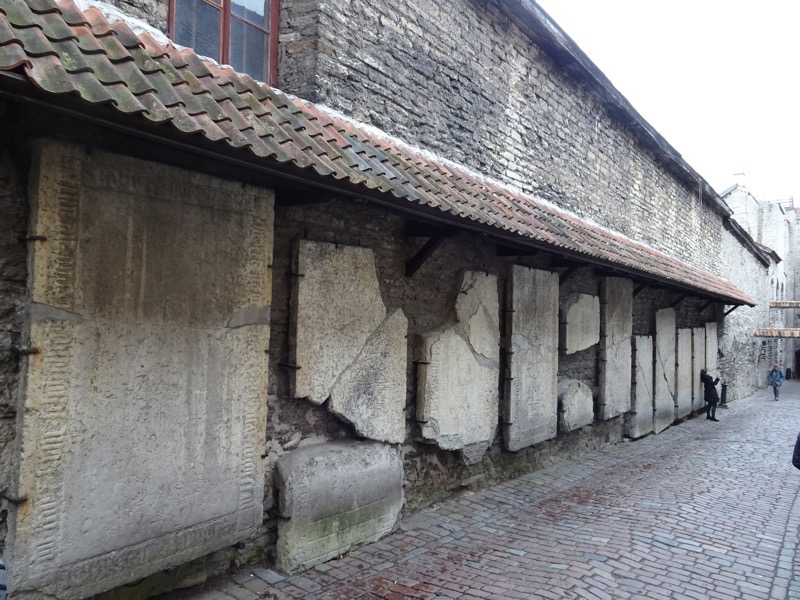 No summer crowds!
No summer crowds!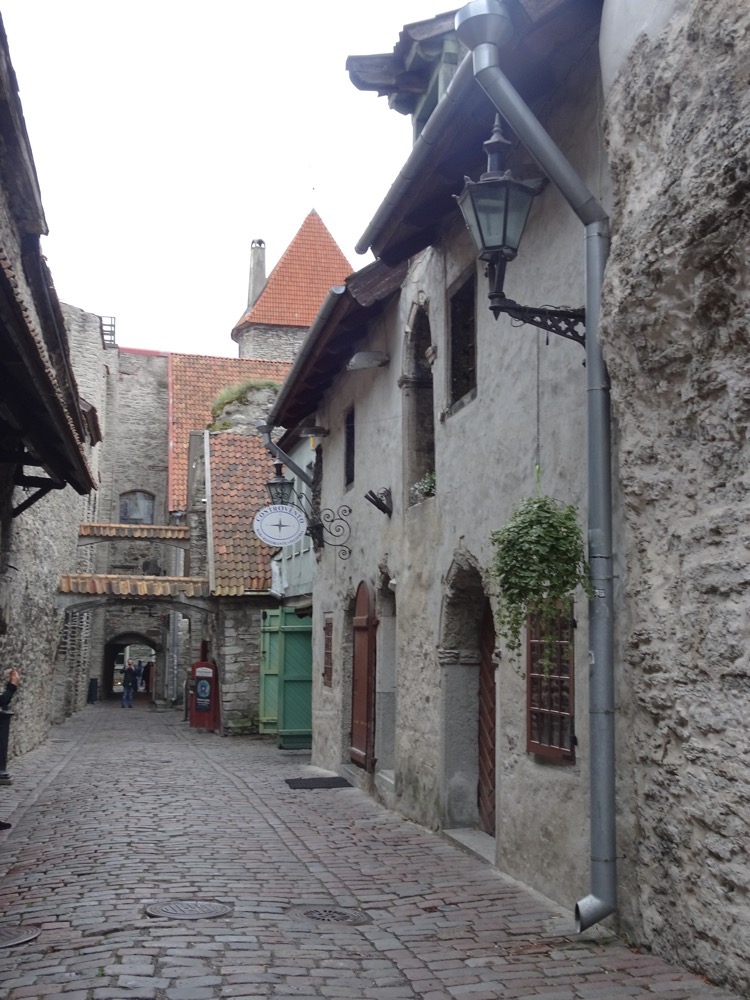
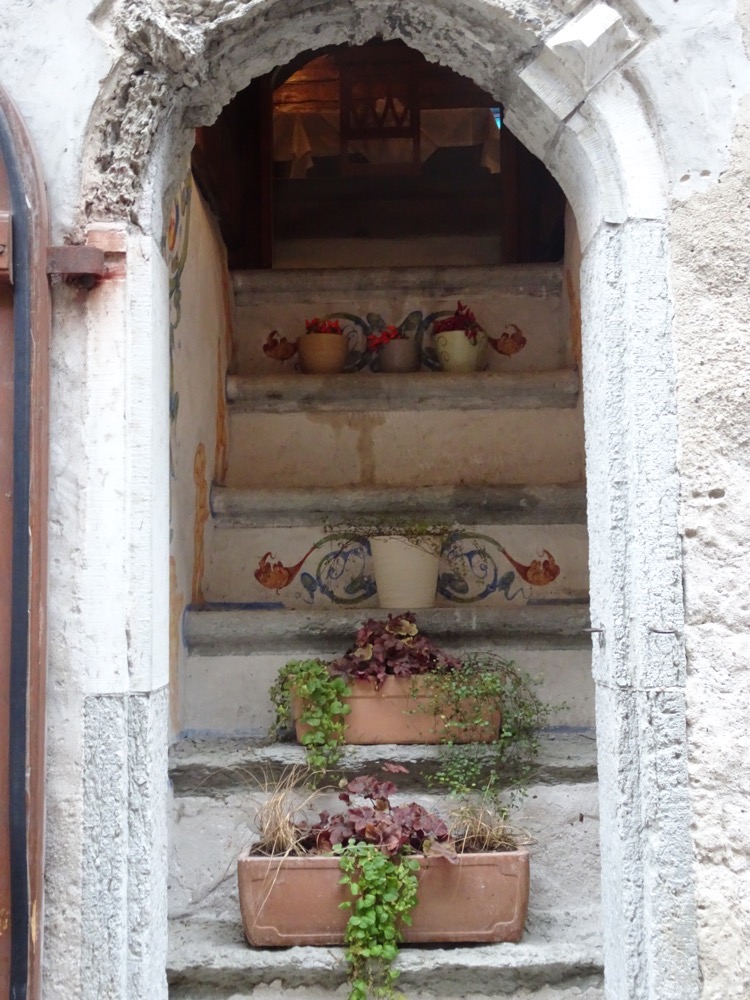
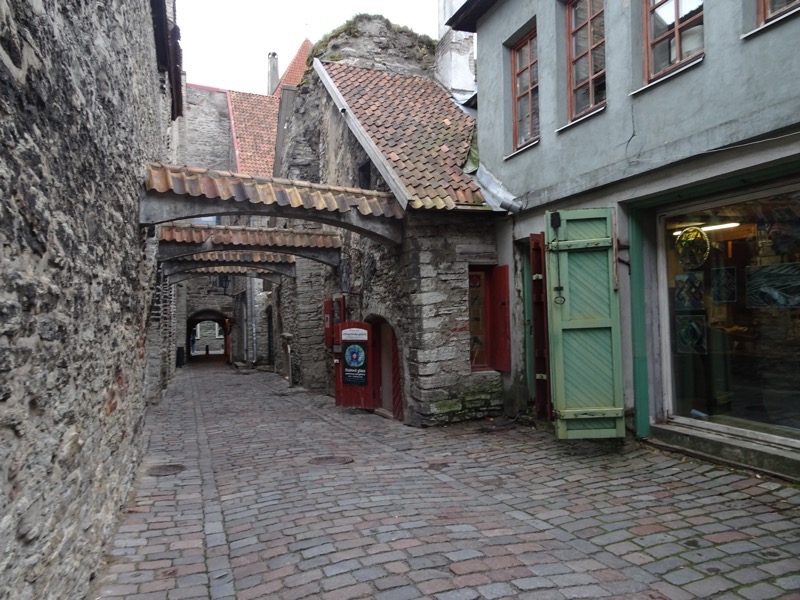 It was lovely to walk through this space and have it all to ourselves, also to have time to check out some of the art studios that are here – though the woodworker seems to have packed up for the winter.
It was lovely to walk through this space and have it all to ourselves, also to have time to check out some of the art studios that are here – though the woodworker seems to have packed up for the winter.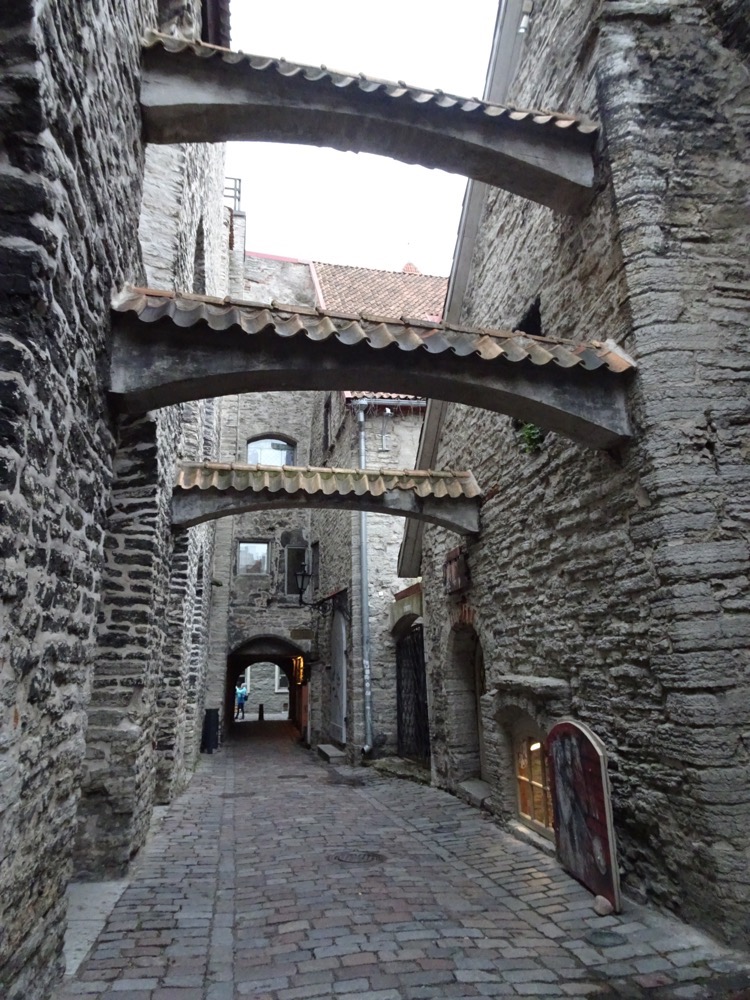 At the end of the passage, you can climb to the top of the Hellemann Tower to walk along the old
At the end of the passage, you can climb to the top of the Hellemann Tower to walk along the old 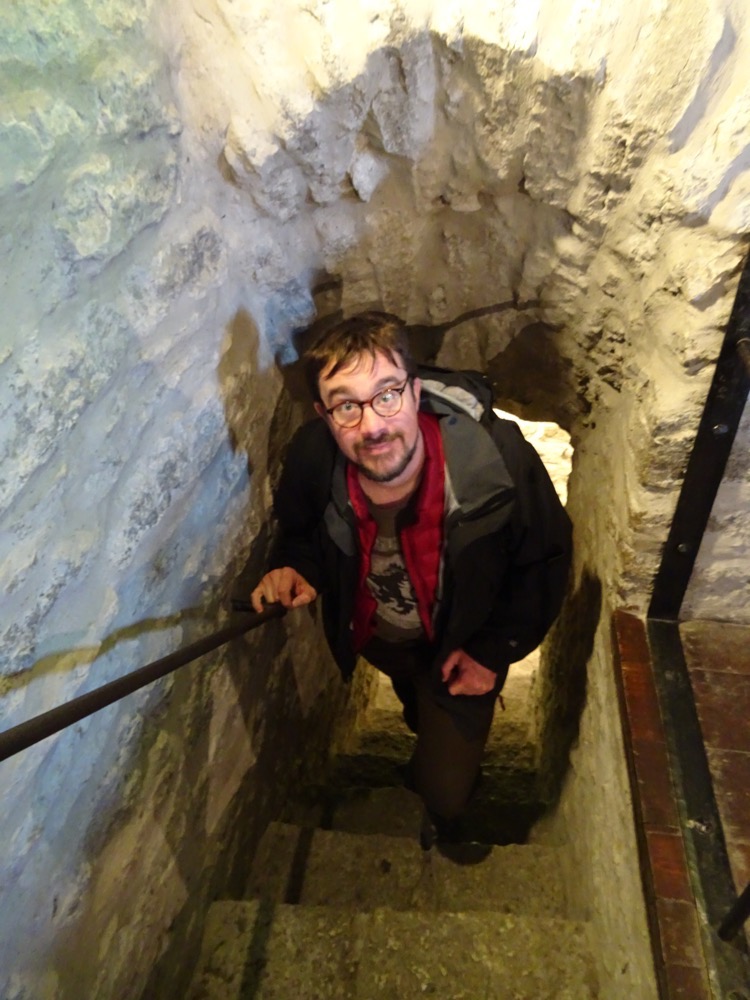
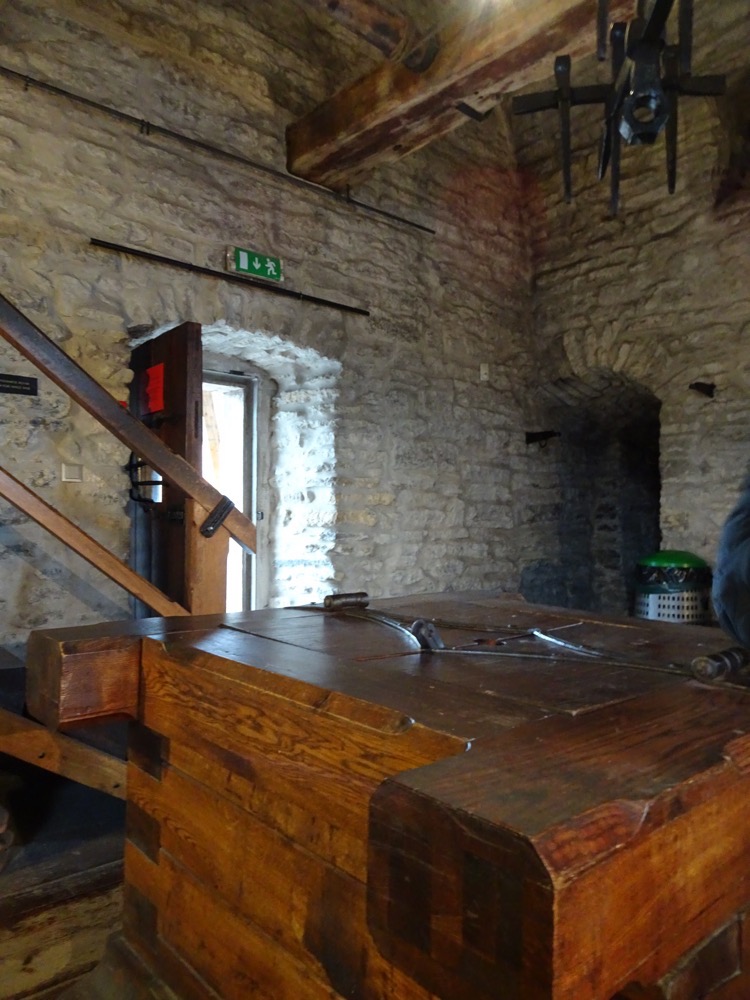
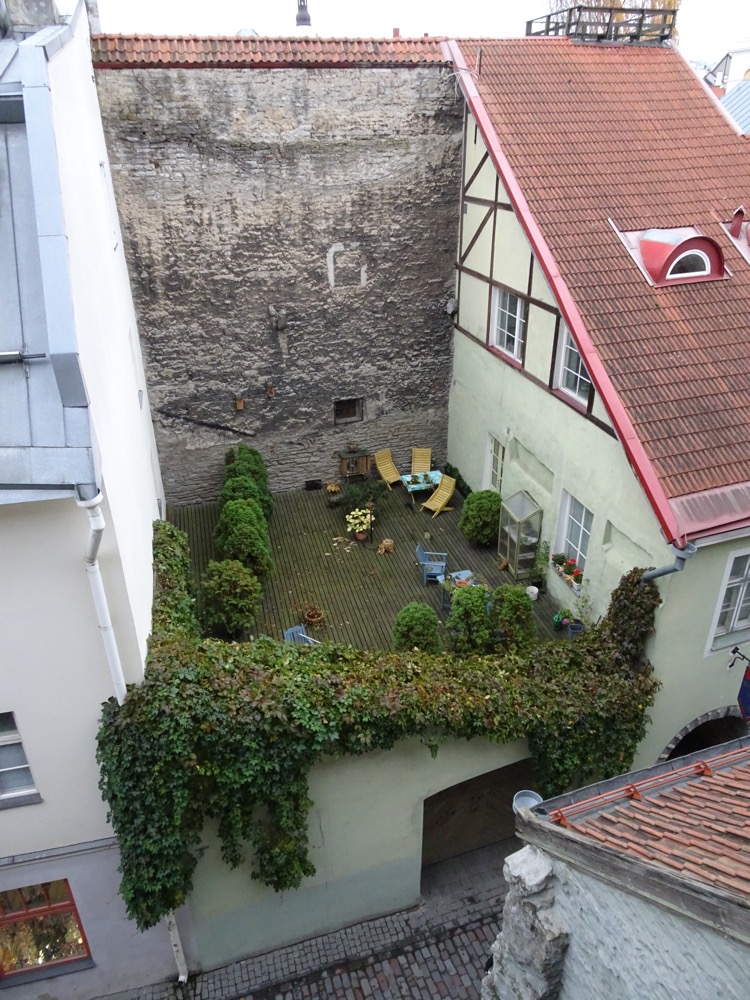 The street views are spectacular from up here – and you can see how few people are visiting the town today.
The street views are spectacular from up here – and you can see how few people are visiting the town today.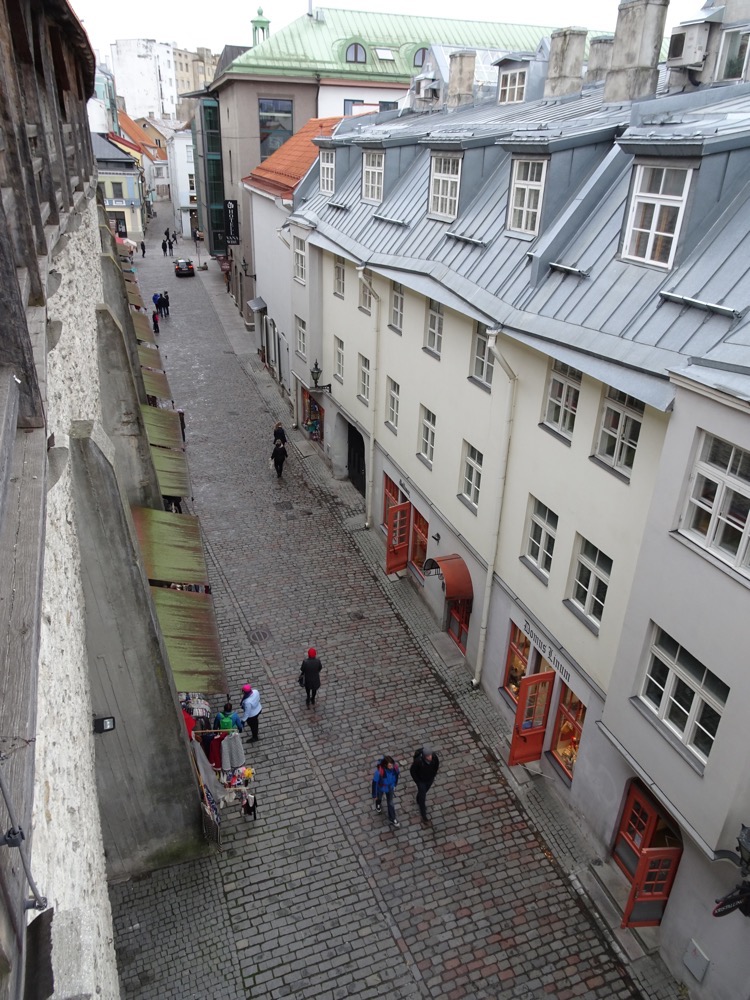
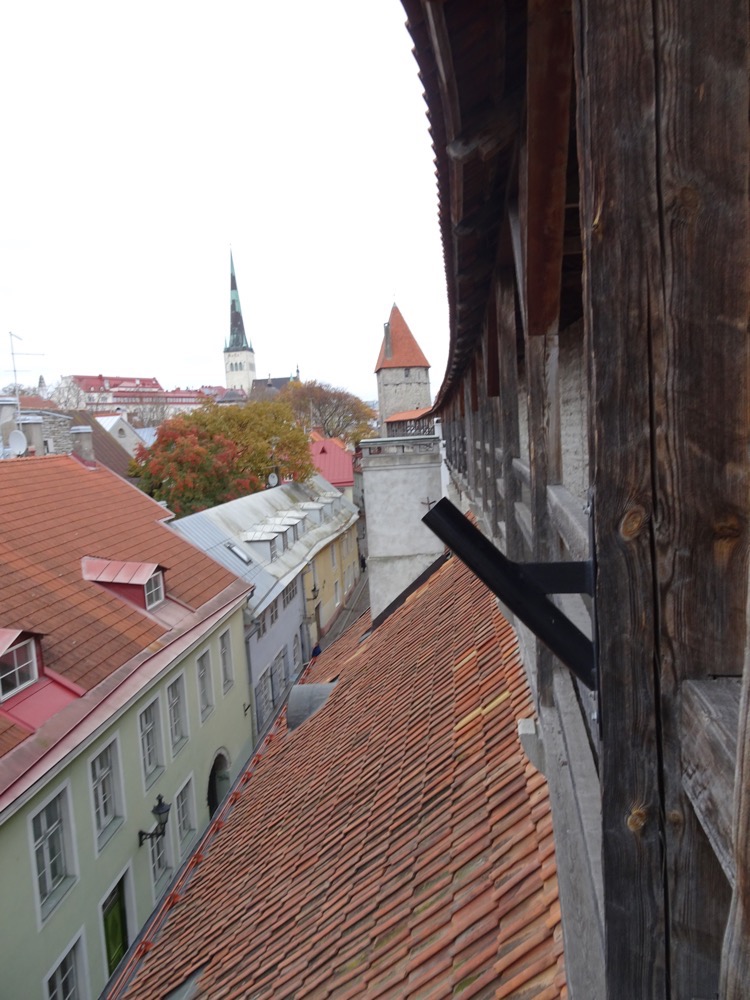
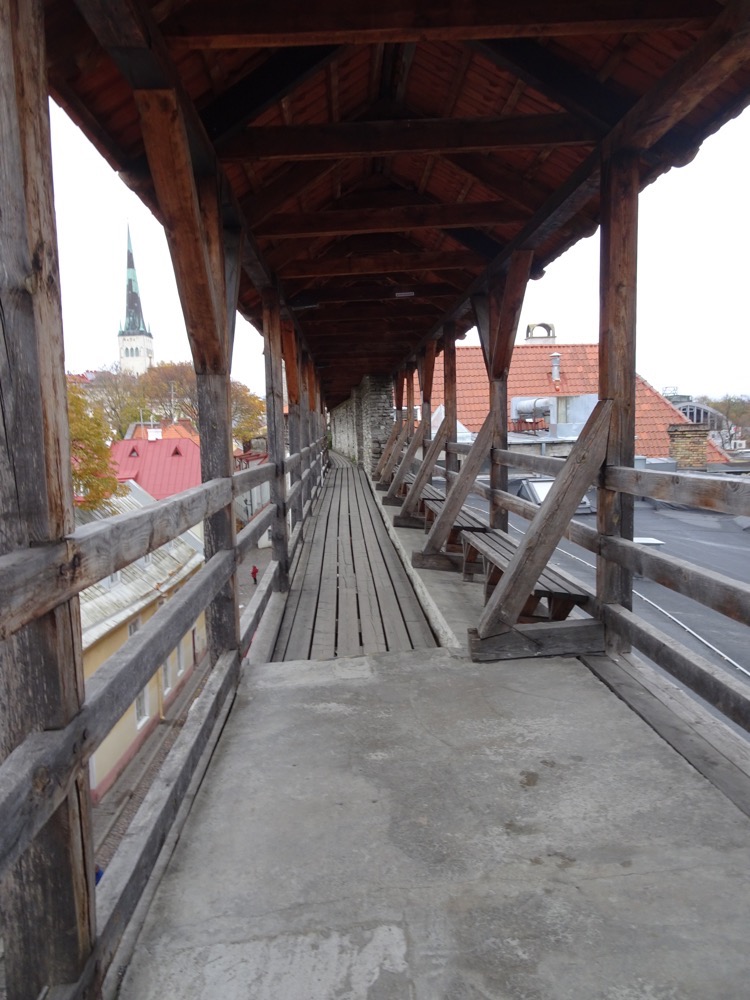
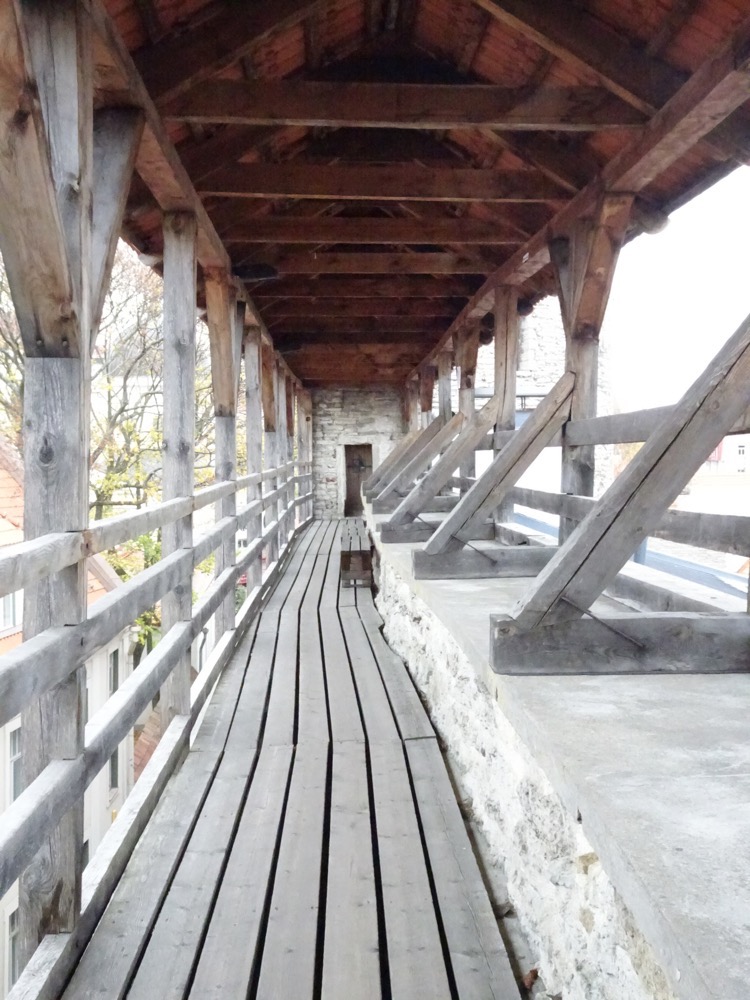
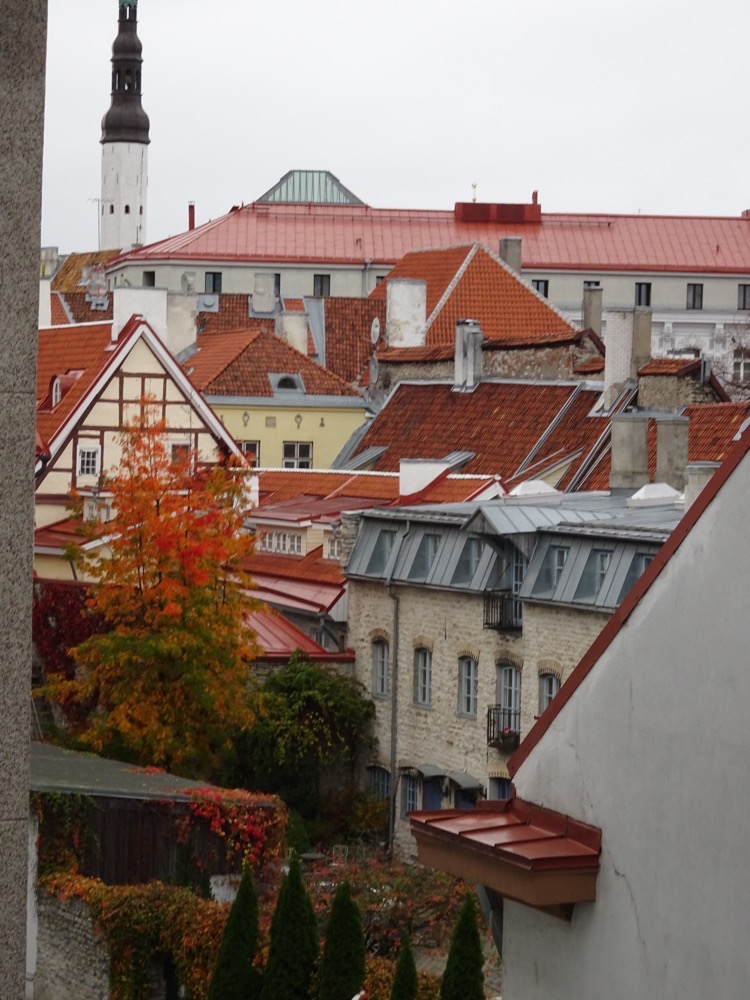 The rickety staircase we claimed to come up with the bored octagenarian ticket seller who we just about had to wake up to take our €2.00 for tickets.
The rickety staircase we claimed to come up with the bored octagenarian ticket seller who we just about had to wake up to take our €2.00 for tickets.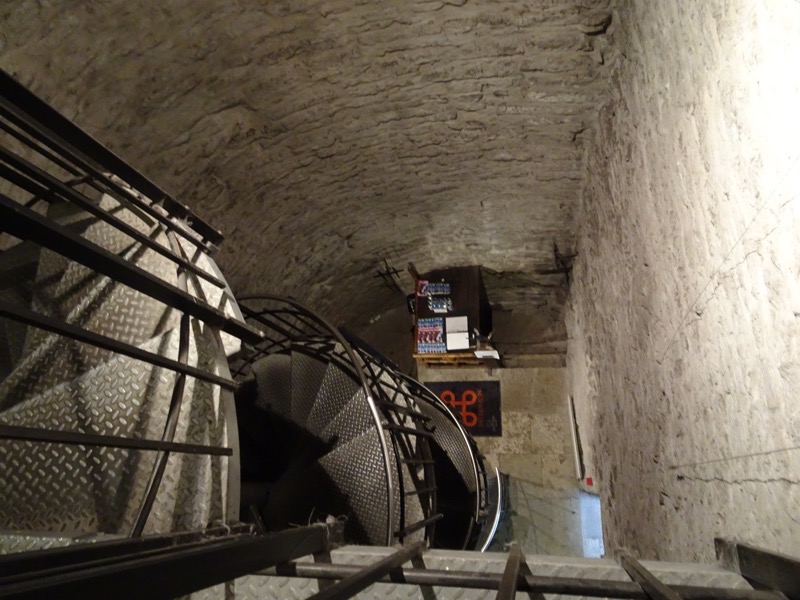
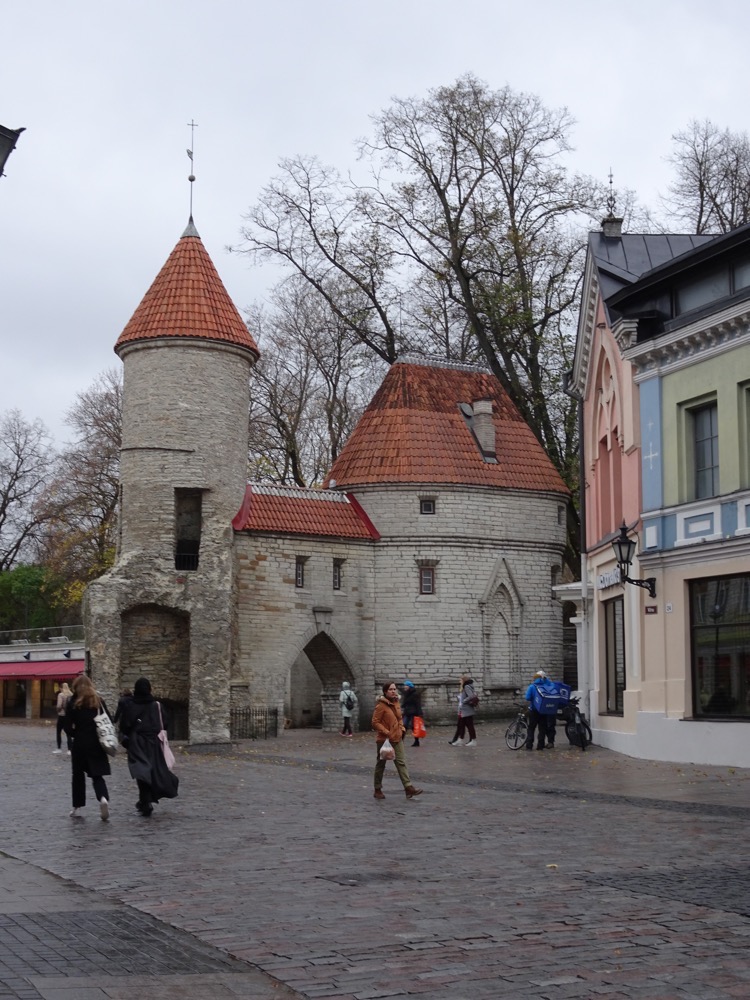 Finally, it was starting to rain on our parade – we did pretty well considering it was supposed to be raining all day. So we retreated back to the hotel with some caviar and some vodka for a bit of down time and a quiet evening in the warm.
Finally, it was starting to rain on our parade – we did pretty well considering it was supposed to be raining all day. So we retreated back to the hotel with some caviar and some vodka for a bit of down time and a quiet evening in the warm.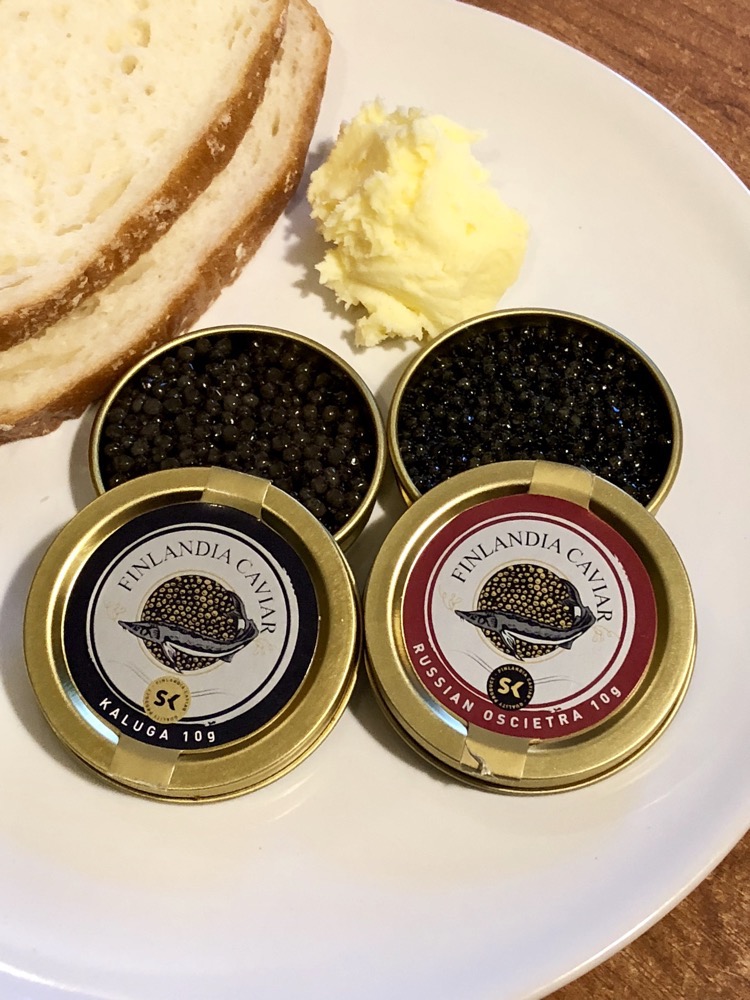
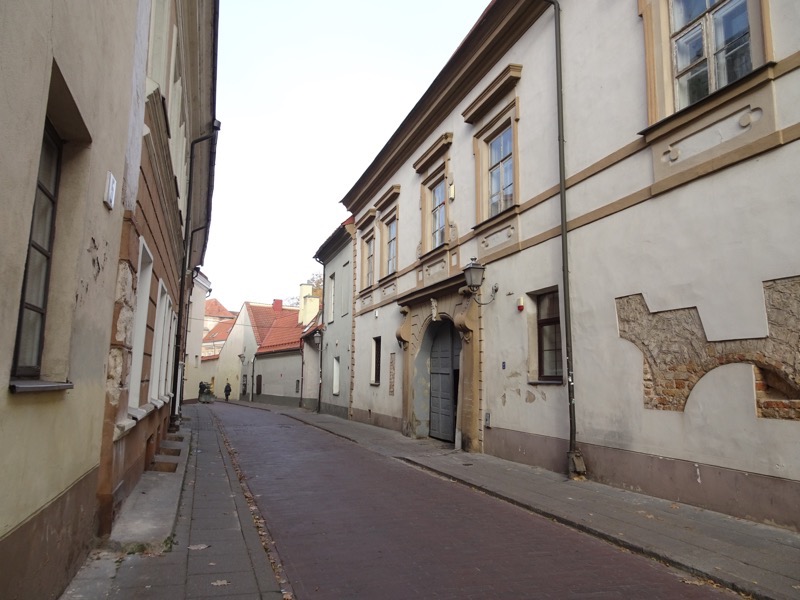 First area we head towards was towards the Vilnius Cathedral where we first encountered Gediminas. I thought he was King Gediminas but apparently no, he was Grand Duke Gediminas of Lithuania (c1275 – 1341) which is a pretty fancy title imho. Gediminas is believed to have founded the political entity that was Lithuania and is credited with expanding its territories from the Baltic to the Black Sea. He is one of the most important persons in early Lithuanian histor – he built the capital, Vilnius, and establishing a dynasty that at one point ruled over parts of Poland, Hungary and Bohemia.
First area we head towards was towards the Vilnius Cathedral where we first encountered Gediminas. I thought he was King Gediminas but apparently no, he was Grand Duke Gediminas of Lithuania (c1275 – 1341) which is a pretty fancy title imho. Gediminas is believed to have founded the political entity that was Lithuania and is credited with expanding its territories from the Baltic to the Black Sea. He is one of the most important persons in early Lithuanian histor – he built the capital, Vilnius, and establishing a dynasty that at one point ruled over parts of Poland, Hungary and Bohemia.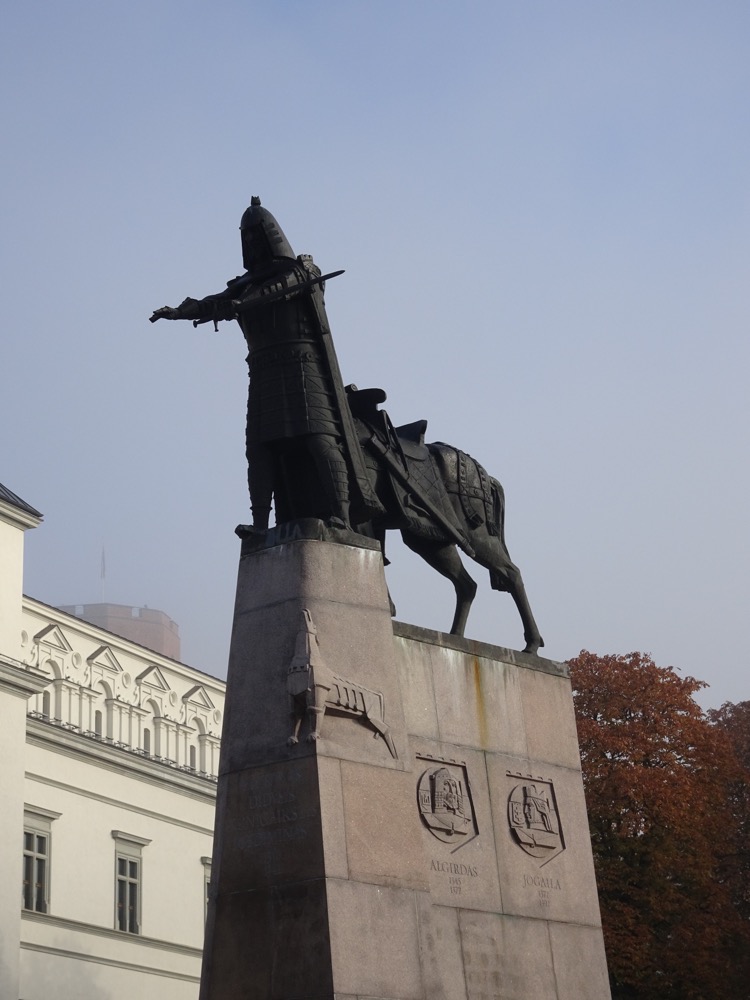 Nearby is the The Cathedral Basilica of St Stanislaus and St Ladislaus of Vilnius or the Vilnius Cathedral which is the main Roman Catholic Cathedral of Lithuania and considered the heart of the church and Catholicism Lithuania.
Nearby is the The Cathedral Basilica of St Stanislaus and St Ladislaus of Vilnius or the Vilnius Cathedral which is the main Roman Catholic Cathedral of Lithuania and considered the heart of the church and Catholicism Lithuania.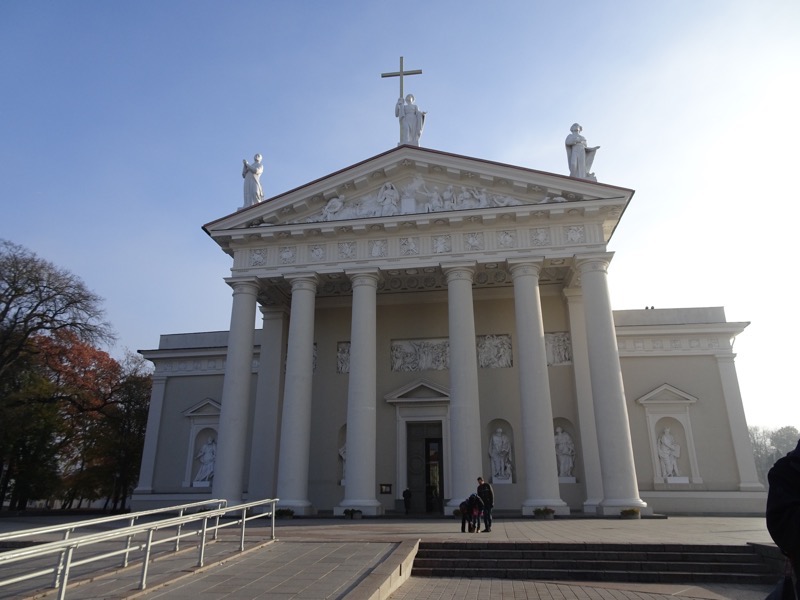
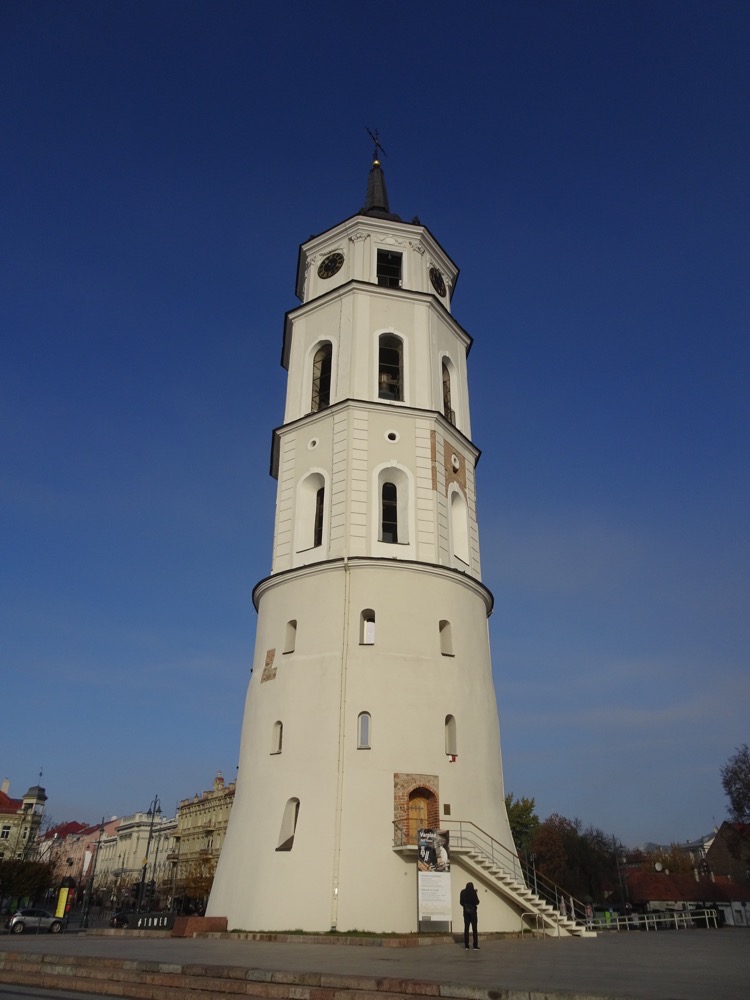
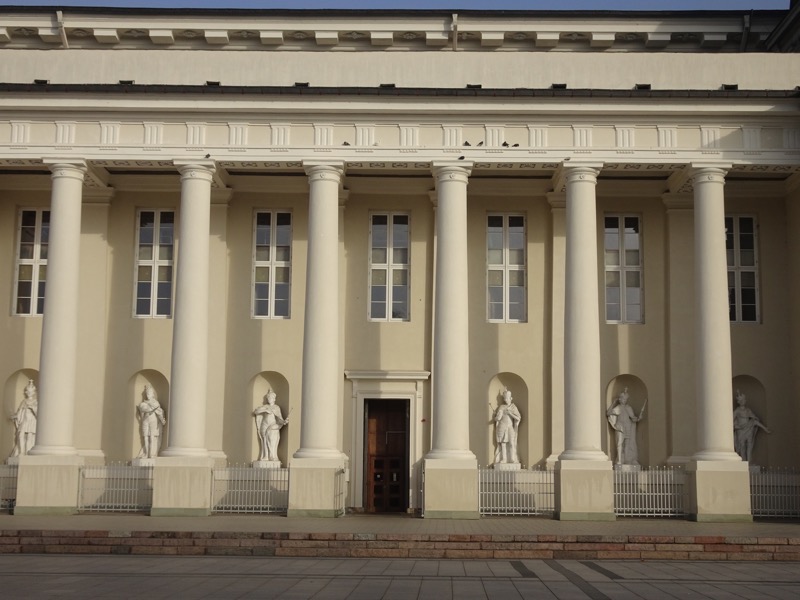
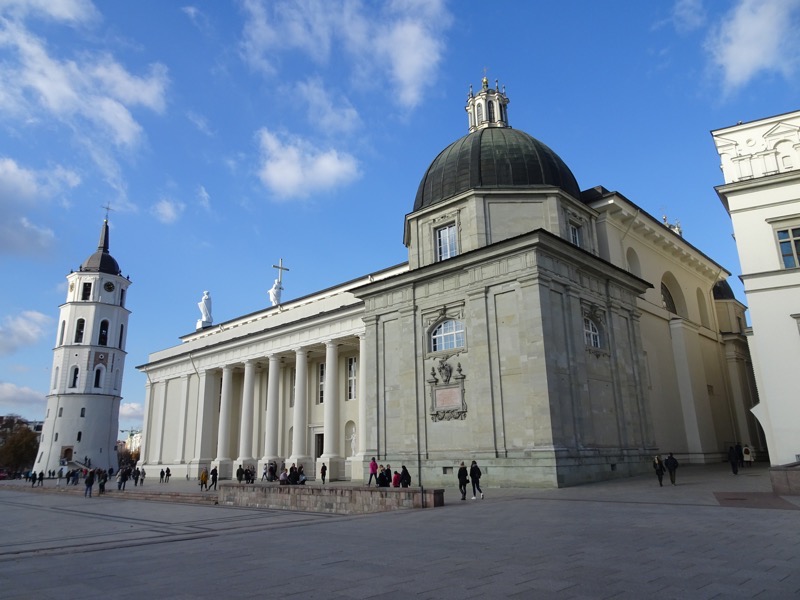 It is thought that the Lithuanian King Mindaugas (he first known Grand Duke of Lithuania and the only King of Lithuania) ordered the construction of the first cathedral on this site in 1251, after he converted to Christianity and appointed a bishop to Lithuania. Remains of an archaic quadratic church with three naves and massive buttresses were discovered beneath the current structure in the late 20th century. After Mindaugas karked it however, in 1263, that cathedral went back to being a place of pagan worship again.
It is thought that the Lithuanian King Mindaugas (he first known Grand Duke of Lithuania and the only King of Lithuania) ordered the construction of the first cathedral on this site in 1251, after he converted to Christianity and appointed a bishop to Lithuania. Remains of an archaic quadratic church with three naves and massive buttresses were discovered beneath the current structure in the late 20th century. After Mindaugas karked it however, in 1263, that cathedral went back to being a place of pagan worship again. 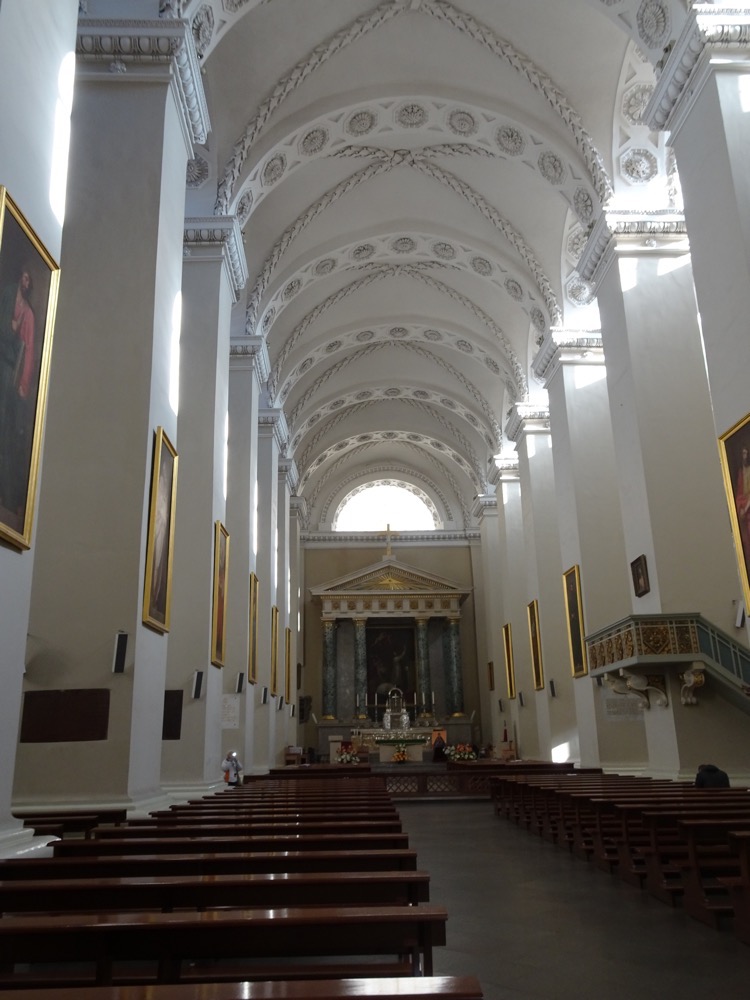 This being Europe and all, the cathedral has a convoluted history. Around 1387, Lithuania officially converted to Christianity, they started building a second larger Gothic cathedral with five separate chapels. This one burnt down in 1419 and they planned a new larger Gothic cathedral in 1429 for the coronation of Vytautas who was suppposed to become King of Lithuania. His coronation never happened but the walls and pillars of that third Cathedral have survived to today and it has three naves and four circular towers at its corners. In 1522, the cathedral was renovated, and a bell tower was built outside on top of an old castle defensive tower. Another fire destroyed the cathedral in 1530, so it was rebuilt again around1534 – 1557 and more chapels and crypts were added. The cathedral was burnt again, built again, fell to Russian troops, was destroyed and restored several more times by more famous dukes and kings… and all that before the Soviets got hold of it in the 20th century.
This being Europe and all, the cathedral has a convoluted history. Around 1387, Lithuania officially converted to Christianity, they started building a second larger Gothic cathedral with five separate chapels. This one burnt down in 1419 and they planned a new larger Gothic cathedral in 1429 for the coronation of Vytautas who was suppposed to become King of Lithuania. His coronation never happened but the walls and pillars of that third Cathedral have survived to today and it has three naves and four circular towers at its corners. In 1522, the cathedral was renovated, and a bell tower was built outside on top of an old castle defensive tower. Another fire destroyed the cathedral in 1530, so it was rebuilt again around1534 – 1557 and more chapels and crypts were added. The cathedral was burnt again, built again, fell to Russian troops, was destroyed and restored several more times by more famous dukes and kings… and all that before the Soviets got hold of it in the 20th century.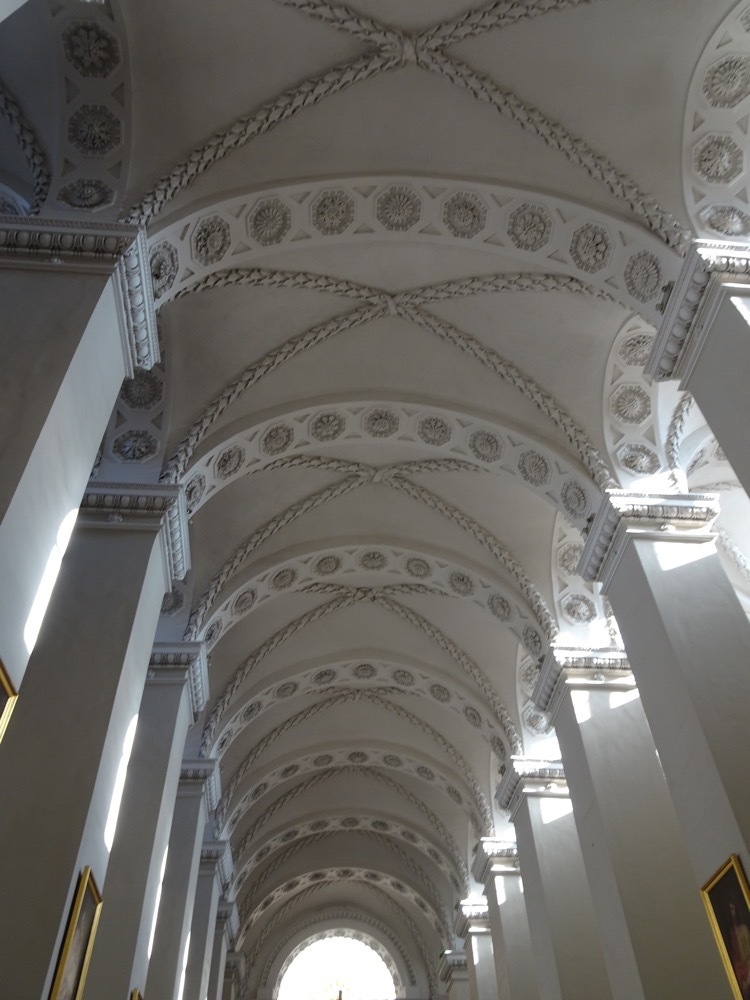 Chapel of Saint Casimir:
Chapel of Saint Casimir: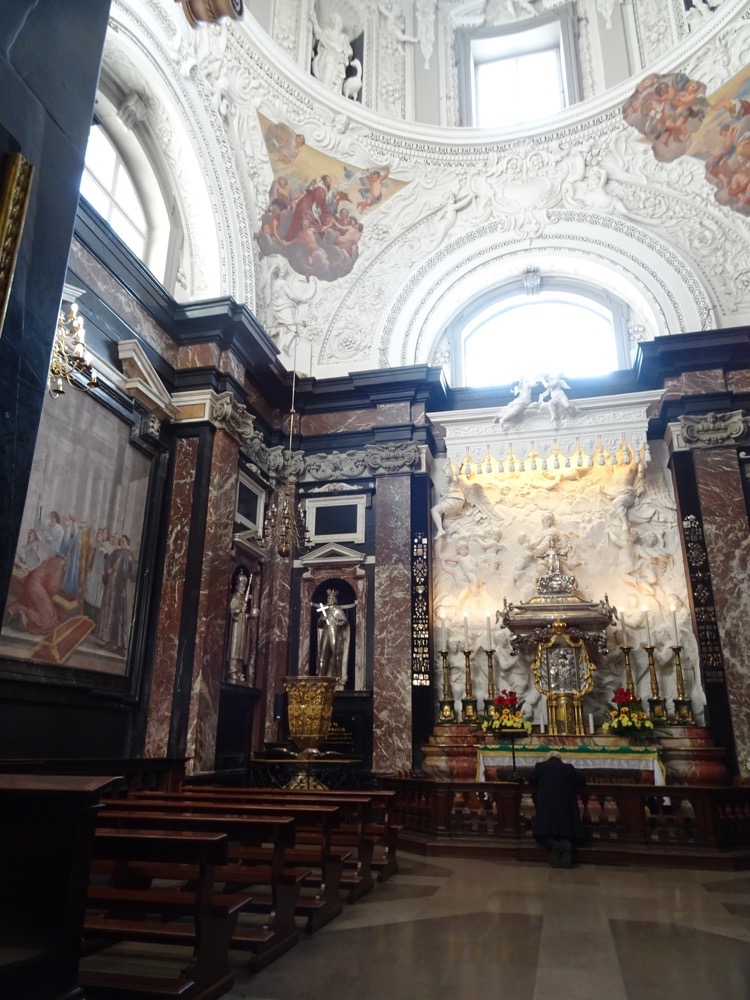
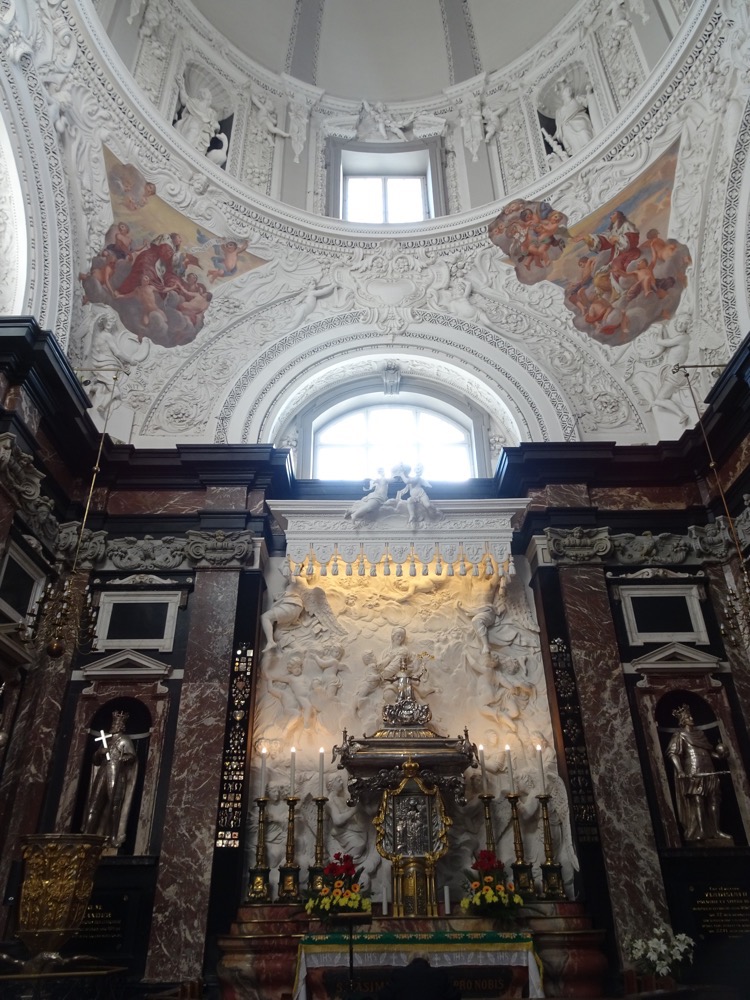 During the Soviet regime the cathedral was converted into a warehouse of all things, and masses were not celebrated here again until 1988. In 1989 its offical status as a cathedral was restored and it has been Vilnius’ main cathedral since that time.
During the Soviet regime the cathedral was converted into a warehouse of all things, and masses were not celebrated here again until 1988. In 1989 its offical status as a cathedral was restored and it has been Vilnius’ main cathedral since that time.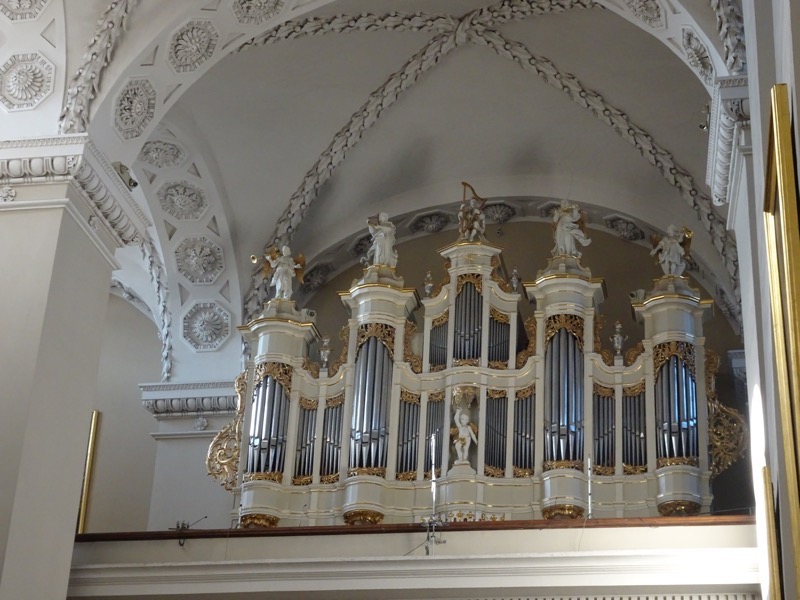
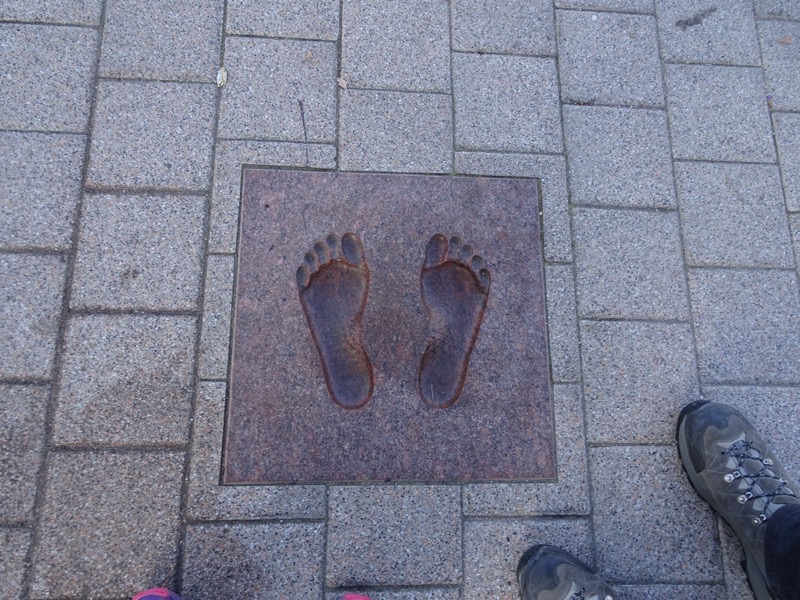
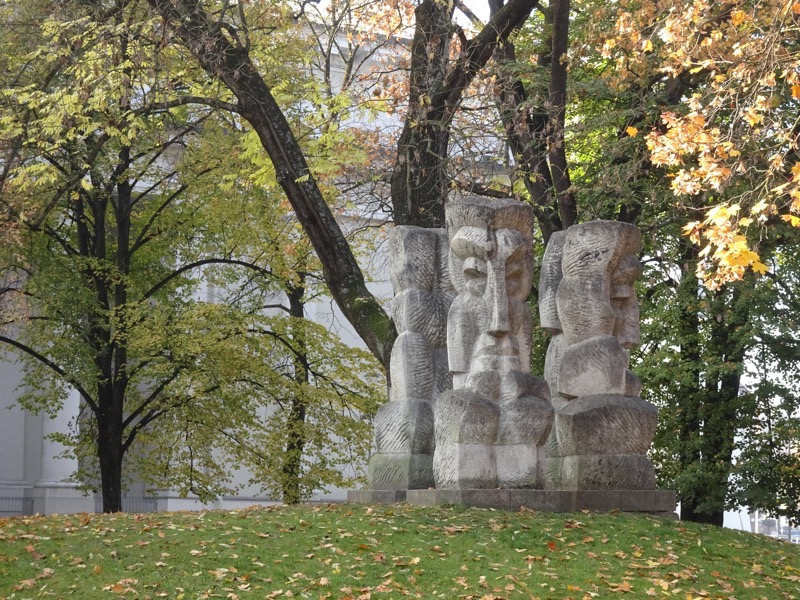
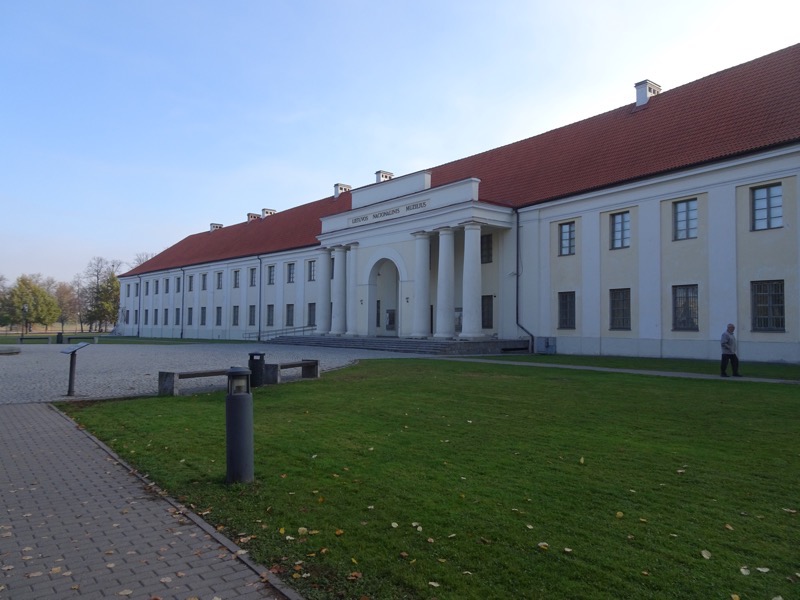 In the square in the front of the musuem is a monument to King Mindaugas, the founder of the Lithuanian state.
In the square in the front of the musuem is a monument to King Mindaugas, the founder of the Lithuanian state.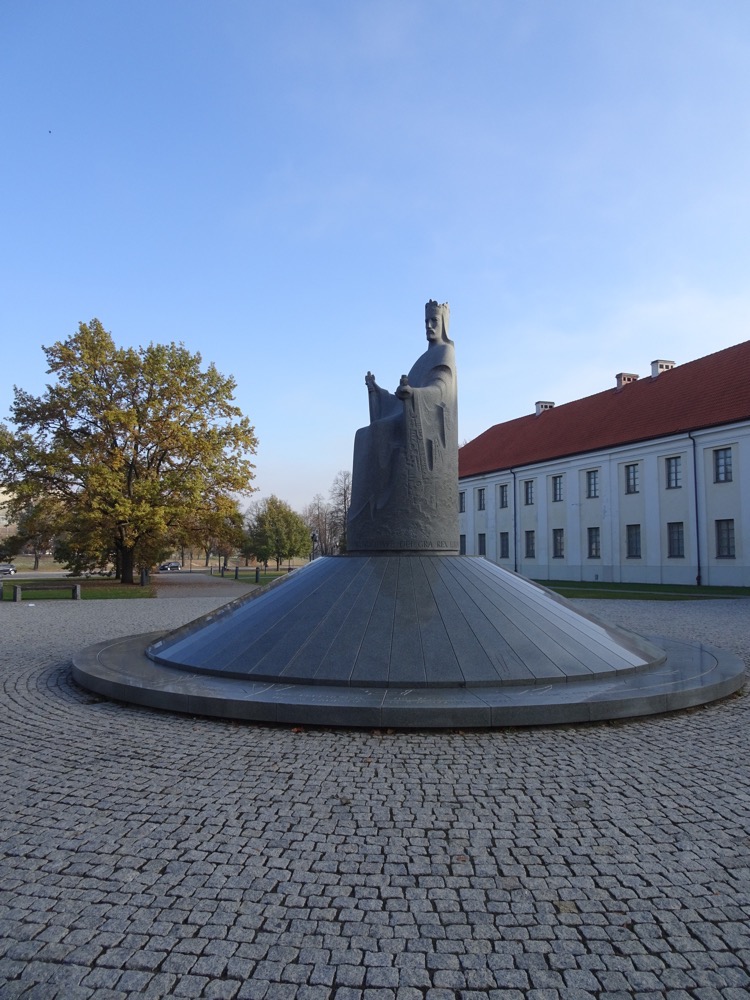 Inside we discovered many antiques, antiquities and odd things, none of which seemed to have been curated with any real theme? intent? or cohesion? It was all very odd.
Inside we discovered many antiques, antiquities and odd things, none of which seemed to have been curated with any real theme? intent? or cohesion? It was all very odd. Urn, 4th century, Southern Italy:
Urn, 4th century, Southern Italy: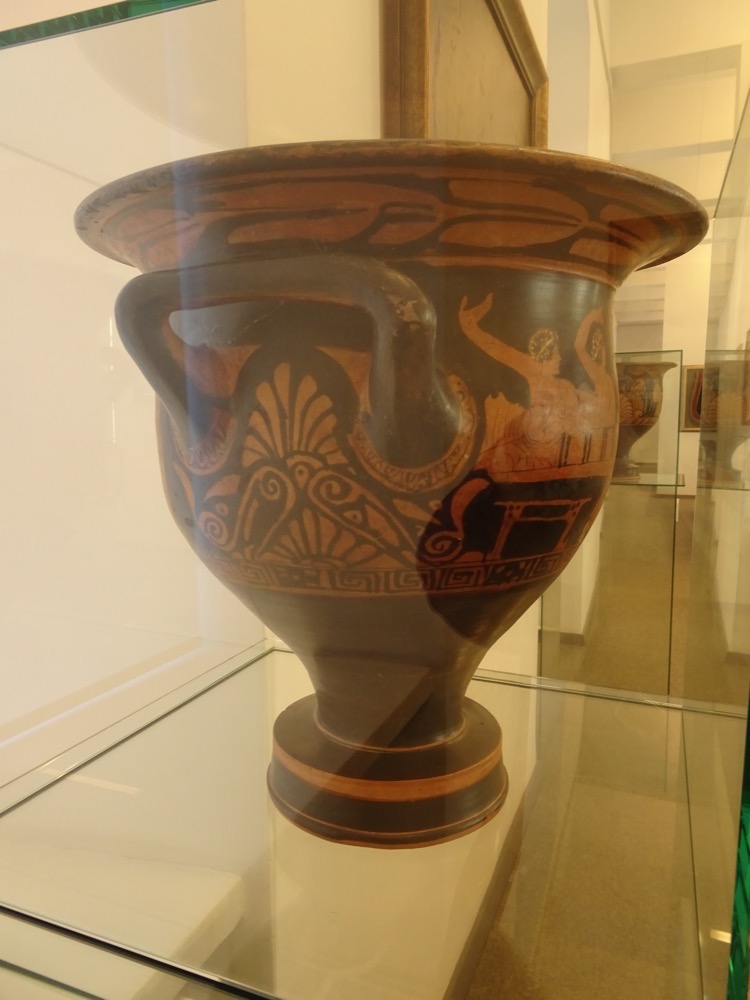
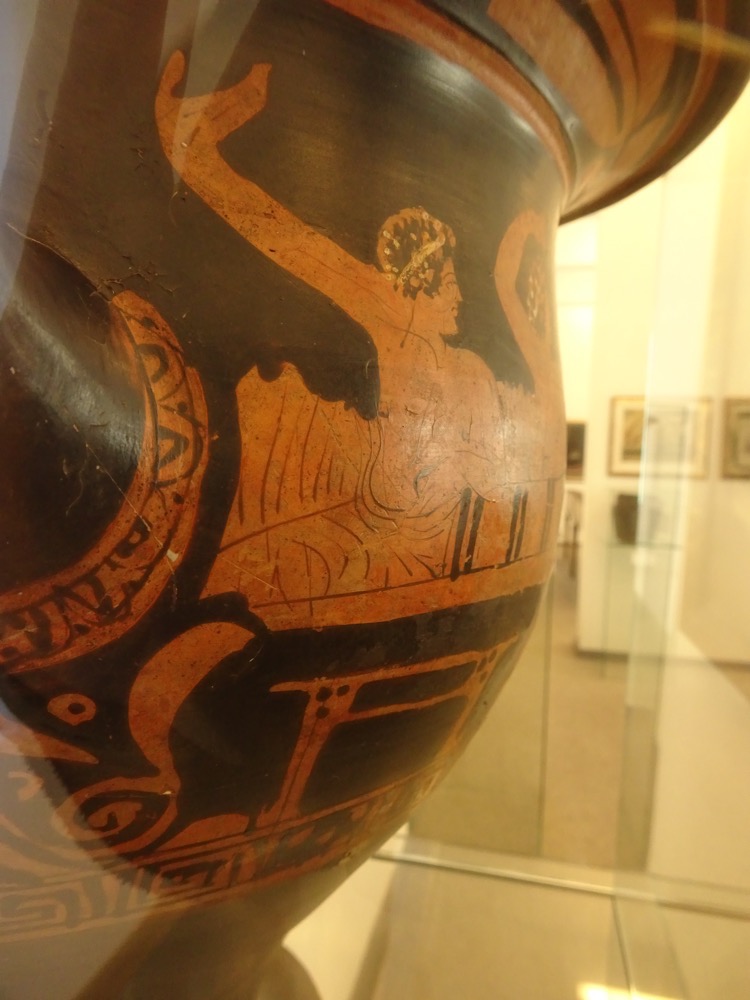 Lithuanian sledge, c.1700-1750.
Lithuanian sledge, c.1700-1750.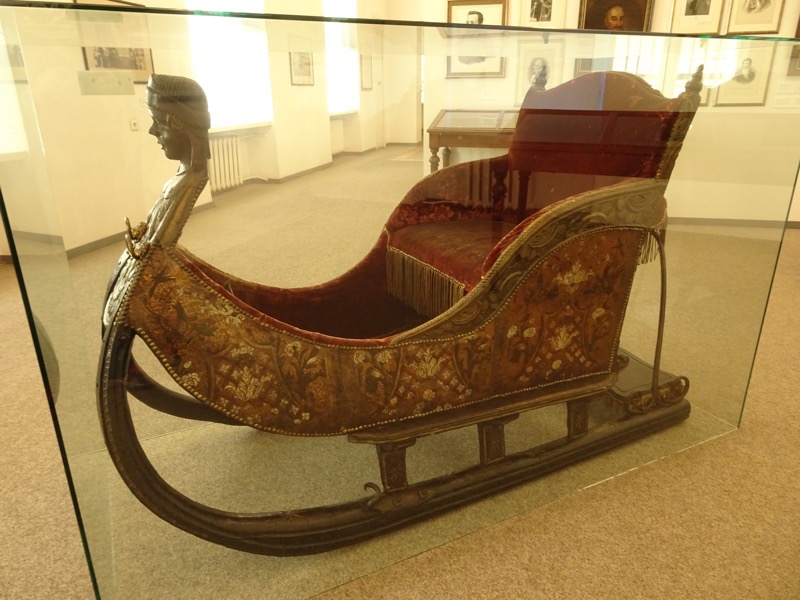 Sarcophagus received as a gift by Museum of Antiquities in 1899 from Prince Chlodwig Karl Viktor Hohenlohe, then German Chancellor. Originates from Egypt (obviously) but no mention of date, location or what tomb it came from?
Sarcophagus received as a gift by Museum of Antiquities in 1899 from Prince Chlodwig Karl Viktor Hohenlohe, then German Chancellor. Originates from Egypt (obviously) but no mention of date, location or what tomb it came from?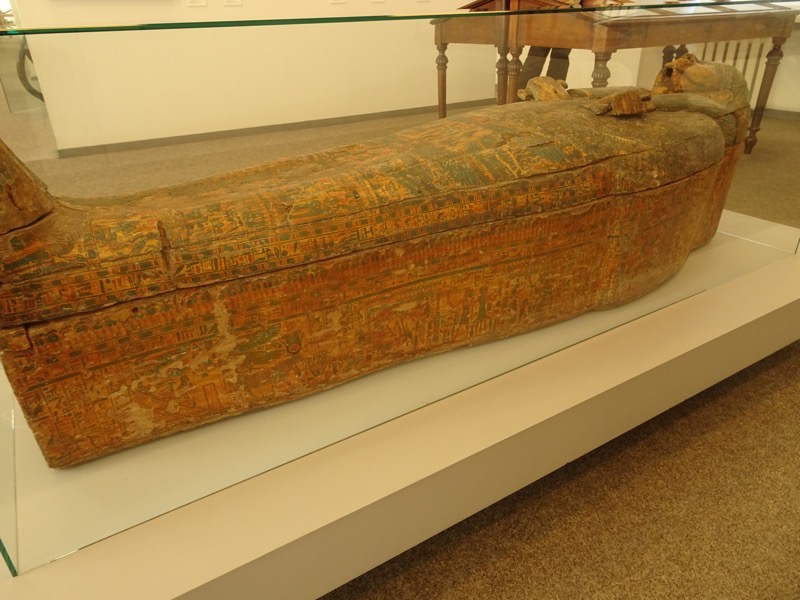
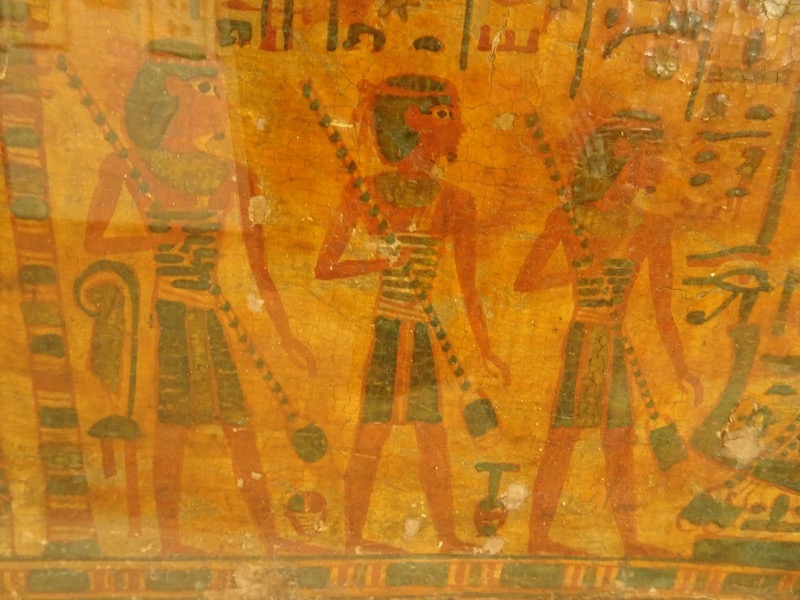 Obelisk with samples of Russian materials, 19th century.
Obelisk with samples of Russian materials, 19th century.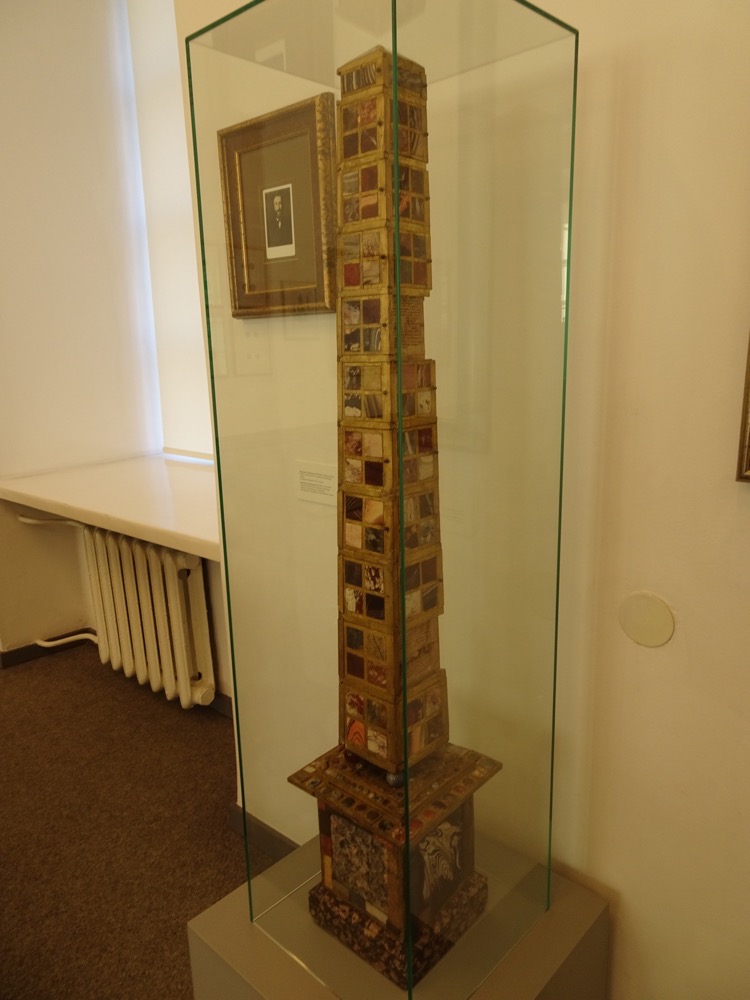
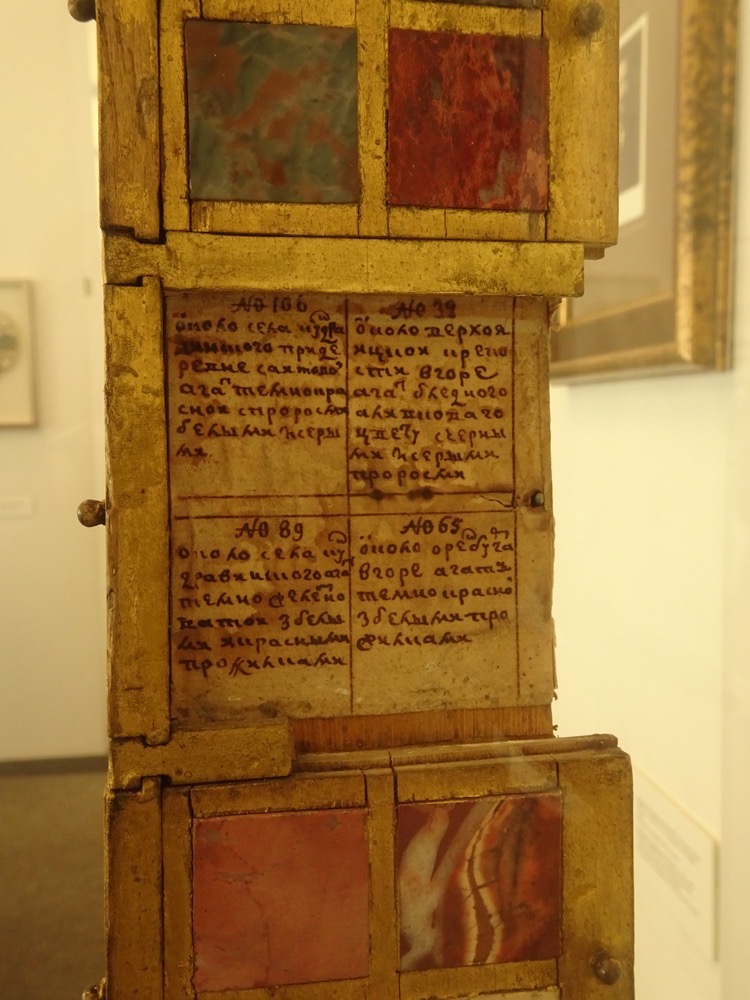 Maria Mnishek (1588-1614, wife of the Czars of Russia, Lzhedmirty I and Lzhedmirty II (did she remarry his brother? her son? his cousin? who knows?) Unknown artist, 1609.
Maria Mnishek (1588-1614, wife of the Czars of Russia, Lzhedmirty I and Lzhedmirty II (did she remarry his brother? her son? his cousin? who knows?) Unknown artist, 1609.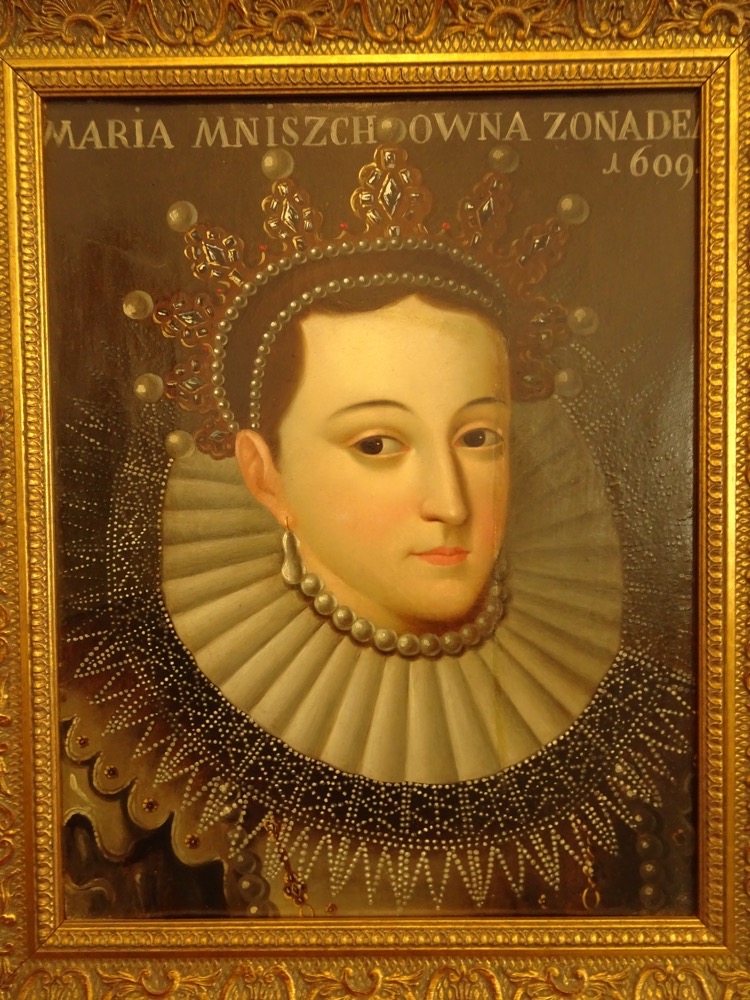 Vytautas the Great, Grand Duke of Lithuania from 1401 to 1430.
Vytautas the Great, Grand Duke of Lithuania from 1401 to 1430.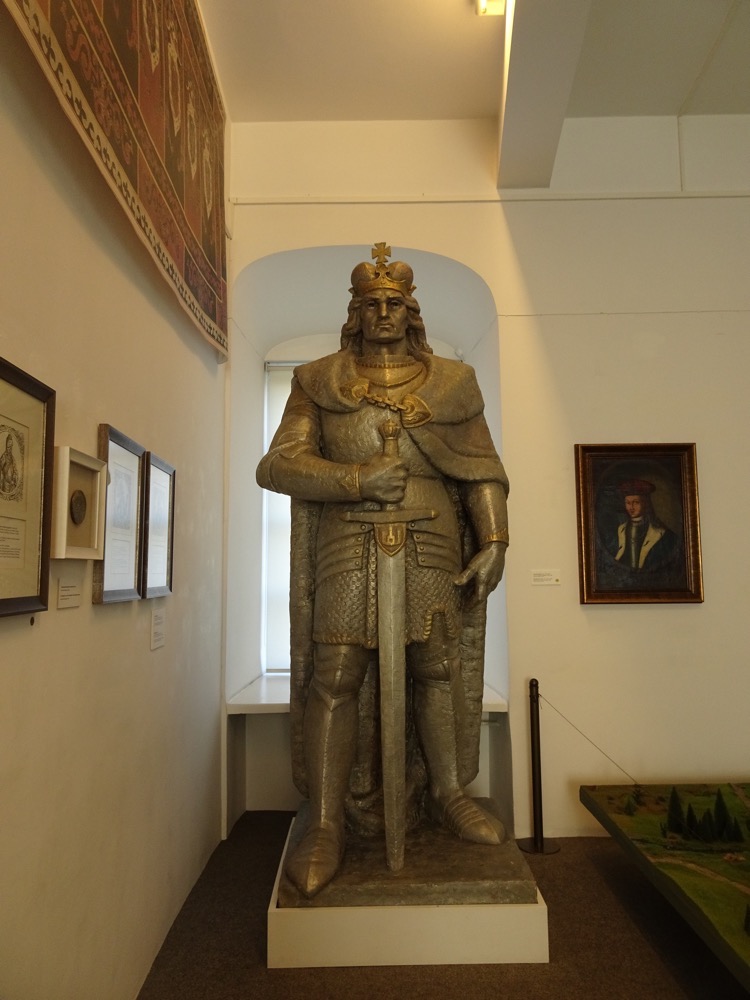 Iron window bars, Lithuanian 16th century (no idea where from?).
Iron window bars, Lithuanian 16th century (no idea where from?).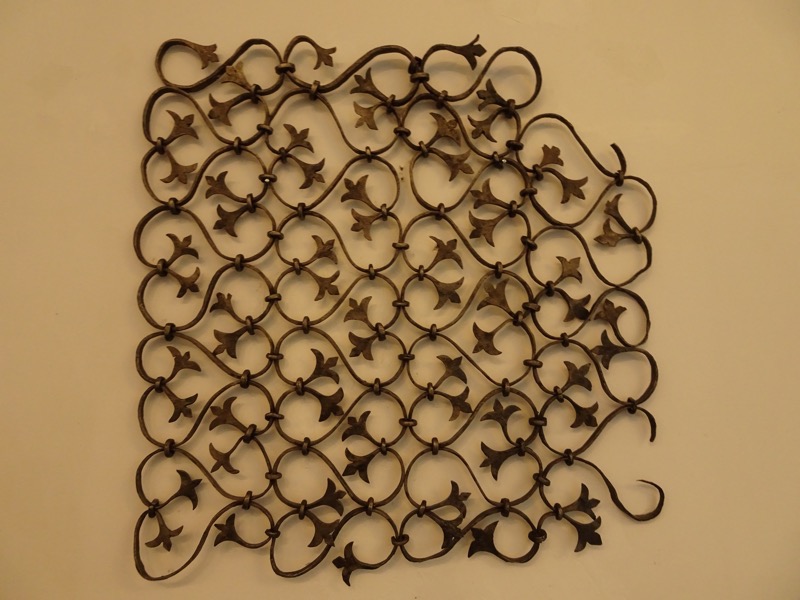
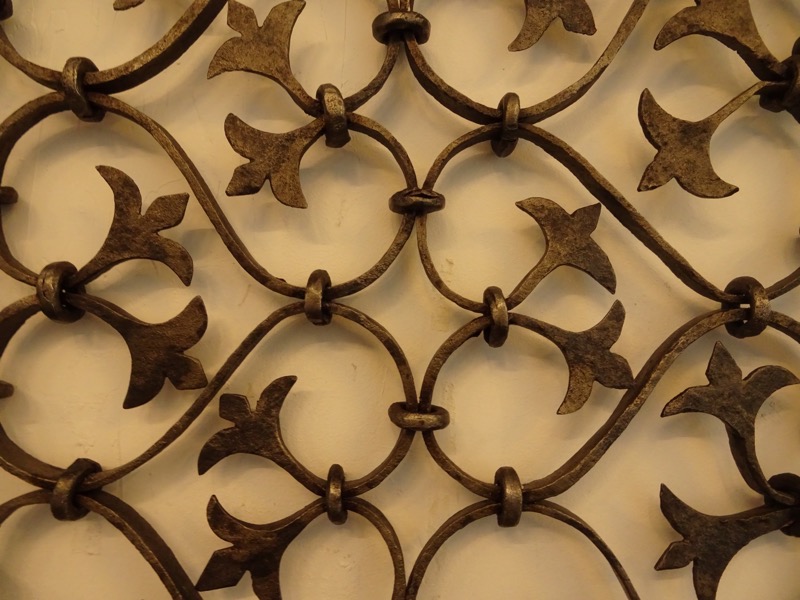 Guild’s chest (which guild?!), Lithuanian 17th century.
Guild’s chest (which guild?!), Lithuanian 17th century.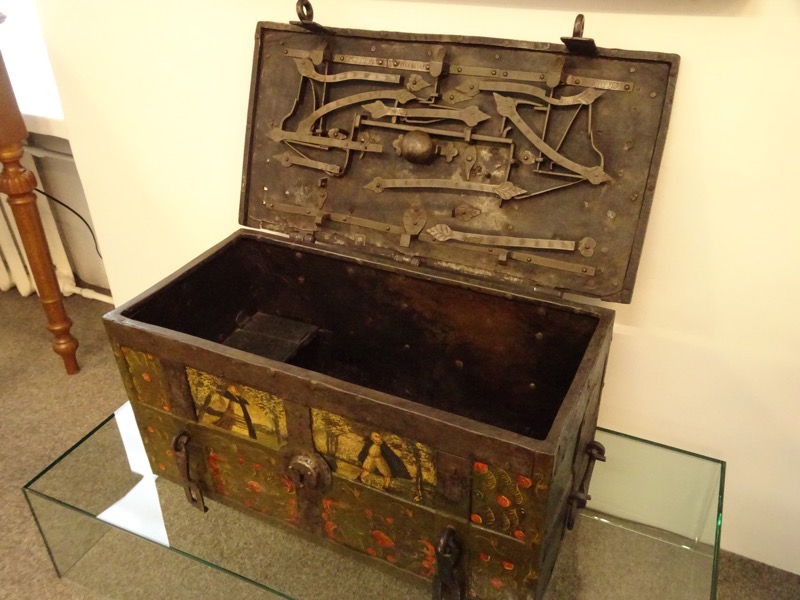
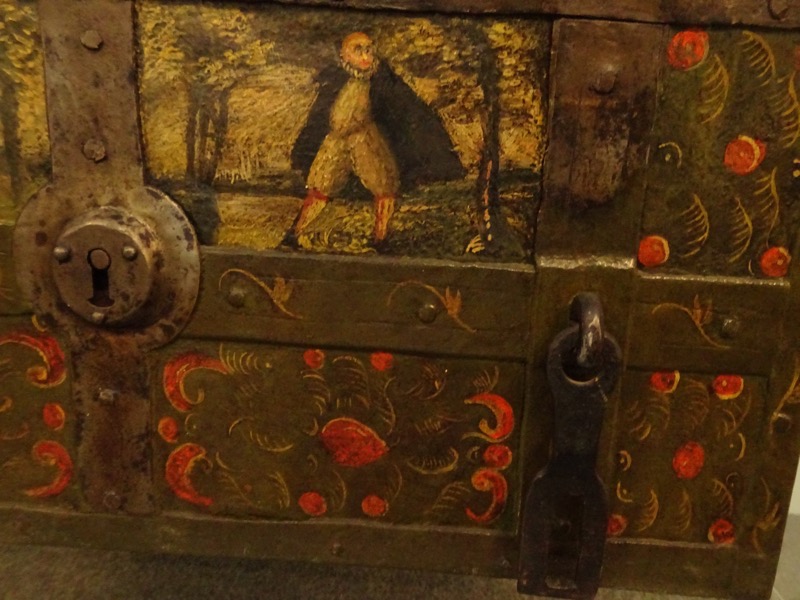
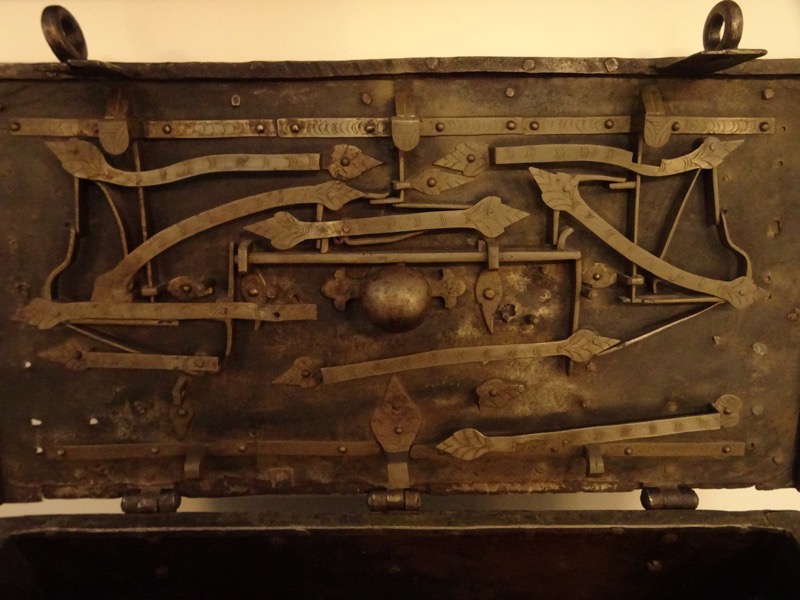 Banner of the Immaculate Conception Fraternity at the Vilnius Bernadine Church, 1600-1650s… in bad need of conservation and repair.
Banner of the Immaculate Conception Fraternity at the Vilnius Bernadine Church, 1600-1650s… in bad need of conservation and repair.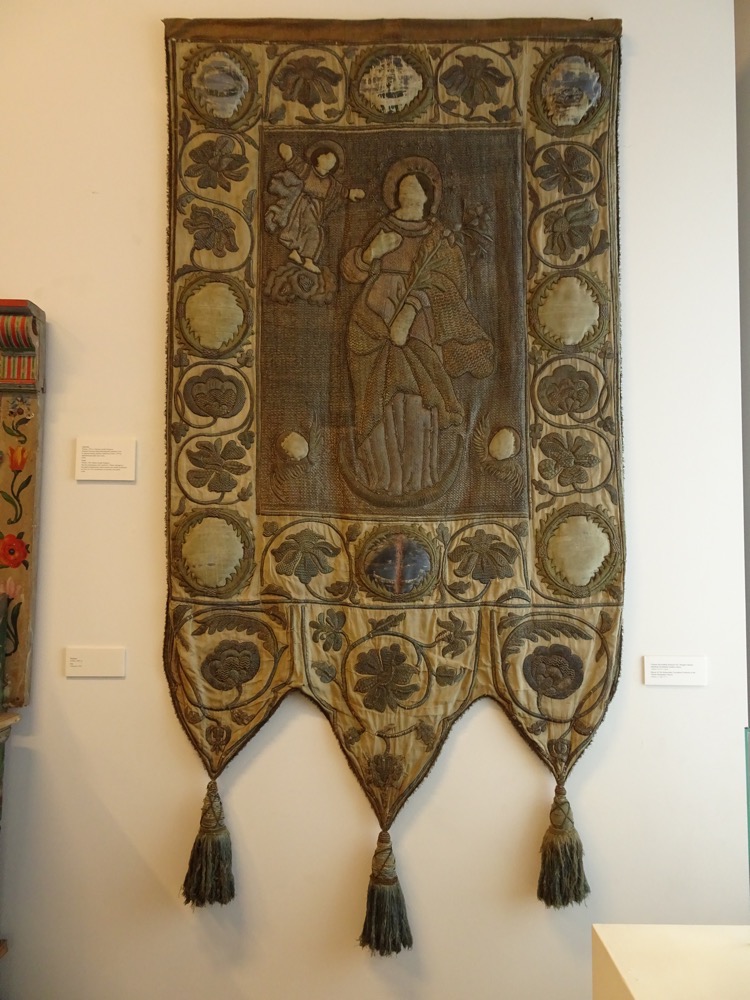
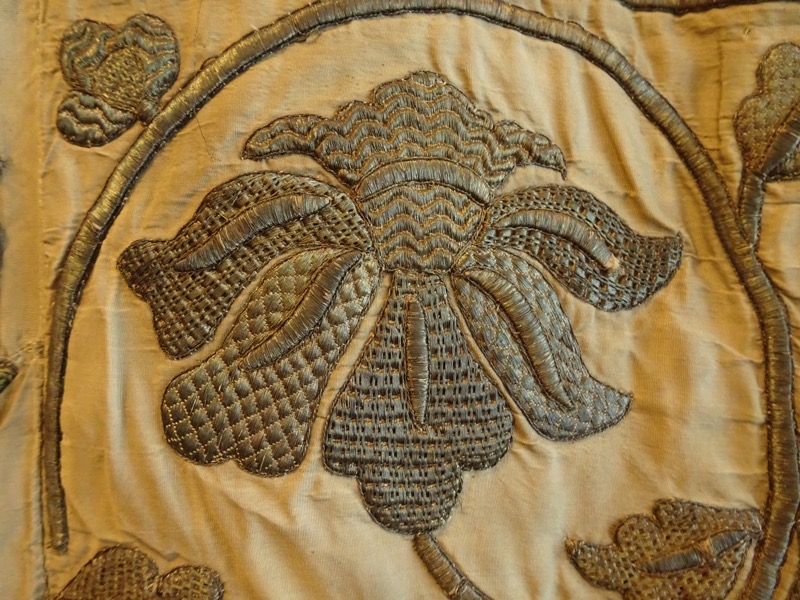 Lithuanian pew, 1683
Lithuanian pew, 1683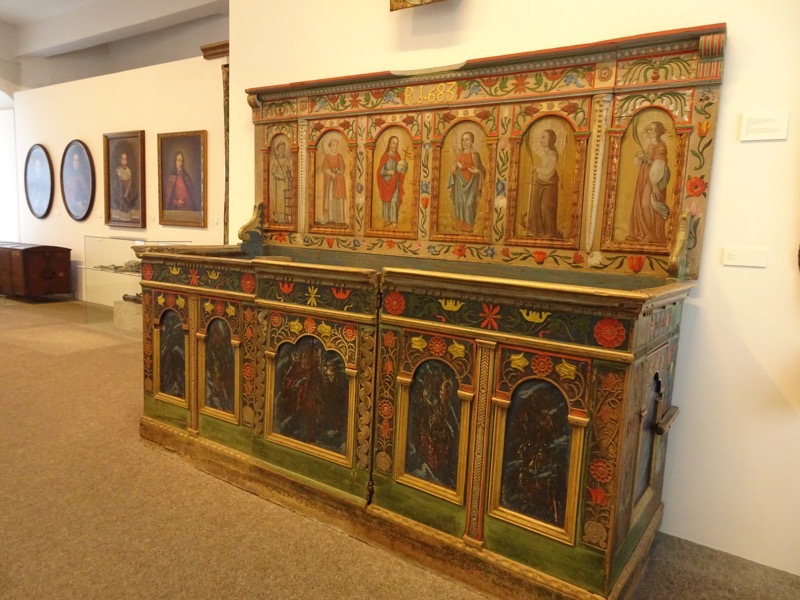
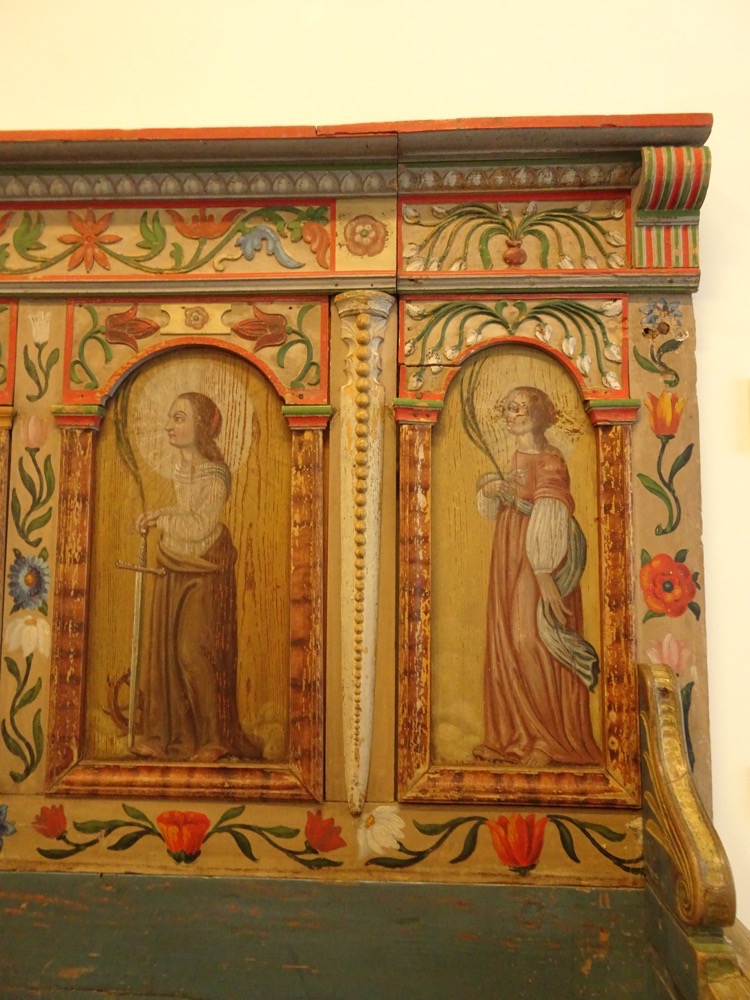 Chest with heraldic device of the Korff and Osten-Sacken families, Latvian c.1680.
Chest with heraldic device of the Korff and Osten-Sacken families, Latvian c.1680.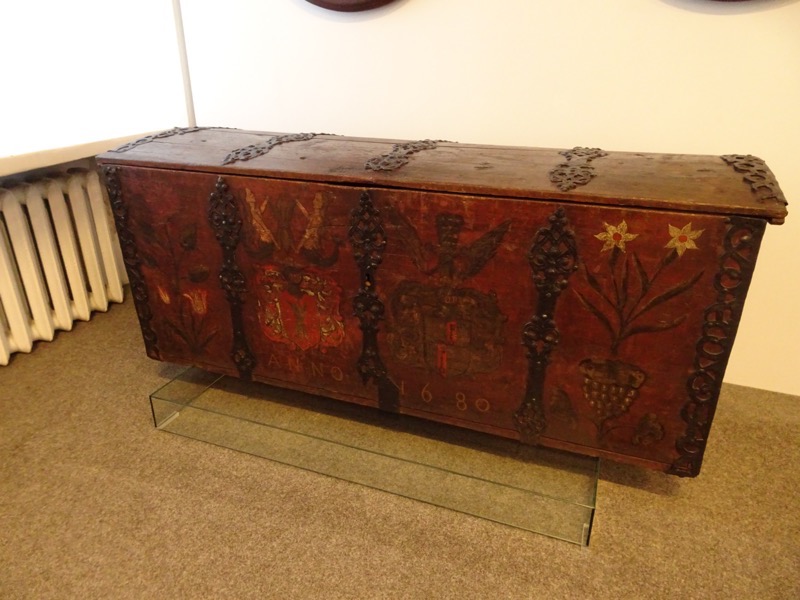 Hook to Drag Plague Victims, Vilnius, earl 18th century… no other information about plague?!
Hook to Drag Plague Victims, Vilnius, earl 18th century… no other information about plague?!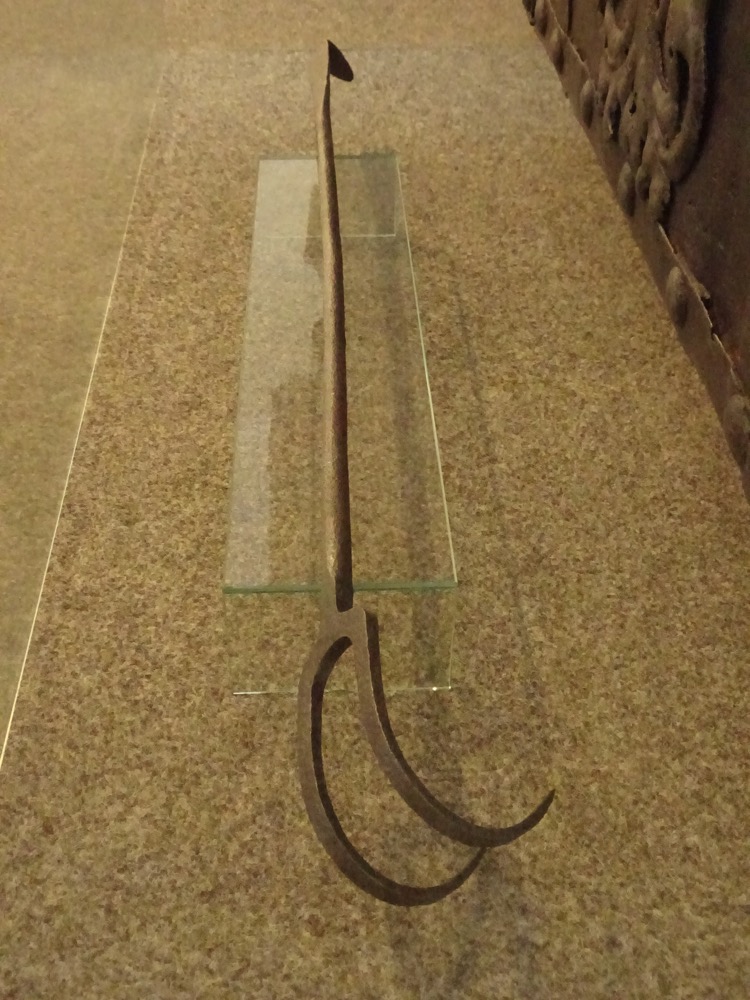 Persian helmet, Turkey, 17th – 18th centuries.
Persian helmet, Turkey, 17th – 18th centuries.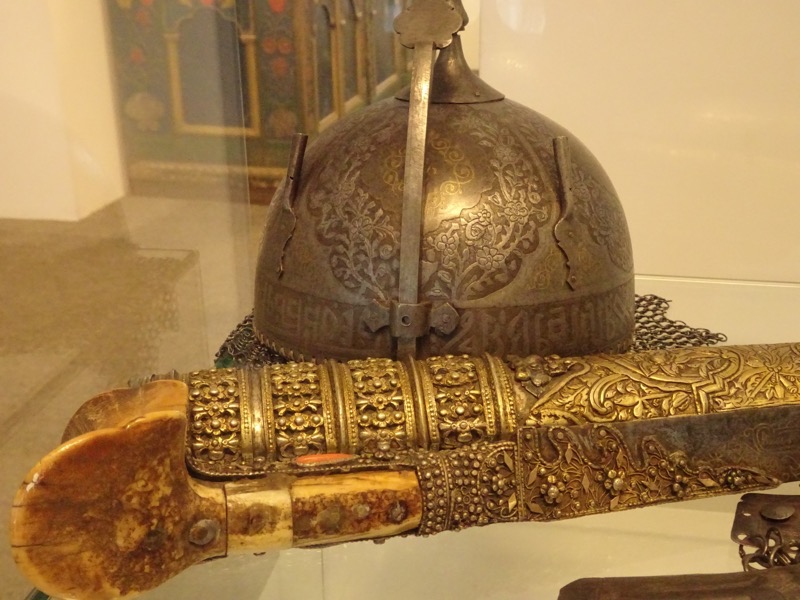 Chair, first half of the 17th century.
Chair, first half of the 17th century. 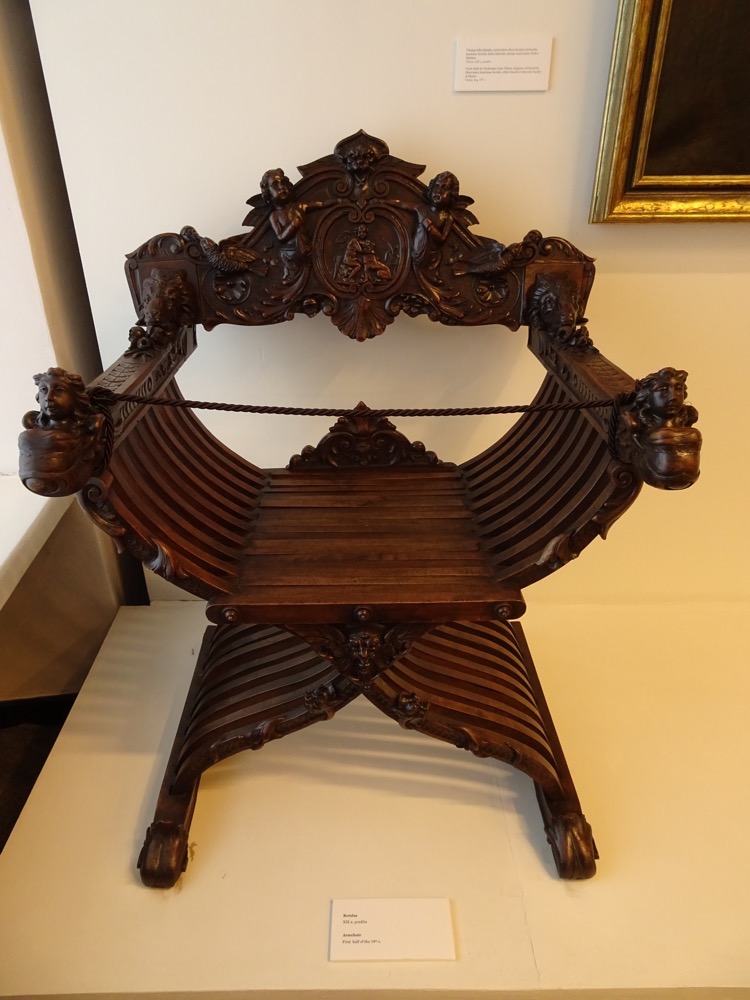
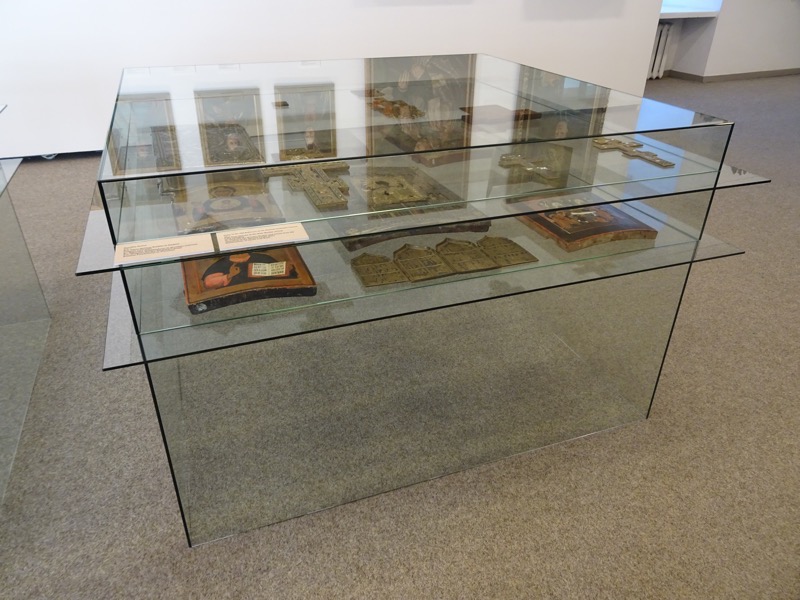 Tablet woven sashes, Lithuanian Minor and South-west Lithuania early 19th century.
Tablet woven sashes, Lithuanian Minor and South-west Lithuania early 19th century.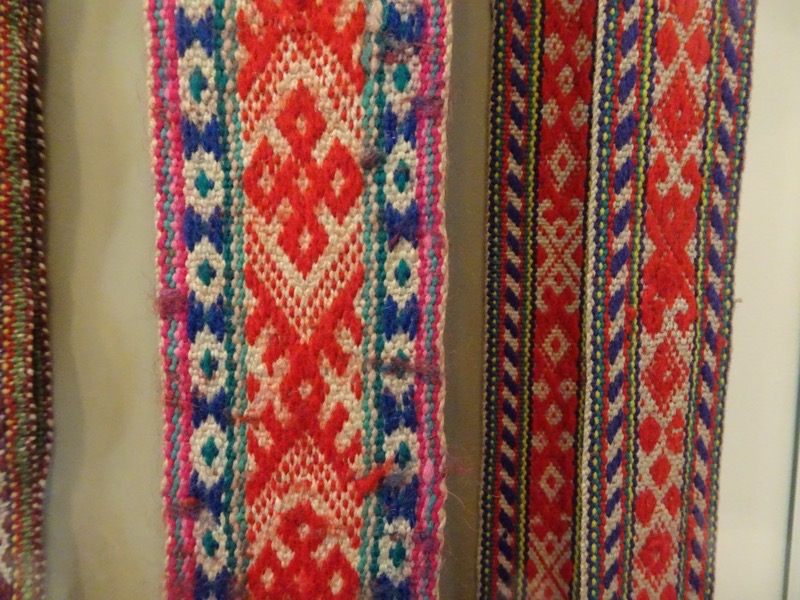
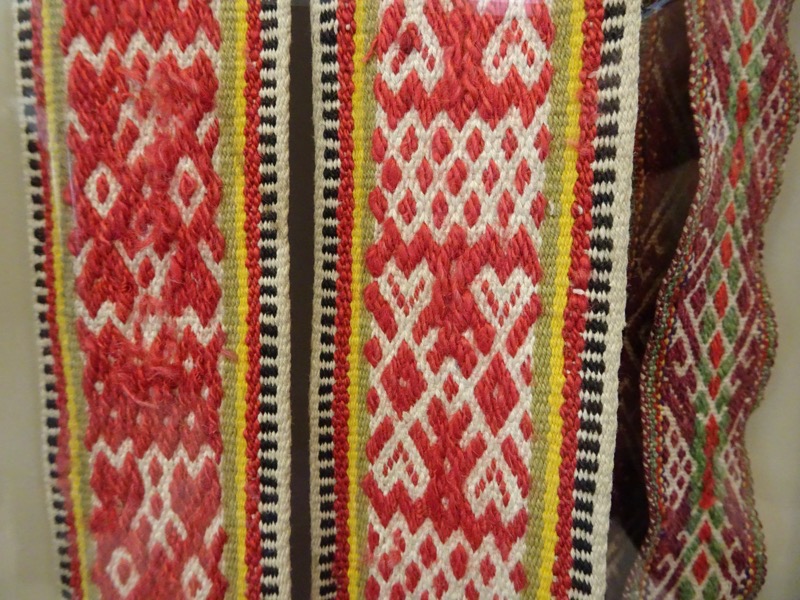
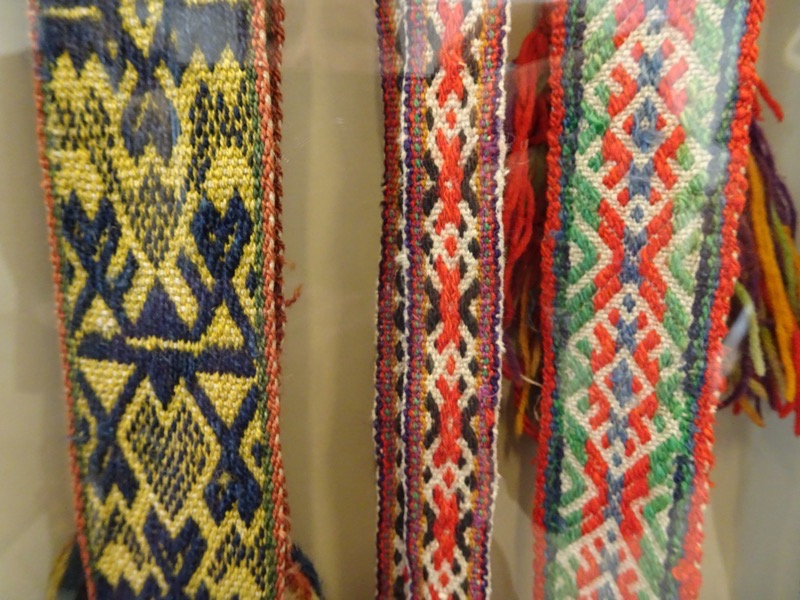
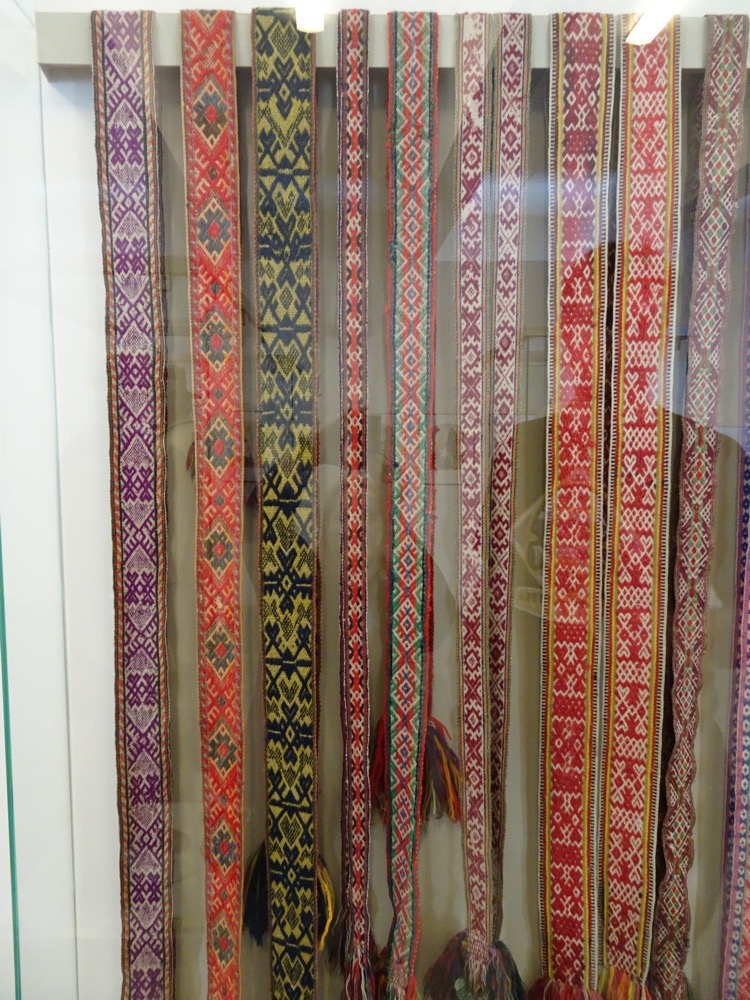 Dowry chest, middle Lithuania, late 19th century.
Dowry chest, middle Lithuania, late 19th century.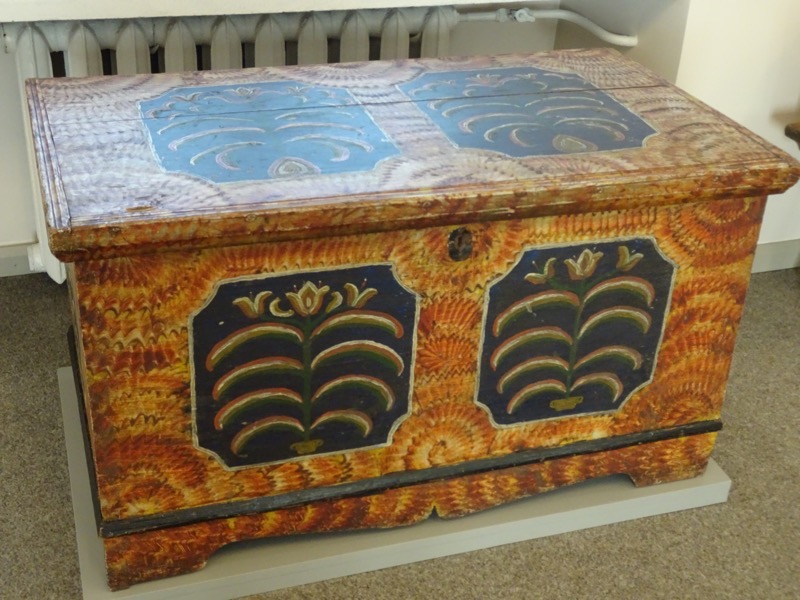 Spinning wheel, middle Lithuania, late 19th century, early 20th century.
Spinning wheel, middle Lithuania, late 19th century, early 20th century.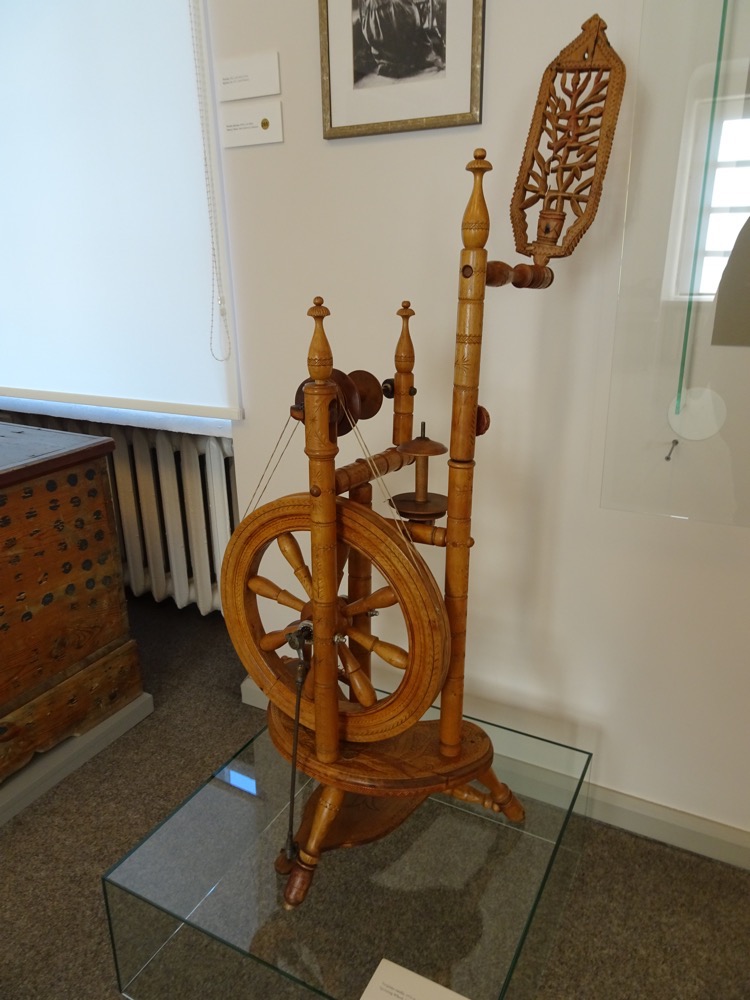 Toy musuem:
Toy musuem: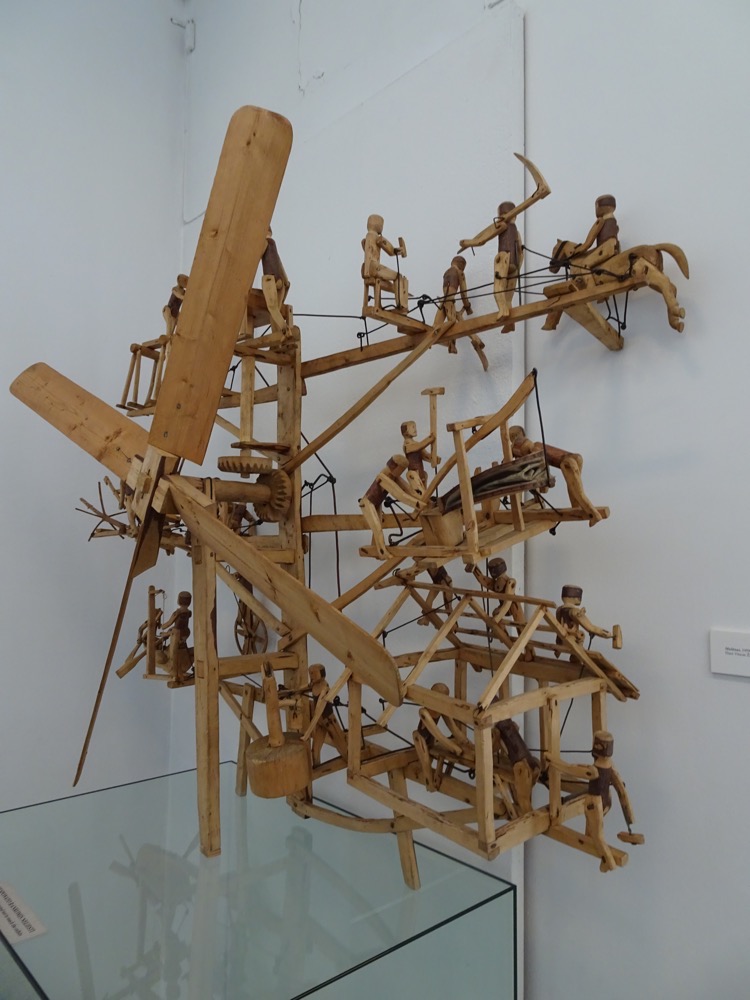
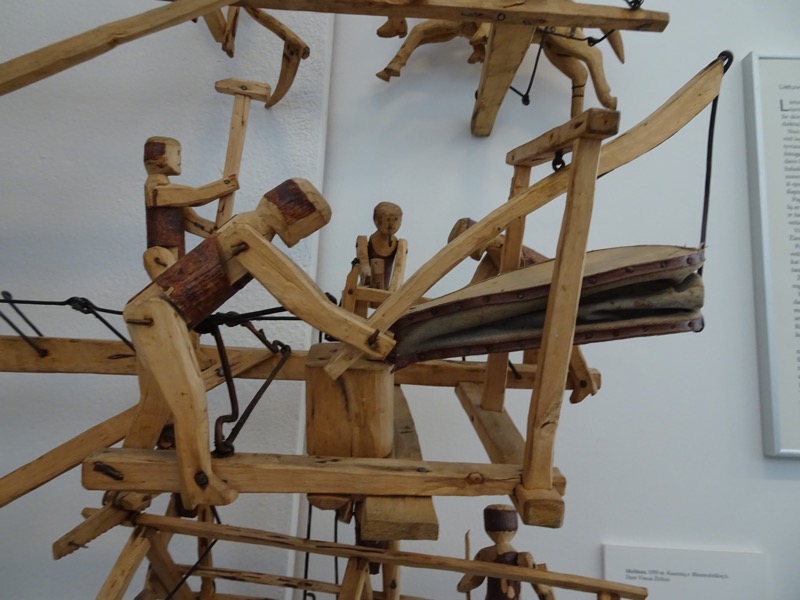
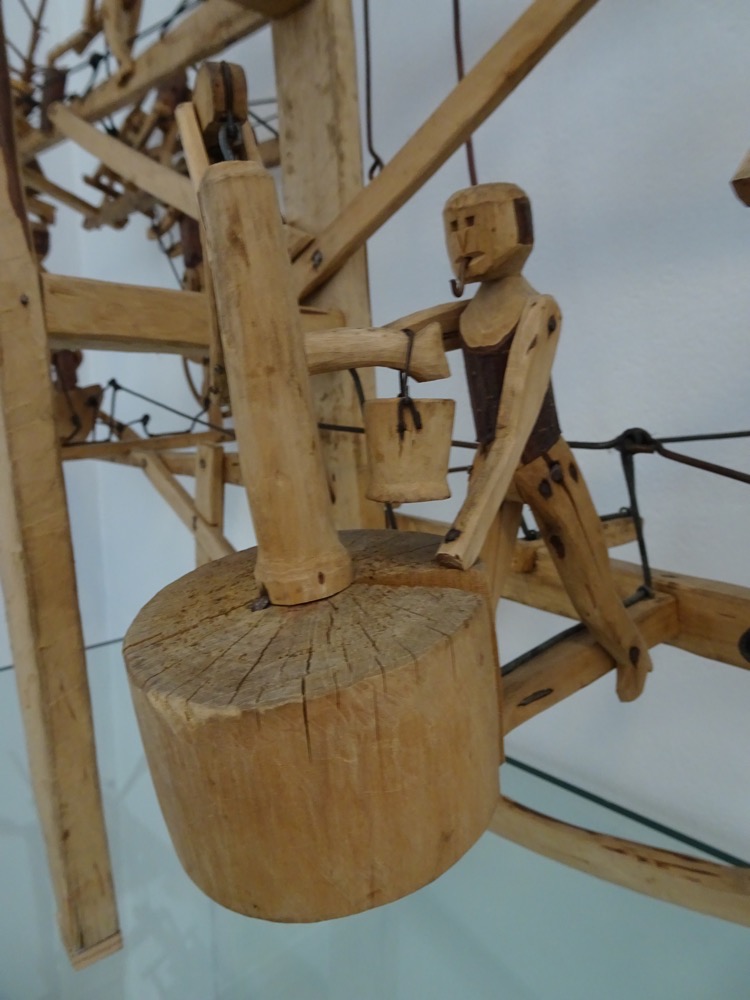
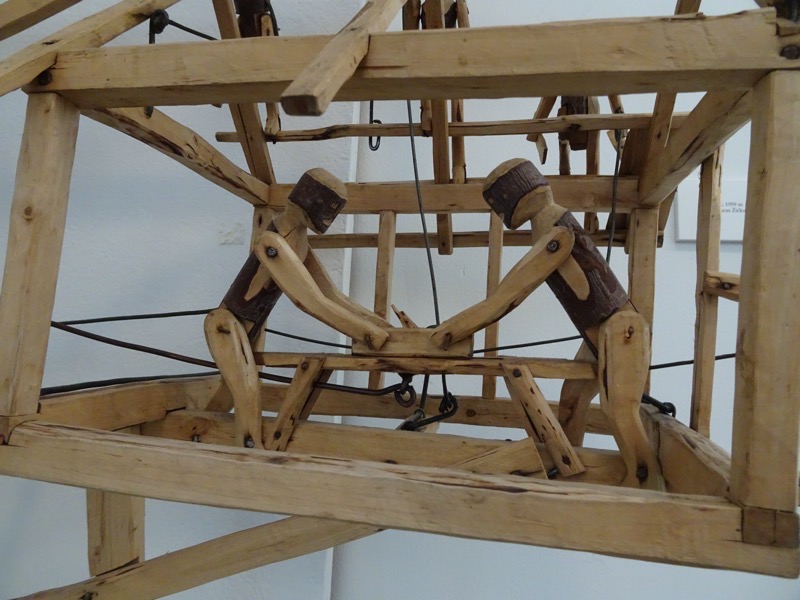
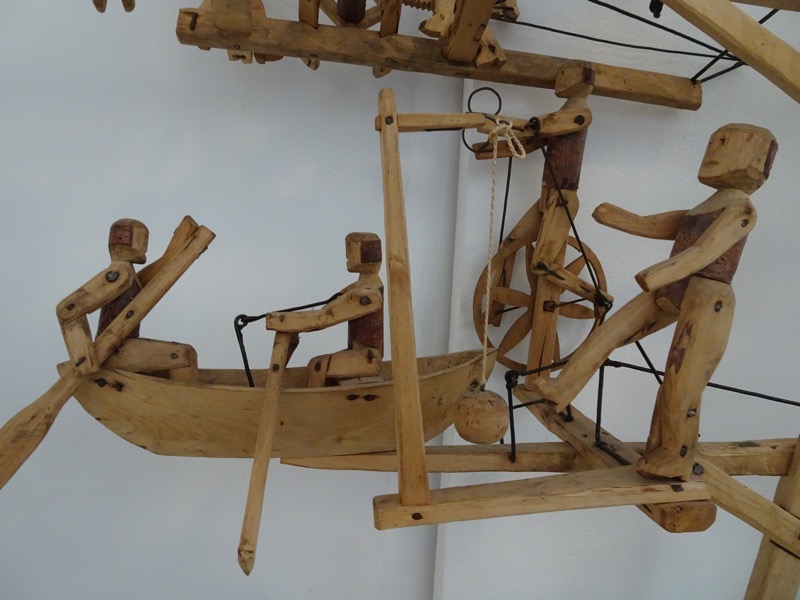 Recreated guest room in a typical Zemaicai house in the early 19th century.
Recreated guest room in a typical Zemaicai house in the early 19th century. 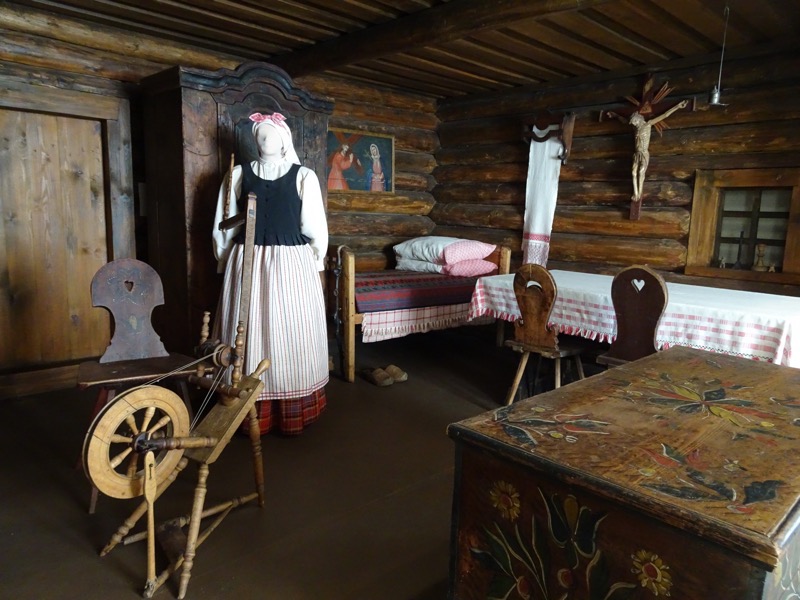 Kitchen/pantry:
Kitchen/pantry: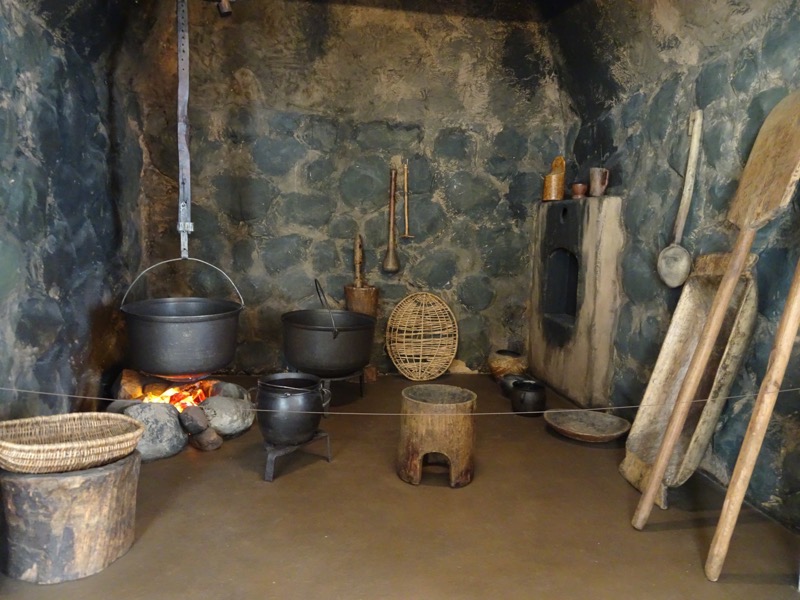
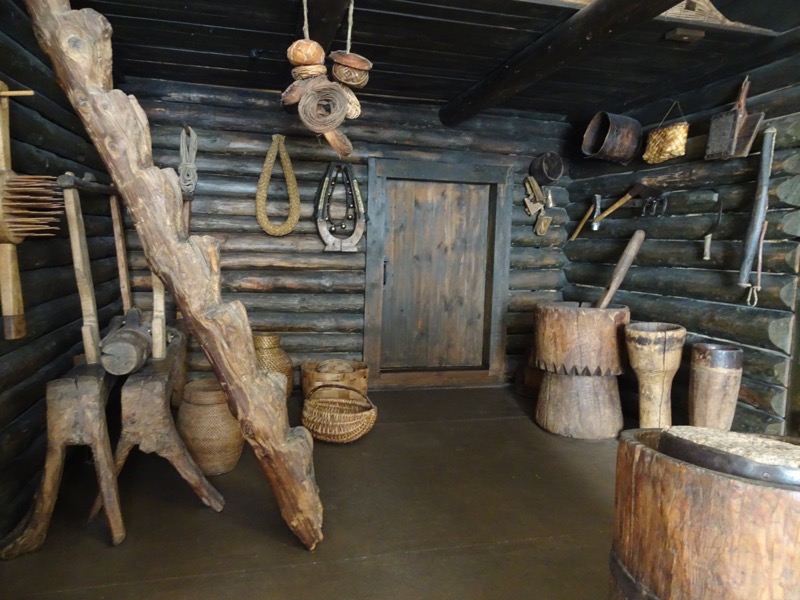 Living/Dining rooms:
Living/Dining rooms: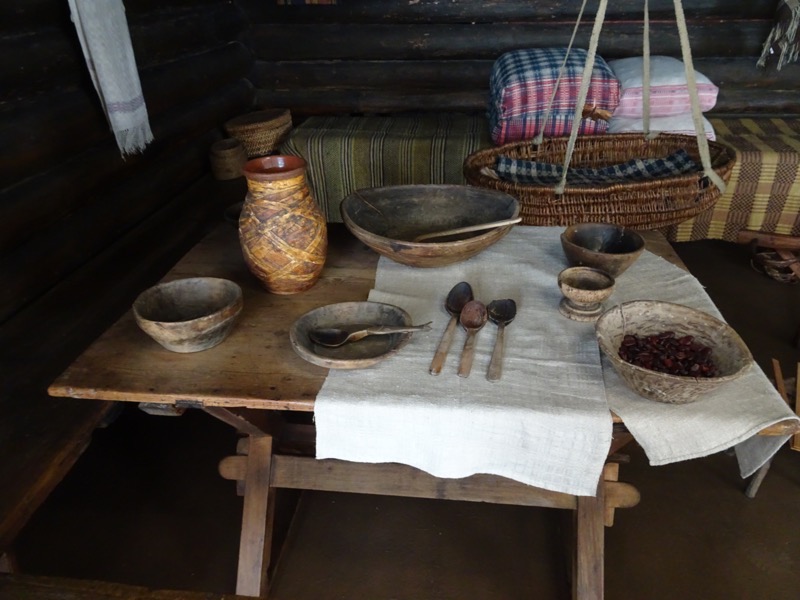 Wooden religious monument tops, various regions, 19th century.
Wooden religious monument tops, various regions, 19th century.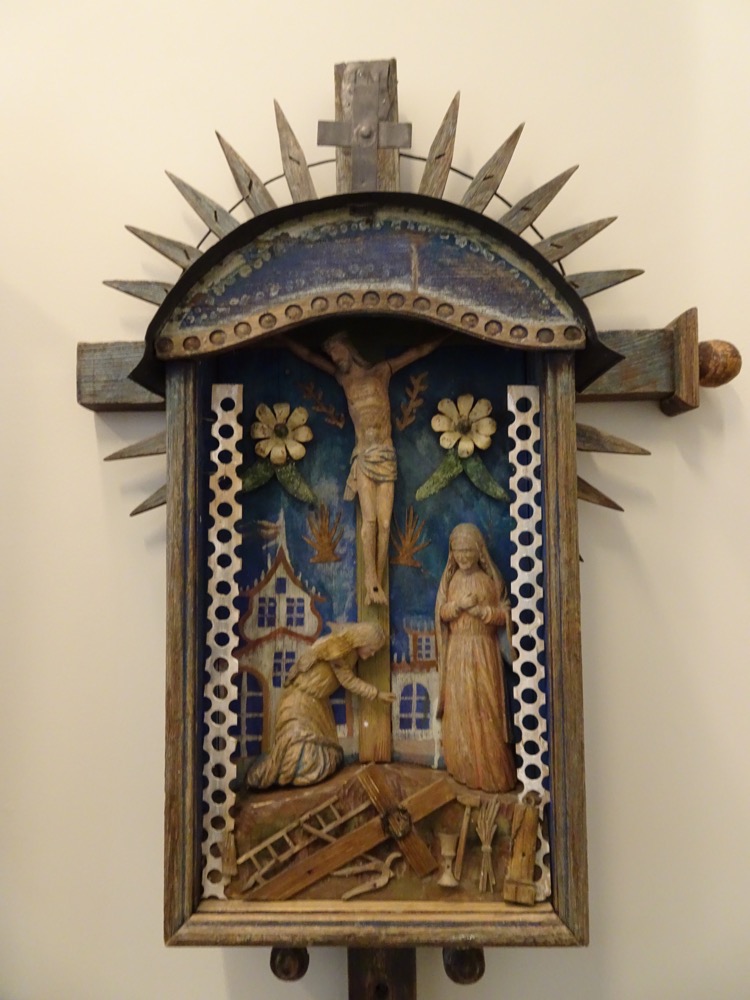
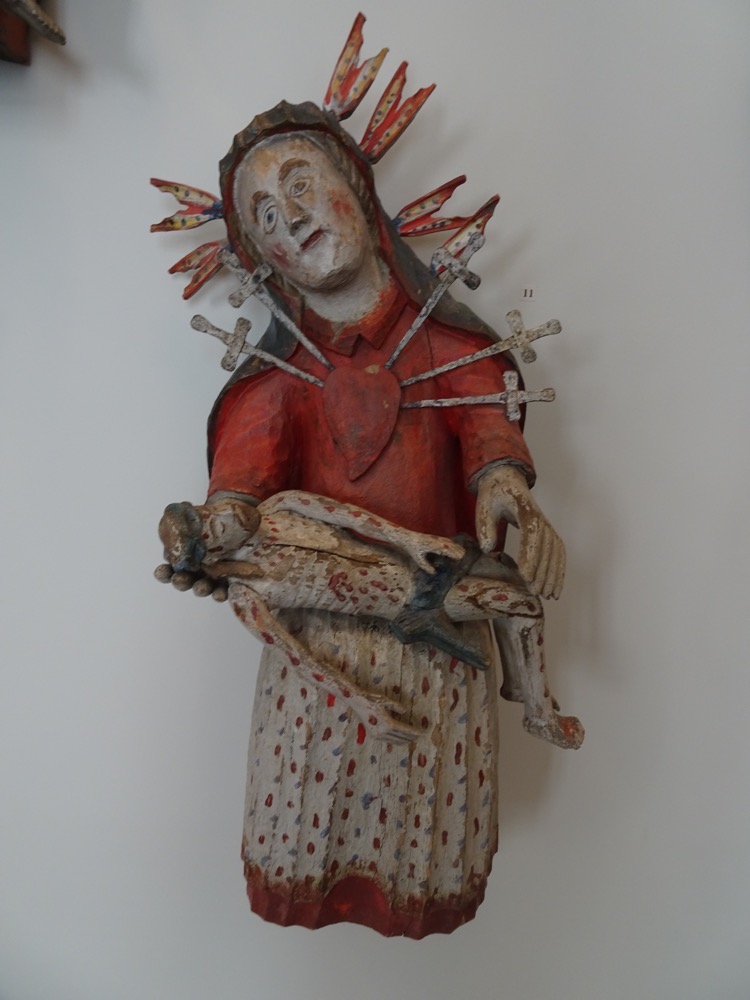
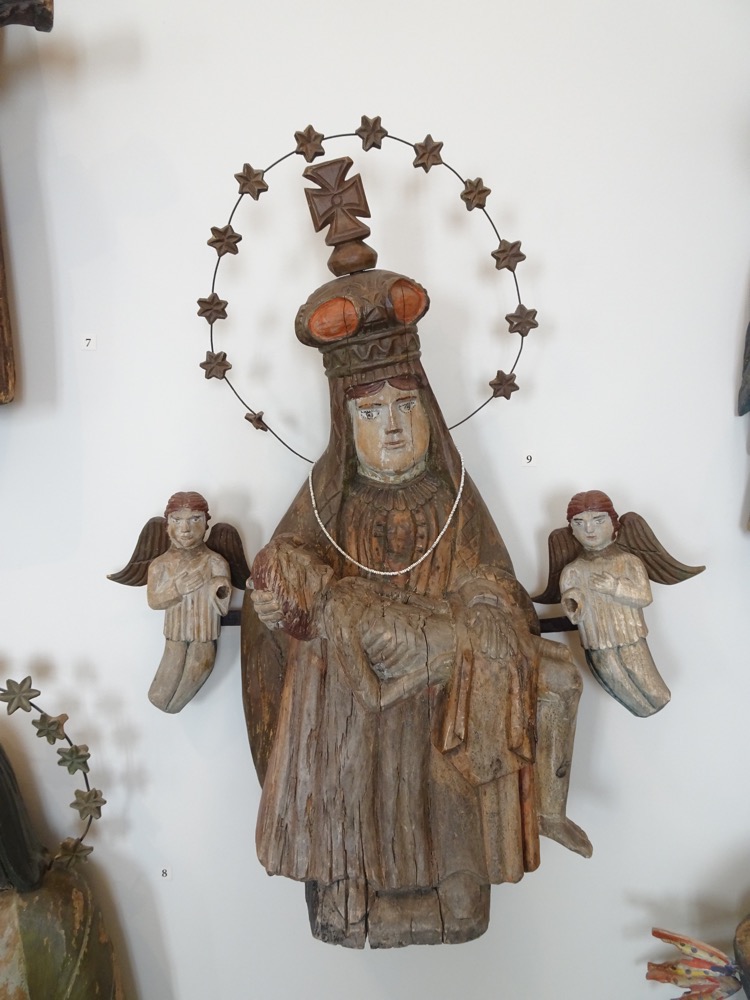 St George…
St George…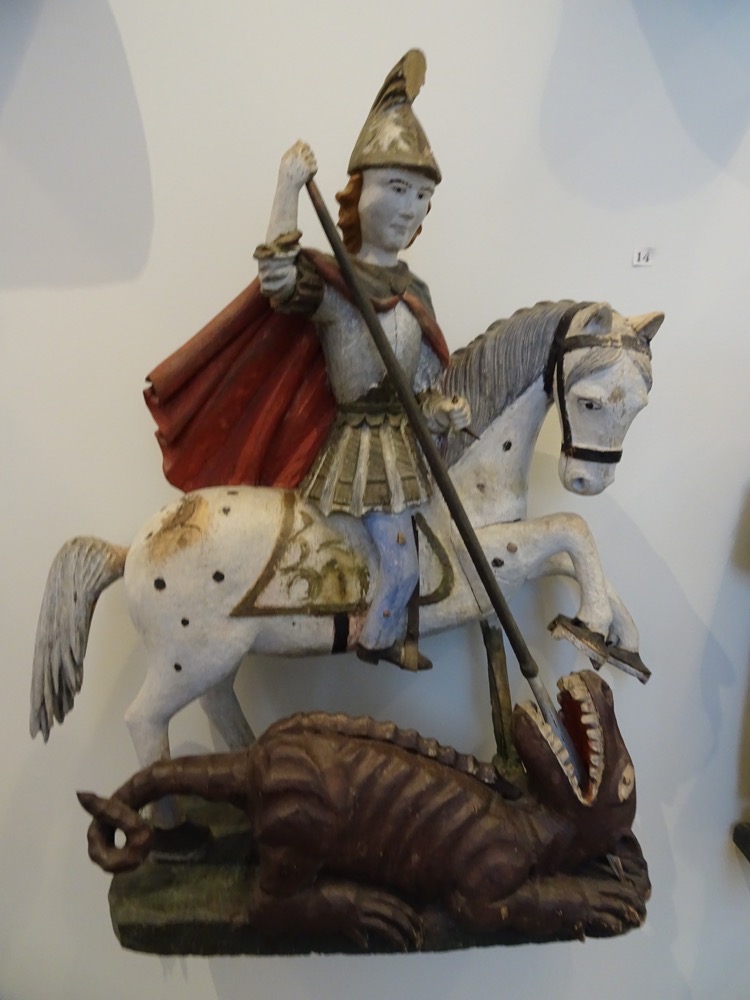 St Florian…
St Florian…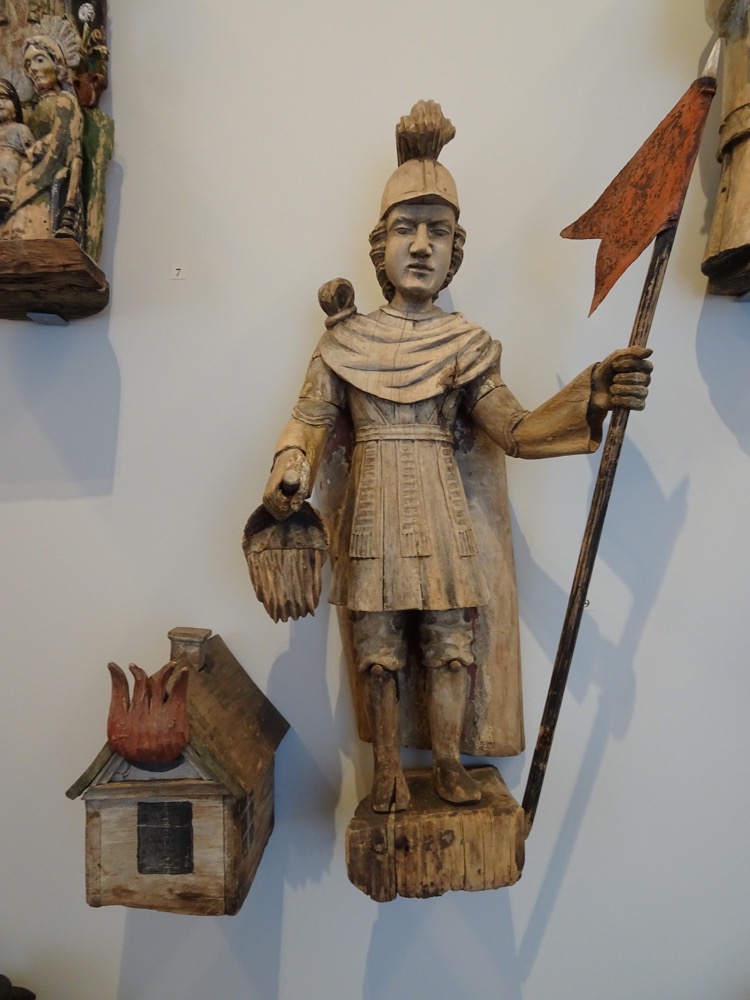
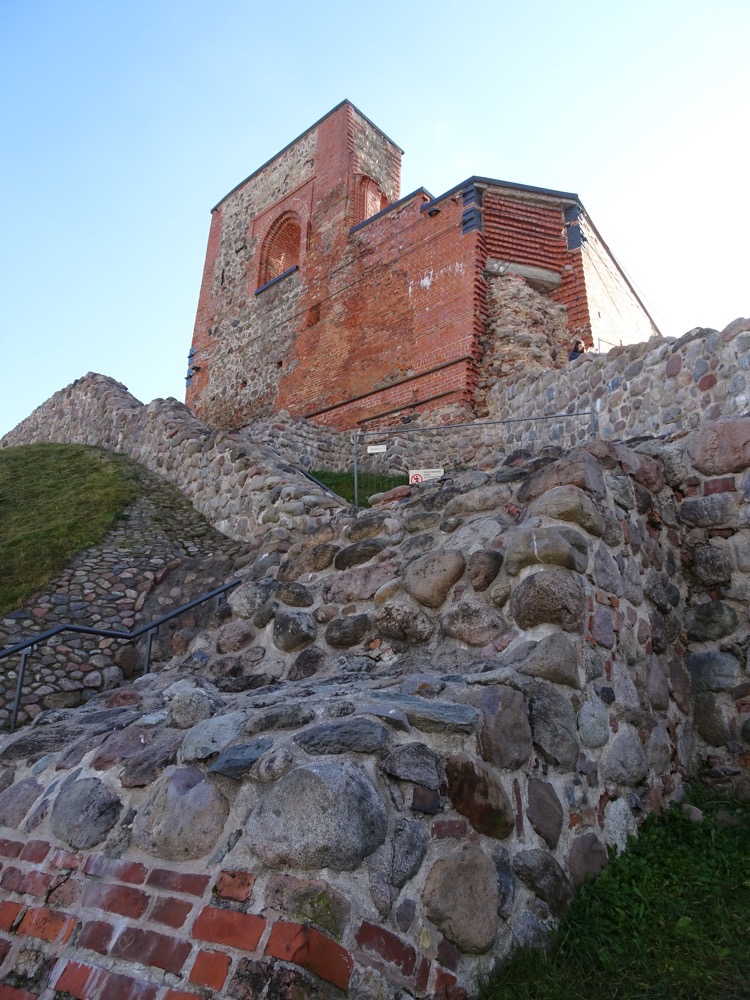 It’s a seriously shitty climb.
It’s a seriously shitty climb.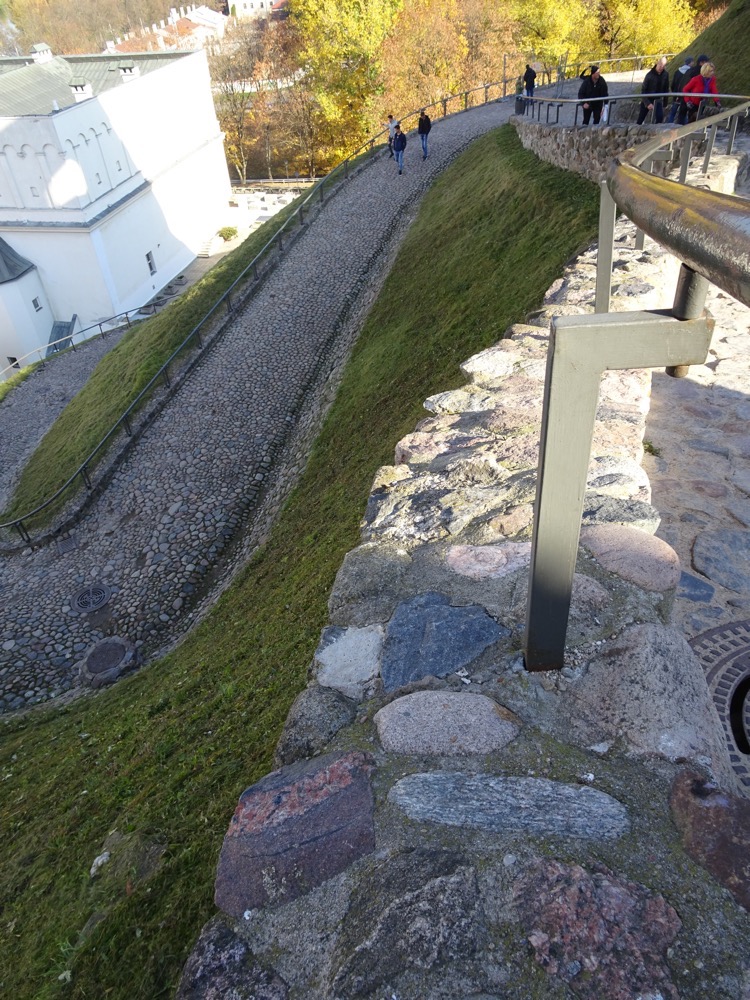 Almost to the top:
Almost to the top: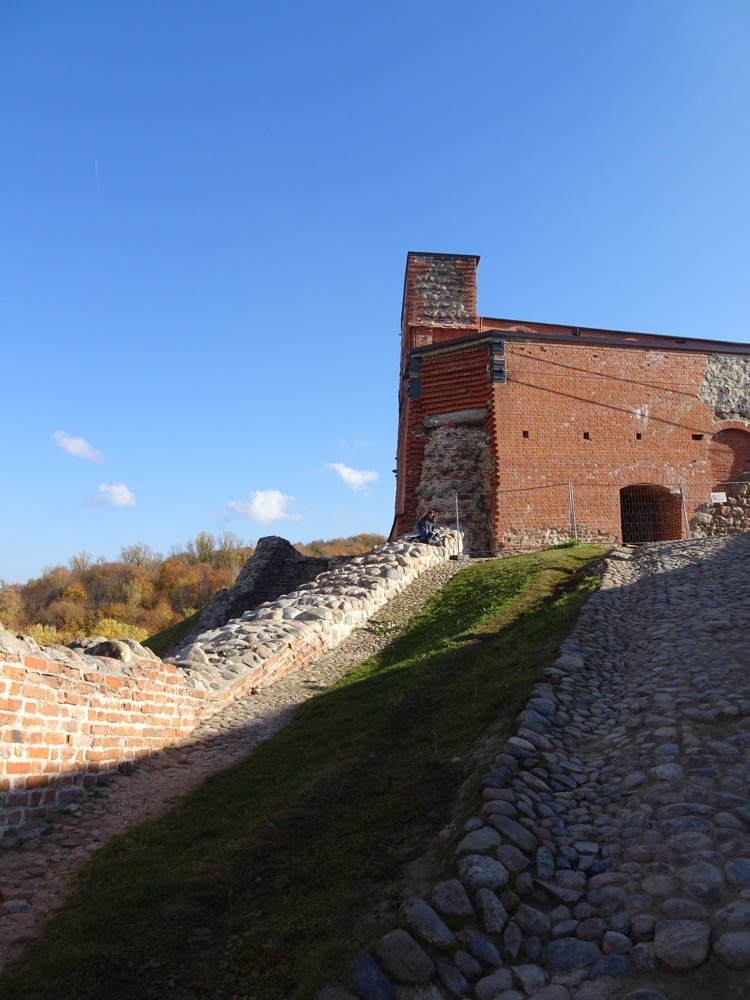 The tower normally houses a museum exhibiting archaeological findings from the hill and the surrounding areas and has models of Vilnius castles from the 14th to the 17th centuries, and some armaments, and other iconographic material of Old Vilnius – normally. However, on this occasion, most of the complex is closed for restoration due to what seems to be a rather nasty landslide and part of the castle starting to look like it’s going to slide down into a river?
The tower normally houses a museum exhibiting archaeological findings from the hill and the surrounding areas and has models of Vilnius castles from the 14th to the 17th centuries, and some armaments, and other iconographic material of Old Vilnius – normally. However, on this occasion, most of the complex is closed for restoration due to what seems to be a rather nasty landslide and part of the castle starting to look like it’s going to slide down into a river?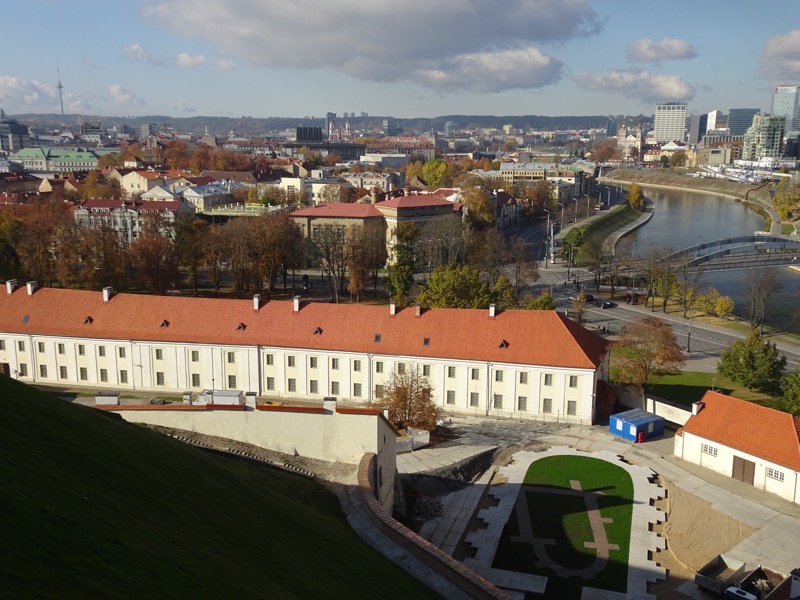 Towards the university grounds:
Towards the university grounds: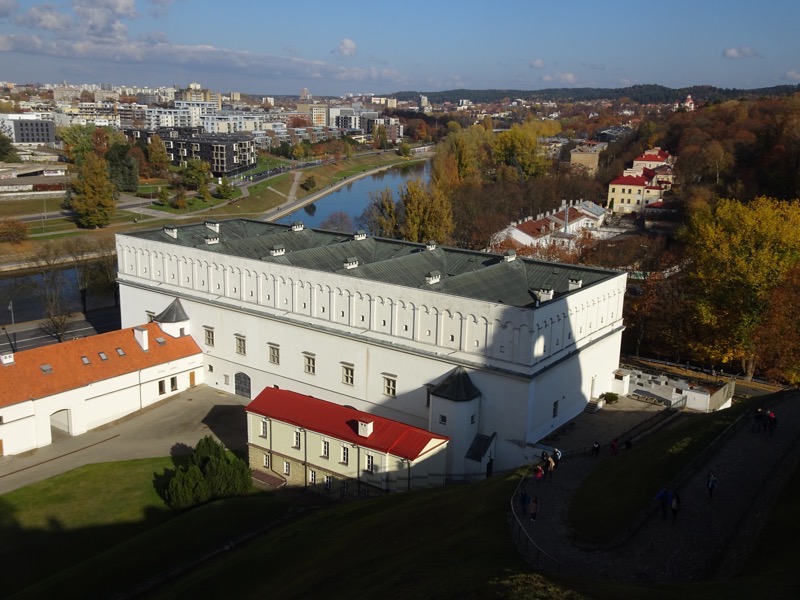 Gediminas’ Tower:
Gediminas’ Tower: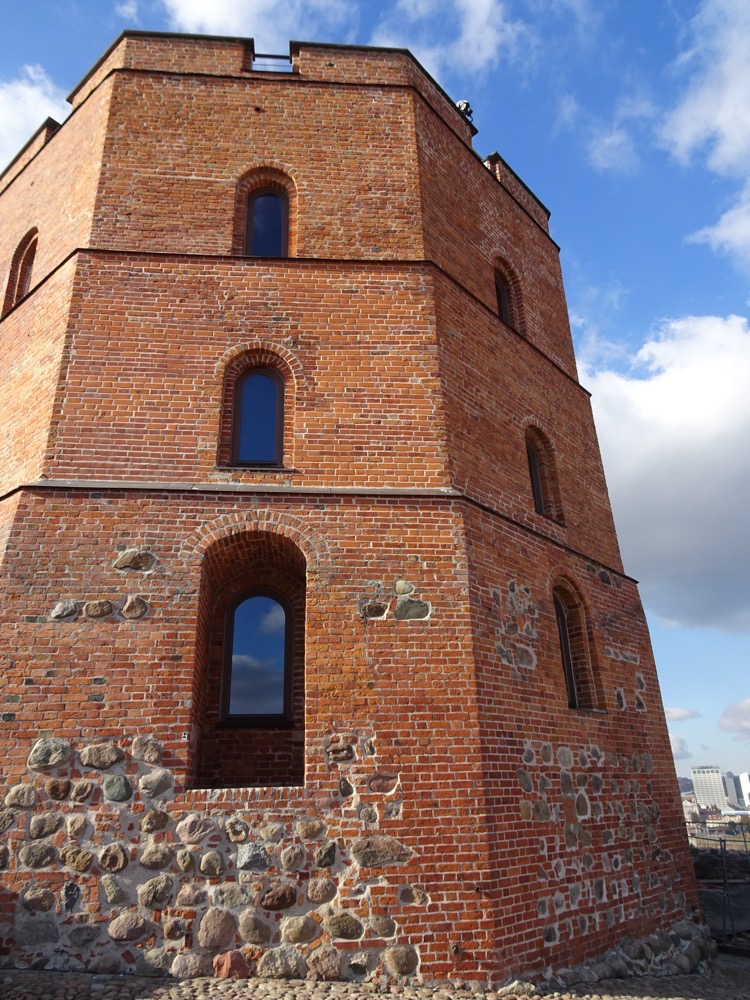 After we made our way through the castle complex, most of which was behind scaffolding, we clambered carefully back down the cobbled hill – because of course if you are going to go tits up, it will be while going downhill and went for a walk around the bottom of the castle tower base. I simply can not get over these gorgeous autumn colours.
After we made our way through the castle complex, most of which was behind scaffolding, we clambered carefully back down the cobbled hill – because of course if you are going to go tits up, it will be while going downhill and went for a walk around the bottom of the castle tower base. I simply can not get over these gorgeous autumn colours. 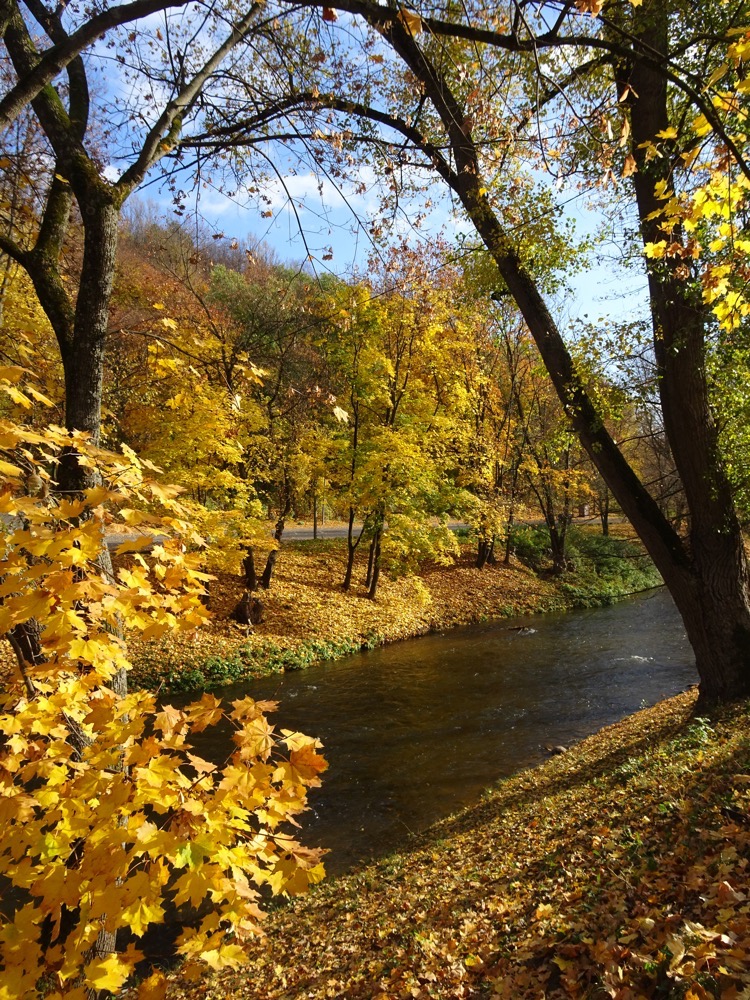
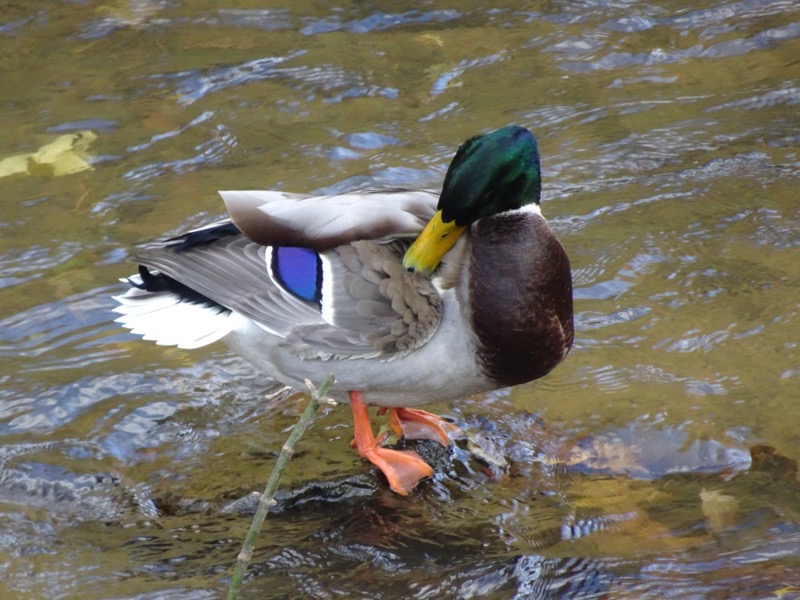
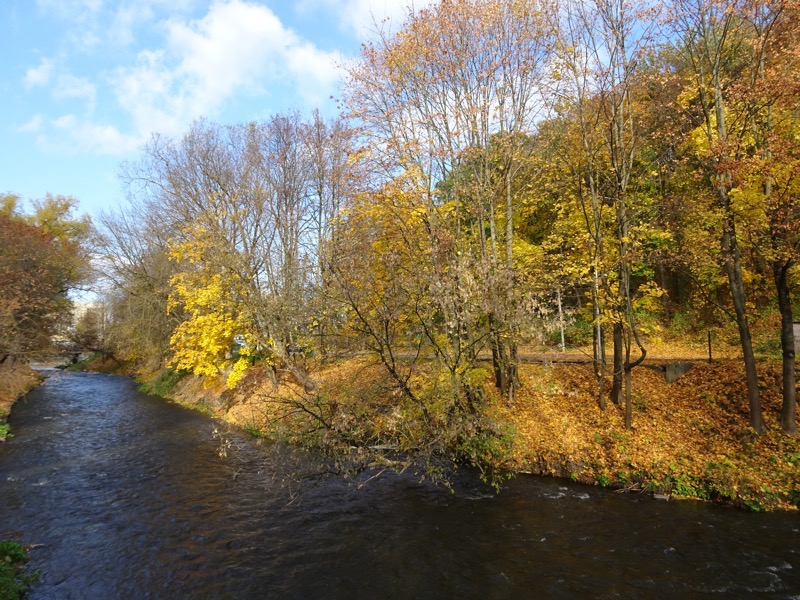 The tower from Cathedral Square:
The tower from Cathedral Square: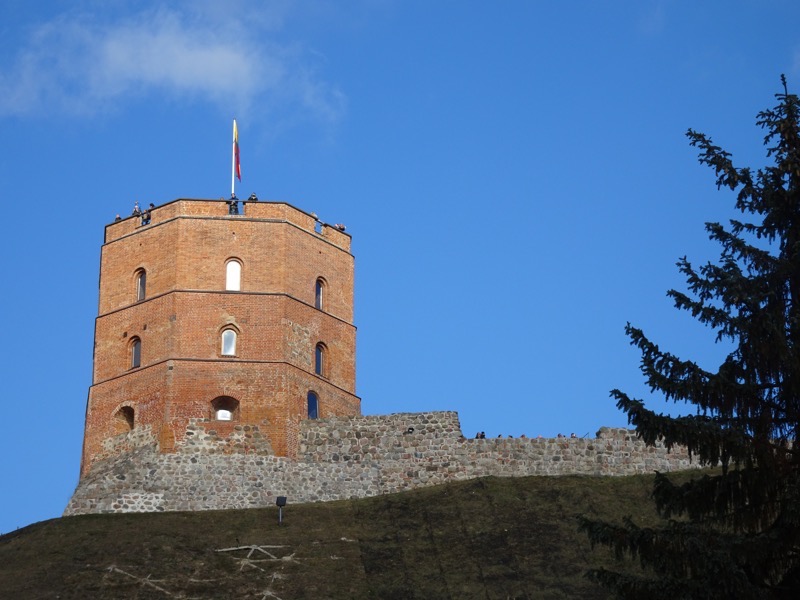 Presidential Palace: This building is the central part of the former Governor’s Palace. The first palace was built here in the 15th century and used as the Vilnius bishops’ residence until 1795 when it was given to the governor-general. It currently holds the President’s official offices.
Presidential Palace: This building is the central part of the former Governor’s Palace. The first palace was built here in the 15th century and used as the Vilnius bishops’ residence until 1795 when it was given to the governor-general. It currently holds the President’s official offices.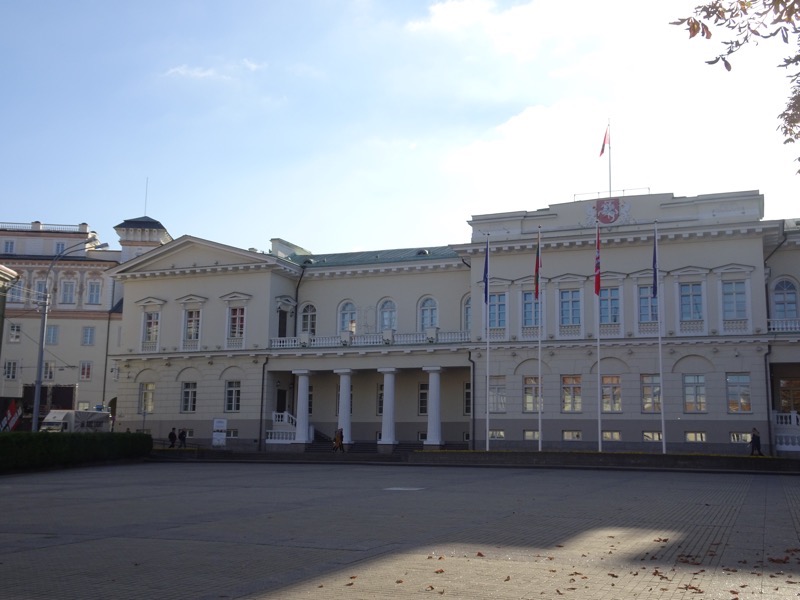 After this, we went hunting for a bit of lunch at a place called Būsi Trečias. Something local, affordable and hopefully not too far. Trip Advisor can be great for finding restaurants and it served us well last night, but sometimes it can be a bit hit and miss. We found a restaurant called and immediately ordered some disgustingly large ciders – because the alcohol is always cheaper than the soft drink or sometimes even the bottled water!
After this, we went hunting for a bit of lunch at a place called Būsi Trečias. Something local, affordable and hopefully not too far. Trip Advisor can be great for finding restaurants and it served us well last night, but sometimes it can be a bit hit and miss. We found a restaurant called and immediately ordered some disgustingly large ciders – because the alcohol is always cheaper than the soft drink or sometimes even the bottled water!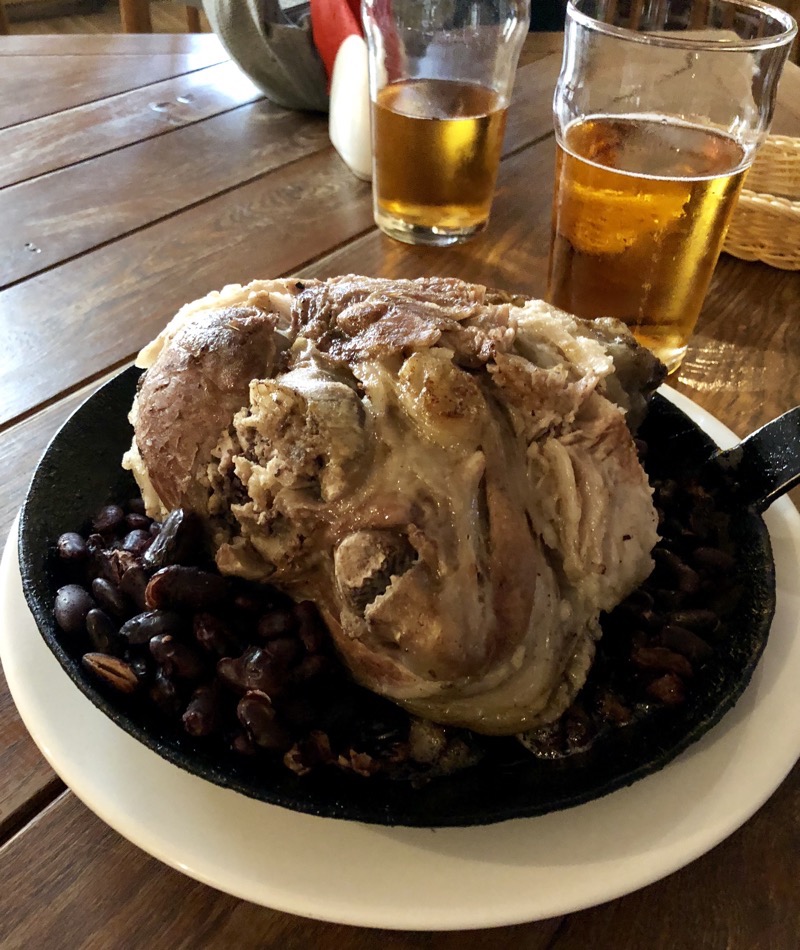 yale ordered what was called a ‘Village Pan’ and was full of potato, bacon and mushrooms, gherkins and god knows what else. It was okay in the end, yale more than happily assisted in polishing off the pork hock (well the chunks of it that weren’t fat and bone that is).
yale ordered what was called a ‘Village Pan’ and was full of potato, bacon and mushrooms, gherkins and god knows what else. It was okay in the end, yale more than happily assisted in polishing off the pork hock (well the chunks of it that weren’t fat and bone that is).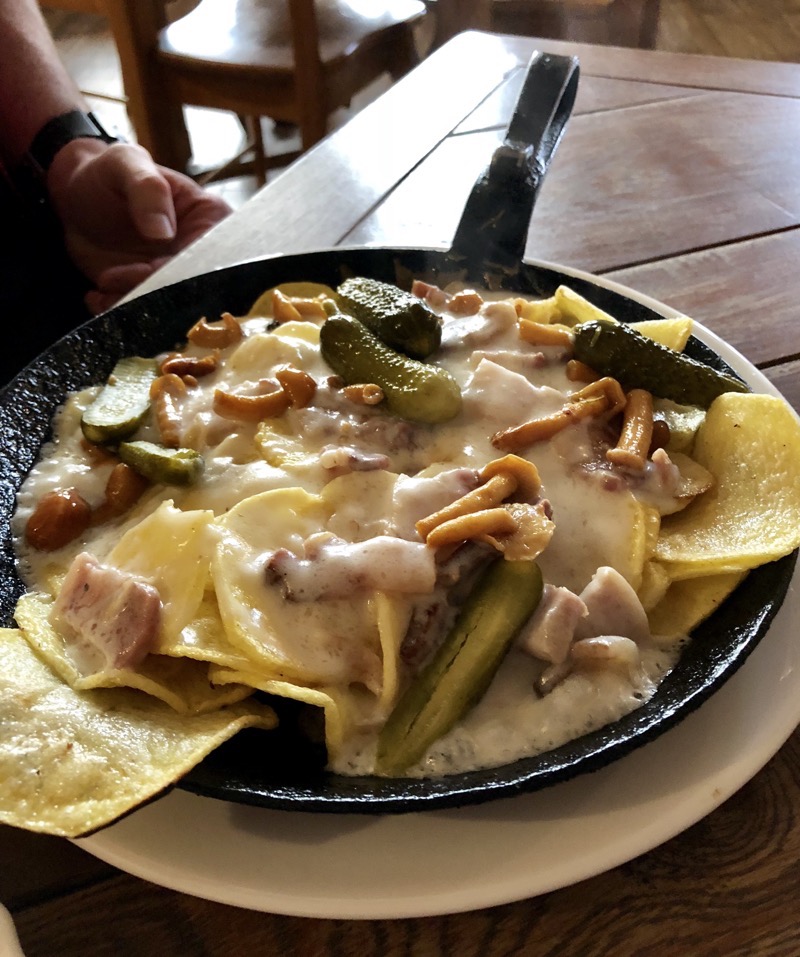 After lunch, we went for a quick wander down the main street of the Old Town to see what the other tourists are doing today. It was fairly quiet – I think that is the benefit of being here off-peak. Not many monument hogging selfie obsessed tourists around these parts.
After lunch, we went for a quick wander down the main street of the Old Town to see what the other tourists are doing today. It was fairly quiet – I think that is the benefit of being here off-peak. Not many monument hogging selfie obsessed tourists around these parts. Souvenir shops are the same the world over aren’t they? Full of stuff no one needs and hardly anyone wants. I collected my pins and we moved one.
Souvenir shops are the same the world over aren’t they? Full of stuff no one needs and hardly anyone wants. I collected my pins and we moved one.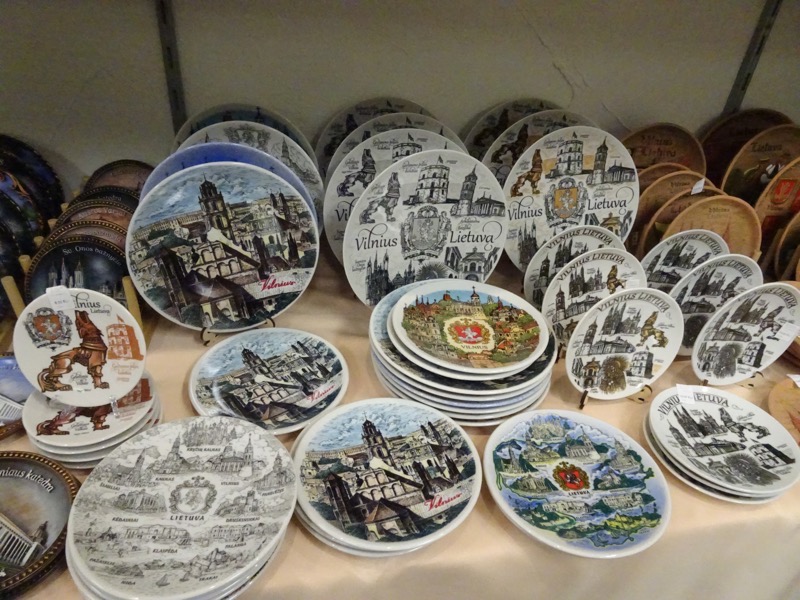
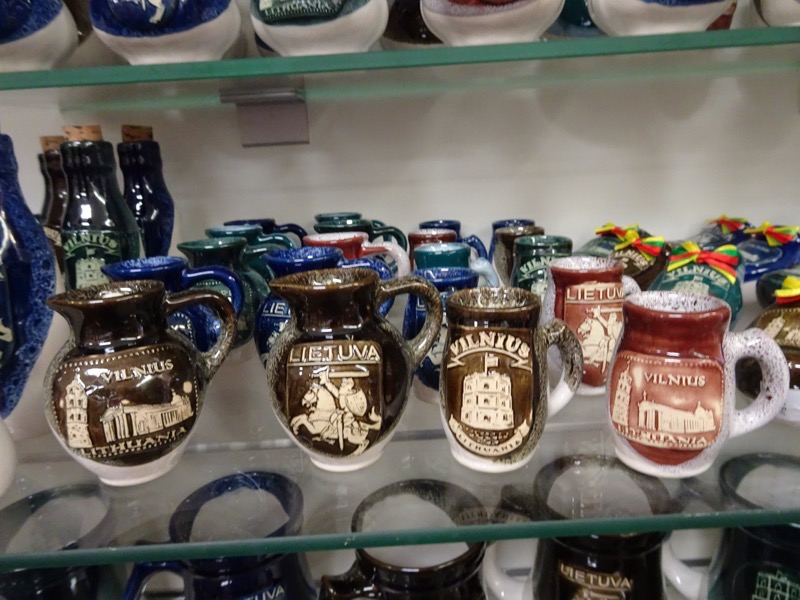
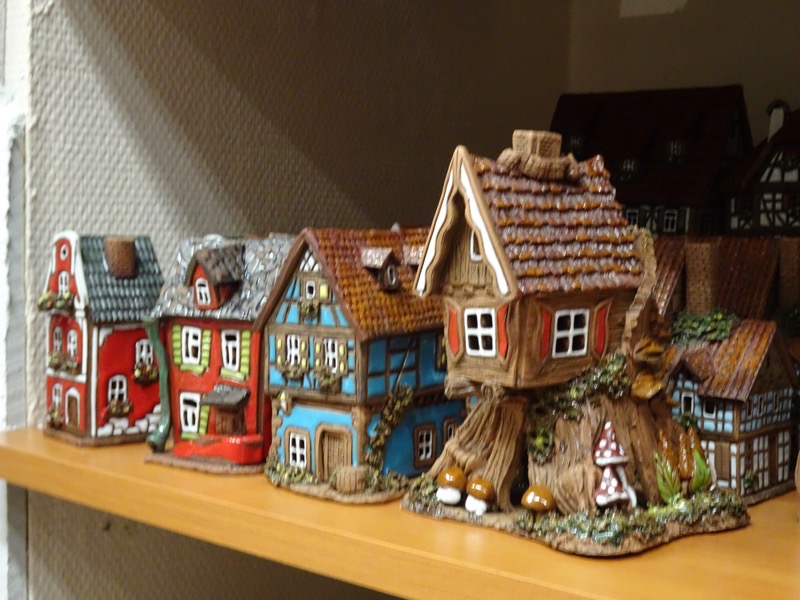 I was trying to take a photo of this amazing building, and couldn’t find a good vantage point to capture the brickwork. It was only after I took about four pictures that I realised he was getting annoyed at me taking his photo (and not dropping coins in his hat I dare say), whereas the truth was, I’m standing there thinking, ‘Why has that guy plonked himself and his ugly purple trolley right in front of the only building in the street that I want to photograph!?’
I was trying to take a photo of this amazing building, and couldn’t find a good vantage point to capture the brickwork. It was only after I took about four pictures that I realised he was getting annoyed at me taking his photo (and not dropping coins in his hat I dare say), whereas the truth was, I’m standing there thinking, ‘Why has that guy plonked himself and his ugly purple trolley right in front of the only building in the street that I want to photograph!?’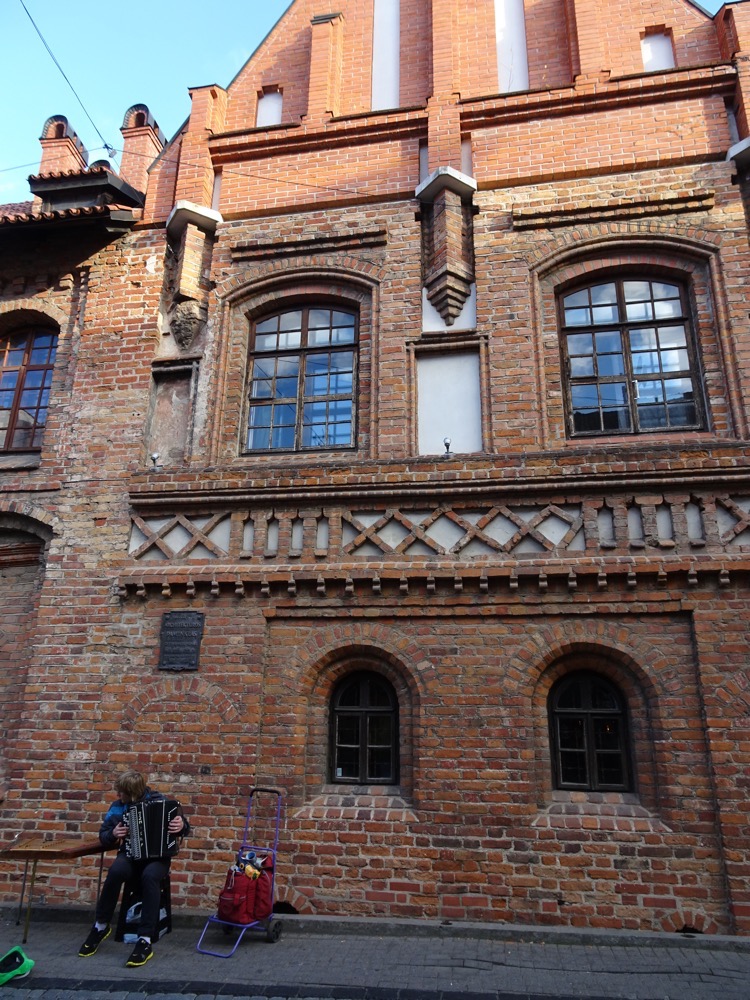 Wine bar on the corner near our B&B.
Wine bar on the corner near our B&B.
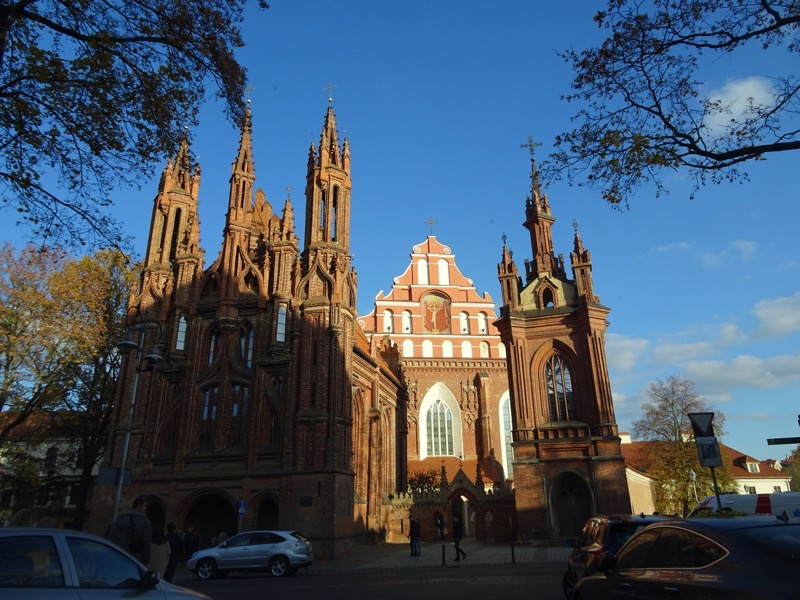 We had decided to spend the last few hours of the day going for a drive out to the Trakai ‘medieval castle’. Was surprised to see hot air balloons up at 3pm in the afternoon – at home, it seems to be an early dawn activity.
We had decided to spend the last few hours of the day going for a drive out to the Trakai ‘medieval castle’. Was surprised to see hot air balloons up at 3pm in the afternoon – at home, it seems to be an early dawn activity.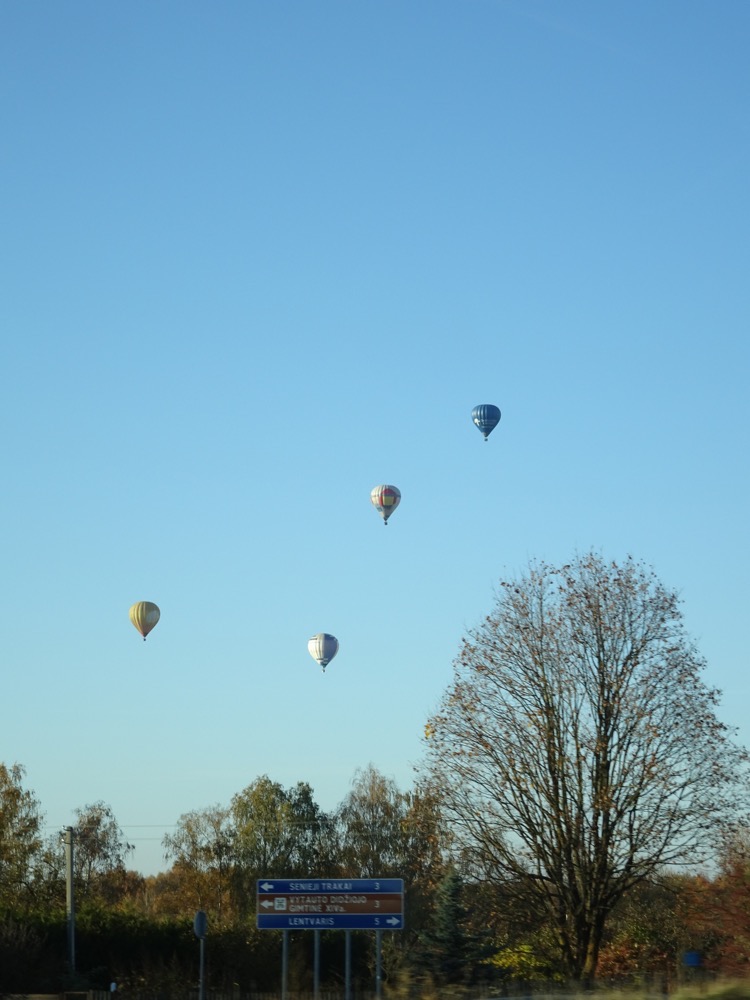 Trakai is a very touristy village near the castle, that seems to have sprung up to serve the tourists that come to visit the place. Full of bright coloured buildings, cafes and gift shops.
Trakai is a very touristy village near the castle, that seems to have sprung up to serve the tourists that come to visit the place. Full of bright coloured buildings, cafes and gift shops.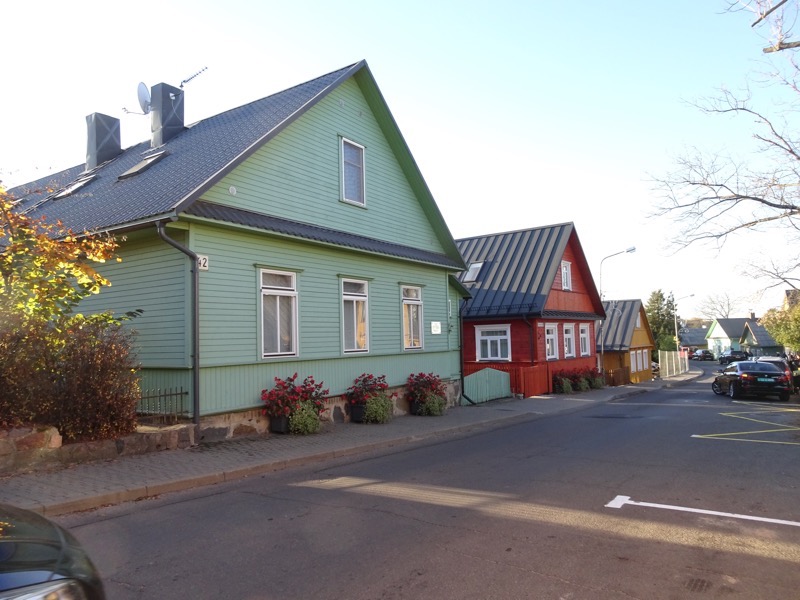
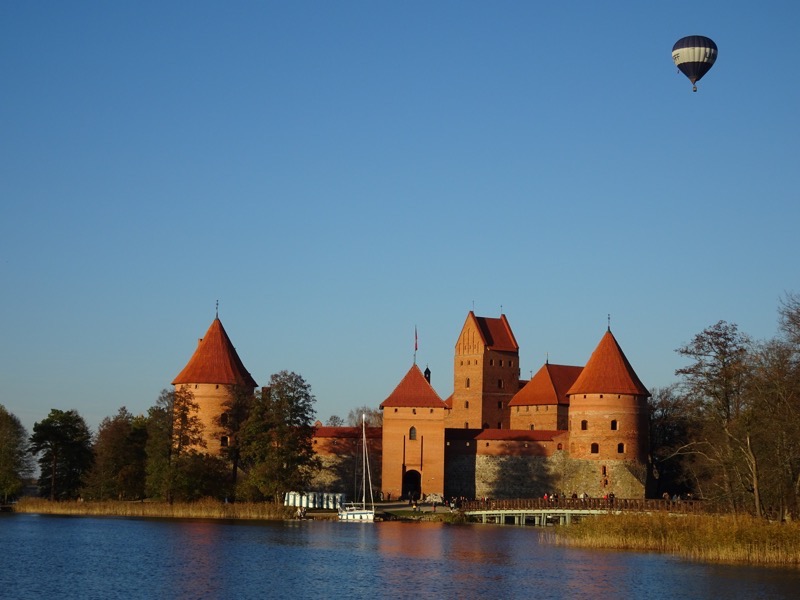
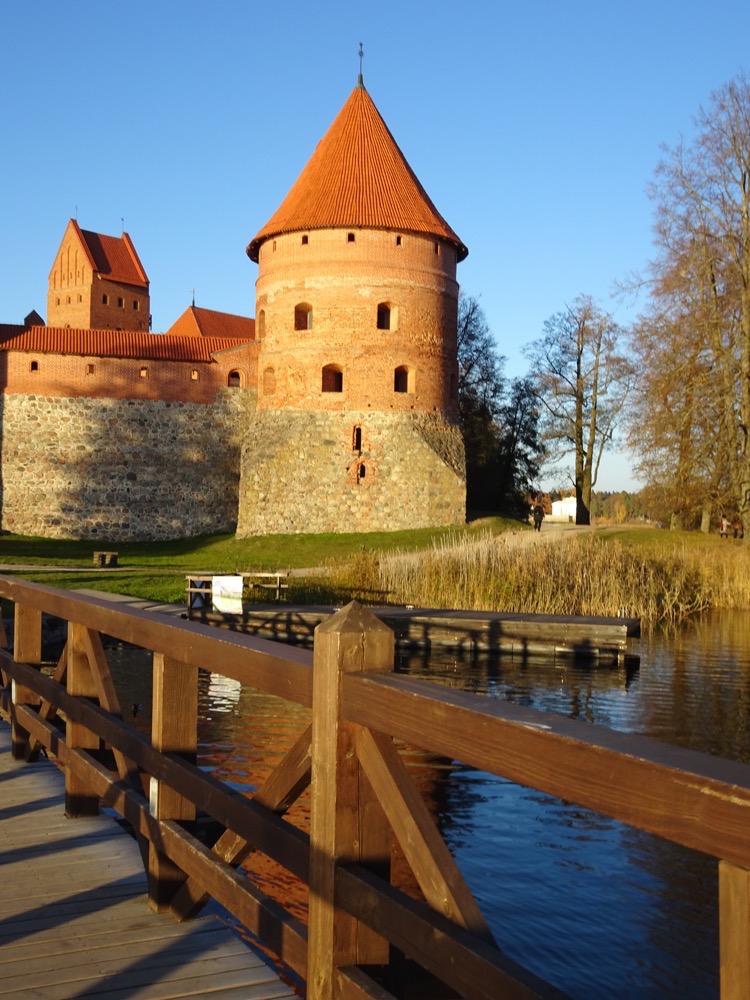 Like so many of the other historic places we have visited this trip, the castle suffered several major catastrophes over the ensuing centuries including – an attack by Teutonic Knights in 1377 and a power struggle between Jogaila and Vytautas the Great for the title of Grand Duke of Lithuania after the assassination of Kęstutis. The castle was besieged by both sides of that spat, but soon after they reconciled and the major phase of construction started and continued until 1409, which was just before the Battle of Grunwald (between the Teutonic Knight and the Polish/Lithuanian Forces), after which the castle lost its relevance as a strategic military fortress.
Like so many of the other historic places we have visited this trip, the castle suffered several major catastrophes over the ensuing centuries including – an attack by Teutonic Knights in 1377 and a power struggle between Jogaila and Vytautas the Great for the title of Grand Duke of Lithuania after the assassination of Kęstutis. The castle was besieged by both sides of that spat, but soon after they reconciled and the major phase of construction started and continued until 1409, which was just before the Battle of Grunwald (between the Teutonic Knight and the Polish/Lithuanian Forces), after which the castle lost its relevance as a strategic military fortress.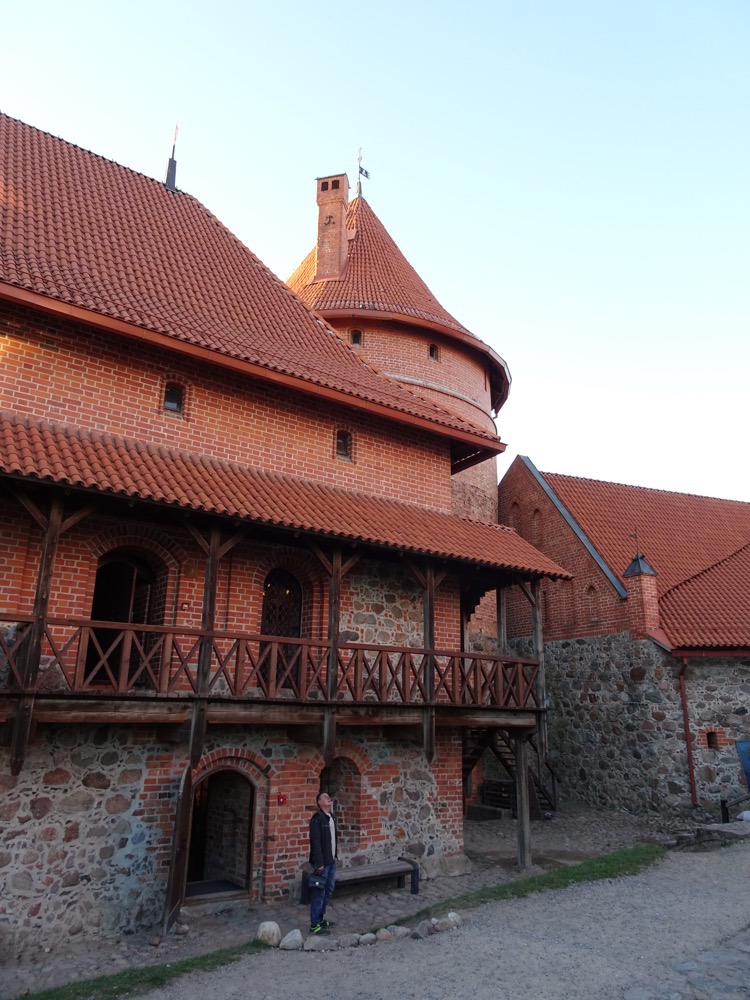 The castle is mainly built out of red Gothic bricks. Stone blocks were used only in the foundations and for some of the upper parts of buildings, towers and walls. It has been decorated with glazed roof tiles, burned bricks, and (some very dodgy) stained glass windows. Its overall style after the second construction phase could be described as Gothic with some Romanesque features.
The castle is mainly built out of red Gothic bricks. Stone blocks were used only in the foundations and for some of the upper parts of buildings, towers and walls. It has been decorated with glazed roof tiles, burned bricks, and (some very dodgy) stained glass windows. Its overall style after the second construction phase could be described as Gothic with some Romanesque features.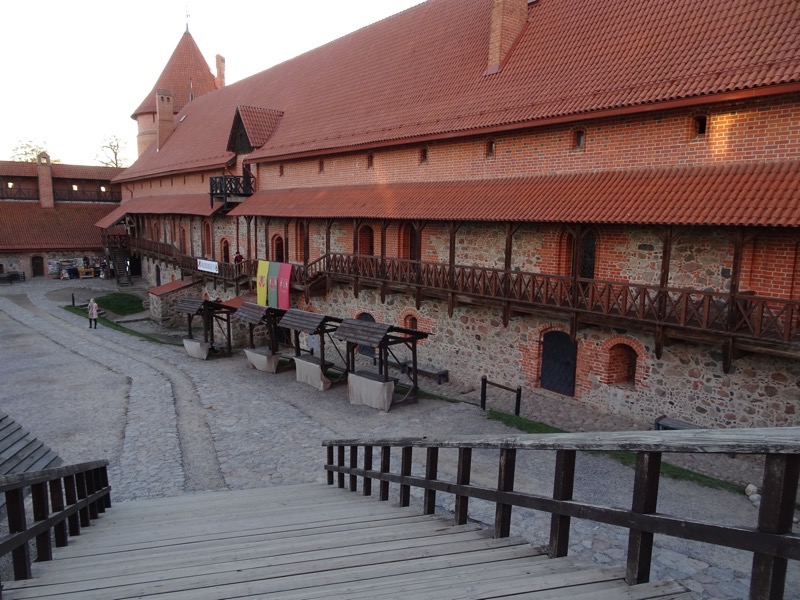 After the Battle of Grunwald, the castle was no longer of any military importance, so it was turned into a residence for the Grand Dukes of Lithuania. The caste was redecorated, frescos were added and foreign emissaries were welcomed in the Ducal Palace.
After the Battle of Grunwald, the castle was no longer of any military importance, so it was turned into a residence for the Grand Dukes of Lithuania. The caste was redecorated, frescos were added and foreign emissaries were welcomed in the Ducal Palace.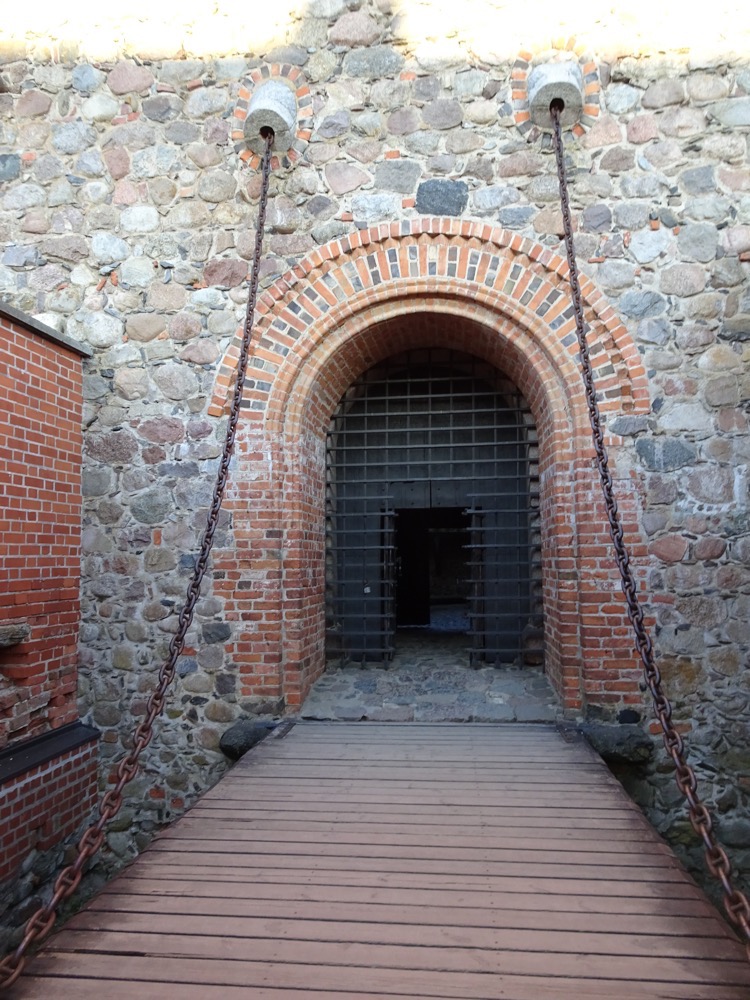 Grand Duke Vytautas the Great died in the castle in 1430 leaving it in the hands of Sigismund Augustus who used it as a royal summer residence until 1511, and it was redecorated in a Renaissance style. Later the castle served as a prison and during the wars with Muscovy in the 17th century, the castle was damaged, but this time was not reconstructed and it gradually fell into disrepair.
Grand Duke Vytautas the Great died in the castle in 1430 leaving it in the hands of Sigismund Augustus who used it as a royal summer residence until 1511, and it was redecorated in a Renaissance style. Later the castle served as a prison and during the wars with Muscovy in the 17th century, the castle was damaged, but this time was not reconstructed and it gradually fell into disrepair.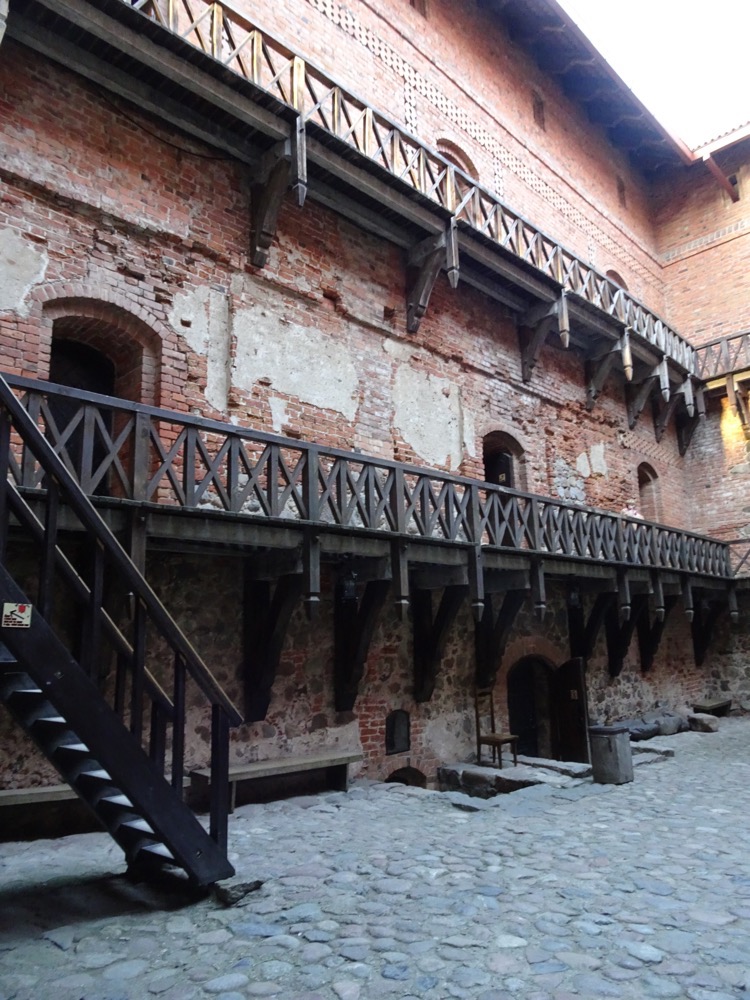 in 1888, the Imperial Archaeological Commission planned were made to rebuild the castle and in 1905, the Imperial Russian authorities decided to partially restore the castle ruins. During World War I, Germans brought in their restoration specialists, who made several attempts to rebuilt the castle and then between 1935-1941, parts of the Ducal Palace walls were rebuilt. Up until WWII, Lithuanian and Polish conservationists worked on castle project, but all work stopped when the war was raging all over Europe. After WWII, a major reconstruction project was begun in 1946 with actual restoration work started in 1951–1952. The major portion of the reconstruction was eventually finished in the 1960s with the goal of reconstructing the castle in a 15th century style to be a major tourist attraction, which has resulted in a cross between Hampton Court Palace and Bli Bli Castle. :/
in 1888, the Imperial Archaeological Commission planned were made to rebuild the castle and in 1905, the Imperial Russian authorities decided to partially restore the castle ruins. During World War I, Germans brought in their restoration specialists, who made several attempts to rebuilt the castle and then between 1935-1941, parts of the Ducal Palace walls were rebuilt. Up until WWII, Lithuanian and Polish conservationists worked on castle project, but all work stopped when the war was raging all over Europe. After WWII, a major reconstruction project was begun in 1946 with actual restoration work started in 1951–1952. The major portion of the reconstruction was eventually finished in the 1960s with the goal of reconstructing the castle in a 15th century style to be a major tourist attraction, which has resulted in a cross between Hampton Court Palace and Bli Bli Castle. :/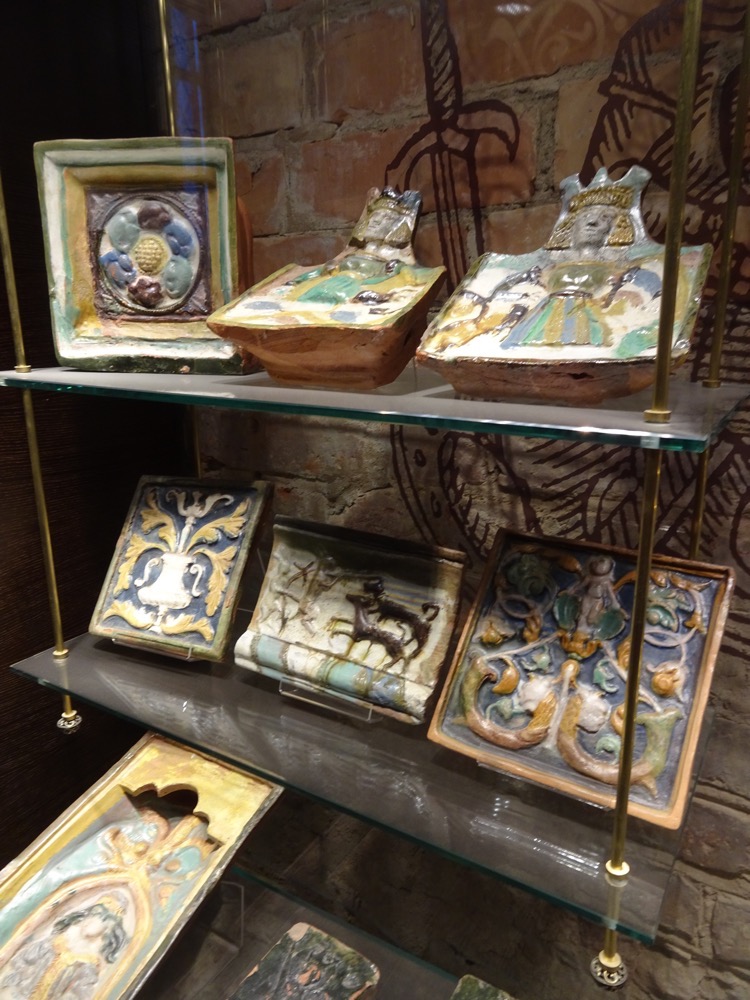
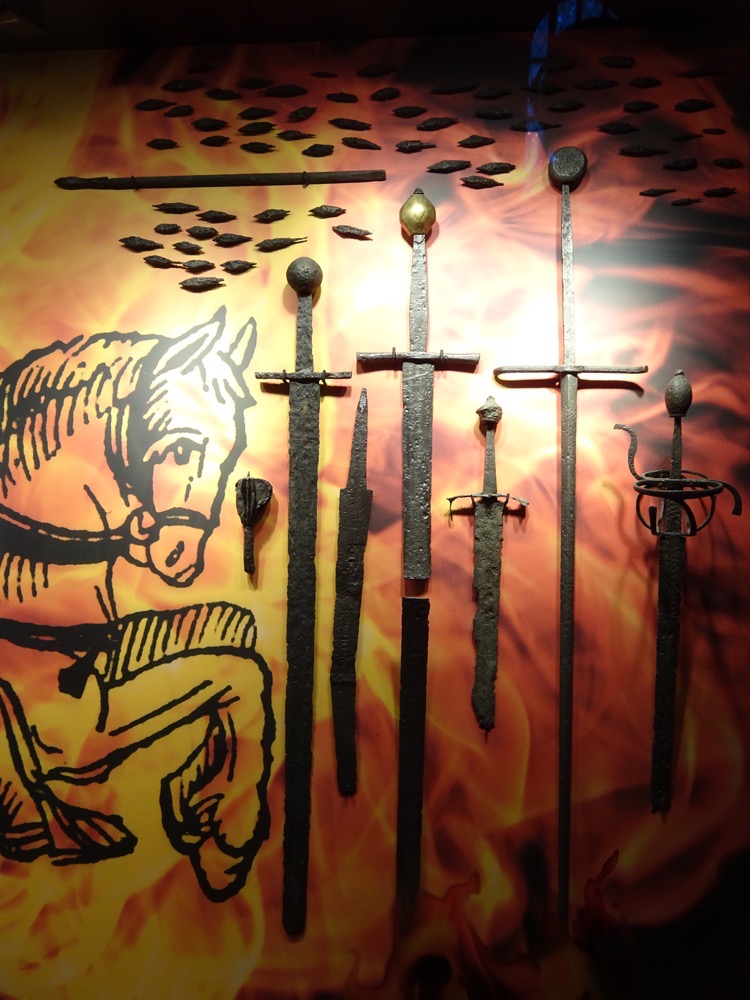
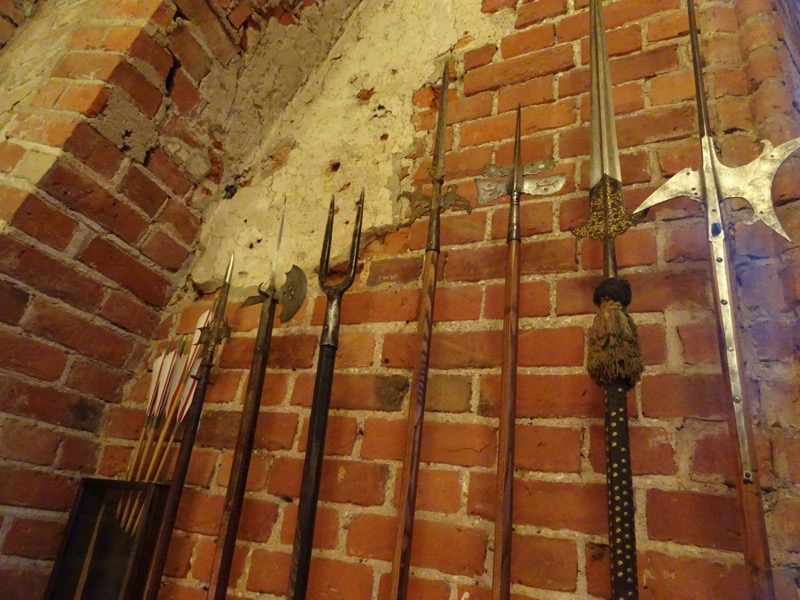
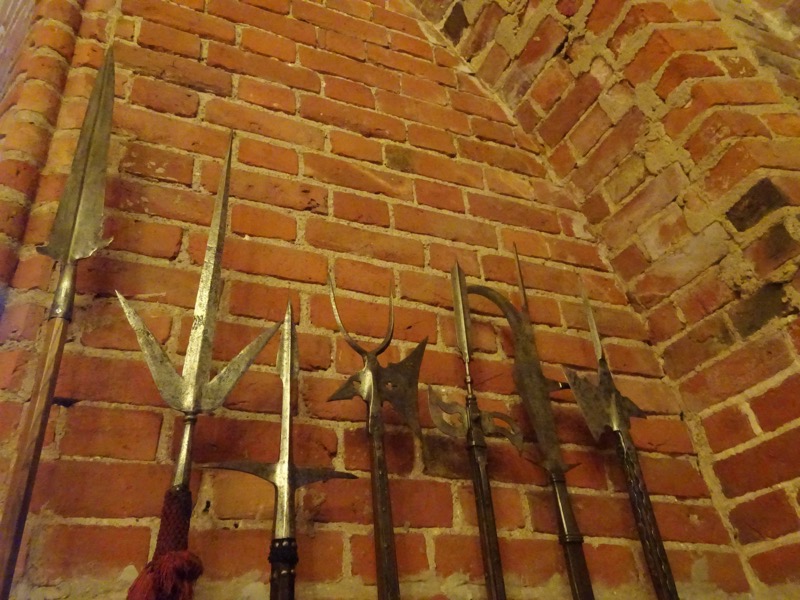
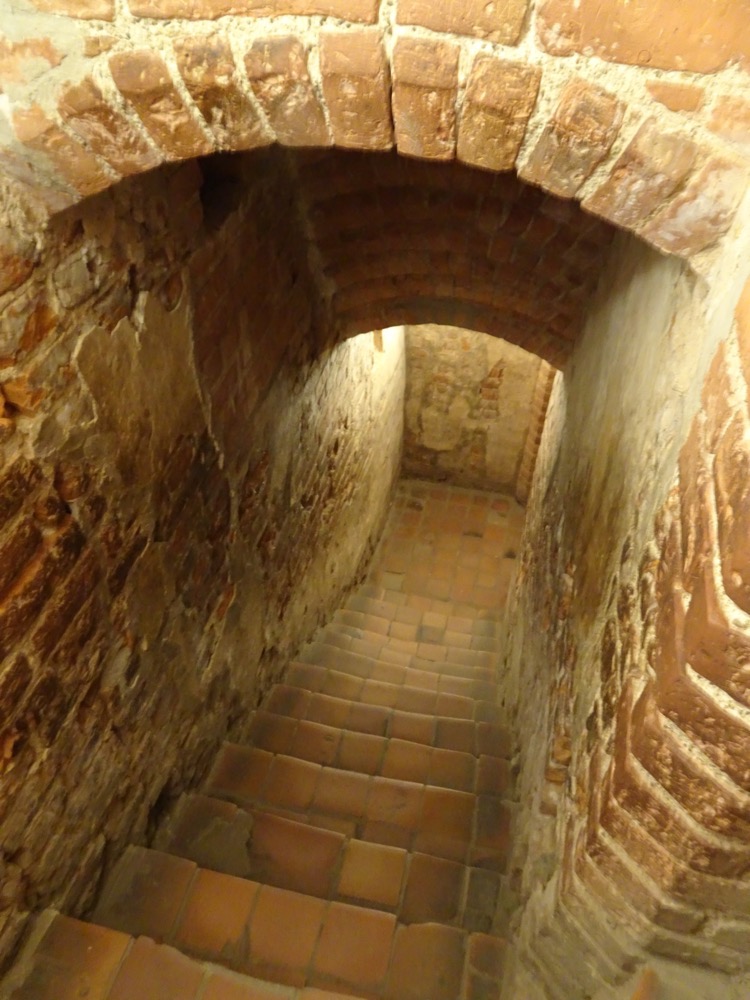
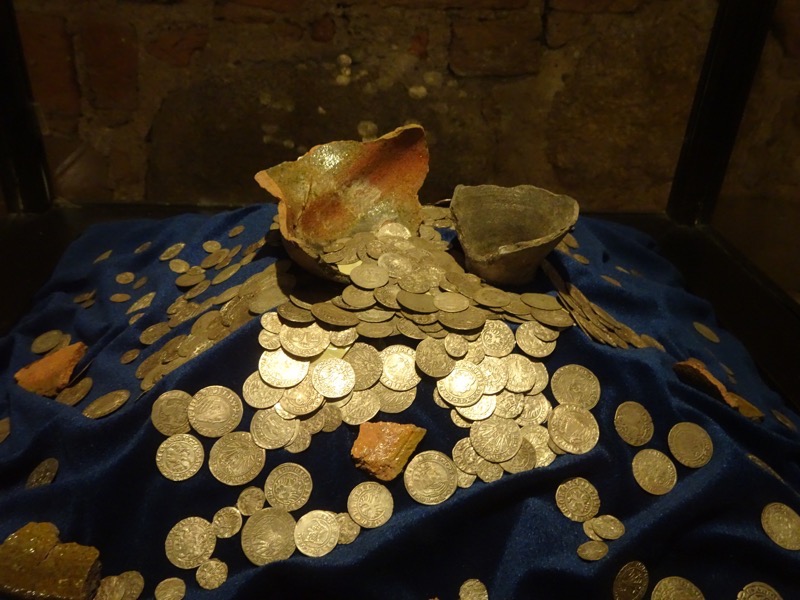
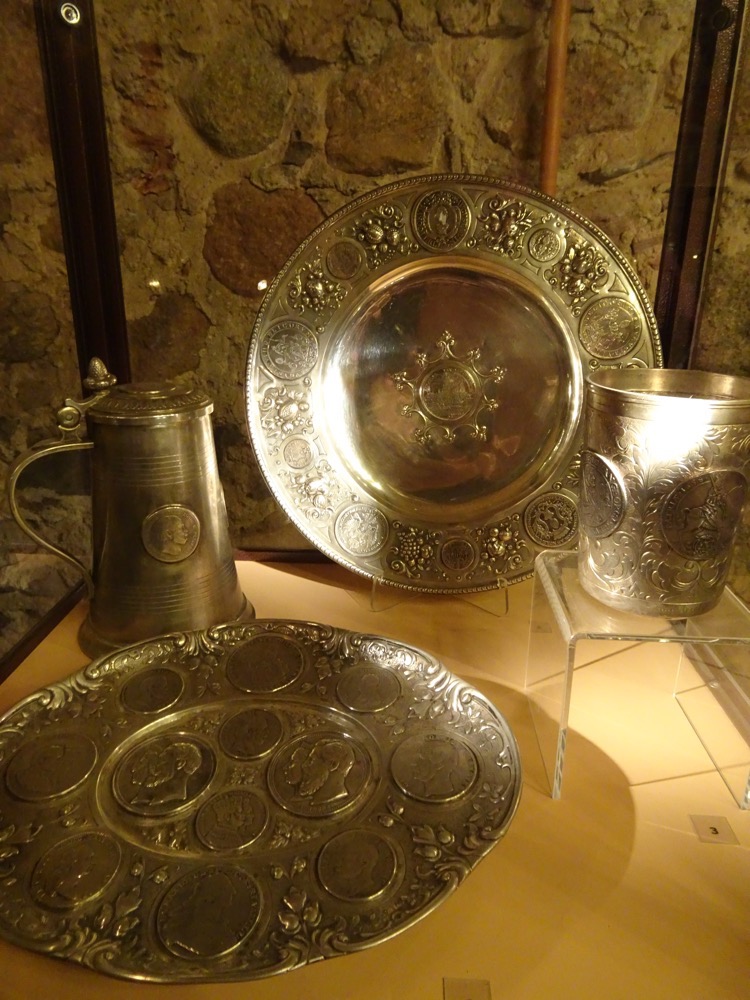
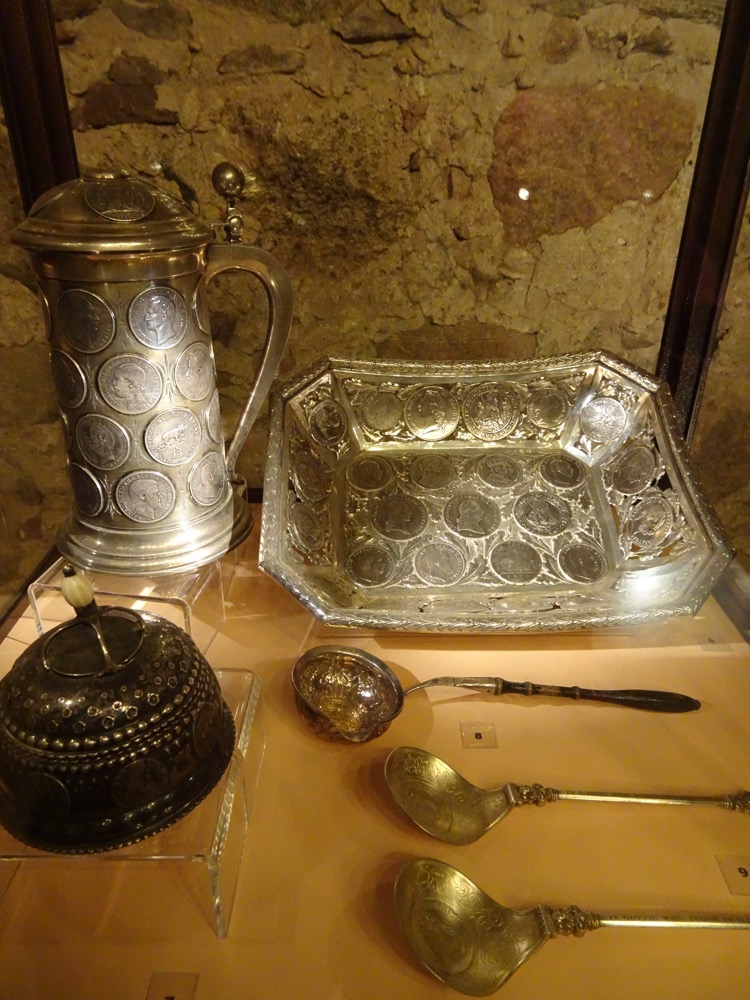
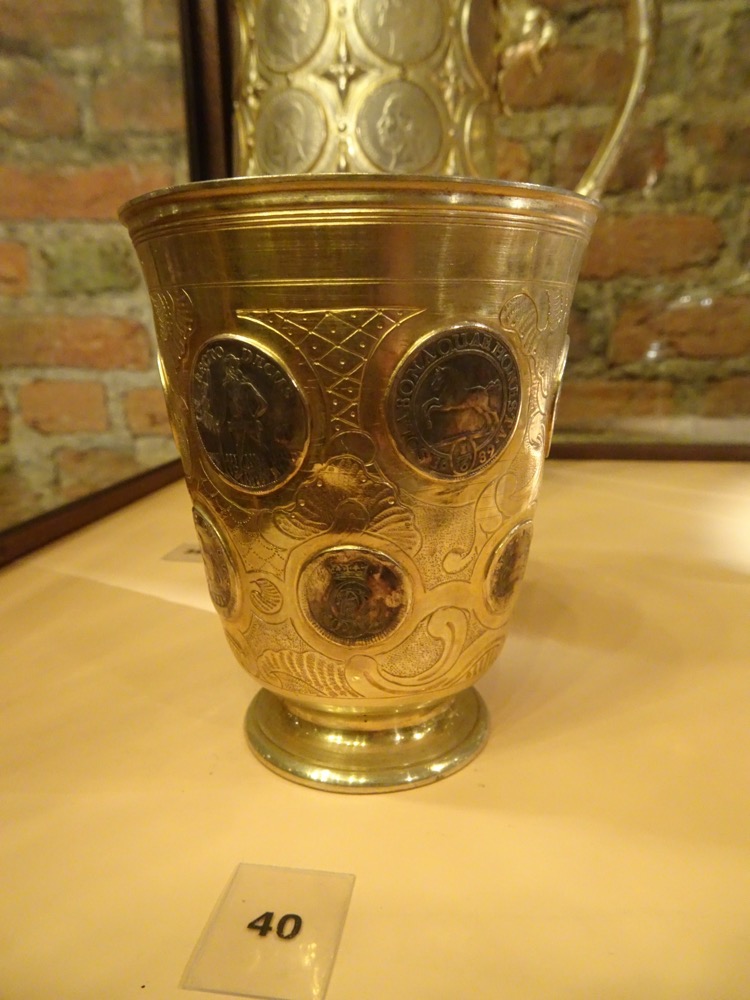 … Some not so genuine, like these lovely c.1970s post-modern stained glass windows (thankfully the lime green diagonal design is not so apparent in these photographs).
… Some not so genuine, like these lovely c.1970s post-modern stained glass windows (thankfully the lime green diagonal design is not so apparent in these photographs).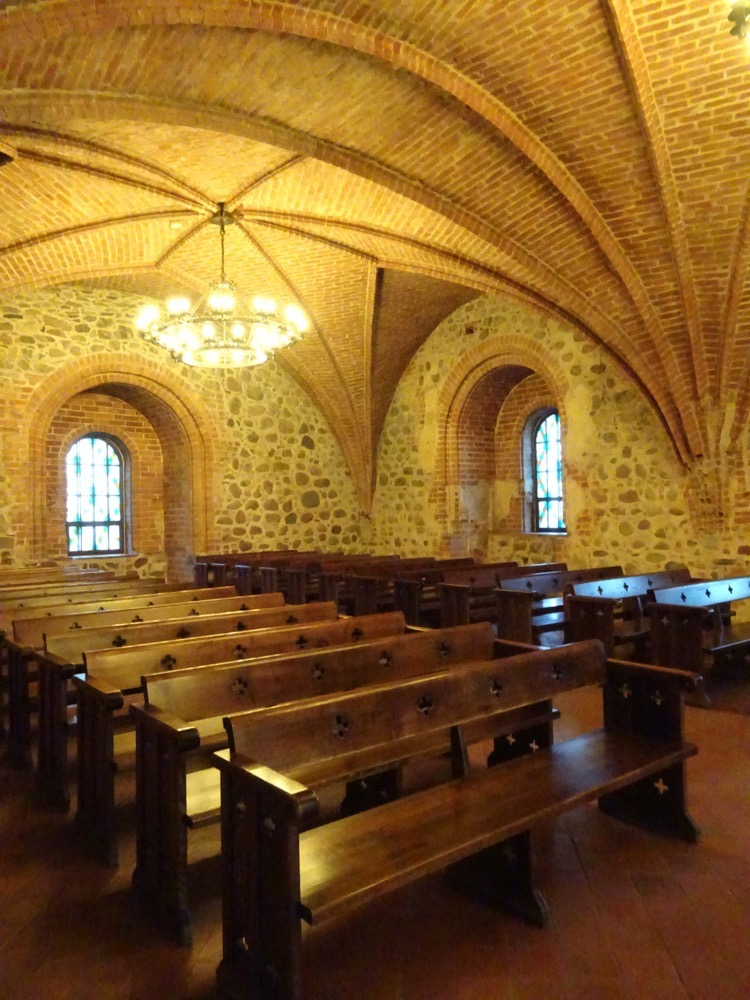
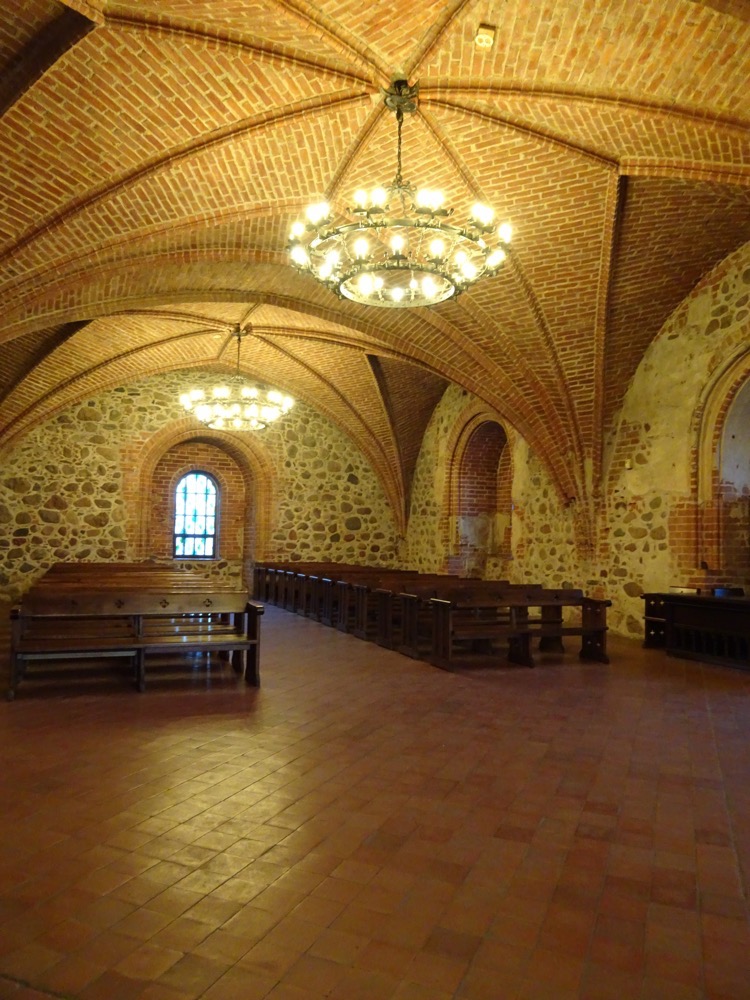
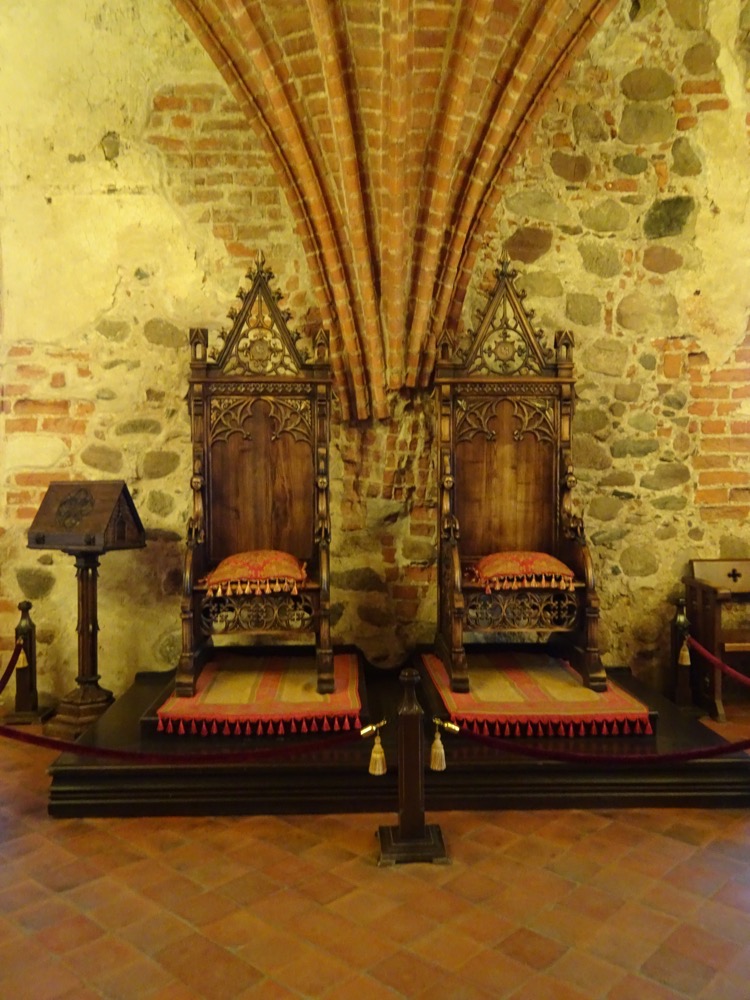
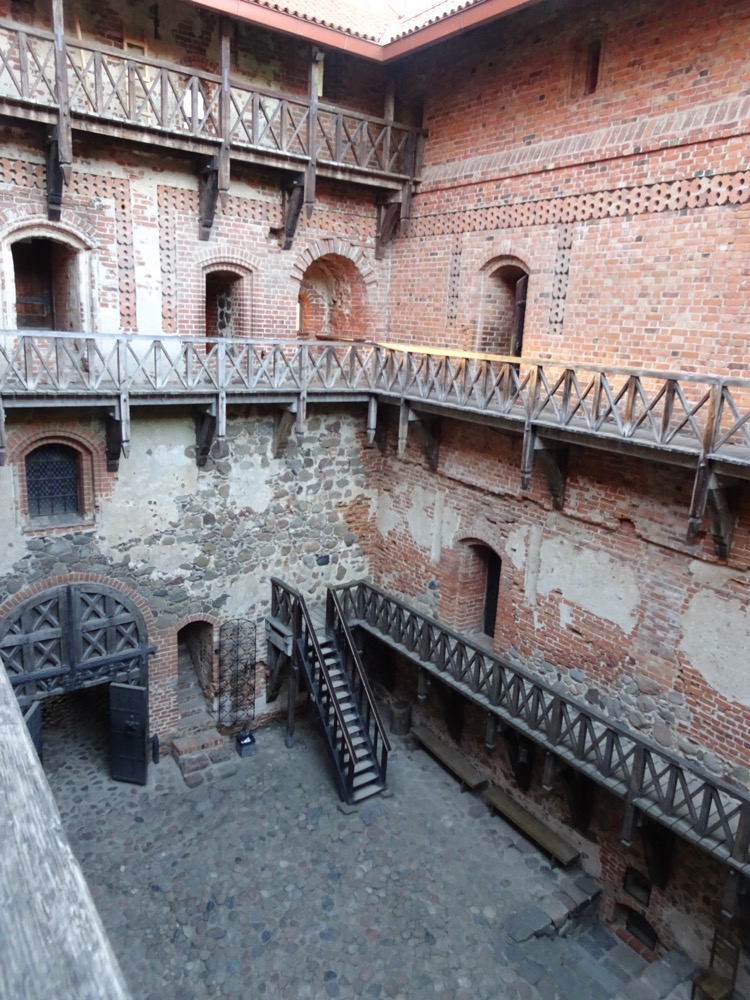 Recreated stained glass windows that date all the way back to 2006.
Recreated stained glass windows that date all the way back to 2006.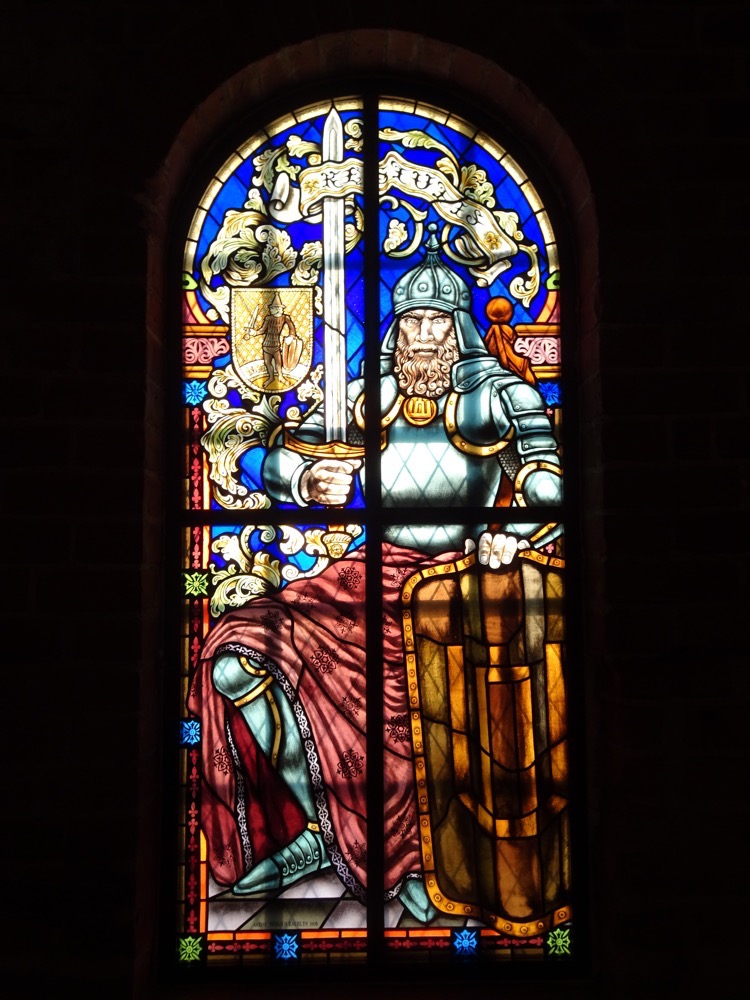
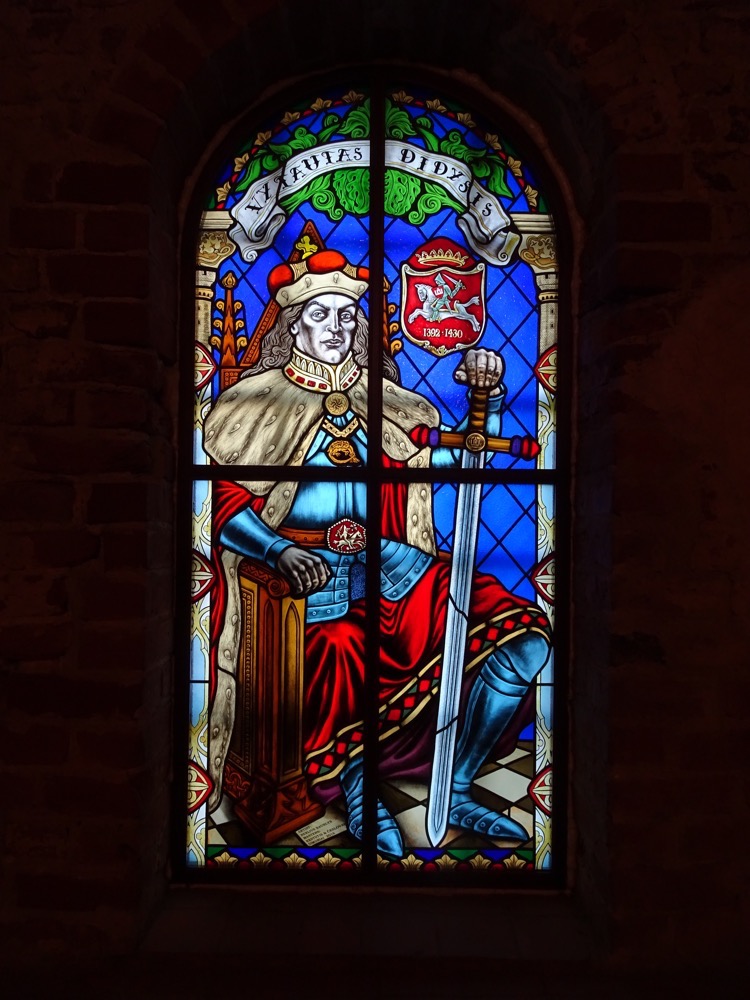 Photos of the Castle before the major renovations started in 1940s.
Photos of the Castle before the major renovations started in 1940s.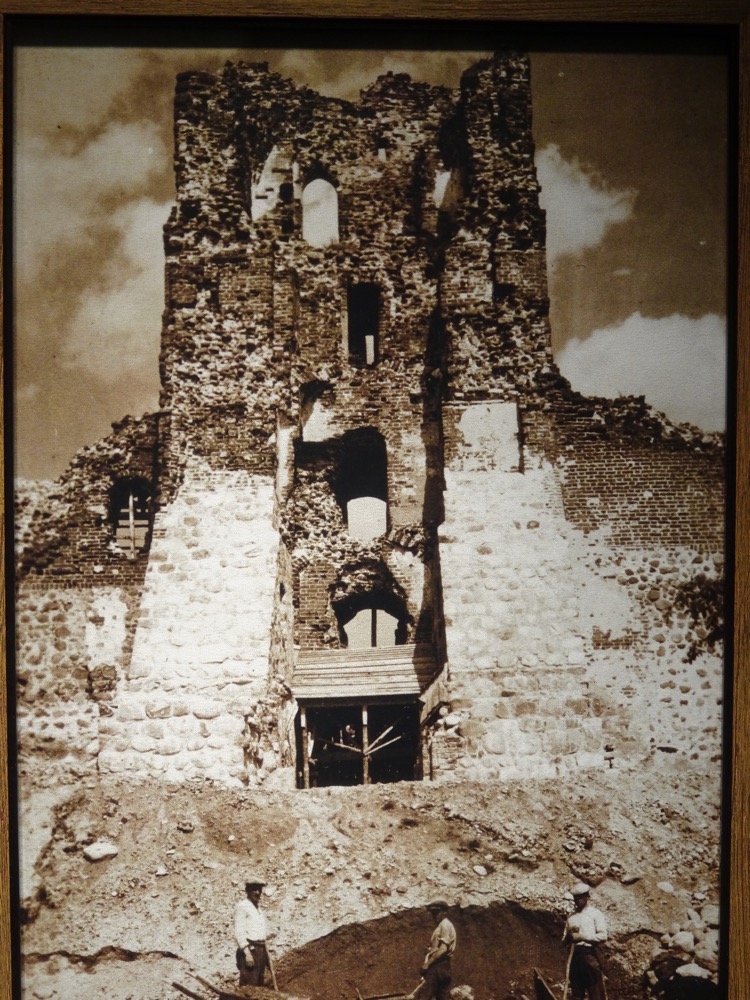
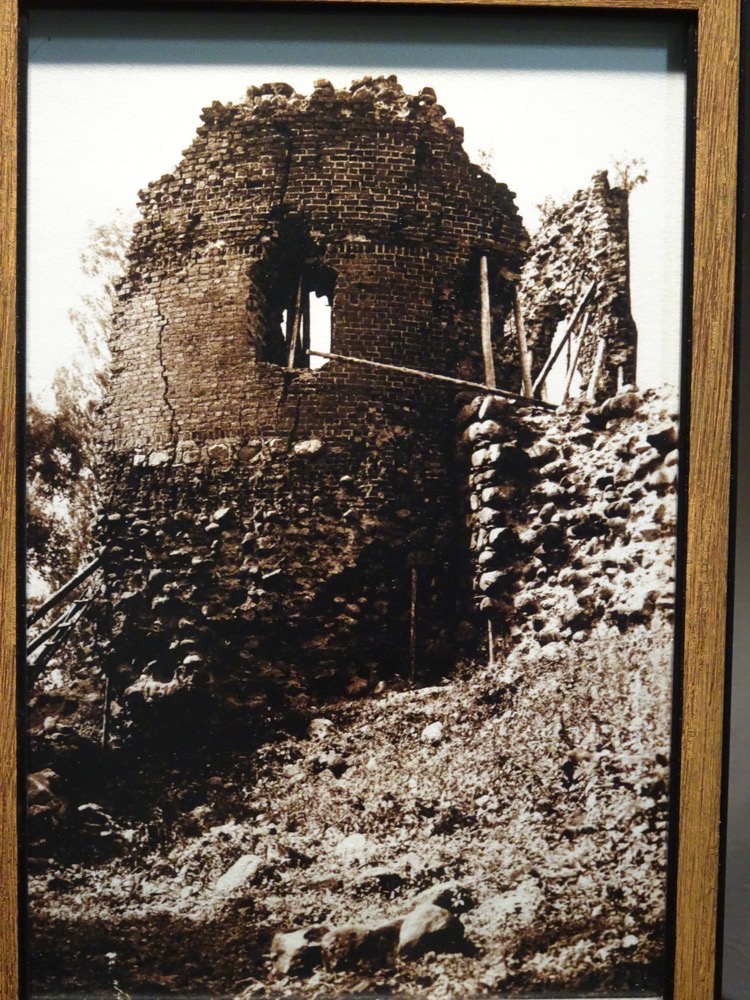 Other areas of the castle contain collections that have been donated to the Trakai Island Castle for display. Collections of official seals, pipes, Russian enamelware, taxidermied animals, and all sorts of other crap* are stored here (*weirdly gifts that appear to have been given to Lithuanian government officials over the last decade are all on display… weird plates from China in 2012, and just weird shit that has nothing to do with a 15th century castle).
Other areas of the castle contain collections that have been donated to the Trakai Island Castle for display. Collections of official seals, pipes, Russian enamelware, taxidermied animals, and all sorts of other crap* are stored here (*weirdly gifts that appear to have been given to Lithuanian government officials over the last decade are all on display… weird plates from China in 2012, and just weird shit that has nothing to do with a 15th century castle).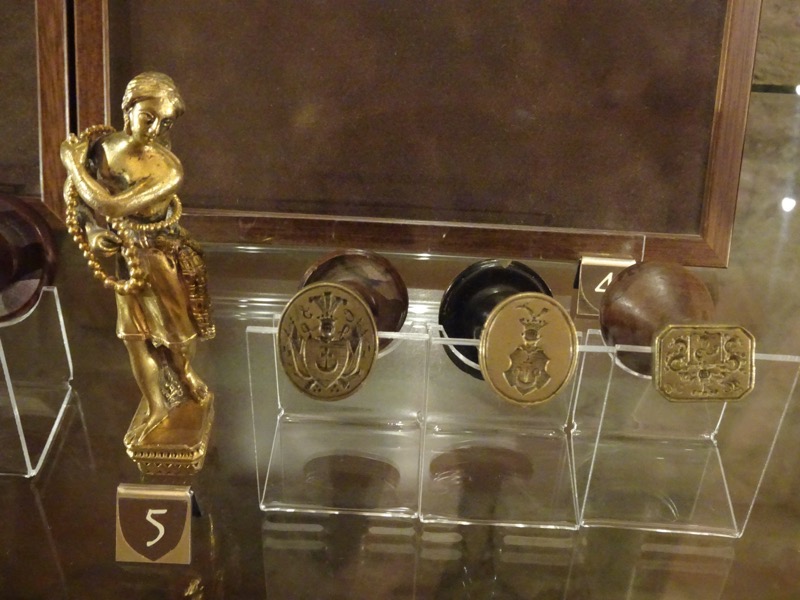
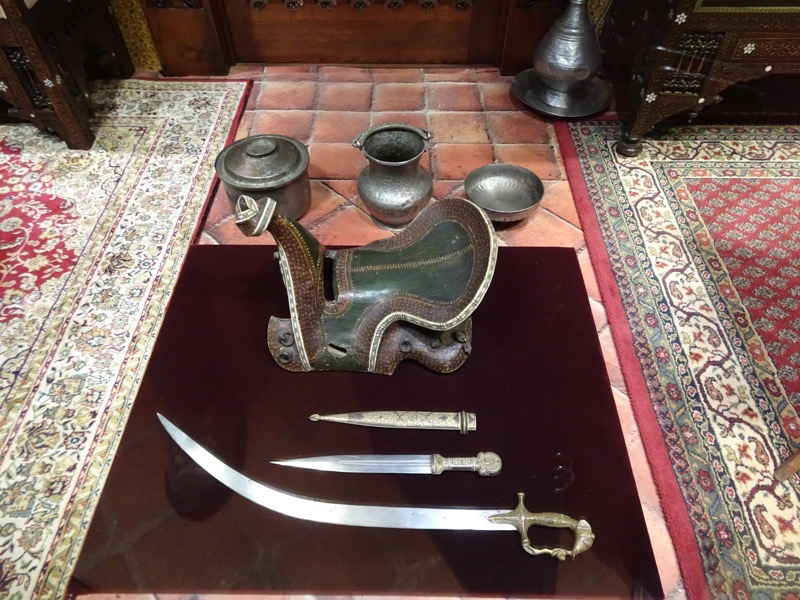
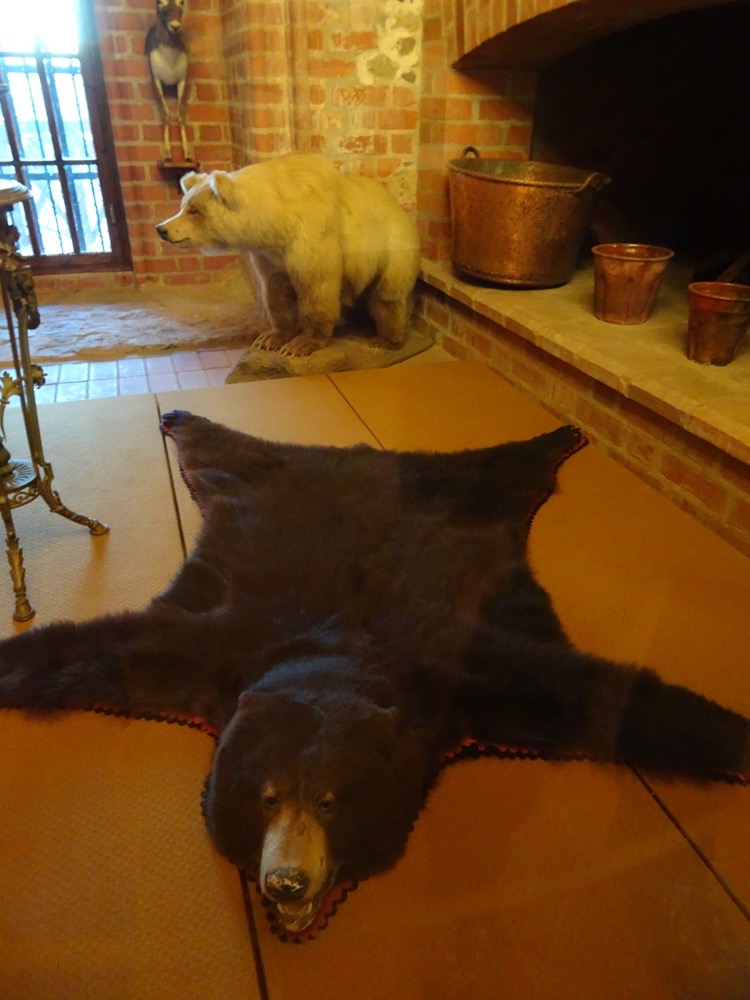
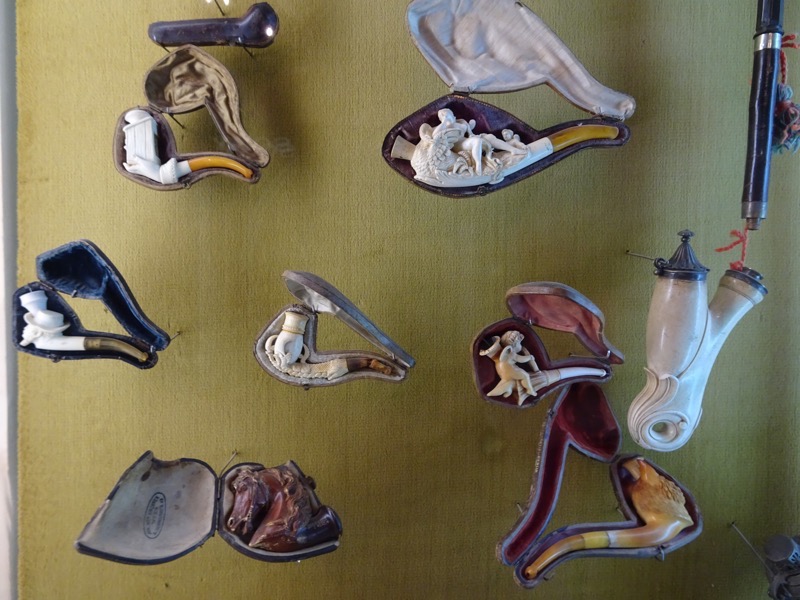
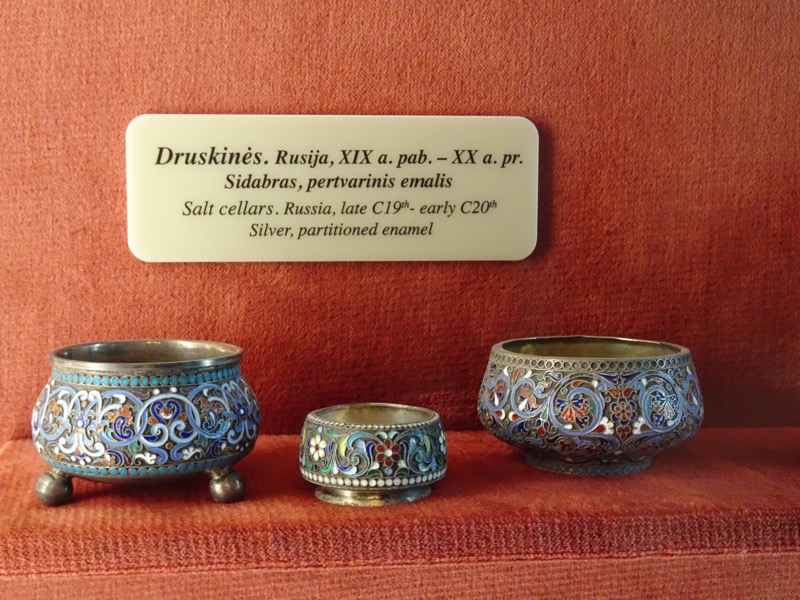 Still, it was quite a nice visit and it is so beautifully situation, it is well worth a look. I wouldn’t’ recommend checking it out in the middle of summer though, unless you were going to run in first thing in the morning or last thing in the afternoon and maybe get the place half empty – you can tell by the traffic flow that is set up, that it is probably a madhouse during peak season.
Still, it was quite a nice visit and it is so beautifully situation, it is well worth a look. I wouldn’t’ recommend checking it out in the middle of summer though, unless you were going to run in first thing in the morning or last thing in the afternoon and maybe get the place half empty – you can tell by the traffic flow that is set up, that it is probably a madhouse during peak season.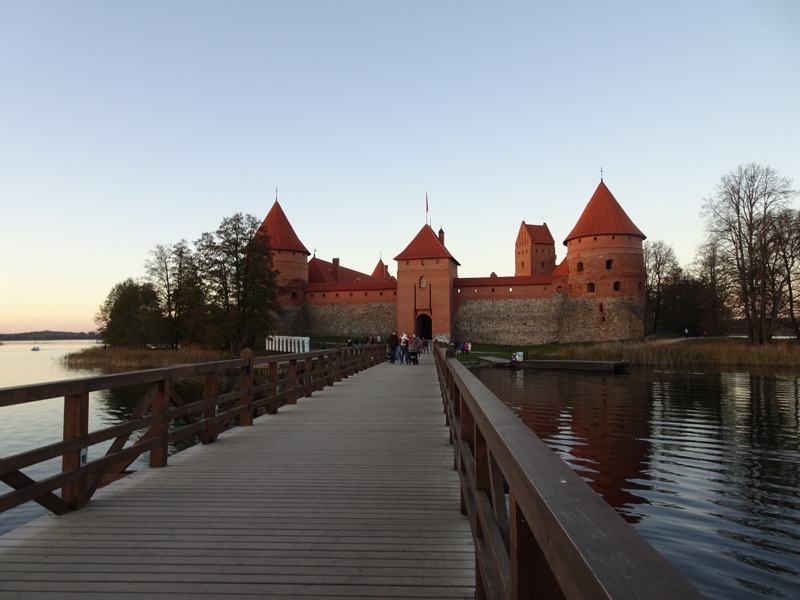 After this, it was back to Vilnius for the evening and another night at the crazy Bernadinau B&B. Vilnius has been lovely… didn’t find the G-Spot though.
After this, it was back to Vilnius for the evening and another night at the crazy Bernadinau B&B. Vilnius has been lovely… didn’t find the G-Spot though.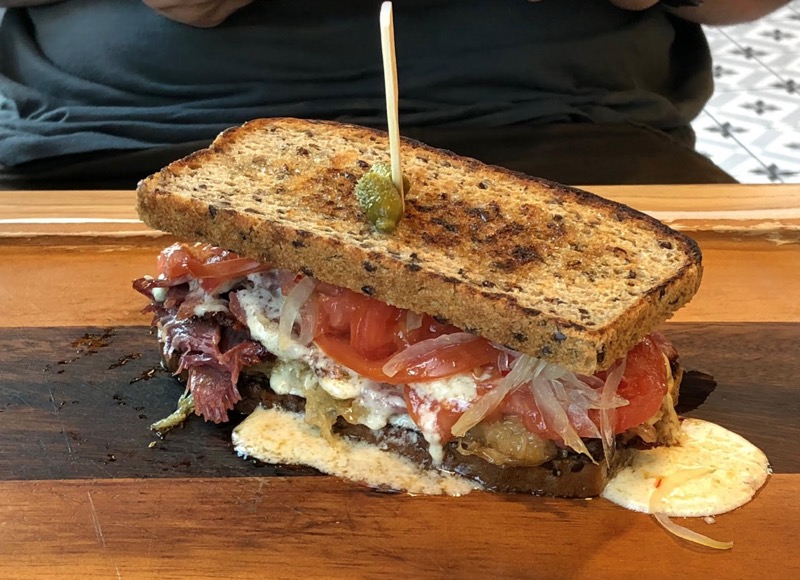 The Warsaw opera house that was built in1825 to 1833, is known as the Grand Theatre in Warsaw or Teatr Wielki w Warszawieis. It is actually a large theatre complex consisting of spaces for the national opera company and the Polish National Ballet. It is one of the largest theatres in Europe can seat over 2000 people.
The Warsaw opera house that was built in1825 to 1833, is known as the Grand Theatre in Warsaw or Teatr Wielki w Warszawieis. It is actually a large theatre complex consisting of spaces for the national opera company and the Polish National Ballet. It is one of the largest theatres in Europe can seat over 2000 people.  Warsaw’s Castle Square, Zamkowy w Warszawie, is located in front of the Royal Castle and a seriously picturesque and popular spot. It’s surrounded by historic townhouses and cute little cafes.
Warsaw’s Castle Square, Zamkowy w Warszawie, is located in front of the Royal Castle and a seriously picturesque and popular spot. It’s surrounded by historic townhouses and cute little cafes.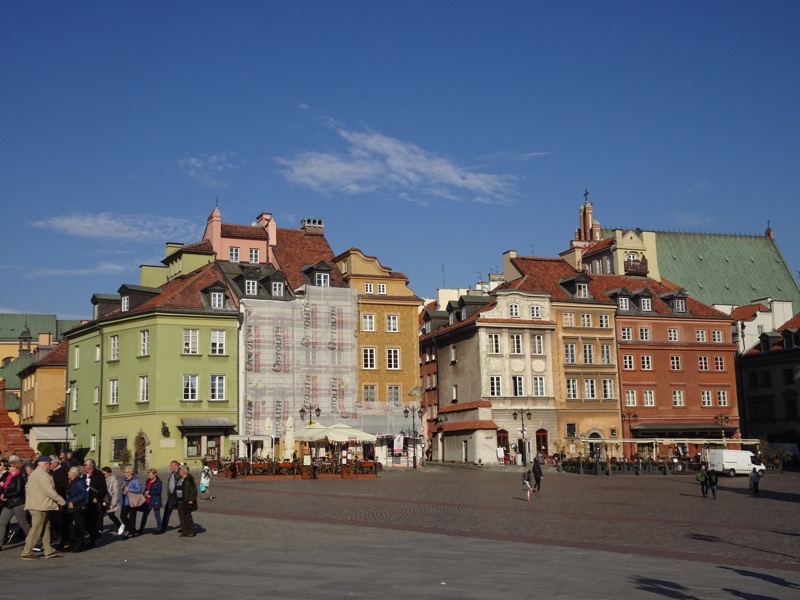
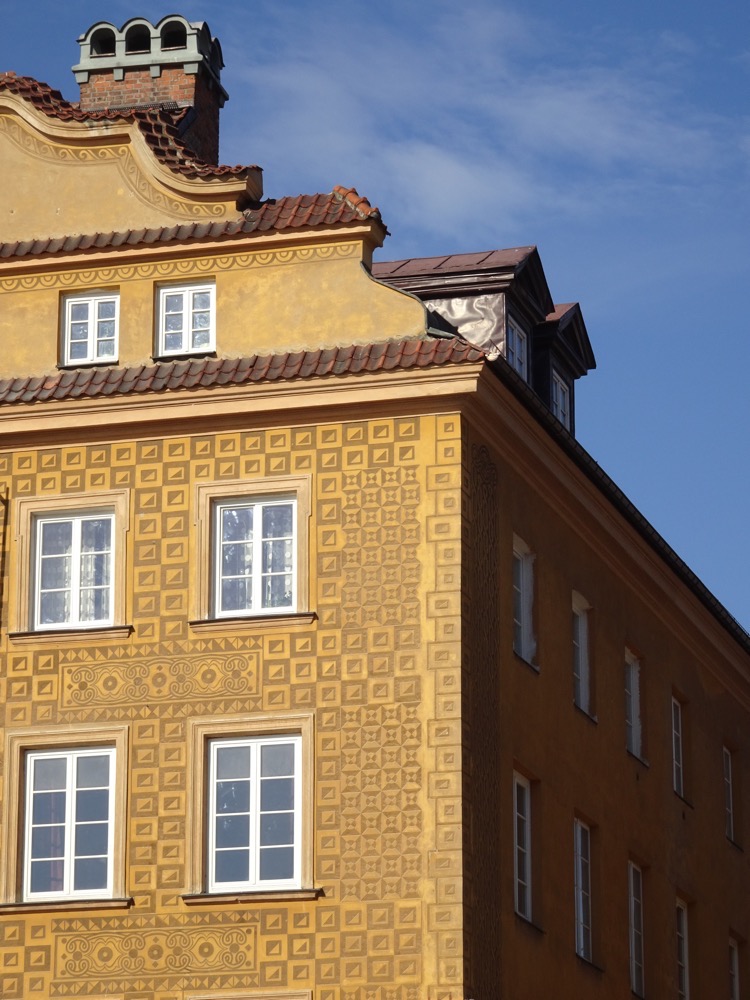
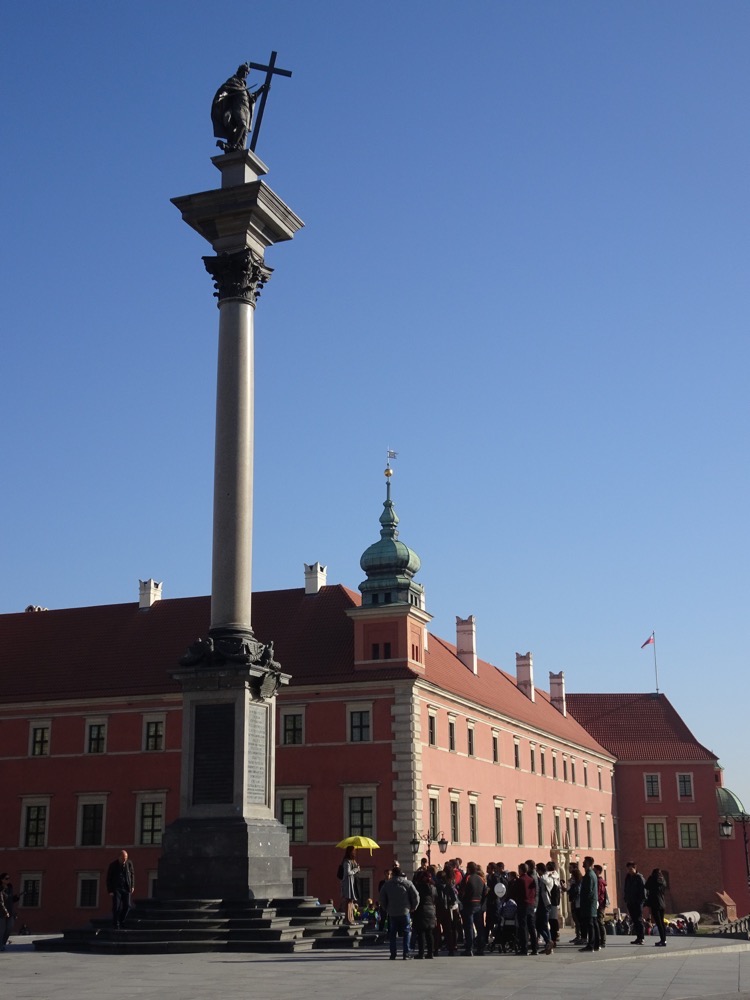 The Royal Castle in Warsaw, or Zamek Królewski w Warszawie, is a castle residency that formerly served for several centuries as the official residence of the Polish monarchs, including Tsar Nicolas of Russia when Poland became part of Russia after the Napoleonic wars.
The Royal Castle in Warsaw, or Zamek Królewski w Warszawie, is a castle residency that formerly served for several centuries as the official residence of the Polish monarchs, including Tsar Nicolas of Russia when Poland became part of Russia after the Napoleonic wars.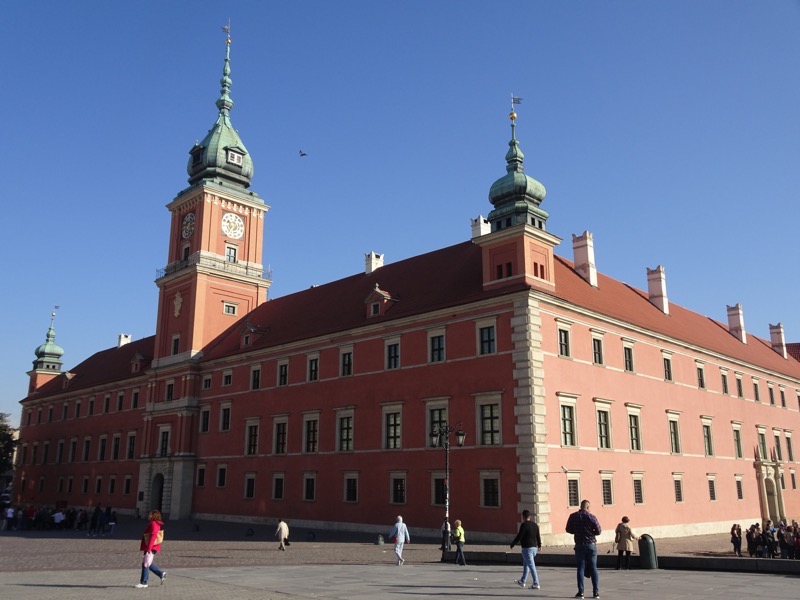 The complex has been the primary residence of the Dukes of Masovia since the 16th century and has been the seat of the Polish-Lithuanian Commonwealth, being for the King and for the Parliament, with fancy Chambers for the Deputies and Senate. In its long history, the Warsaw Royal Castle was repeatedly looted and devastated by the invading Swedish, Brandenburgian, Prussian and Tsarist armies. Seems everyone wanted a piece of this Castle at some point.
The complex has been the primary residence of the Dukes of Masovia since the 16th century and has been the seat of the Polish-Lithuanian Commonwealth, being for the King and for the Parliament, with fancy Chambers for the Deputies and Senate. In its long history, the Warsaw Royal Castle was repeatedly looted and devastated by the invading Swedish, Brandenburgian, Prussian and Tsarist armies. Seems everyone wanted a piece of this Castle at some point.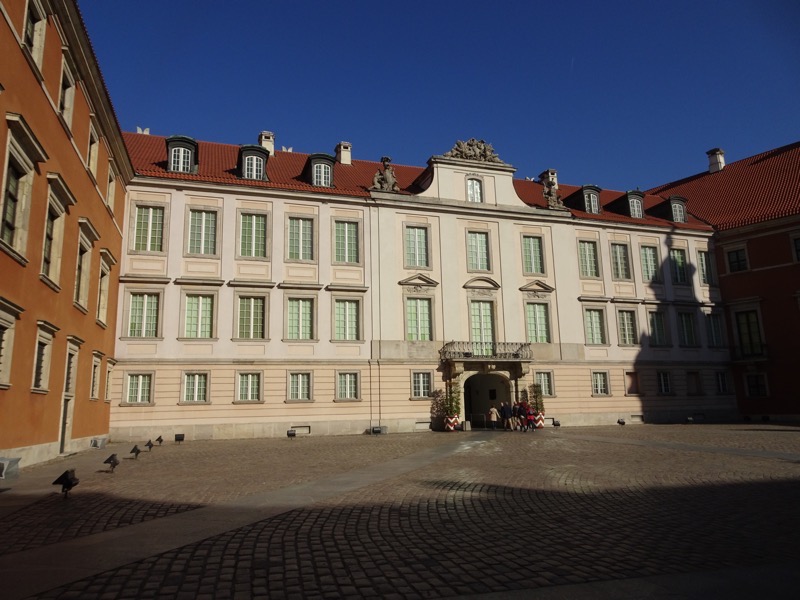
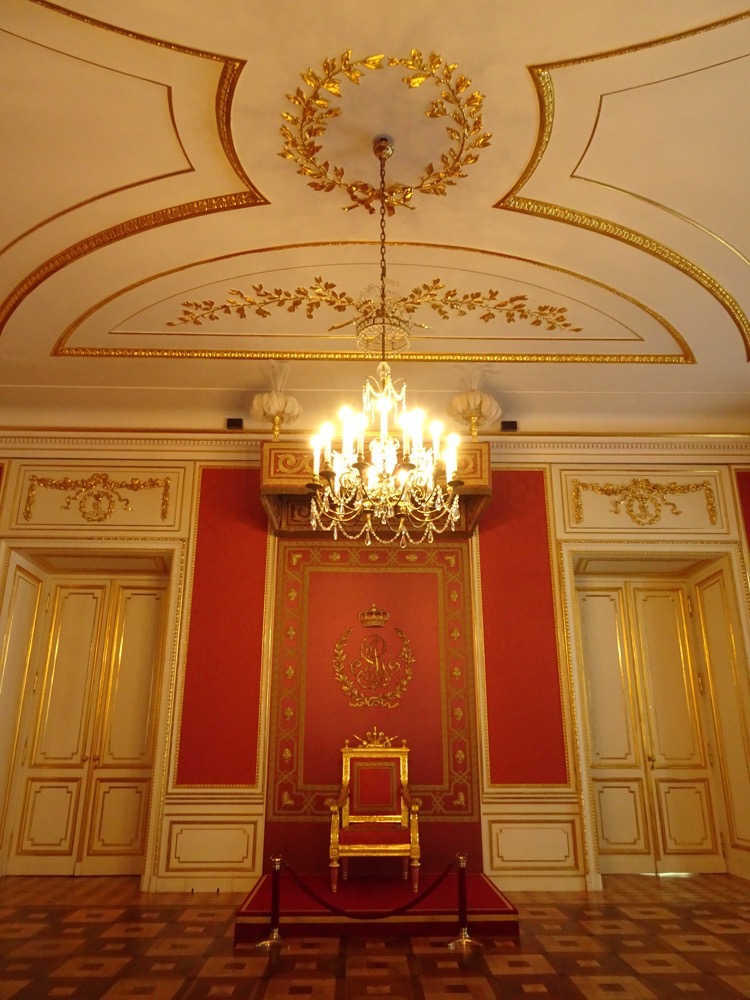
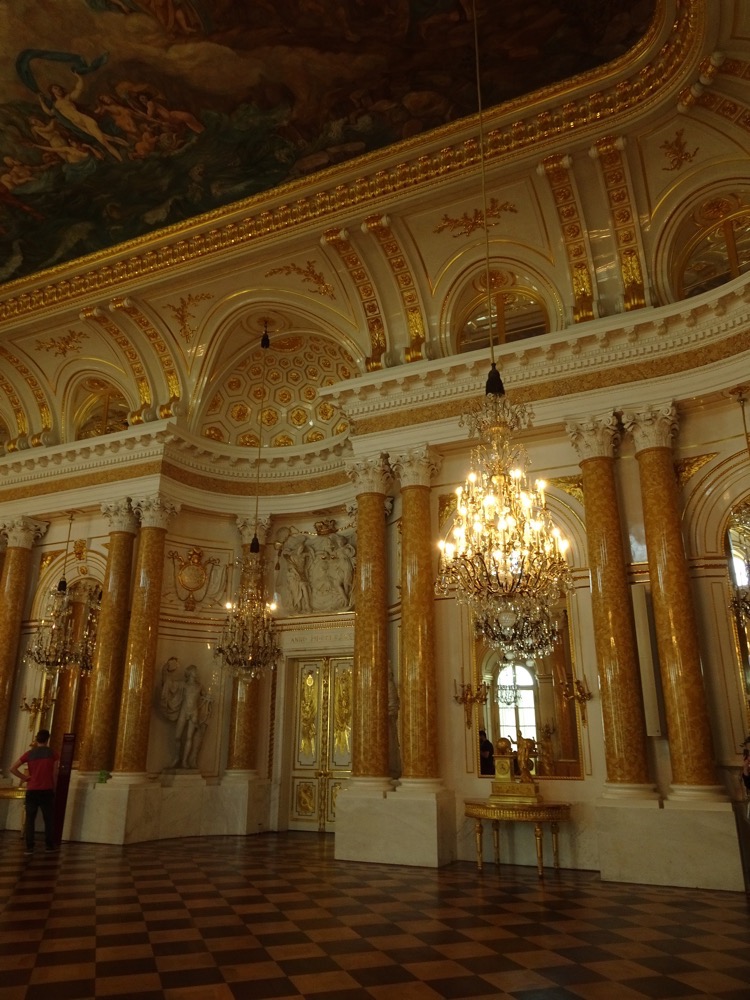
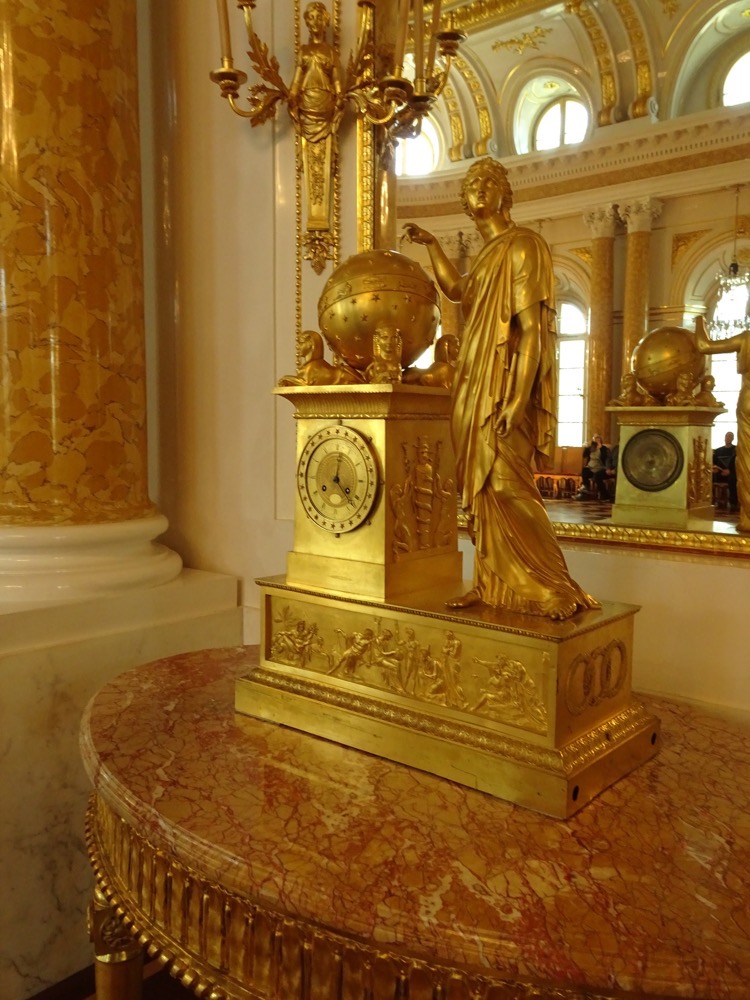
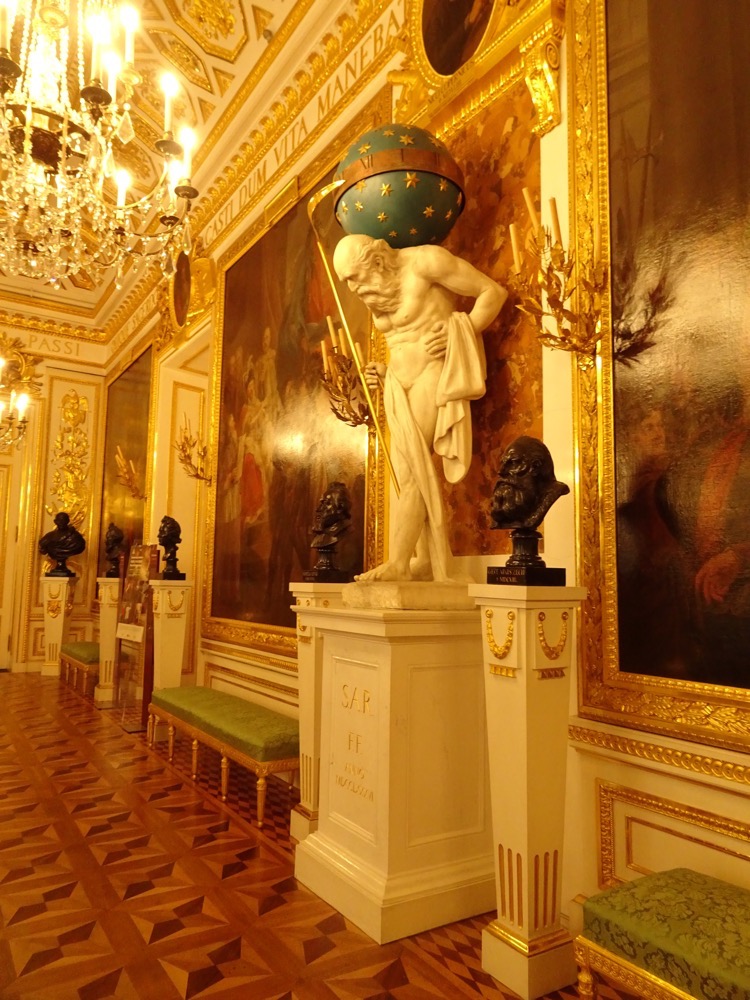 The Great Assembly hall is the biggest and grandest room in the Castle. This is where royal audiences, state banquets, ball and concerts were held.
The Great Assembly hall is the biggest and grandest room in the Castle. This is where royal audiences, state banquets, ball and concerts were held. 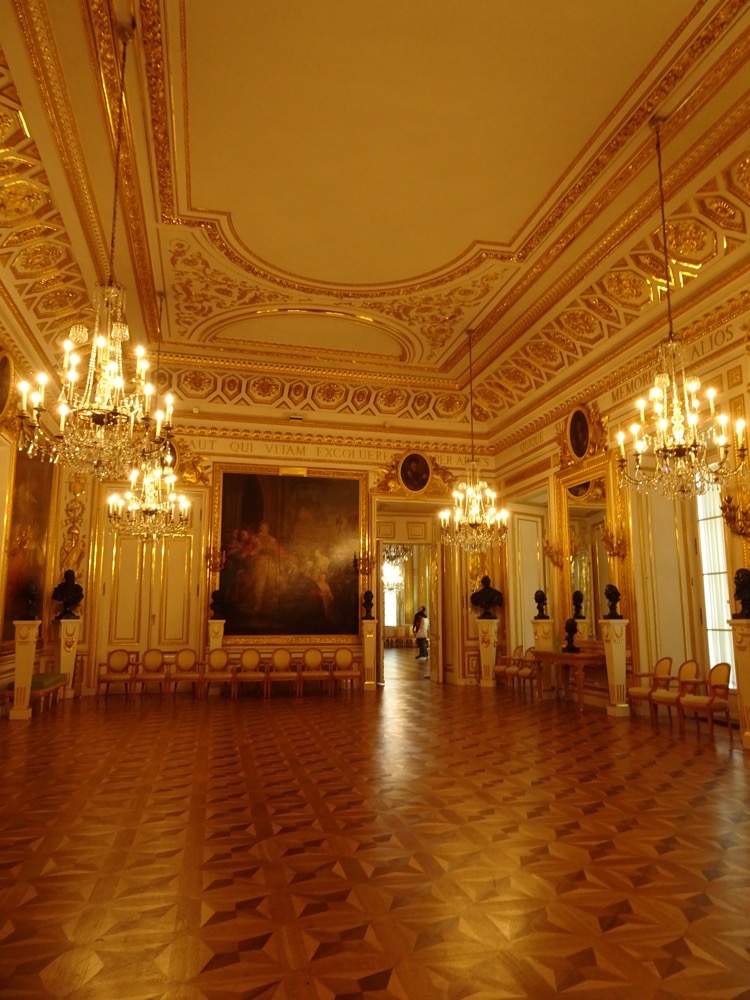 Audience chamber where the most important visitors were granted an audience with King Stanislaw August, including foreign ambassadors, papal legates etc. The Throne Room has been restored with much of its original decorations and furnishings, including doors, furniture and wooden panelling. The Polish eagles in hand embroidered silver bullion over the back of the throne’s canopy were all ripped off the original embroidery by Nazi officers in October 1939. The 86 copies here were modelled on one of these original eagles that was retrieved from the US in 1991.
Audience chamber where the most important visitors were granted an audience with King Stanislaw August, including foreign ambassadors, papal legates etc. The Throne Room has been restored with much of its original decorations and furnishings, including doors, furniture and wooden panelling. The Polish eagles in hand embroidered silver bullion over the back of the throne’s canopy were all ripped off the original embroidery by Nazi officers in October 1939. The 86 copies here were modelled on one of these original eagles that was retrieved from the US in 1991.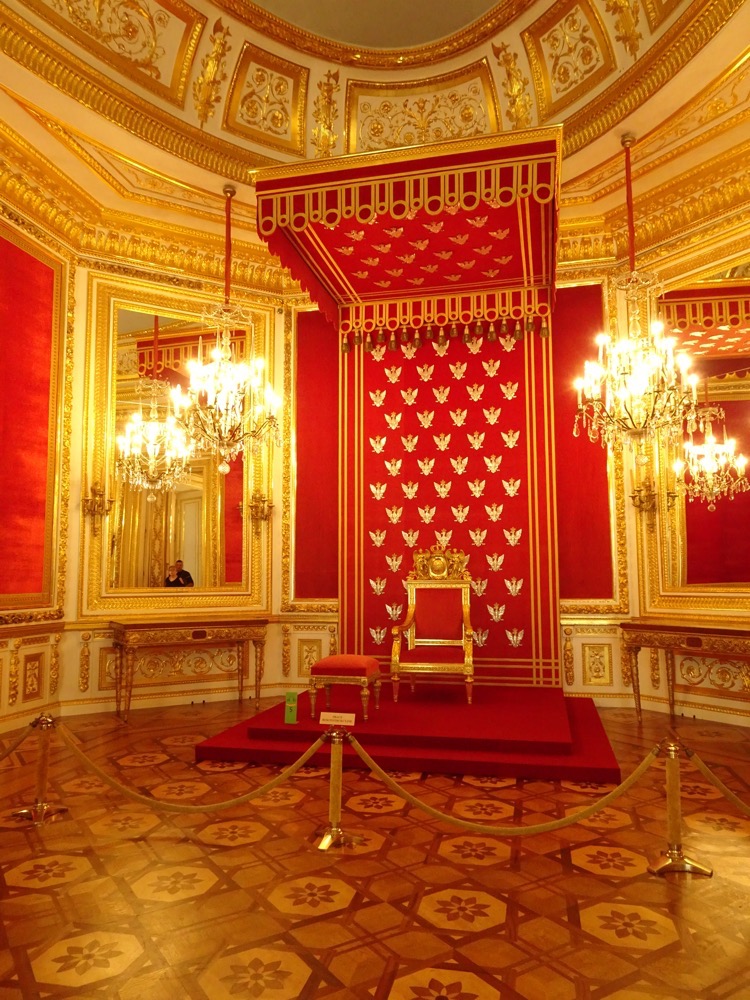 Beside the Throne Room is the Conference Room or Monarchs’ Portrait Room, which was used as a parade chamber. Dedicated to the seven monarchs of Europe at the time, it is decorated with portraits that were commissioned of their likenesses. The portraits were painted by Jan Bogumil Plersch between 1983 and 1786. The parquetry is amazing!
Beside the Throne Room is the Conference Room or Monarchs’ Portrait Room, which was used as a parade chamber. Dedicated to the seven monarchs of Europe at the time, it is decorated with portraits that were commissioned of their likenesses. The portraits were painted by Jan Bogumil Plersch between 1983 and 1786. The parquetry is amazing!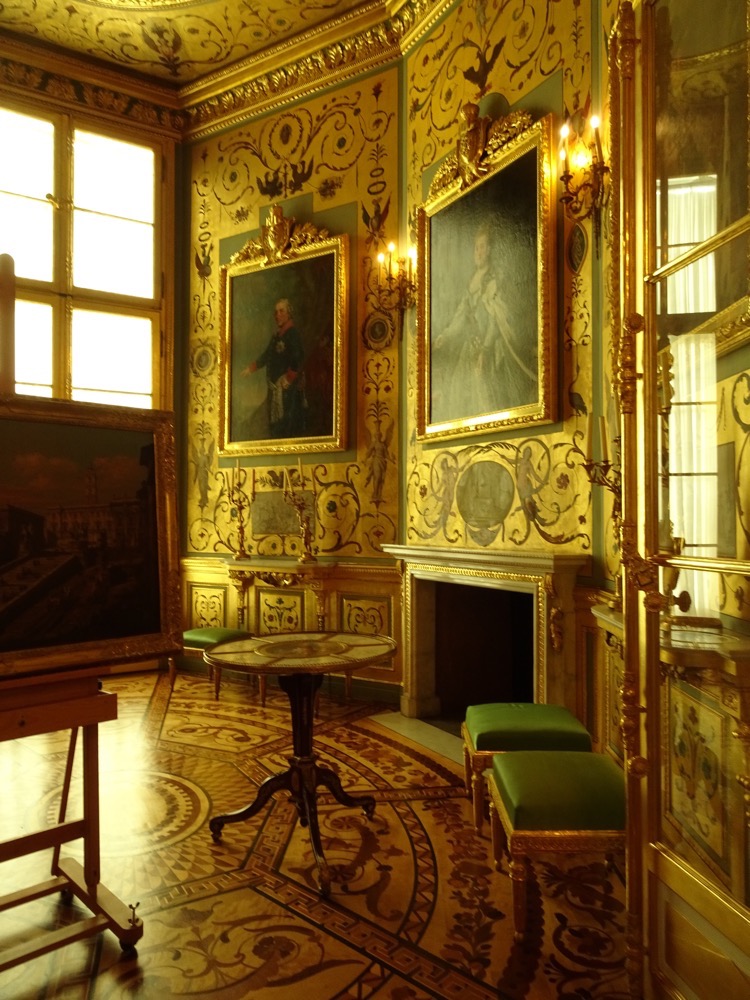 The King’s bedroom as part of the residential King’s Apartment. Some pieces of the room were preserved before the Nazi destruction allowing the room to be recreated accurately.
The King’s bedroom as part of the residential King’s Apartment. Some pieces of the room were preserved before the Nazi destruction allowing the room to be recreated accurately.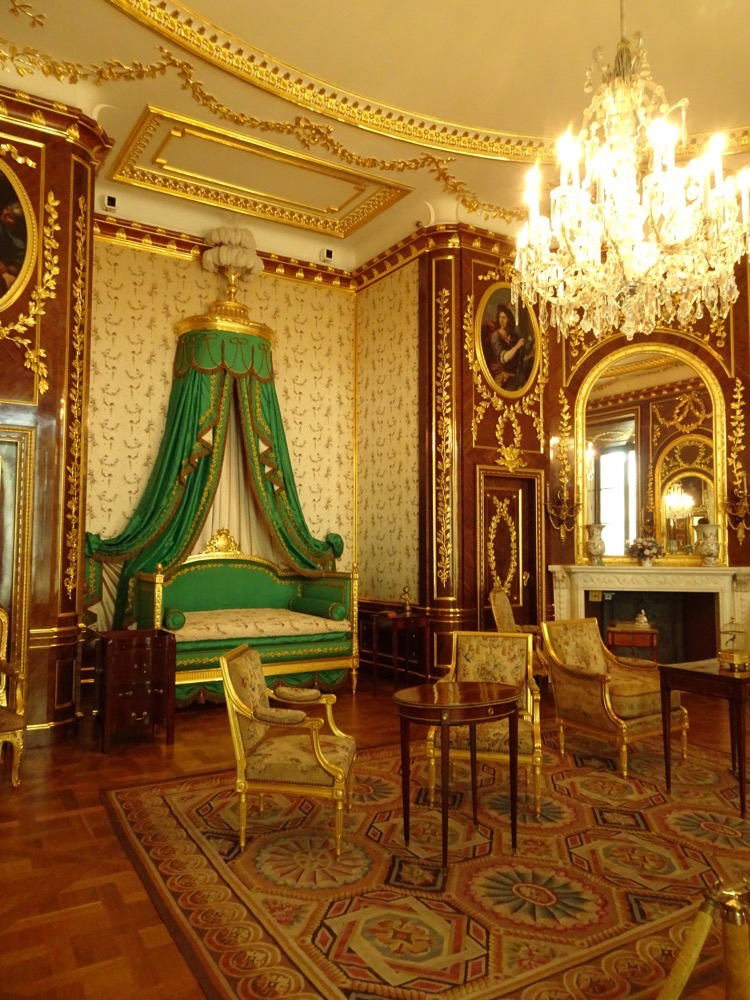 Ceremonial sword of state late 1700s.
Ceremonial sword of state late 1700s.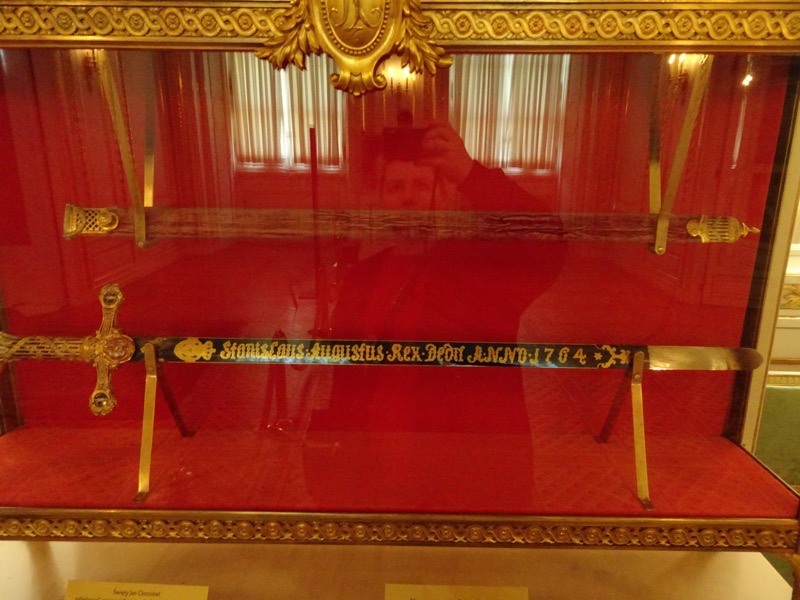
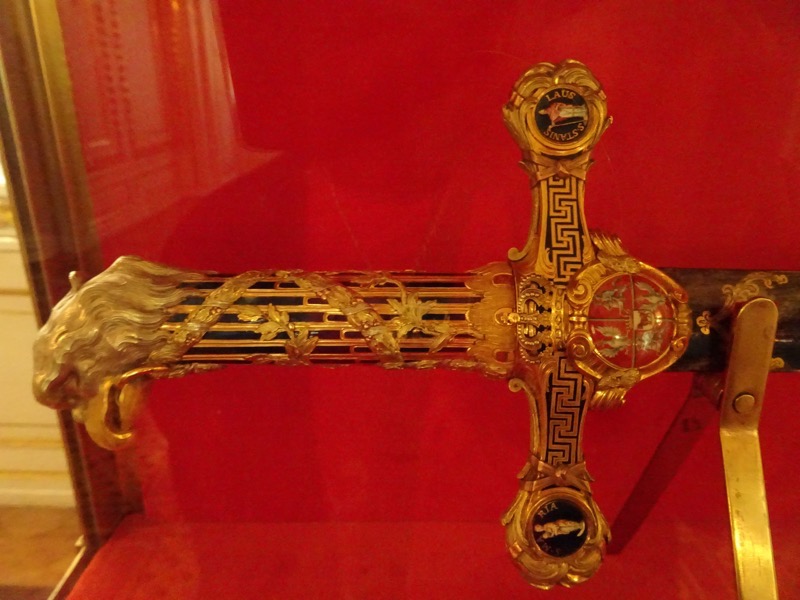 The Small Private Chapel off the Kings Audience Chamber.
The Small Private Chapel off the Kings Audience Chamber.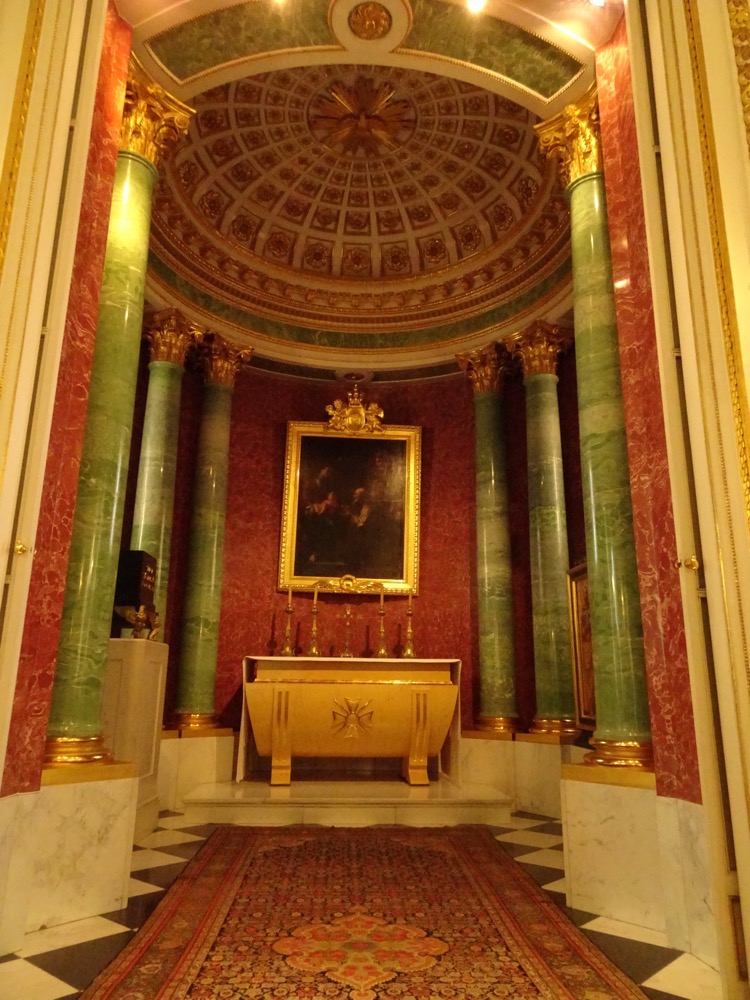
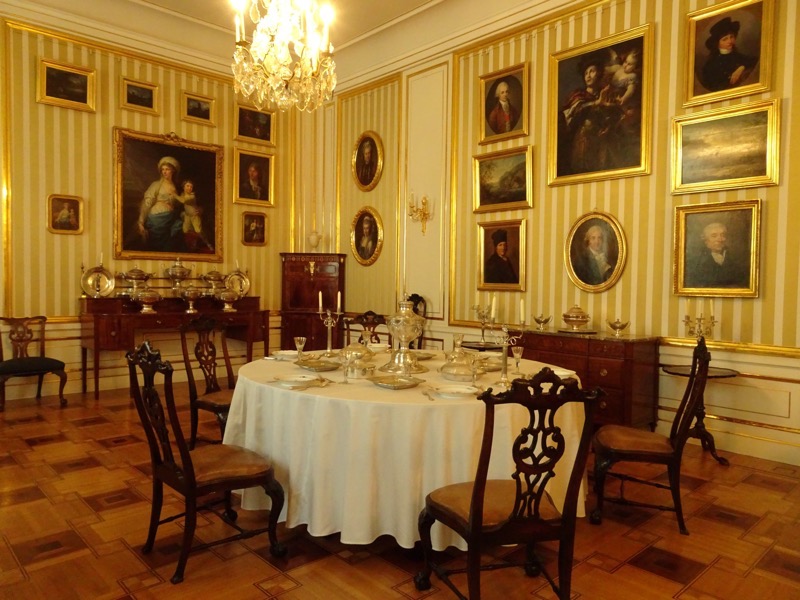 The Marble Room was designed in 1640-1642 during the reign of King Wladyslaw IV and was little used until King Stanislaw August commissioned it’s restoration to famous architect, Jakub Fontana. It served as a second antechamber to the Throne Room. Thankfully most of the painting in this room were removed before the Castle was bombed in September 1939, and saved from the great fires that followed.
The Marble Room was designed in 1640-1642 during the reign of King Wladyslaw IV and was little used until King Stanislaw August commissioned it’s restoration to famous architect, Jakub Fontana. It served as a second antechamber to the Throne Room. Thankfully most of the painting in this room were removed before the Castle was bombed in September 1939, and saved from the great fires that followed.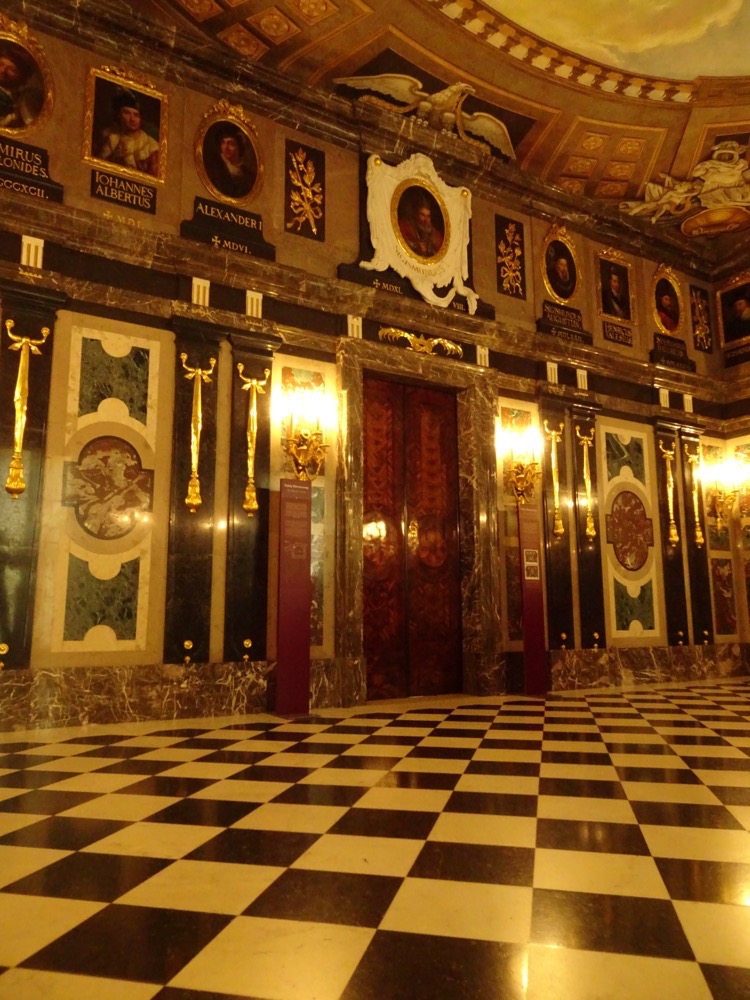
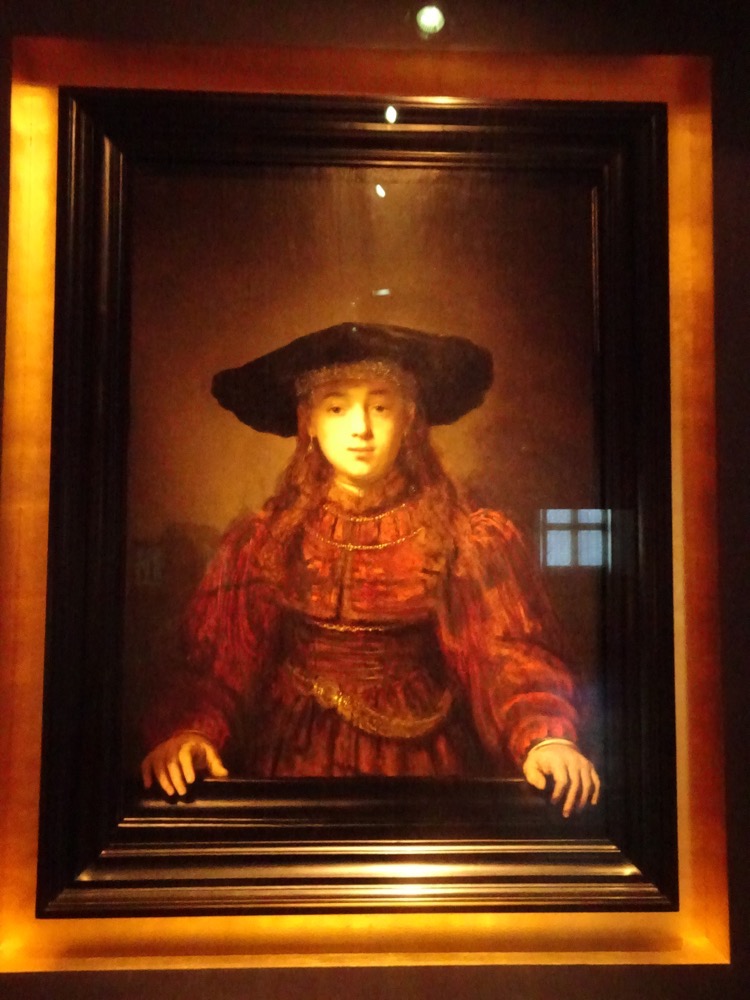 ‘Girl in a picture frame’, Rembrandt, 1641 (and detail below).
‘Girl in a picture frame’, Rembrandt, 1641 (and detail below).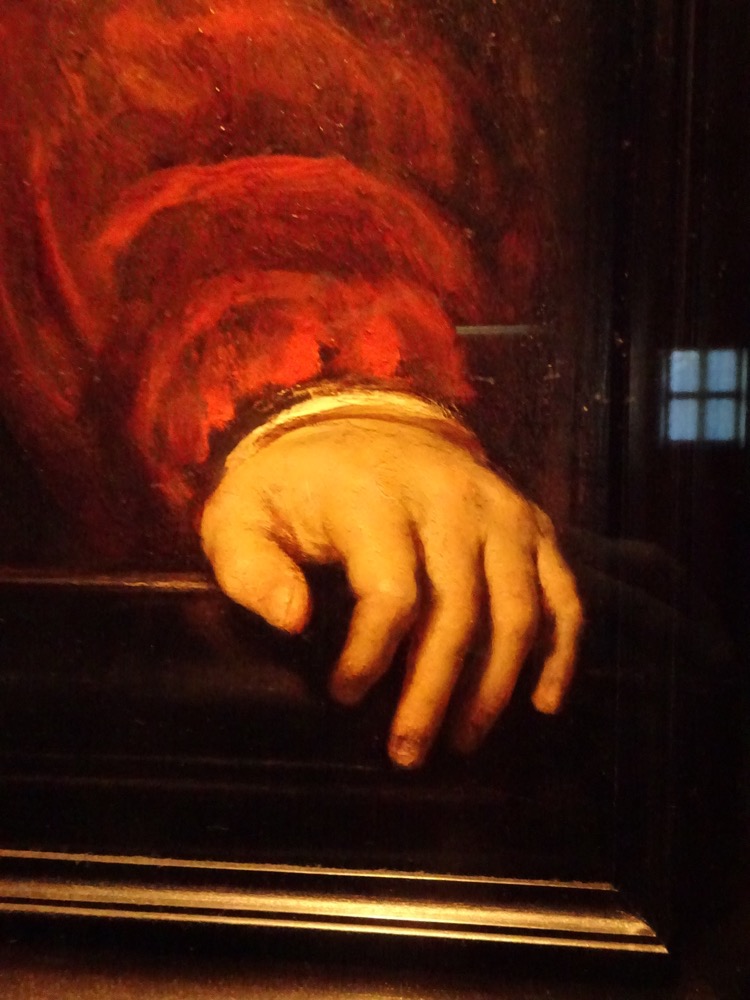
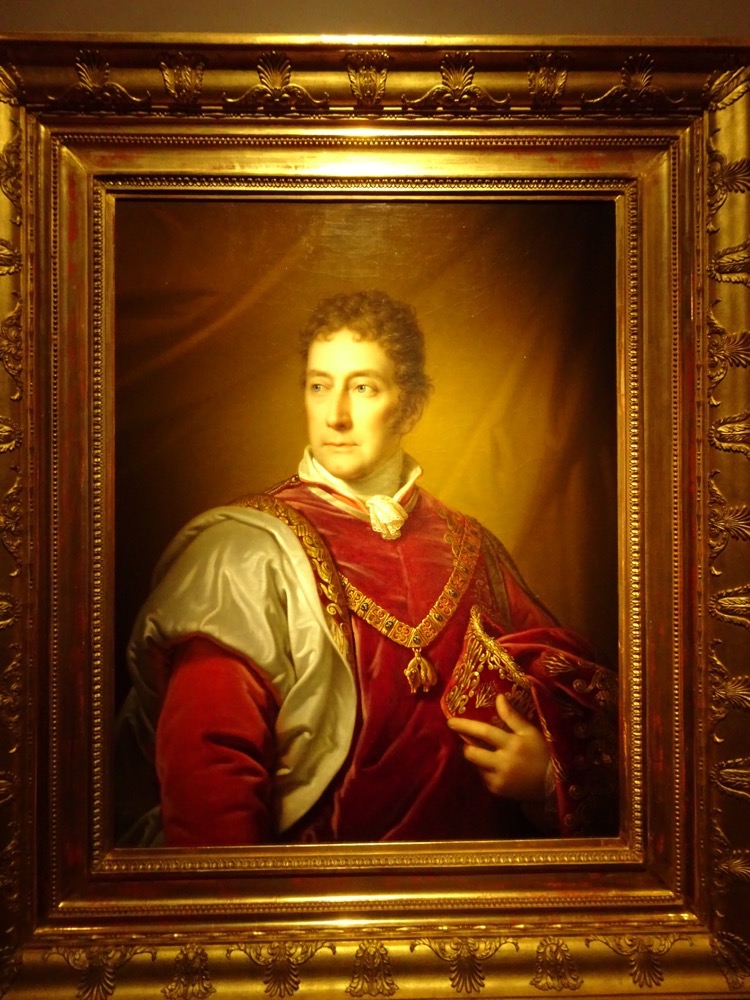 ‘Johann Baptist Lampi the Younger’, Antoni Jozef Lanckoronski, 1817 (and detail below).
‘Johann Baptist Lampi the Younger’, Antoni Jozef Lanckoronski, 1817 (and detail below).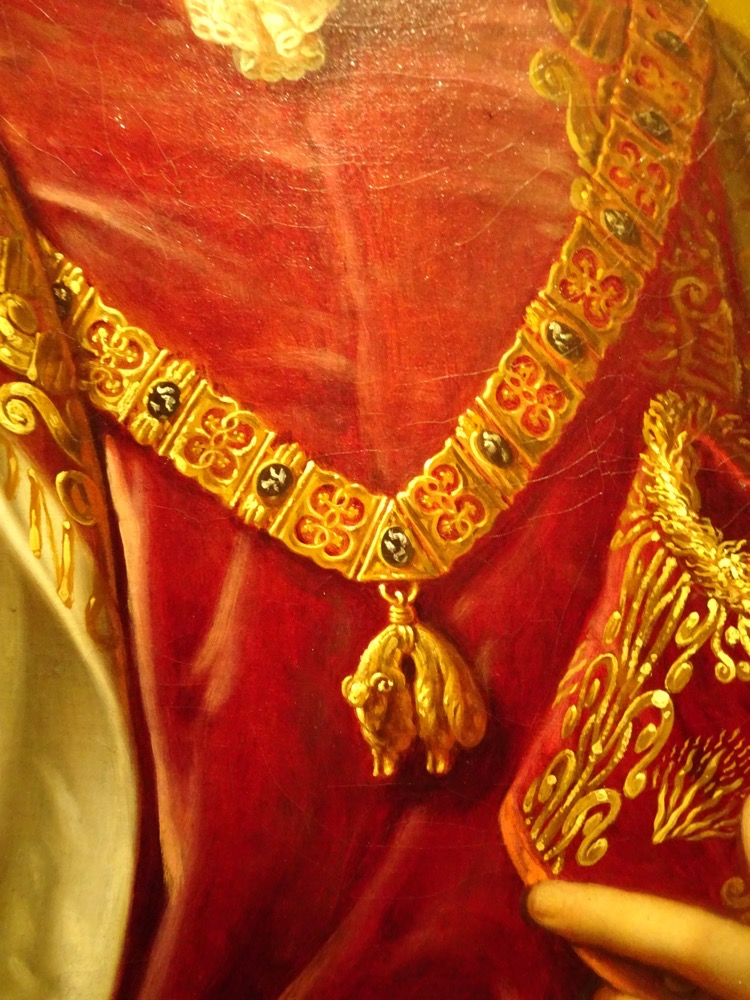
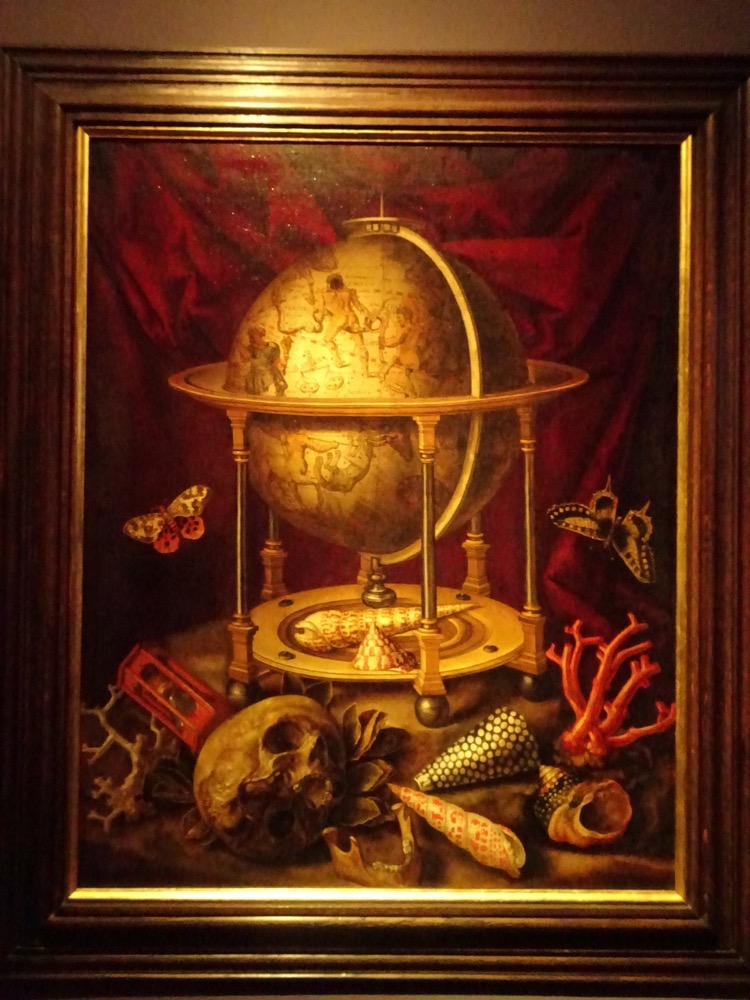 ‘Still Life with a Celestial Globe’, Carstian Luyckx, 1660s (and detail below).
‘Still Life with a Celestial Globe’, Carstian Luyckx, 1660s (and detail below).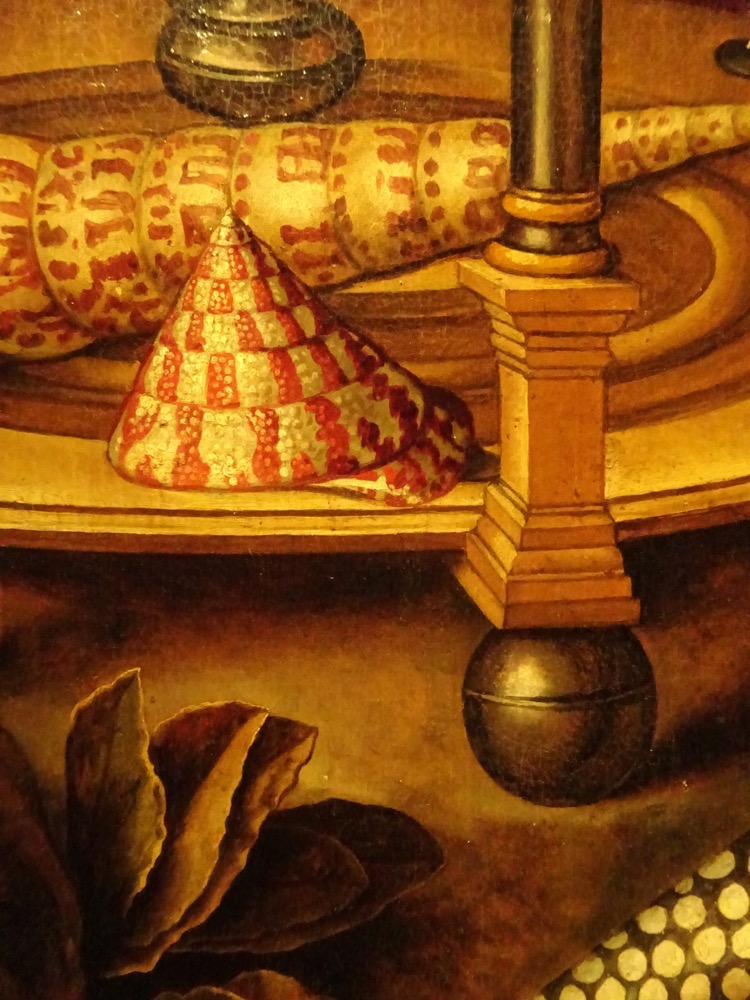
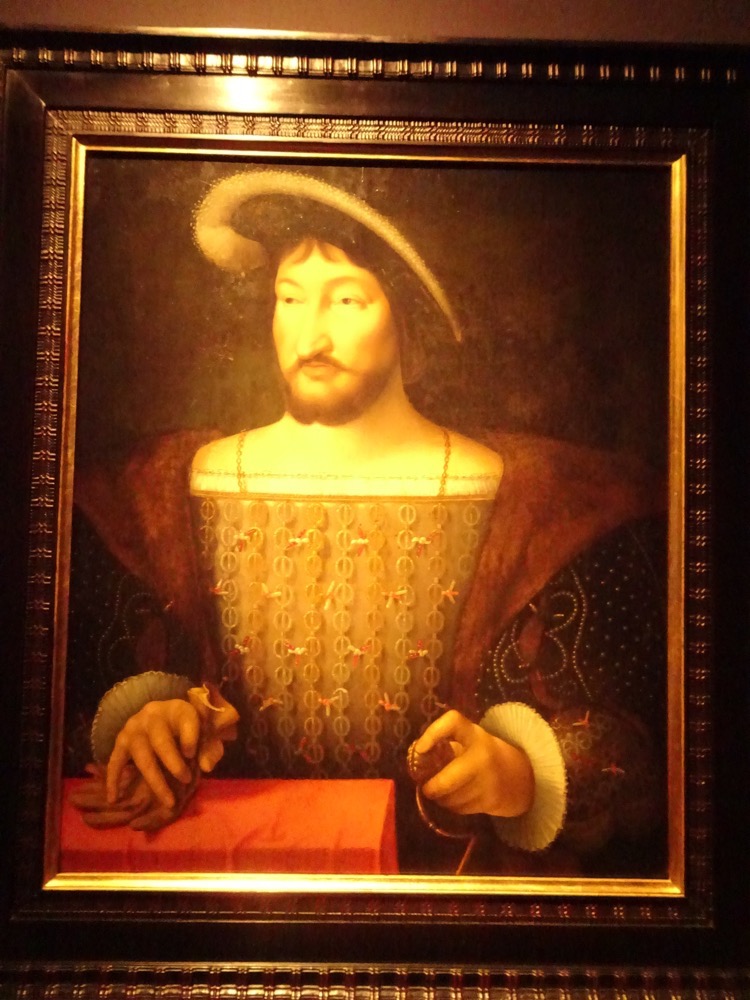 ‘Francis I, King of France since 1515’, from the workshop of Joos van Cleve, ca 1530 (and detail below).
‘Francis I, King of France since 1515’, from the workshop of Joos van Cleve, ca 1530 (and detail below).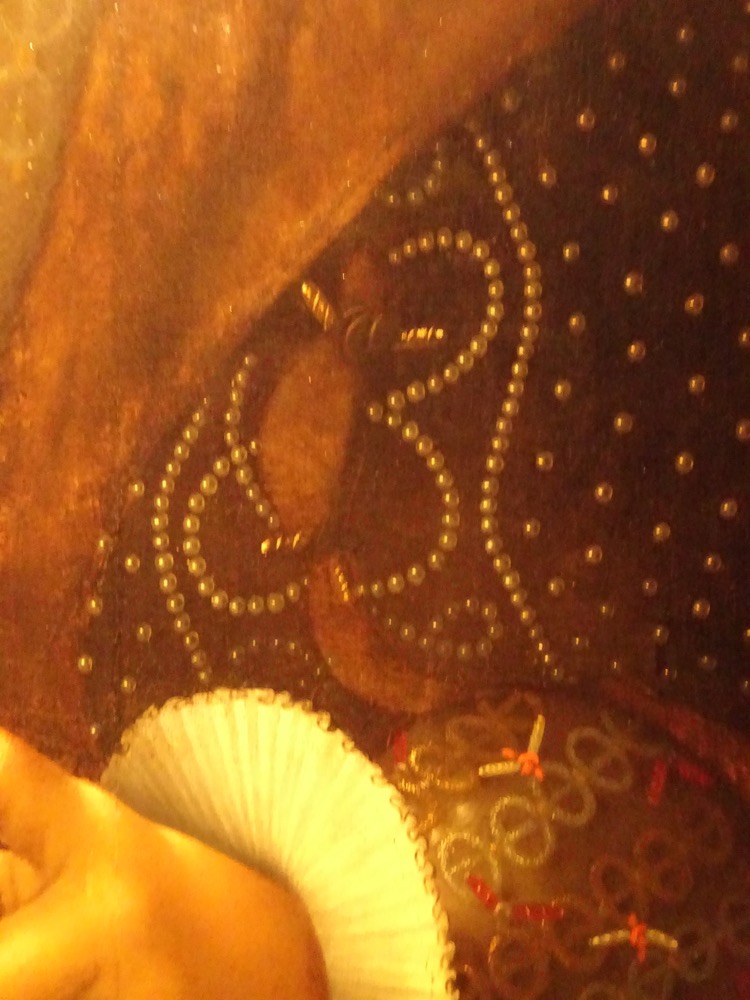 ‘Adam and Eve’, Lucas Cranach the Elder, 1520-1525.
‘Adam and Eve’, Lucas Cranach the Elder, 1520-1525.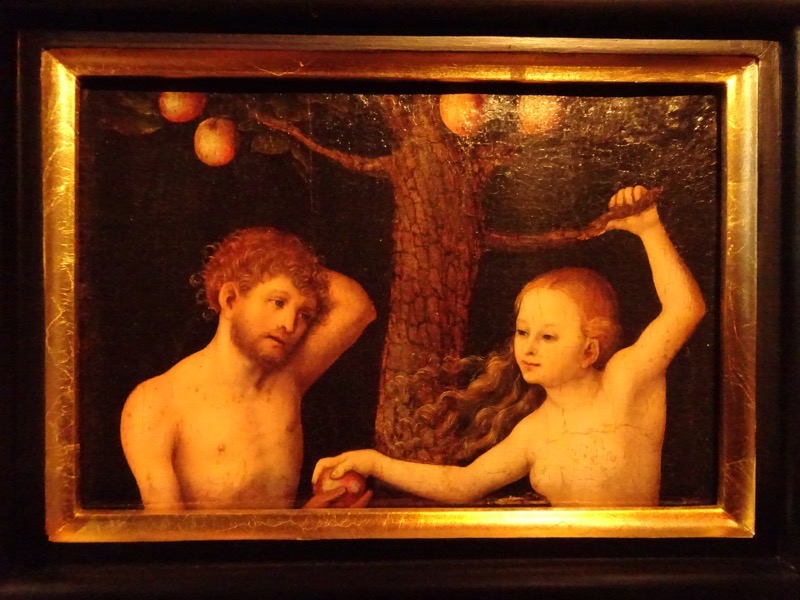
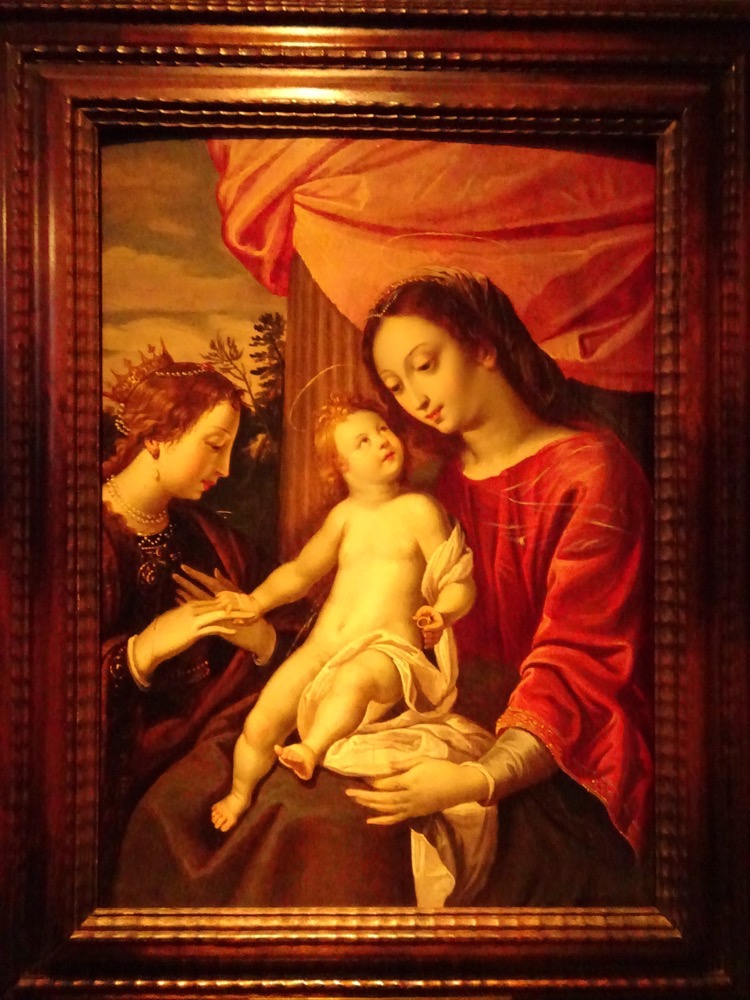 ‘Mystic Marriage of St Catherine of Alexandria’, Flemish School, c.1605. (and detail below)
‘Mystic Marriage of St Catherine of Alexandria’, Flemish School, c.1605. (and detail below)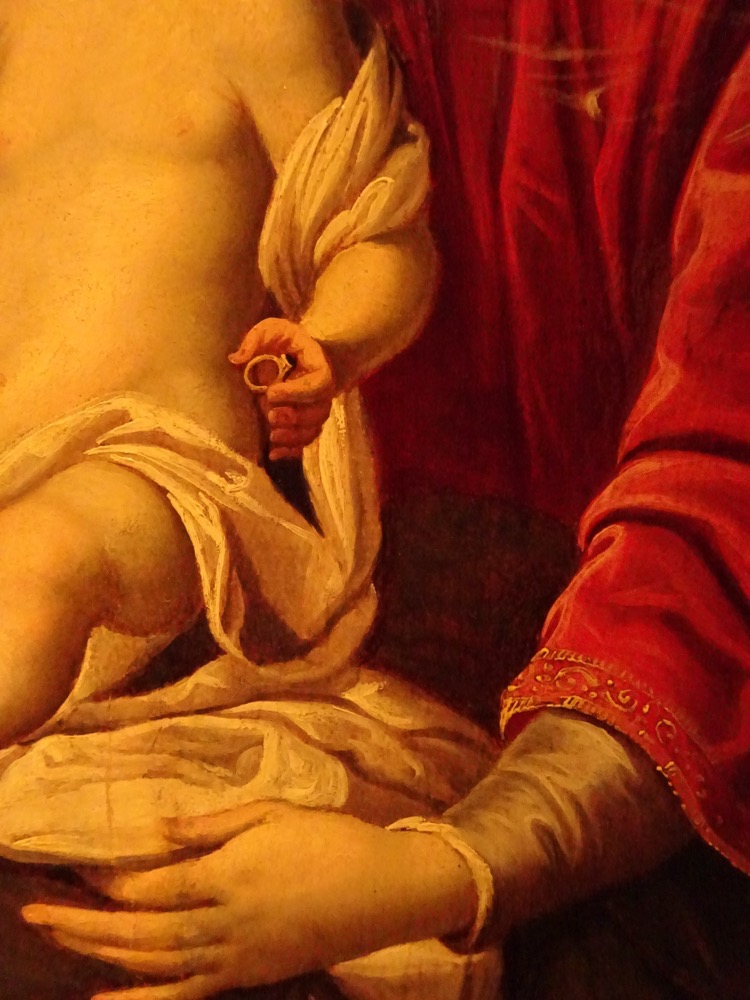
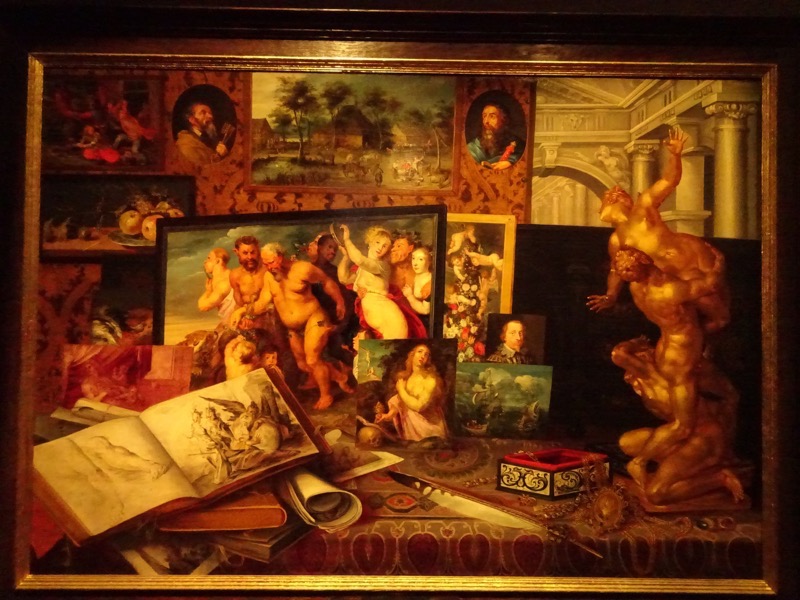 ‘Prince Wladyslaw Zygmunt Vasa’s Kunstkammer’, Antwerp School, 1626 (and detail below).
‘Prince Wladyslaw Zygmunt Vasa’s Kunstkammer’, Antwerp School, 1626 (and detail below).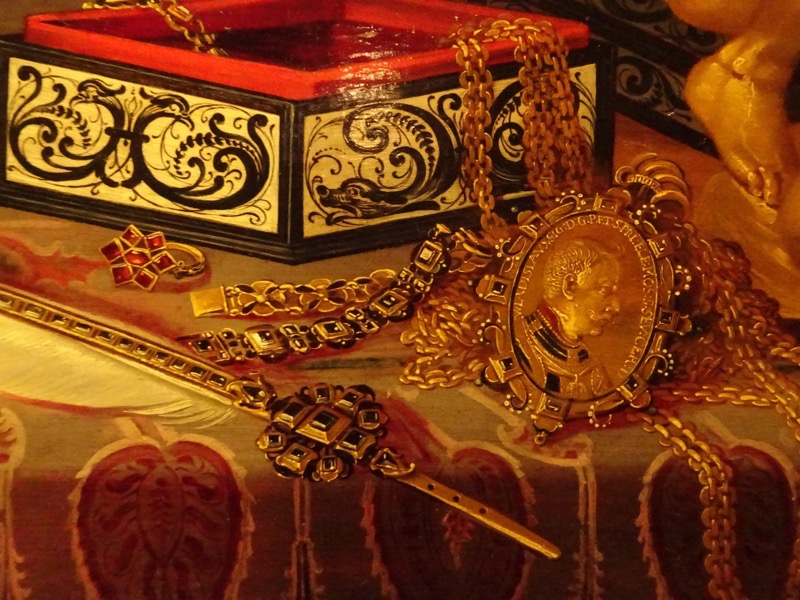 Polish Organ c. 1640.
Polish Organ c. 1640.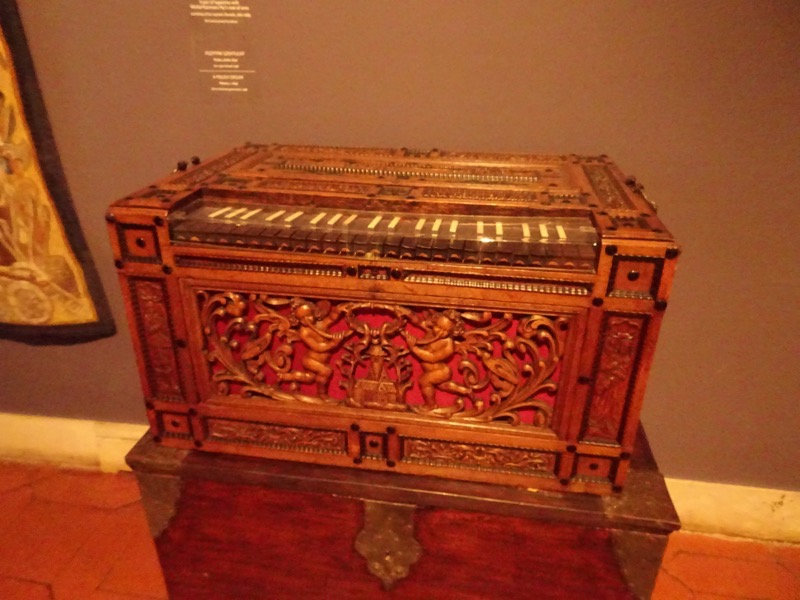
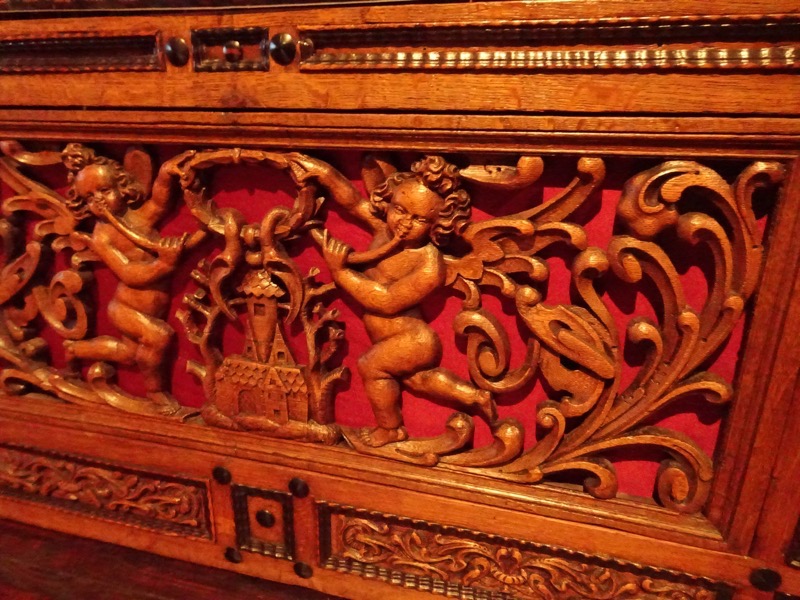
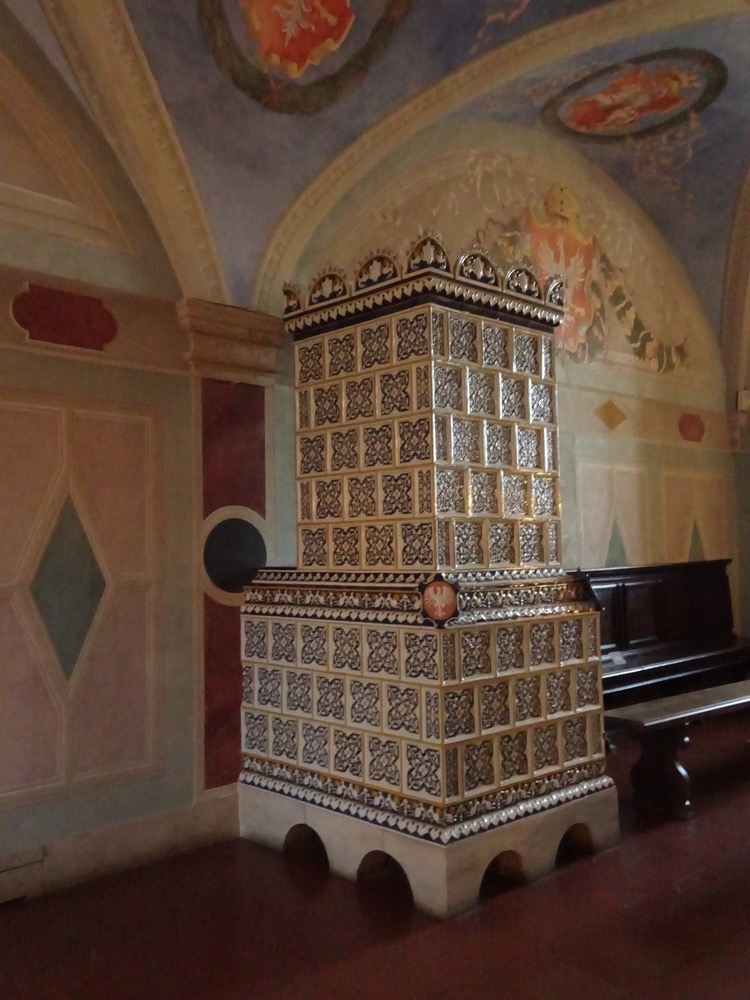 All up we had a much more positive experience at Warsaw Castle than we did at Krakow Castle – no restrictive timed ticketing, more than one person actually selling tickets, staff were helpful and interested in making sure visitors found their way around okay and even pointed out seats to us in dimly lit rooms. They allowed us to take photography AND they had exceptional books in their gift shops. Bonus.
All up we had a much more positive experience at Warsaw Castle than we did at Krakow Castle – no restrictive timed ticketing, more than one person actually selling tickets, staff were helpful and interested in making sure visitors found their way around okay and even pointed out seats to us in dimly lit rooms. They allowed us to take photography AND they had exceptional books in their gift shops. Bonus.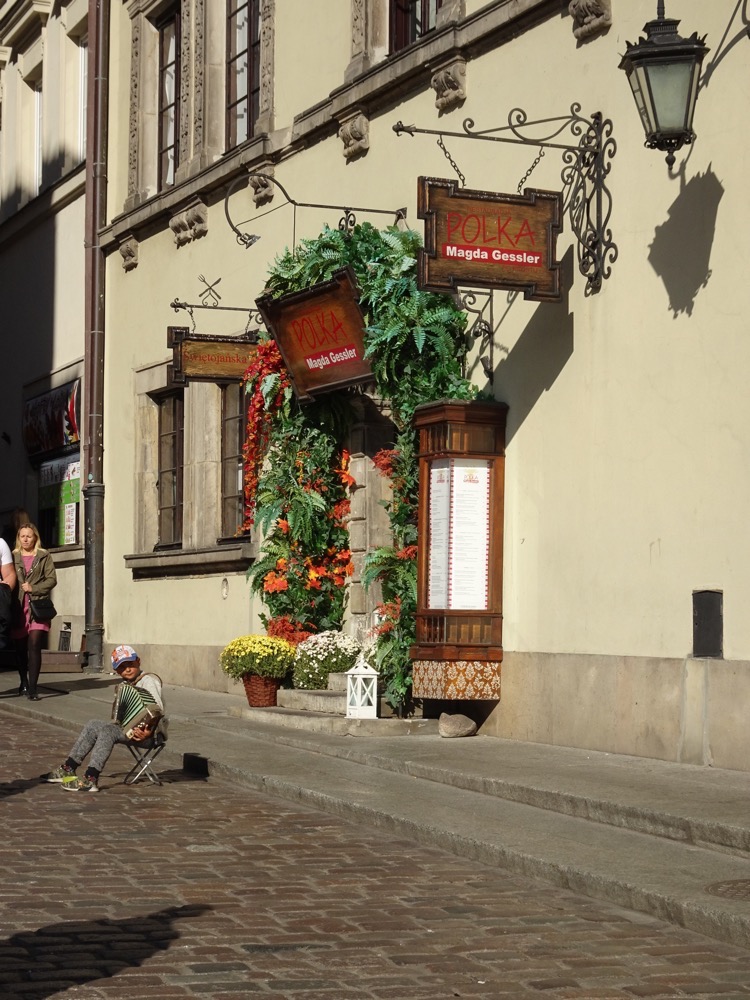
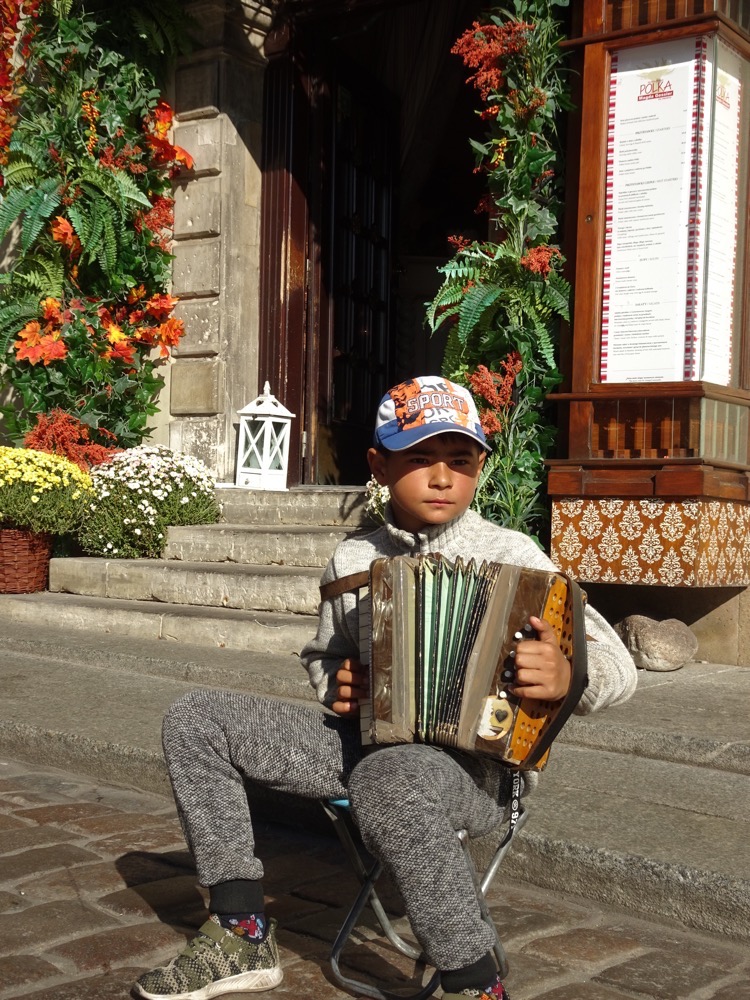 The Old Town and Castle Square is just gorgeous little area to stroll around. But alas, we had places to go and borders to cross!
The Old Town and Castle Square is just gorgeous little area to stroll around. But alas, we had places to go and borders to cross!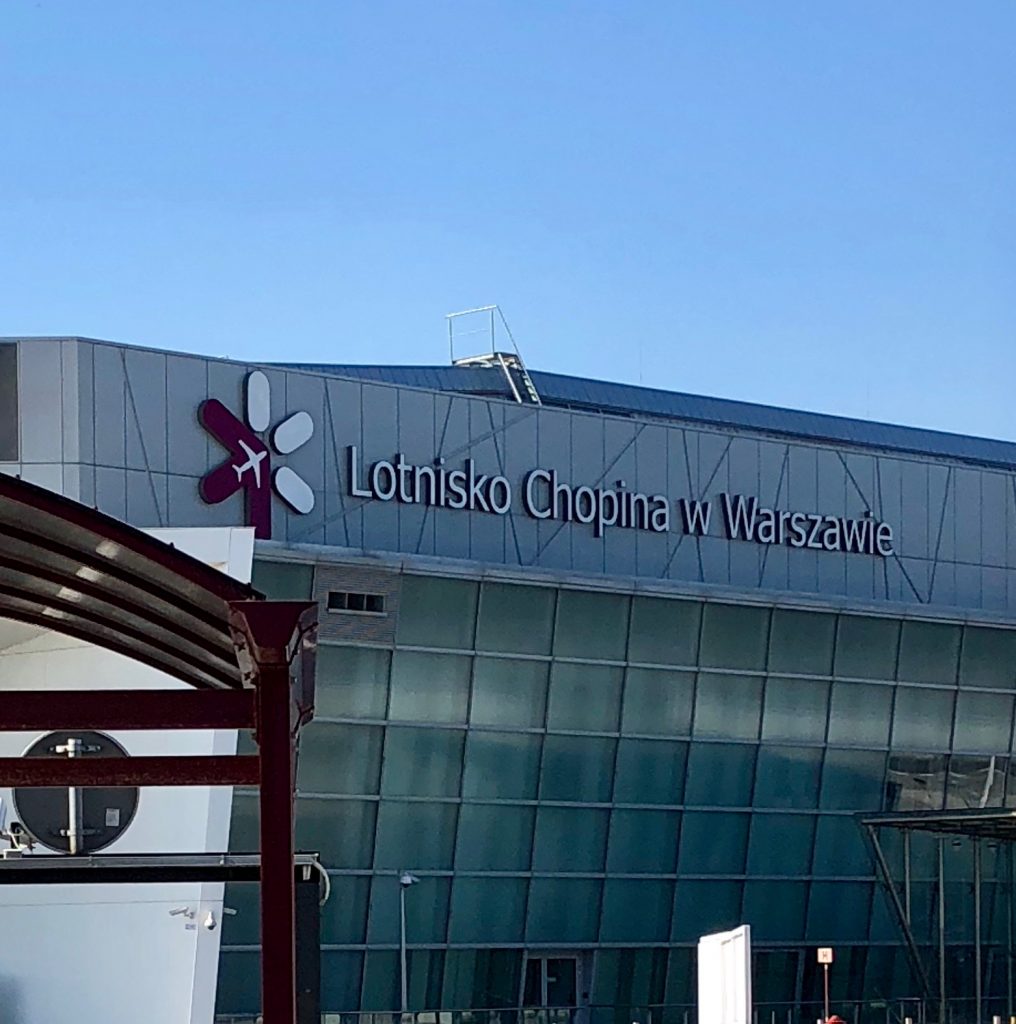 Flight was uneventful. People cheered when we landed, and some were doing that Chinese thing where you run down the aisle before the seatbelt sign was off to try and get off the plane first, only to be told they had to wait for a bus to take us off the tarmac. yale looked quite confused, he’d never seen that before. Then when they did get us all packed into a standing only space bus, someone had left their passport back on the plane so we all had to wait another 10 minutes.
Flight was uneventful. People cheered when we landed, and some were doing that Chinese thing where you run down the aisle before the seatbelt sign was off to try and get off the plane first, only to be told they had to wait for a bus to take us off the tarmac. yale looked quite confused, he’d never seen that before. Then when they did get us all packed into a standing only space bus, someone had left their passport back on the plane so we all had to wait another 10 minutes.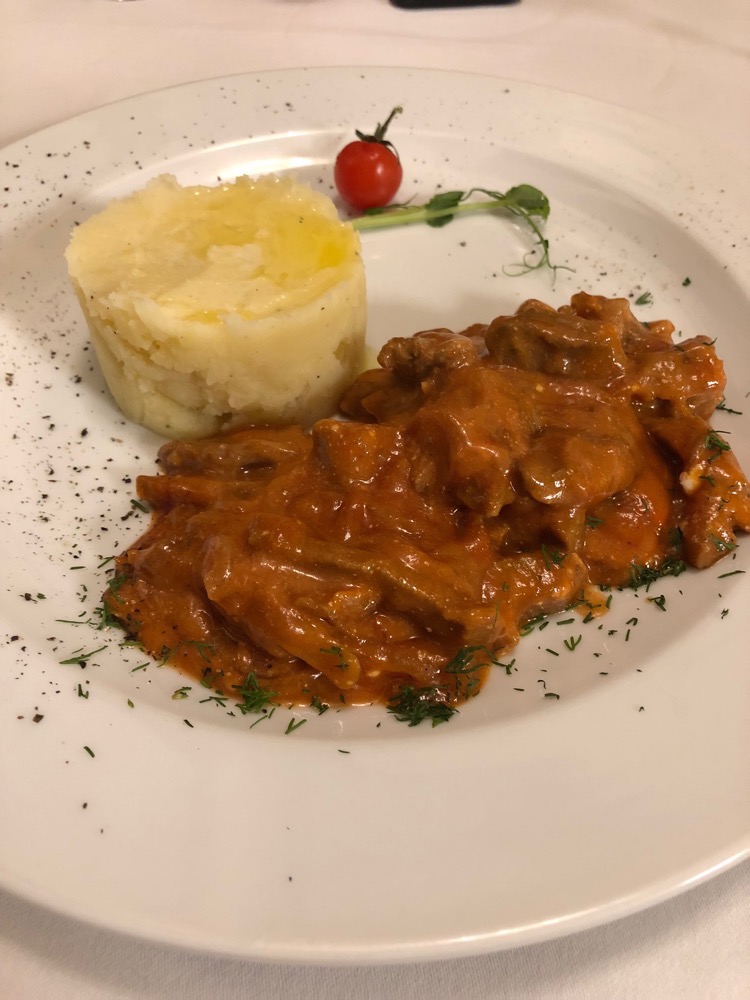
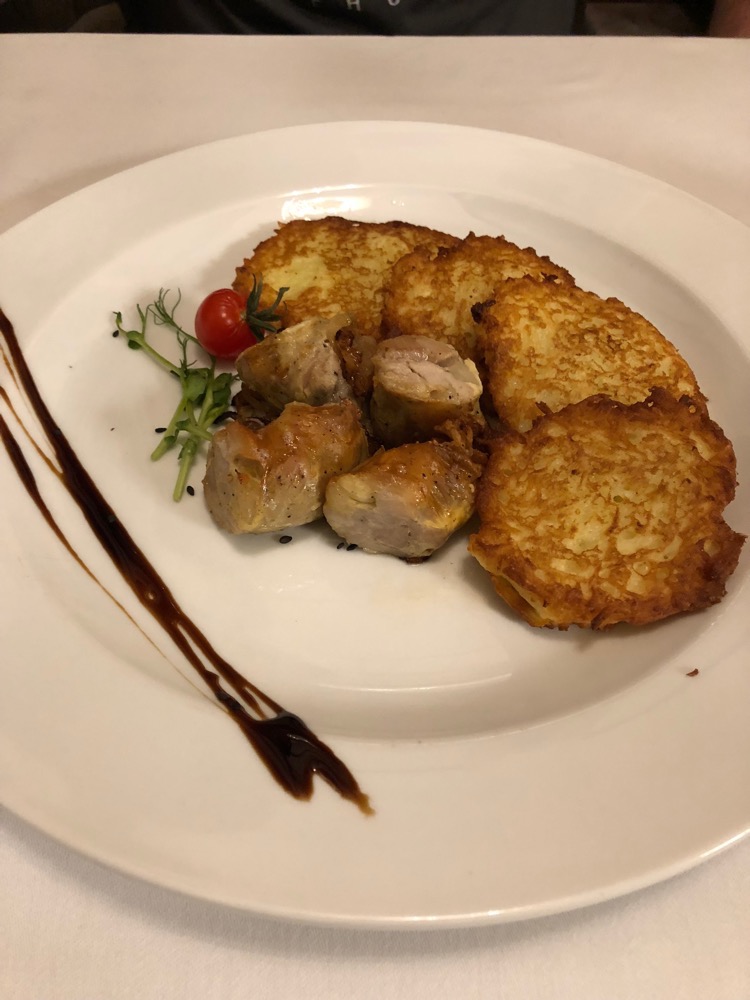
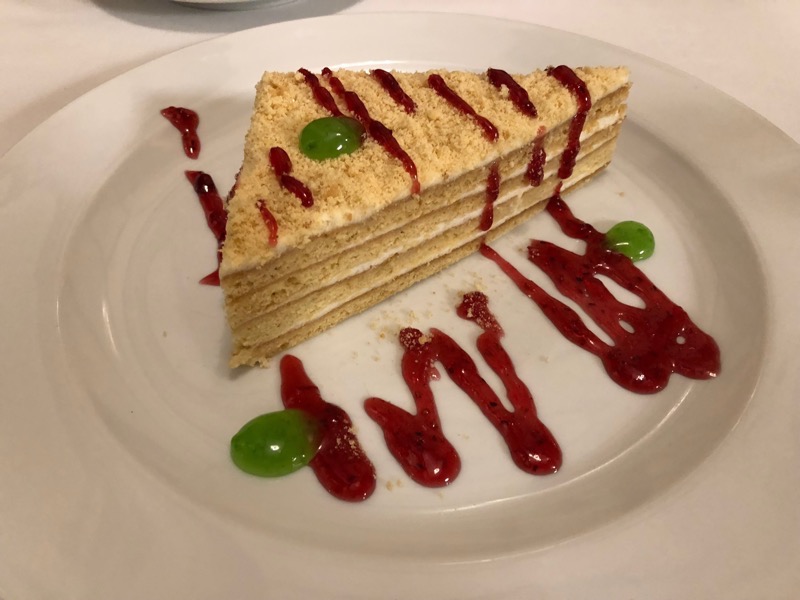
 Walking up to Wawel Castle…
Walking up to Wawel Castle… We were planning on visiting the historic district of Wawel Castle just for the morning. It is located pretty much in the centre of Kraków and was built by King Kazimierz III, also known as Casimir III the Great, in the 13th and 14th centuries. The castle is actually a large complex made up of a number of Medieval/Renaissance/ Baroque buildings around a very large Italian style courtyard making it one of the largest in Poland. Most of the Wawel Royal Castle and the Wawel Hill area are considered the most culturally/historically significant areas in the entire country. Sometimes I feel like I am travelling the world ticking off UNESCO World Heritage Sites, as this is another one of them
We were planning on visiting the historic district of Wawel Castle just for the morning. It is located pretty much in the centre of Kraków and was built by King Kazimierz III, also known as Casimir III the Great, in the 13th and 14th centuries. The castle is actually a large complex made up of a number of Medieval/Renaissance/ Baroque buildings around a very large Italian style courtyard making it one of the largest in Poland. Most of the Wawel Royal Castle and the Wawel Hill area are considered the most culturally/historically significant areas in the entire country. Sometimes I feel like I am travelling the world ticking off UNESCO World Heritage Sites, as this is another one of them
 Buying tickets proved quite the experience. There was a (thankfully, short) queue of about 20 people waiting to buy tickets to enter the caste. We couldn’t figure out why the line was moving so slowly. Turns out you don’t just buy a ticket to the Castle and wander on it following a structured flow through the museum, but rather you choose which sections of the castle you wish to see and then are told when you can go see them.
Buying tickets proved quite the experience. There was a (thankfully, short) queue of about 20 people waiting to buy tickets to enter the caste. We couldn’t figure out why the line was moving so slowly. Turns out you don’t just buy a ticket to the Castle and wander on it following a structured flow through the museum, but rather you choose which sections of the castle you wish to see and then are told when you can go see them. So we arrive around 10:00, go wait in line for a rather complex ticketing system and find ourselves unable to enter anywhere for another 20 minutes. :/ I understand the concept is probably about crowd control during the busiest of summer periods but none of this information is easily available online (it is once you know to look for it), and you can’t buy tickets in advance, and of course, there is only one person serving all the somewhat confused visitors. We were told if we wanted to visit the Royal Apartments we wouldn’t get an entry time until 14:00, and once inside we saw plenty of people loitering around the courtyard waiting for their appointed times to go in.
So we arrive around 10:00, go wait in line for a rather complex ticketing system and find ourselves unable to enter anywhere for another 20 minutes. :/ I understand the concept is probably about crowd control during the busiest of summer periods but none of this information is easily available online (it is once you know to look for it), and you can’t buy tickets in advance, and of course, there is only one person serving all the somewhat confused visitors. We were told if we wanted to visit the Royal Apartments we wouldn’t get an entry time until 14:00, and once inside we saw plenty of people loitering around the courtyard waiting for their appointed times to go in. Forecourt:
Forecourt:

 Main courtyard.
Main courtyard. And that, my friends, is pretty much the limit of the photos I was able to take at Wawel Castle. The castle contains an important collection of Renaissance art, some Ghirlandaio, Cranach, at least two Rubens, a Tintoretto, Tiepolo, and a few Dossi among others; lots of famous pieces, but NO PHOTOGRAPHY was allowed:
And that, my friends, is pretty much the limit of the photos I was able to take at Wawel Castle. The castle contains an important collection of Renaissance art, some Ghirlandaio, Cranach, at least two Rubens, a Tintoretto, Tiepolo, and a few Dossi among others; lots of famous pieces, but NO PHOTOGRAPHY was allowed:
 On more than one occasion we saw small groups entering rooms that we weren’t allowed to enter because they were on an organised tour. Museums should not be like this. It is a cluster. My advice for anyone planning on attending Wawel Castle is to set aside the entire day for it so you can visit on their scheduled time slots. I would probably also use a private tour operator to access the ‘non-public’ spaces… and I’d probably anticipate a disappointing visit anyway due to photography not being allowed, and the lack of decent books to make up for the whole photography is not allowed thing. :/
On more than one occasion we saw small groups entering rooms that we weren’t allowed to enter because they were on an organised tour. Museums should not be like this. It is a cluster. My advice for anyone planning on attending Wawel Castle is to set aside the entire day for it so you can visit on their scheduled time slots. I would probably also use a private tour operator to access the ‘non-public’ spaces… and I’d probably anticipate a disappointing visit anyway due to photography not being allowed, and the lack of decent books to make up for the whole photography is not allowed thing. :/ 
 Throughout the world, Auschwitz has become a symbol of terror, genocide and the Holocaust. The German forces occupying Poland during the Second World War established a concentration camp on the outskirts of the town of Oświęcim in 1940. The Germans called the town, ‘Auschwitz’ and that is the name by which the camp was known. Over the next years it was expanded into three main camps: Auschwitz I, Auschwitz II- Birkenau and Auschwitz III- Planowitz with more than 40 subcamps in the area. The first people to be brought to Auschwitz as prisoners and murdered here were Poles. They were soon followed by Soviet prisoners of war, Gypsies, and deportees from other nationalities. Beginning in 1942, however, Auschwitz became the setting of the most massive murder campaign in history, when the Nazis put into operation their plan to destroy the entire Jewish population of Europe. The great majority of Jews who were deported to Auschwitz – men, women and children – were sent immediately upon arrival to deal in the gas chambers of Birkenau.
Throughout the world, Auschwitz has become a symbol of terror, genocide and the Holocaust. The German forces occupying Poland during the Second World War established a concentration camp on the outskirts of the town of Oświęcim in 1940. The Germans called the town, ‘Auschwitz’ and that is the name by which the camp was known. Over the next years it was expanded into three main camps: Auschwitz I, Auschwitz II- Birkenau and Auschwitz III- Planowitz with more than 40 subcamps in the area. The first people to be brought to Auschwitz as prisoners and murdered here were Poles. They were soon followed by Soviet prisoners of war, Gypsies, and deportees from other nationalities. Beginning in 1942, however, Auschwitz became the setting of the most massive murder campaign in history, when the Nazis put into operation their plan to destroy the entire Jewish population of Europe. The great majority of Jews who were deported to Auschwitz – men, women and children – were sent immediately upon arrival to deal in the gas chambers of Birkenau.

 After the selection process on the railway platform, those who were going to be murdered in the gas chambers were assured that they were going to take a shower. They were divided from their belongings and made to strip naked. Fake showerheads were fixed to the ceiling of the gas chambers.
After the selection process on the railway platform, those who were going to be murdered in the gas chambers were assured that they were going to take a shower. They were divided from their belongings and made to strip naked. Fake showerheads were fixed to the ceiling of the gas chambers.
 Piles of spectacles removed from deportees who were murdered in the gas chambers.
Piles of spectacles removed from deportees who were murdered in the gas chambers.

 People arriving at the camps had many personal belongings with them that were taken and sorted, including household goods and kitchen items:
People arriving at the camps had many personal belongings with them that were taken and sorted, including household goods and kitchen items: Piles of suitcases each one once carrying the entire worldly goods of a deportee:
Piles of suitcases each one once carrying the entire worldly goods of a deportee:
 Mountains of shoes taken from the dead or about to be killed:
Mountains of shoes taken from the dead or about to be killed: The shoes of children who were murdered at the camps:
The shoes of children who were murdered at the camps: Personal brushes and shaving brushes:
Personal brushes and shaving brushes:

 Each of these people had a family, an occupation, a home. Here, they were dehumanized and turned into a number only.
Each of these people had a family, an occupation, a home. Here, they were dehumanized and turned into a number only. 







 Map of the Block 11 Punishment Unit. This was effectively the prison within the prison. If prisoner committed offences while in the camp, they could expect any sort of retribution – immediate execution, solitary confinement for a period of time, confinement to starvation with the intention of murdering the prisoner, or face a firing squad at an unknown future time. Note Section 22 in the left hand building – it has what is know as ‘standing cells’ where prisoners entered through a two foot door in a wall and were put in a cell approximatedly two foot square and six foot tall. Prisoners would be locked in this standing cell in complete darkness for indeterminate periods of time.
Map of the Block 11 Punishment Unit. This was effectively the prison within the prison. If prisoner committed offences while in the camp, they could expect any sort of retribution – immediate execution, solitary confinement for a period of time, confinement to starvation with the intention of murdering the prisoner, or face a firing squad at an unknown future time. Note Section 22 in the left hand building – it has what is know as ‘standing cells’ where prisoners entered through a two foot door in a wall and were put in a cell approximatedly two foot square and six foot tall. Prisoners would be locked in this standing cell in complete darkness for indeterminate periods of time. Prisoners were led to this wall for execution by firing squad.
Prisoners were led to this wall for execution by firing squad.
 The barracks beside the execution courtyard were blocked from seeing what was happening during the executions. Prisoners avoided having anything to do with Block 11 and tried hard to stay away from it when going about their duties.
The barracks beside the execution courtyard were blocked from seeing what was happening during the executions. Prisoners avoided having anything to do with Block 11 and tried hard to stay away from it when going about their duties. A guardhouse used by SS officials for shelter during the harsh roll-calls that prisoners were forced to endure:
A guardhouse used by SS officials for shelter during the harsh roll-calls that prisoners were forced to endure:
 In the centre of Auschwitz KL, the SS officer in charge would hold a roll call in the courtyard above. The roll call contained reports on the number of prisoners present. If there seemed to be anyone missing, prisoners had to continue to stand at attention until the SS were satisfied – regardless of the weather, sometimes for up to twelve hours or more. To intimidate the prisoners, the SS would also conduct public hangings in full view of the roll-call area. The largest such execution was carried out on 19 July 1943 when twelve Poles suspected of helping three other prisoners escape, and of maintaining contacts with the outside world, were hanged together on a purpose-built gallows.
In the centre of Auschwitz KL, the SS officer in charge would hold a roll call in the courtyard above. The roll call contained reports on the number of prisoners present. If there seemed to be anyone missing, prisoners had to continue to stand at attention until the SS were satisfied – regardless of the weather, sometimes for up to twelve hours or more. To intimidate the prisoners, the SS would also conduct public hangings in full view of the roll-call area. The largest such execution was carried out on 19 July 1943 when twelve Poles suspected of helping three other prisoners escape, and of maintaining contacts with the outside world, were hanged together on a purpose-built gallows.



 Later, after the war, and after the trials for war crimes, a special gallows was built here and Rudolph Höss was hanged on 16 April 1947, after a trial before the Polish Supreme National Tribunal. Fittingly he was executed at Auschwitz, in between of his former home and the gas chambers. It is not possible to believe that the Höss family didn’t hear, smell and see the airborne ash remains of the prisoners emerging from the chimneys, who met their fate in the gas chambers.
Later, after the war, and after the trials for war crimes, a special gallows was built here and Rudolph Höss was hanged on 16 April 1947, after a trial before the Polish Supreme National Tribunal. Fittingly he was executed at Auschwitz, in between of his former home and the gas chambers. It is not possible to believe that the Höss family didn’t hear, smell and see the airborne ash remains of the prisoners emerging from the chimneys, who met their fate in the gas chambers.

 The small gas chamber at KL (Konzentrationslager) Auschwitz:
The small gas chamber at KL (Konzentrationslager) Auschwitz:
 The creamation works directly beside the gas chamber.
The creamation works directly beside the gas chamber.
 All of which is only divided from the worker/prisoner barracks by two rows of patrolled barbed wire. The prisoners must have also know the fates of those who entered the chambers.
All of which is only divided from the worker/prisoner barracks by two rows of patrolled barbed wire. The prisoners must have also know the fates of those who entered the chambers.
 It was at this point we had a break in our tour and I took the opportunity to talk to our guide, Marta, who I had noticed handled the appalling and traumatizing material that she was imparting in a professional, yet very sensitive manner. She was managing to share some truly harrowing content with us in a matter of fact manner, and I wanted to commend her on what I thought must be a difficult and delicate balance between educating visitors and yet now allowing the recitation of bland facts to overwhelm the truly unbelievably vile events that occurred here. I was also curious to know how long she had been guiding visitors through Auschwitz, how many times each day would she go through the complex and how did she manage to not allow the horrific nature of the events that she was constantly discussing not to affect her personally on a psychological level? It turns out that Marta is not actually one of the main tour guides. She is a historian and curator at the museum and she only takes tours on rare occasions.
It was at this point we had a break in our tour and I took the opportunity to talk to our guide, Marta, who I had noticed handled the appalling and traumatizing material that she was imparting in a professional, yet very sensitive manner. She was managing to share some truly harrowing content with us in a matter of fact manner, and I wanted to commend her on what I thought must be a difficult and delicate balance between educating visitors and yet now allowing the recitation of bland facts to overwhelm the truly unbelievably vile events that occurred here. I was also curious to know how long she had been guiding visitors through Auschwitz, how many times each day would she go through the complex and how did she manage to not allow the horrific nature of the events that she was constantly discussing not to affect her personally on a psychological level? It turns out that Marta is not actually one of the main tour guides. She is a historian and curator at the museum and she only takes tours on rare occasions.



 It was during this part of the tour that the sheer scale of the camp hits visitors hard. One hundred and eighty hectares of organised misery, degradation and for most, eventual death.
It was during this part of the tour that the sheer scale of the camp hits visitors hard. One hundred and eighty hectares of organised misery, degradation and for most, eventual death. A replica of the railway cars which were used to transport most of the deportees to Auschwitz-Birkenau. Eighty to one hundred people were crammed into these cars for journeys lasting days with no food, no water and no toileting facilities. Tens of thousands of people arrived at the camp in cars just like this one.
A replica of the railway cars which were used to transport most of the deportees to Auschwitz-Birkenau. Eighty to one hundred people were crammed into these cars for journeys lasting days with no food, no water and no toileting facilities. Tens of thousands of people arrived at the camp in cars just like this one. The further into the camp we walked, the size of the camp became more and more apparent.
The further into the camp we walked, the size of the camp became more and more apparent.

 At the ramps at the end of the train tracks where the selection processes were carried out. Behind us is the massive L shaped gas chamber and industrial creamatoria complex.
At the ramps at the end of the train tracks where the selection processes were carried out. Behind us is the massive L shaped gas chamber and industrial creamatoria complex. The underground undressing chamber. Destroyed by departing Nazis as the end of the war became a certainty.
The underground undressing chamber. Destroyed by departing Nazis as the end of the war became a certainty. The collapsed roof of the gas chambers:
The collapsed roof of the gas chambers:
 The ruins of the cremation ovens:
The ruins of the cremation ovens: Much of the terrible work carried out in the mass extermination of the Jewish population was Sonderkommandos. The Sonderkommandos were a work detail made up of prisoners from the death camp. They were not civilian workers but were prisoners – usually Jewish – who were forced to work and aid in the management of victims, the looting of the bodies, and the disposal of the corpses in the gas chambers during the Holocaust. They were forced to complete this gruesome work or be killed themselves.
Much of the terrible work carried out in the mass extermination of the Jewish population was Sonderkommandos. The Sonderkommandos were a work detail made up of prisoners from the death camp. They were not civilian workers but were prisoners – usually Jewish – who were forced to work and aid in the management of victims, the looting of the bodies, and the disposal of the corpses in the gas chambers during the Holocaust. They were forced to complete this gruesome work or be killed themselves. 




 Inside Barracks 16A. ‘Beds’, such as they were, were three stories high and housed four to five people in each space. Necessary for warmth in winter but swelteringly uncomfortable and unsanitary in summer.
Inside Barracks 16A. ‘Beds’, such as they were, were three stories high and housed four to five people in each space. Necessary for warmth in winter but swelteringly uncomfortable and unsanitary in summer. There were no washing facilities in the buildings. Any bathing had to occur outside.
There were no washing facilities in the buildings. Any bathing had to occur outside.

 There is much more that could be said about Auschwitz-Birkenau, and there are incalculable books on the topic that adequately demonstrate that. But there is little that captures the feeling of being here and physically taking in this history in person.
There is much more that could be said about Auschwitz-Birkenau, and there are incalculable books on the topic that adequately demonstrate that. But there is little that captures the feeling of being here and physically taking in this history in person.
 As I was saying to Marta, I don’t remember a time in my life where I learned about the atrocities committed by the Nazis during WWI. I don’t remember gleaning this knowledge for the first time and being shocked and appalled by the inhumanity of it. I grew up seemingly always aware of Hitler, of Nazism, of the concentration camps almost by osmosis. The knowledge I always had merely grown in depth and detail as I got older… but having said this, I feel much like I didn’t really understand the extent of the horrors committed here until today. The scale of the brutality is unimaginable until you are faced with it.
As I was saying to Marta, I don’t remember a time in my life where I learned about the atrocities committed by the Nazis during WWI. I don’t remember gleaning this knowledge for the first time and being shocked and appalled by the inhumanity of it. I grew up seemingly always aware of Hitler, of Nazism, of the concentration camps almost by osmosis. The knowledge I always had merely grown in depth and detail as I got older… but having said this, I feel much like I didn’t really understand the extent of the horrors committed here until today. The scale of the brutality is unimaginable until you are faced with it. “The last thing to die is hope…”
“The last thing to die is hope…”
 Weird and wonderful decor – one couple found themselves seated at a table that was actually an old treadle sewing machine.
Weird and wonderful decor – one couple found themselves seated at a table that was actually an old treadle sewing machine. Jewish Caviar – chopped chicken livers with eggs in truffle aroma, served with rye bread and whipped butter.
Jewish Caviar – chopped chicken livers with eggs in truffle aroma, served with rye bread and whipped butter. Beef and thyme pierogi, half and half (friend and boiled).
Beef and thyme pierogi, half and half (friend and boiled). Fillet of trout with vegetables in orange butter sauce (zucchini, leek and carrot).
Fillet of trout with vegetables in orange butter sauce (zucchini, leek and carrot). Jerusalem mix – chicken breast, liver, hearts in oriental spices and onion. Delicious!
Jerusalem mix – chicken breast, liver, hearts in oriental spices and onion. Delicious! We were the last to leave the restaurant after a couple more ciders!
We were the last to leave the restaurant after a couple more ciders! Dessert for yale: Pecan pie with vanilla ice cream:
Dessert for yale: Pecan pie with vanilla ice cream: And for me – steaming mead.
And for me – steaming mead. Long day. Need good sleep. Thankfully my, “can I speak to the manager” chat with the night conceirge guy has yielded a different room in the hotel with a better bed. Fingers crossed!
Long day. Need good sleep. Thankfully my, “can I speak to the manager” chat with the night conceirge guy has yielded a different room in the hotel with a better bed. Fingers crossed!